




























COMMODORE Simon Currin
VICE COMMODORES
Phil Heaton
Fiona Jones
REAR COMMODORES Zdenka Griswold
Reg Barker
REGIONAL REAR COMMODORES
GREAT BRITAIN Carol Dutton
IRELAND Alex Blackwell
NW EUROPE Hans Hansell
NE USA & ATLANTIC CANADA Janet Garnier & Henry DiPietro
SE USA Doug Selden
W COAST NORTH AMERICA Liza Copeland
CALIFORNIA, MEXICO & HAWAII Jonathan Ganz
NE AUSTRALIA John Hembrow
SE AUSTRALIA Scot Wheelhouse
NEW ZEALAND & SW PACIFIC Viki Moore
SOUTH AFRICA John Franklin
ROVING REAR COMMODORES
Steve Brown, Guy Chester, Thierry Courvoisier, Bill Heaton & Grace Arnison, Lars & Susanne
Hellman, Jurriaan Kloek & Camila De Conto, Stuart & Anne Letton, Pam MacBrayne & Denis Moonan, Simon Phillips, Sarah & Phil Tadd, Rhys Walters, Sue & Andy Warman
PAST COMMODORES
1954-1960 Humphrey Barton
1960-1968 Tim Heywood
1968-1975 Brian Stewart
1975-1982 Peter Carter-Ruck
1982-1988 John Foot
1988-1994 Mary Barton
1994-1998 Tony Vasey
1998-2002 Mike Pocock
2002-2006 Alan Taylor
2006-2009 Martin Thomas
2009-2012 Bill McLaren
2012-2016 John Franklin
..2016-2019 Anne Hammick
SECRETARY Rachelle Turk
Tel: (UK) +44 20 7099 2678
Tel: (USA) +1 844 696 4480
e-mail: secretary@oceancruisingclub.org
EDITOR, FLYING FISH Anne Hammick
e-mail: flying.fish@oceancruisingclub.org
OCC ADVERTISING Details page 248
OCC WEBSITE www.oceancruisingclub.org
The information in this publication is not to be used for navigation. It is largely anecdotal, while the views expressed are those of the individual contributors and are not necessarily shared or endorsed by the OCC or its members. The material in this journal may be inaccurate or out-of-date – you rely upon it at your own risk.
Herewith another fat Fish – overfed, some might say! In its pages you’ll find 16 articles and 11 book reviews in addition to the usual contents and advertiser listings and, sadly, five obituaries.
Regarding advertisements I’d like to thank all our regular advertisers and particularly Mid Atlantic Yacht Services (page 173) who have advertised in every Flying Fish for the past 25 years! I’d also like to draw attention to the Club’s own advertisements –for our Platinum Anniversary (page 125), the OCC Trust (page 79) and the new and updated UK Regalia advertisement (page 211). The headless model in the previous one has been replaced by a great photo of Vice Commodore Fi Jones outside the RNLI College (notice the lifeboats in the background) taken by John van-Schalkwyk during the AGM weekend. Many thanks to them both!
Now for a few requests. First off, if you’re considering writing for Flying Fish, please read the Sending Submissions instructions which appear on page 210 of this issue. They give practical guidance regarding content, length, illustrations and, most importantly, deadlines! They also includes the sentence, ‘Please tell me if you’re sending the same piece elsewhere, inside or outside the OCC’. There’s good reason for this. While Flying Fish and the Newsletter have never actually run the same article in both publications we’ve come close to it on a couple of occasions ... very embarrassing! Regarding the ‘outside the OCC’ phrase, it’s courteous to credit another club if an article went to them first. More importantly, many commercial magazines impose limitations on how soon an article to which they’ve bought the Rights can be republished. If an article in Flying Fish infringed this, both we and the author would be in trouble.
On a lighter note, the Flying Fish store cupboard is running low on recipes. They don’t always have to be galley-friendly – you’d need a large work surface to produce Frances Griffiths’ delicious Raspberry Roulade featured on page 56 – though some members have boats with galleys to rival the average shoreside kitchen. Others prepare goodies ashore to take to Club events and gatherings. Recipes from outside the UK would be particularly welcome.
Finally, members who don’t visit the OCC website regularly will find some fascinating if sobering reading in the new OCC publication Climate Change and Ocean Cruising, downloadable along with several Good Practice Guides from www.oceancruisingclub. org/OCC-Knowledge (you don’t need to be signed in). Its 27 pages include input from well-known names such as Jimmy Cornell, Frank Singleton, Fred Pickhardt, Sebastian Wache, Jeremy Davis and Bob McDavitt as well as from OCC luminaries.
Oh yes, at risk of being boring, the DEADLINE for submissions to Flying Fish 2023/2 is Sunday 1st October, though the issue may close early if it gets as fat as this one!



The 2023 Annual Dinner and presentation of the 2022 Awards took place on Saturday 15th April at the Royal National Lifeboat Institution College in Poole, the first time since 2019 that it had been held live in the UK. Past Commodore Martin Thomas was Master of Ceremonies, a role he discharged to perfection in front of 101 members, their guests and nonmember Award winners attending as guests of the Club.
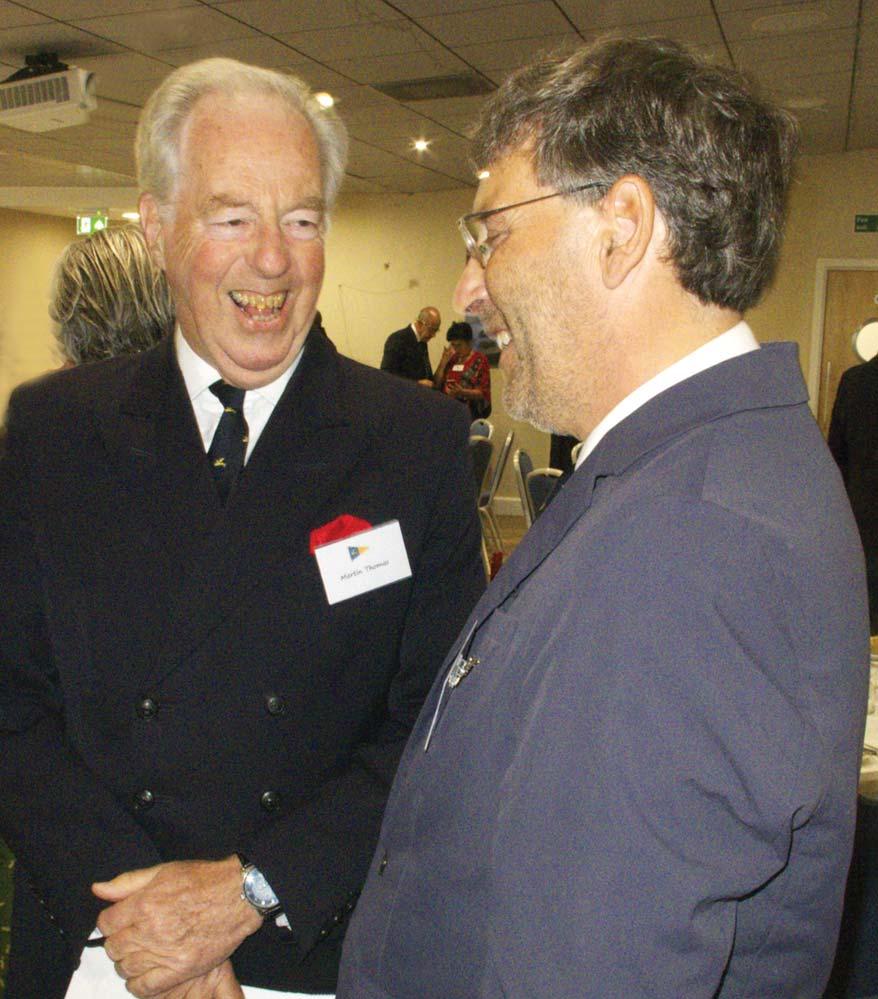
All the photographs taken during the presentation ceremony are reproduced courtesy of John vanSchalkwyk. Thanks are also due to Eoin Robson, Chair of the Awards Sub-committee, and his panel of hard-working judges, Daria Blackwell who has handled the Club’s PR for the past ten years, which includes announcing our Award results to the international press, and not least Club Secretary Rachelle Turk for her impeccable organisation of the entire event.
The history and criteria for all the awards, together with information about how to submit a nomination online, will be found at https://www. oceancruisingclub.org/Awards.
Presented by the family of David Wallis, Founding Editor of Flying Fish, and first awarded in 1991, this silver salver recognises the ‘most outstanding, valuable or enjoyable contribution’ to the year’s issues. The winner is decided by vote of the Flying Fish Editorial Sub-committee.
For only the second time in its 33-year history an equal number of votes were cast for two articles, Sailing and Diving the Many Motu by Ellen Massey Leonard, which appeared in Flying Fish 2022/1 and Capsize! by Anthea Cornell Stock from Flying Fish 2022/2. The two articles hcould hardly be more different. Ellen Massey Leonard’s 13-page article is a true ‘feel-good’ piece describing three visits to the Tuamotu Archipelago with her husband Seth over a span of 24 years, illustrated by 16 memorable photographs. Among the comments made by members of the Editorial Sub-committee were: ‘I’d
love to visit the Tuamotus to dive their waters and see their spectacular biodiversity with my own eyes. Ellen describes both the diving and the sailing so well, and the pictures are fabulous’, ‘Ellen’s articles are always well-written and her love, care and enthusiasm for nature (and sailing) are in no doubt’, ‘Beautifully written, evocative of both the experience and the place’ and ‘Slightly out of the normal mould of cruising articles and their boat is drop-dead gorgeous!’.

Ellen was unable to travel from Hawai‘i to accept her award in person, but wrote:
‘I’d like to thank the OCC for the honour of this award. I regret that I’m unable to receive it in person; it would have been wonderful to join you!
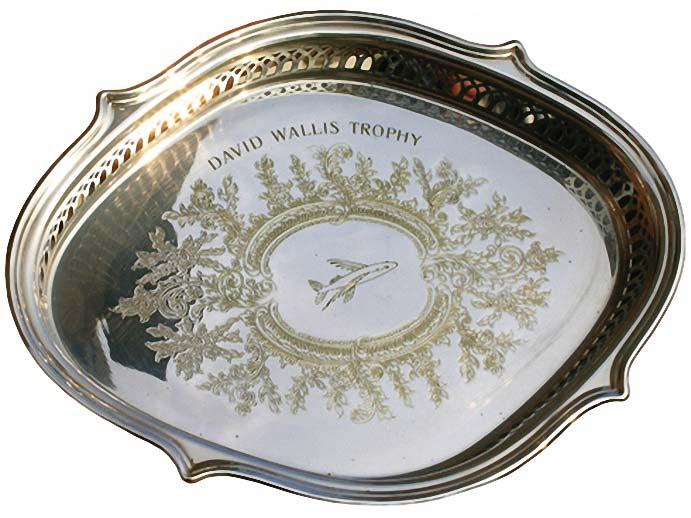
I’d particularly like to thank Anne for the incredible work she does every year – twice a year! – in creating Flying Fish. It’s a superb publication, always full of fascinating tales of adventure on the high seas all over the world. I’d also like to thank our Commodore Simon, Vice Commodores Daria and Phil, and all of our club officers and committee members for the hard work they do to make the OCC such a great community and engaging club. It’s always such a good feeling to come into an anchorage and see another flying fish burgee!’
Turn to page 126 of this issue for Close-Hauled to Hawai ‘ i , Ellen’s most recent contribution to Flying Fish.
In contrast, Capsize! by Anthea Cornell Stock covers less than three pages and is without illustrations. Written more than 20 years ago and never intended for publication, it only came to light following Anthea’s death in September last year (her obituary also appears Flying Fish 2022/2). Capsize! tells how she accepted the offer of a berth
from the Azores back to the UK aboard Dazzler, a brand-new 46ft (14m) catamaran owned by a fellow OCC member, and what happened after the yacht capsized under spinnaker 36 hours and several hundred miles into the passage. The seven crew were rescued by a ship some 12 hours later.
As members of the Editorial Sub-committee observed: ‘What an adventure, and what an understated but vivid description of it!’ ‘A short but gripping account of every multihull sailor’s worst nightmare,’ and ‘The experience of being in a capsized catamaran in the Atlantic was clearly not enjoyable but Anthea’s account of it sure was interesting’.
Both articles will be found in the Flying Fish online archive at https://oceancruisingclub.org/ Flying-Fish-Archive.
Presented by Admiral (then Commodore) Mary Barton and first awarded in 1993, the Qualifier’s Mug recognises the most ambitious or arduous qualifying voyage published by a member in print or online, or submitted to the OCC for future publication.
In March 2022 Ainur Mutiyeva and husband Shaun Weaver departed Panama aboard their Gitana 43 Three Ships for Port Moresby, Papua New Guinea, more than 8000 miles away. Not so unusual a passage for OCC members perhaps, except that they were not planning to stop even once en route. Also, for Ainur, who comes from landlocked Kazakhstan, this would be her first passage of more than 500 miles. Shaun and Ainur’s account of their passage, entitled Destination PNG, appeared in Flying Fish 2022/2.
In the words of Ainur’s proposer for the Qualifier’s Mug, ‘Their non-stop passage, which took 144 days, was an outstanding example of tenacity and seamanship reflecting the true ethos of the OCC. The fact that this was Ainur’s first experience of a major ocean crossing, and the style, enthusiasm and commitment she demonstrated during the passage were impressive to say the least. Doing 12-hour watches for 43 days while hand-steering for the majority of the time is special enough, but volunteering to do it at night, and her description of what the passage meant to her, encapsulating so profoundly the essence of ocean sailing, makes her a more than worthy candidate for this award’.

Ainur and Shaun are still on the other side of the world, but Ainur (who is multilingual) asked Vice Commodore Fi Jones to read out her words at the Annual Dinner:
‘Good evening everyone. First of all I want to say thank you to Fi for
being there in my place as PNG is a long way off and, of course, thank you for my award and for all the help I received from OCC members, including Chris and Fi Jones, Tom Harris and Brian Hull. It still seems a little surreal that I, as a lady working in the middle of an oilfield in Kazakhstan who is still useless at swimming and had never seen this way of life previously, departed from my home country and have now been presented with this award. My husband Shaunskie is passionate about his sailing and even though he can be really grumpy (but not all the time!) I love what we have done so far.
There were moments when I believed I should just give up, but then the ocean magically gave me another reason to continue. As all of you probably know, it is not very inspirational when you cook dinner in the galley and then the boat rolls and half your dinner ends up behind the stove and the other half on the floor – it just means the old five-second rule and smaller portions... However, when the true majesty of the ocean shows itself with the fish and the birds hunting each other to continue the path and magic of life, what does a bit of curry on the floor matter?
Three Ships felt as if, regardless of our circumstances which on a few occasions were extremely uncomfortable and hard – I refer to the various curries and banged heads and bruised fingers – she was there to keep us safe and keep moving forward. I feel very privileged to have had this experience and indeed I hope to continue. How much floorserved curry that will entail remains to be seen. As for my award, it means a lot to me personally because it was awarded by people of the same mind. Thank you.’
Introduced in 2008, this award is made to one or more OCC Port Officers or Port Officer Representatives who have provided outstanding service to both local and visiting members, as well as to the wider sailing community.

Three Port Officer Service Awards were made for 2022, to Bill & Chris Burry, Port Officers for Deltaville and Mathews, Virginia, USA, Peter Dodd, Port Officer with Terry Folinsbee for Mahone Bay and Lunenberg, Nova Scotia, Canada, and Mike Hodder, Port Officer for Crosshaven, Co Cork in the Republic of Ireland.
Bill & Chris Burry received multiple nominations mentioning how they offer assistance and practical information to members and, when hosting members at their own dock as they do frequently, offer hot showers, laundry facilities, fresh water and lifts to the grocery store. As one of their nominators, a repeat visitor, put it: ‘They go above and beyond to welcome us and share their lives with us. They are more than Port Officers now, they are friends and represent all that is so positive about the cruising community’. Another mentioned how: ‘Even before they were appointed in 2018 Chris and Bill were already offering members one of the best free docks in the area, giving advice regarding local mechanics, allowing parcel deliveries to their address and sharing their considerable knowledge of Chesapeake Bay anchorages and places to visit. Members can count on the Burrys to assist in finding haul-out yards for hurricane season and helping them prepare for offshore passages. Often there are several OCC boats on their dock to whom they offer true ‘southern hospitality’, perhaps with an oyster and crab cook-out to give visitors a taste of local food. They also organise and host the annual Southern Chesapeake Bay Dinner at the Mathews Yacht Club in October. We have been to several of these and they are always enjoyable, interesting evenings and a great way to meet other cruisers’.
Bill and Chris flew over from the US to attend the Annual Dinner and Chris spoke for both of them when they came forward to receive their award:
‘We are delighted to be here in person to accept this award. For the past five years we have been Port Officers for the small towns of Deltaville and Mathews, Virginia on the lower western shore of the Chesapeake Bay, and had been hosting OCC boats at our dock even prior to our appointment. It is a great way to meet fellow long-distance cruisers and
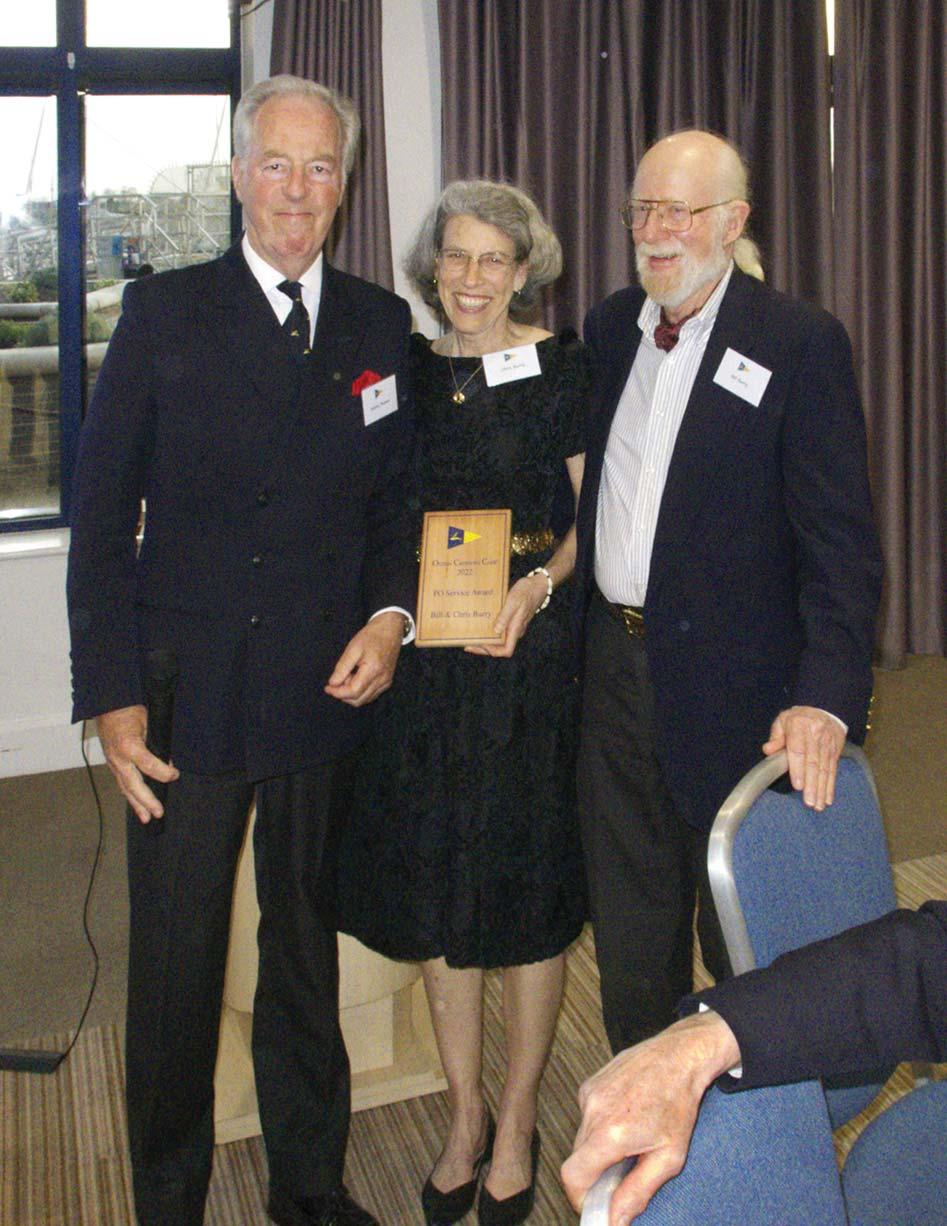 MC Martin Thomas with Chris and Bill Burry, Port Officers for Deltaville and Mathews, Virginia
MC Martin Thomas with Chris and Bill Burry, Port Officers for Deltaville and Mathews, Virginia
we have met numerous sailors this way, many of whom have become life-long friends and are here tonight.
Many of you know that we have a sailing dog named Flaco, an American foxhound who adopted us over ten years ago. We’ve taught him to sail and take him on our long cruises. One cold, dreary morning in January he was up early so I got out of bed to put him outside. When he returned I crawled back into bed and picked up my cell phone to check the morning news. It was a very pleasant surprise to learn from Commodore Simon that we were being recognised with a Port Officer Service Award. We had already made the decision to attend this year’s AGM, combining it with a return transatlantic passage on the Queen Mary 2, and this gives it even more meaning. We are honoured to accept this award and look forward to continuing to welcome you to the southern Chesapeake Bay.’

Peter Dodd, Port Officer with Terry Folinsbee for Mahone Bay and Lunenberg, Nova Scotia, has been in post ‘on the ground’ since 2007 and on the airwaves since 2011. Like many members he learned to sail as a child in dinghies before expanding his horizons over the following 50 years to the Great Lakes and the Atlantic Provinces, including two voyages from Lake Ontario to Nova Scotia. For ten years following retirement in 2002 he spent winters aboard his Whitby 42 Rovinkind II in the Caribbean and summers at his home on Young Island, NS, joining the OCC in 2004. During this time he established an AIS receiving station for Marine Traffic and recently set up another AIS station, of which more below.
As his nominator observed: ‘Port Officer Awards usually relate to the services and assistance provided directly to cruisers and Peter has spent a lot of time doing this. However, he has also been working with the OCC Digital Development Group (DDG) to make a wider contribution to OCC cruisers across the globe and is currently
assisting with the trialling and testing of technology to enhance the accuracy of the OCC Fleet Map.
He has set up an AIS Hub which links with the vessel position updates provided by the Club’s IT contractor to enable more frequent vessel position updates on both the website and the app currently under development. He is also working with the DDG to build a backup service for the Fleet Map, including a server, integration links and an AIS receiver. Peter has been an enthusiastic and proactive user of the Fleet Map to identify cruisers in his area. As well as recognising his direct contribution to our Club, hopefully this award will encourage other Port Officers to follow his lead and so benefit all members visiting a new area.’
Peter was unable to attend the Annual Dinner to receive his Port Officer Service Award in person, but via fellow Nova Scotian John van-Schalkwyk told us:

‘It is with great pleasure that I accept this award – doing what I enjoy doing and being recognised for it is incredibly satisfying. In 2011 there was little AIS coverage in our area of Nova Scotia and, with the support of Marine Traffic, I established the Mahone Bay ground station. Then came Raspberry Pi with a dAISy Hat, which must sound like an exotic dessert! The Raspberry Pi is a single-board computer, the Hat is ‘hardware on top’ and dAISy is ‘Do AIS Yourself’. How could I resist setting up another station?
As long as my station reports positions to AIS Hub I can access all the other data being reported to AIS Hub. The OCC team is taking advantage of this to update the Fleet Map at no extra cost and I have been pleased to help them with this effort. What is work for some is fun for me and I invite anyone who would like to establish an AIS receiving station in a poorly covered area of the globe to contact me for support.
Thank you again.’
Mike Hodder , who has been Port Officer for Crosshaven, Co Cork since 2015, had less distance to cover to reach Poole and we were delighted that he was able to receive his Port Officer Service Award in person. Unlike the other two winners, his nomination focused on a single ‘service’, though just one among many. His American
nominators describe Mike as: ‘A consummate ambassador for the OCC, especially for newcomers to Ireland – a knowledgeable, genial and helpful host by every measure. He responded to our introductory query with a trove of useful written, online and personal references to help us narrow the options about where to make landfall after a passage from North America. As we learned more about potential arrival ports and Mike learned more about our likes and dislikes, he began to provide more specific recommendations, all of which was most welcome of course, but not by itself worthy of an award. However, when I became injured shortly before arrival and before we had even met in person, Mike was quick to help me gain ready access into the Irish Healthcare System. He also offered us the extended use of his family’s cottage in Co Kerry for post-operative convalescence. When we did eventually travel from Co Kerry to Co Cork, Mike and his lovely wife Carol insisted we stay at their house rather than in a hotel or B&B, extending the invitation to our crew as well. Nearly three months after our arrival in his Port Officer area Mike continues to provide us with insightful information to ensure we enjoy the highest quality of life while in Ireland.’
A little way into his acceptance speech Mike gave us his recollection of events, though not before making some Oscar-worthy thanks:
‘Commodore, Flag Officers, General Committee and members, thank you so much for this award. I am a Port Officer in order to help strangers enjoy their visit to a new port, but to be thanked and acknowledged for going the extra mile is very heart warming. First I must thank some important people, including Daria and Alex Blackwell who asked me to organise an OCC dinner and weekend. With their encouragement and support I agreed and the dinner in Kinsale was the best-attended OCC event ever held in Ireland.
I must also thank my nominators, who contacted me early last year, planning to sail to the Azores and on to Ireland, cruise the south coast and then cross to Scotland to meet friends. Their arrival was traumatic to say the least. They intended to make landfall in Dingle on Ireland’s west coast, where we have a son, so I asked him to keep an eye out for them. He replied that he had picked them up on AIS and they were just off

The Skelligs so should be in the next day, but in texts the following day he told me they had not moved much overnight, then that the Valentia Lifeboat had launched and finally that they were being towed into Portmagee. Later that day David phoned to tell me that their engine had broken down, there was no wind, he had a suspected broken finger and when he informed the Coastguard they said there was a storm coming! We got to know them quite well over the next few months, including having them visit. They were extremely grateful for all we did for them and I want to thank them for the very kind and generous letter they wrote to recommend me for this Award. Once again, my thanks to the Commodore and Committee, I am truly delighted.’
First awarded in 1990, the Australian Trophy was donated by Sid Jaffe, twice Rear Commodore Australia. Carved from a solid piece of teak by Wally Brandis, it is awarded for a voyage made by an Australian member or members which starts or finishes in Australia. The winner is selected by past and present Australian Regional Rear Commodores following nomination by the Australian membership.
Recipient of the Australian Trophy for 2022 was Roving Rear Commodore Guy Chester, familiar to many members from his reports in recent Newsletters. The Trophy recognises his singlehanded voyage from New Zealand, where he bought his 32-yearold, 52ft (16m) cedar and balsa trimaran Oceans Tribute , to Richards Bay, South Africa. His route took in New Caledonia, Cairns and Darwin in northern Australia, Cocos Keeling, the Indian Ocean and La Réunion Island before finally making landfall at Richards Bay.
Since then Guy has continued – still singlehanded – across the South Atlantic to the Caribbean, reaching Antigua on 2nd January this year. Turn to page 113 of this issue to read his account not just of this passage but of preparing Oceans Tribute for singlehanded ocean passagemaking. At the time of writing (April 2023) Guy was enjoying some fully-crewed racing around the Caribbean, where he plans to stay for the remainder of the season. He is a member of the General Committee as well as Members’ Global Support Network representative for the Indo-Pacific region, and in

2020 was one of the recipients of the OCC Award for his work in assisting the cruising community during Covid. He is also Director of EcoSustainAbility, which provides environmental and sustainable tourism/ecotourism consulting worldwide.
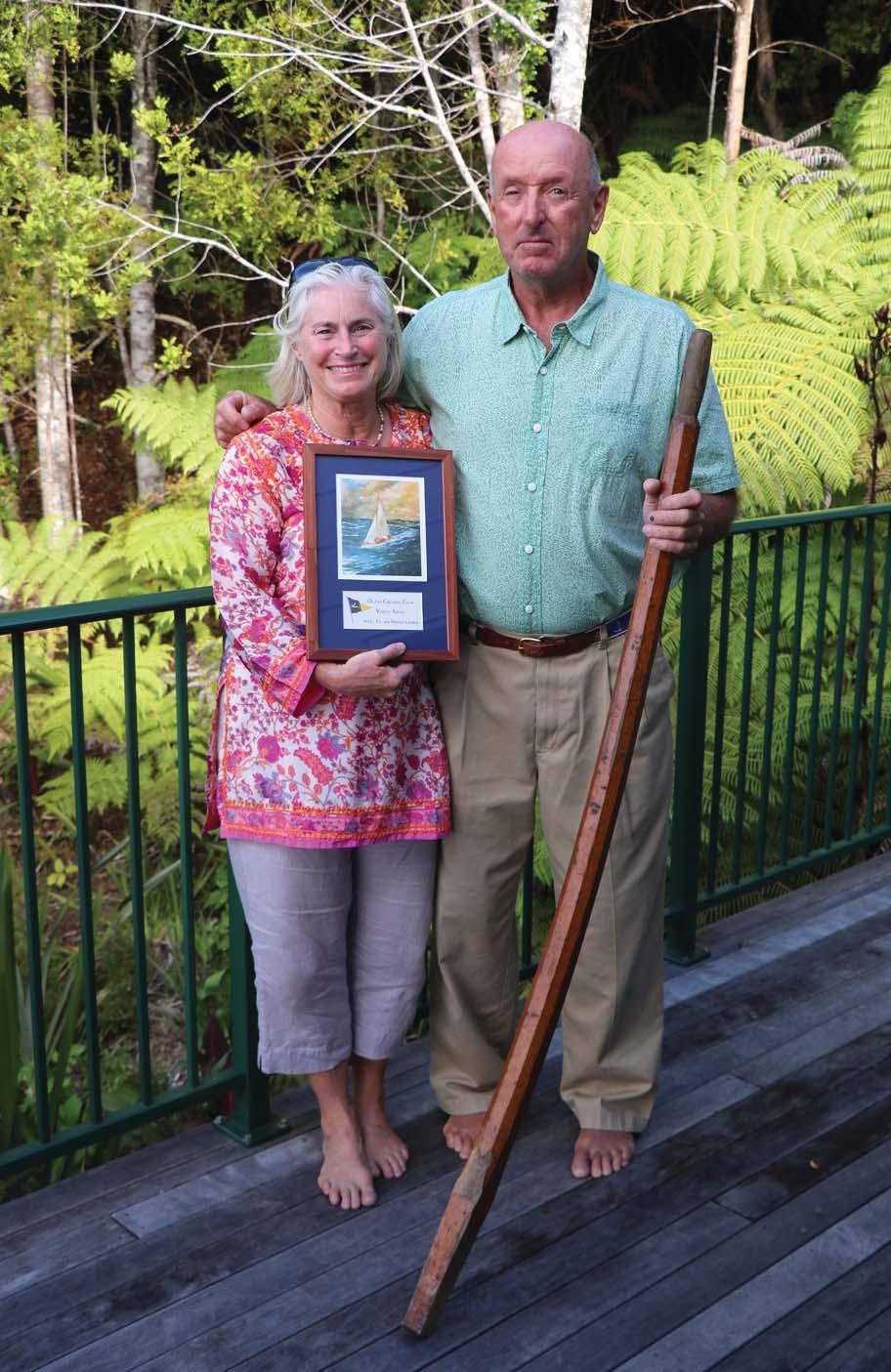
The Vertue Award is presented to a member in North America for an outstanding voyage or for service to the Club. Named after Vertue XXXV, in which OCC Founder Humphrey Barton crossed the North Atlantic in 1950, it was created in 2014 to commemorate the Club’s 60th anniversary. Awardees are selected by North American Regional Rear Commodores.
In 2022 the Vertue Award went to Harriet and TL Linskey , recognising the development and success of their Hands Across the Sea child-literacy programme. They have covered more than 50,000 ocean miles in the past 36 years, including thirteen 3500-mile round trips from their former home in South Dartmouth, Massachusetts to schools in Antigua, Dominica, St Kitts and Nevis, St Lucia, St Vincent and the Grenadines and Grenada. The boat for their ‘work commute’ was their 46ft (14m) catamaran Hands Across the Sea, now renamed Ocean.
Starting back in 2007, pre-schools, primary schools and high schools in the Eastern Caribbean began benefitting from the creation of Hands Across the Sea lending libraries containing new books sent by Hands and transported to their island and school by cargo ship. Each school library – many run by the students themselves – received a range of books addressing every reading level and every subject, fiction as well as non-fiction.
During the 13 years that Harriet and TL ran the Hands Across the Sea programme it donated more than half a million new books to nearly a thousand schools and pre-schools in the Eastern Caribbean, changing the lives of over 150,000 children as
it opened their eyes to the wider world. In 2021, after making the decision to retire from the organisation, they worked hard to ensure it remained active and Hands Across the Sea continues to thrive even though Harriet and TL have now crossed the Pacific to settle in New Zealand.
Harriet and TL Linskey were presented with their Vertue ‘keeper’ Award last December at the annual Opua Potluck organised by Nina Kiff, Port Officer for Bay of Islands, NZ. In the photograph TL is holding the tiller from OCC founder Humphrey Barton’s Vertue XXXV – most appropriate, bearing in mind the name of the award. Hum’s son Peter had it in his garage and when he was having a clear-out asked Nina, Hum’s great niece, to be its next custodian.
On receiving the Vertue Award Harriet told those present:
‘We first sailed across the Pacific in a 28ft (8∙5m) Bristol Channel Cutter, a bluewater cruiser not much longer than Humphrey Barton’s Vertue XXXV. Back in 1988 the ‘big boats’ were 40-footers. Now boats are much larger, but the needs of local communities are as urgent as before. We are thrilled that Hands carries on and is recognised in the Eastern Caribbean as still having a huge impact.’ TL added: ‘We are honoured to receive the Vertue Award from the OCC. We were honoured also to be welcomed by so many Caribbean school principals and teachers over the years, and to be able to give children a gift that truly lasts a lifetime – the gift of literacy.’
Donated by the Jester Trust as a way to perpetuate the spirit and ideals epitomised by Blondie Hasler and Mike Richey aboard the junk-rigged Folkboat Jester, this award recognises a noteworthy singlehanded voyage or series of voyages made in a vessel of 30ft (9∙1m) or less overall, or a contribution to the art of singlehanded ocean sailing. It was first presented in 2006 and is open to both members and non-members.
Recipient of the OCC Jester Award for 2022 was Cal Currier for his solo Atlantic crossing from Marion, Massachusetts to Lagos, Portugal aboard Argo, his 1976-built Tartan 30. The 3400 mile passage took him 28 days, including a brief stopover in the Azores. This would have been an impressive passage in any circumstances, but was made all the more so because Cal was only 16 at the time. Growing up in Palo Alto, California he had links to the sailing community, but had very limited sailing experience himself, none of it on the ocean. Having set himself the goal of sailing solo across the Atlantic he started to learn seriously, with support from his family as well as from sailmaker and OCC member Sandy Van Zandt who also found him a suitable boat. Only four months later Cal set off.
One of his nominators went out of his way to praise ‘the spirit in which he completed the entire endeavour which, more than his young age, makes his accomplishment notable and worthy of the OCC’s recognition. A few key character traits greatly increased his
chances of success. He was wise enough to enlist the help of his father and grandfather, both experienced ocean sailors, and of sailor, sailmaker and longtime OCC member Sandy Van Zandt. He was humble enough to tackle the trip one step at a time, giving himself permission to not go or to turn back if he wished. And he wanted to do this trip primarily to see whether he could – to prove it to himself, not to followers on social media. In the end Cal made crossing the Atlantic solo look easy. But it was the preparation, the assistance, the confidence tempered with humility that led to his success.’
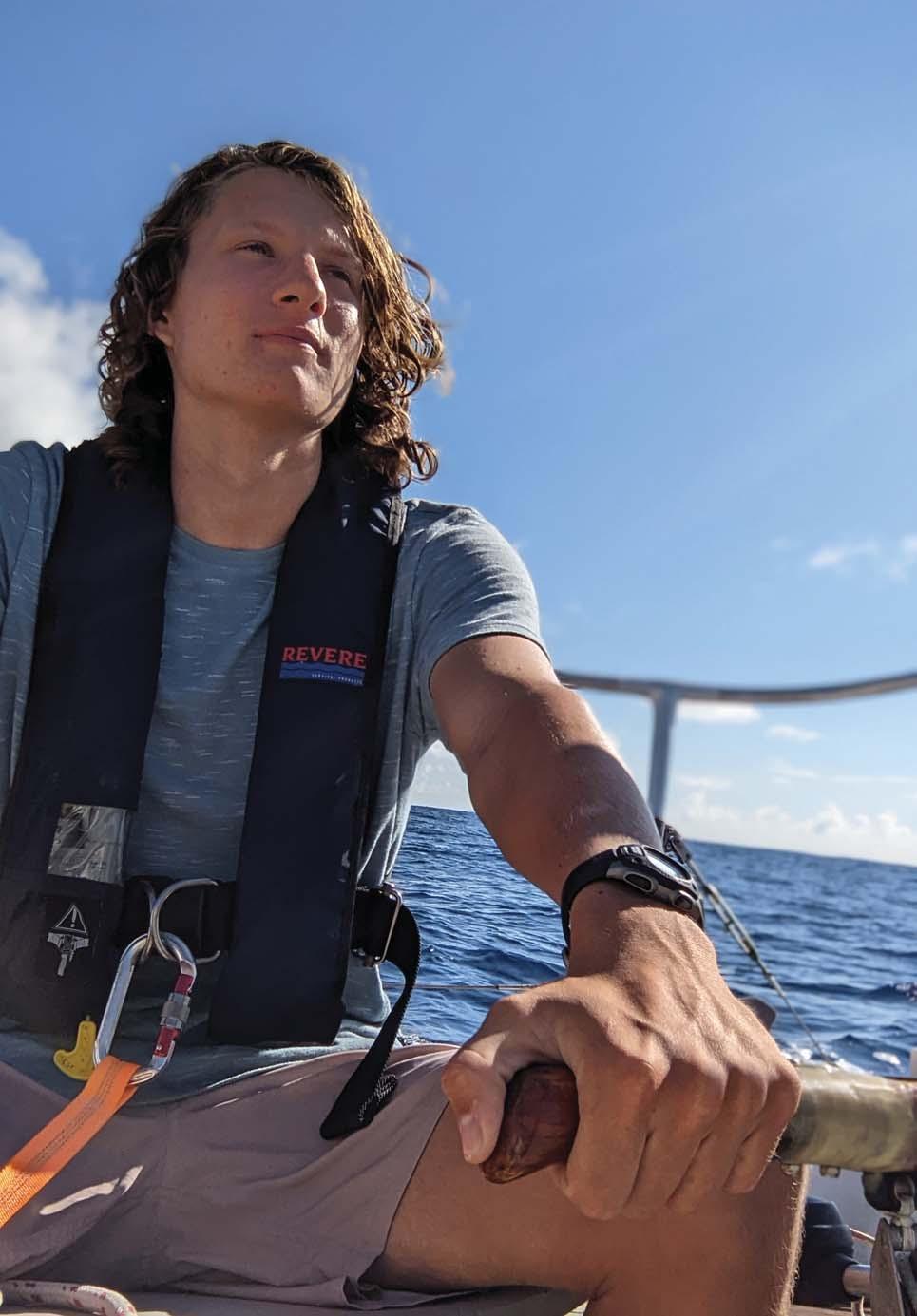
Cal is still in full-time education so was unable to attend the Annual Dinner to receive the Jester Award in person, but wrote:
‘Thank you to the OCC for giving me this award. I’m very sorry I couldn’t make it to see you in person.
If there’s one thing I learned from my Atlantic trip, it’s to keep it simple and know my limitations. When I started my solo Atlantic campaign I had no thought that I would ever get an award for it. I’m very humbled to be recognised this way, and don’t yet consider myself near to the same category as you all. It was easier to sail across the Atlantic than to convince people to let me do it, but now that I’ve received the Jester Award I’m given more slack, so this is just the beginning. I’m racing dinghies on the West Coast of the US this year and planning to sail Argo from Portugal to Greece in June. Here’s to many great adventures in the future, hopefully with some of you. Keep it simple, keep it safe, keep it going.
With gratitude, Cal Currier’
Donated by past Commodore Tony Vasey and his wife Jill, and first awarded in 1997, this handsome trophy recognises an unusual or exploratory voyage made by an OCC member or members.
Since being appointed Roving Rear Commodores in September 2021, Lars and Susanne Hellman have been contributing fascinating articles to the Newsletter describing a variety of less-visited cruising destinations – The Gambia in December 2021, the Beagle Channel in March 2022, Antarctica in June 2022, the Beagle and Patagonian Channels in December 2022 and, most recently, the west coast of Chile. Fulfilling the criteria so perfectly, it is little wonder that they received multiple nominations for the 2022 Vasey Vase.
Both Swedish nationals, Lars and Susanne met in 2015 on Sweden’s west coast. Lars had sailed since childhood and had owned Sea Wind , a 1979-built Fantasi 37, for twelve years. Susanne had never been on a sailing boat before. Nevertheless, in less than an hour they decided to get married and sail around the world. Within three months Susanne had moved from Stockholm to live aboard Sea Wind in Gothenburg, where she took a variety of navigation and radio courses. Lars gave up his job managing an engineering company and Susanne hers as head of security in a maximumsecurity prison, and in April 2017 they set off on a journey which, over the past six years, has covered more than 40,000 miles and ranged from 68°N to 65°S.
One of their nominators describes how ‘Lars and Susanne have spent almost a year cruising amongst snow, ice and glaciers, exploring the wildest terrain in Chile. As opposed to many sailors, who round the Cape and continue on through the Beagle
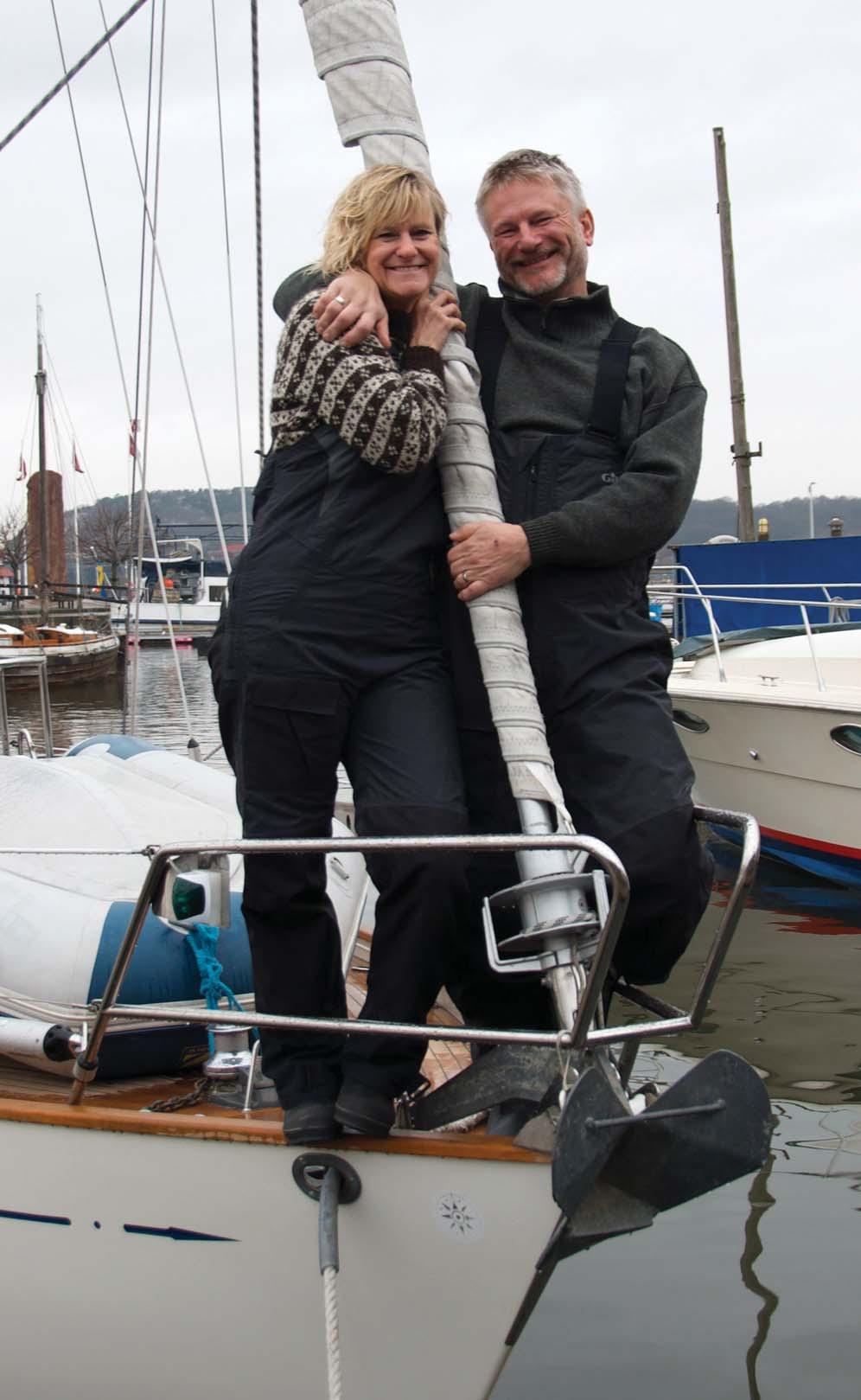 Susanne and Lars Hellman on Sea Wind’s bow
Susanne and Lars Hellman on Sea Wind’s bow

Channel and into the Pacific, their trip included a side visit to Antarctica and prolonged periods in various Chilean ports along the way, giving insight into life in these remote areas. They take magnificent photographs and share their
experience of weather and navigation for those who follow. It’s been a delight to follow them on their adventures.’ Another mentioned how ‘During their time in Antarctica they both caught Covid and were seriously ill, while also having to manage their boat in a severe storm. In the present Southern summer they have continued their travels northwards through the Chilean Channels, continuing to document their trip with superb photos and descriptive text on Facebook and in the Newsletter’. Their travels can also be followed on their blog at http://syseawind.blogspot.com/.
They were unable to attend the Annual Dinner to accept their award, but we were delighted to welcome Kajsa Hellman to accept it on their behalf.
The Club’s oldest award, dating back to 1960, the OCC Award recognises valuable service to the OCC or to the ocean cruising community as a whole. It was decided in 2018 that the OCC Award should be split into two categories, one going to a member, normally for service to the OCC; the other, open to both members and non-members, for service to the ocean cruising community as a whole.
Two OCC Awards for 2022 were made to members, both of whom richly deserve the Club’s thanks and recognition – Daria Blackwell, for more than a decade of service to the OCC in posts ranging from PR to Vice Commodore leading the Club’s 2020 pandemic response in the Atlantic, and Jeremy Firth for his sterling work as editor of the Newsletter for the past six years, only retiring at the age of 80.
Daria Blackwell has held numerous positions in the OCC since she joined in 2011 following three Atlantic crossings with her husband Alex and cat Onyx aboard Aleria, their Bowman 57. Their dream of circumnavigating was cut short by illness in the family and instead she was co-opted on to the OCC Strategy Team by then-Commodore
John Franklin. She joined the General Committee soon after and has been deeply involved in OCC activities ever since. As her nominator remarked, ‘The number of hours she puts in daily are pretty much equivalent to a full time job’.

Daria’s background in marketing communications made her a natural to take the Club’s PR in hand, and she also compiled a marketing plan to increase awareness of the benefits of joining the Club among bluewater cruisers. This was implemented over several years and led to a noticeable increase in new memberships. For several years she co-chaired the Awards Committee, encouraging nominations, liaising with the panel of Awards judges, publicising the results to the global press and assisting with organisation of the Annual Dinner and Award presentations.
In 2013 Daria and Alex became Port Officers for Westport, Co Mayo, their home area on Ireland’s beautiful west coast, exploring it thoroughly and writing a cruising guide, Cruising the Wild Atlantic Way. In 2017 she was elected a Rear Commodore and took on the role of web editor on top of her other responsibilities. This involved collecting articles and photos from members, editing and uploading them, writing original articles on subjects of interest to members, reporting on events and intercepting items on social media. To increase the visibility of the OCC and highlight members’ adventures, Daria worked with global media outlets such as Noonsite and Sail-World to share OCC news. She took on responsibility for proof-reading and supervising the production of the monthly e-Bulletin as well as for overseeing Facebook and initiating the OCC’s presence on Twitter, Instagram, Linked-In, YouTube and ISSUU – all in addition to her previous tasks. When a Vice Commodore position fell vacant in 2019 she was elected, serving a full three-year term plus an extra year. During that time she led the OCC’s pandemic response in the Atlantic, for which the Club was awarded the Royal Cruising Club’s Medal for Services to Cruising for 2020.
Accepting her OCC Award at the Annual Dinner, Daria told us:
‘I am truly honoured to be receiving this award. I talked about some of the benefits of volunteering at the pre-AGM talk yesterday, but by far the greatest benefit of this journey has been getting to know many of the people who make up the OCC. Yes, they are extraordinary sailors, but they are moreover extraordinary people from all walks of life, some of whom have become lifelong friends. The cruising lifestyle is a great leveller of egos so you rarely start a conversation with a distance sailor by asking what he or she does for a living. Instead you talk about all the extraordinary things you’ve seen and experienced out there, the challenges you’ve overcome and the fascinating people you’ve met along the way.
So I dedicate this award to all the extraordinary people who have touched my life since this journey began. May our paths cross often. I also want to thank the OCC for setting up Platinum Anniversary events throughout 2024 so I can celebrate my 70th birthday all year long!’
Jeremy Firth has been messing about in boats for all his long life, and still is. He was introduced to cruising as a teenager in a 60ft (18m) jackyard topsail ketch and, after spending time in landlocked Canberra at university and then in the civil service, returned to his native Tasmania in 1979 to build (with considerable expert help) Rosinante, a steel, round-bilged Adams 40 with a centreboard, which he still owns. From 1998 to 2001 he sailed Rosinante round the world, taking in the Great Capes of the Southern Ocean, the French canals and north as far as the Baltic Sea and the Scottish isles. His book about the voyage, Round the World with Rosinante was reviewed in Flying Fish 2016/2. For much of it he was joined by Penny and they have been together ever since. In the years since their return to Tasmania they’ve circumnavigated the South Island of
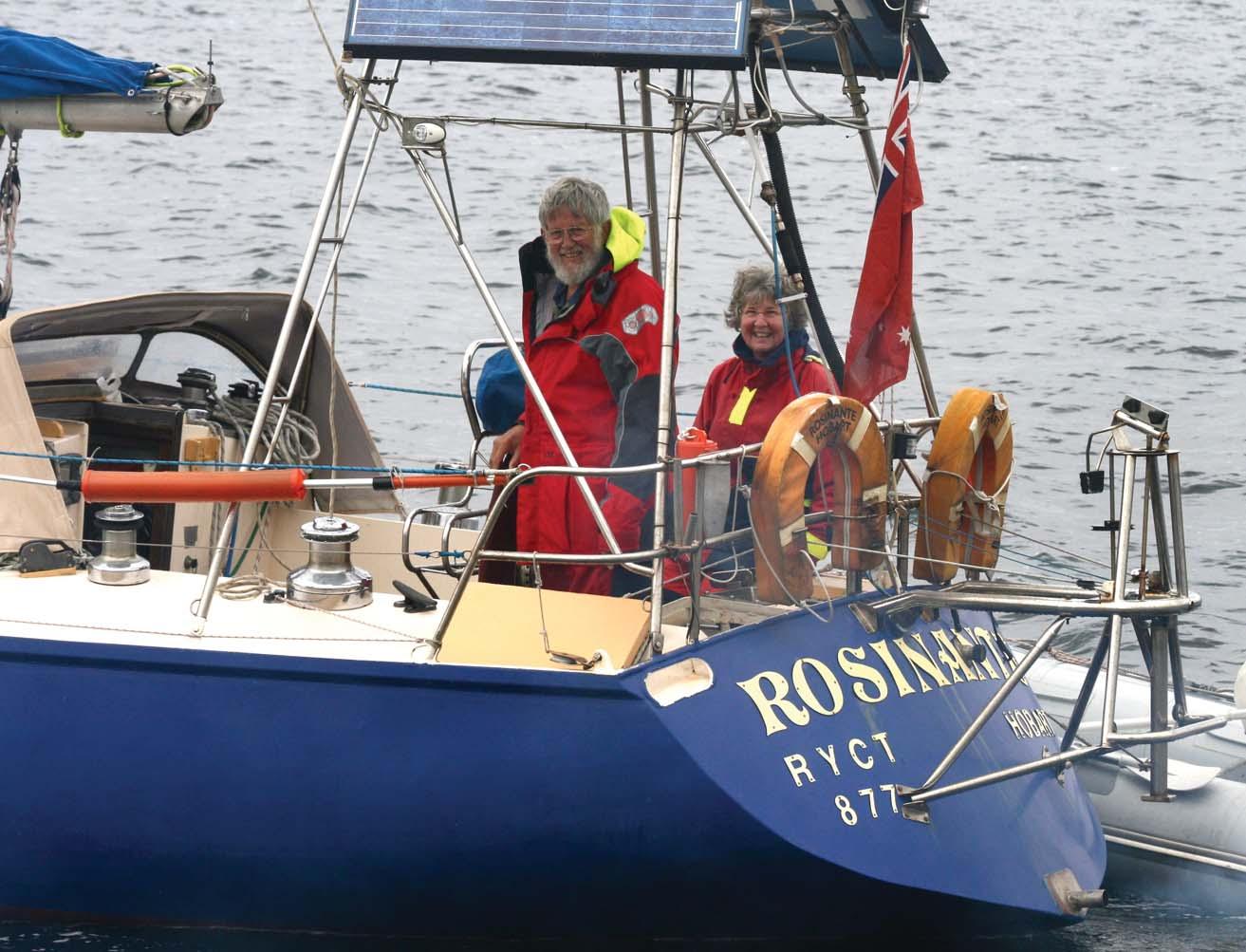
New Zealand, made many cruises along Australia’s east coast and acted as Radio Relay Vessel for nine out of the last ten 800-mile Van Diemen’s Land Circumnavigation
Cruises organised by the Royal Yacht Club of Tasmania. Jeremy also edits the Tasmanian Anchorage Guide , essential for those cruising in the island’s waters.
Jeremy didn’t discover the OCC until 2007. When he did he joined without delay but remained one of the Club’s ‘silent majority’ until 2016 when the call went out to find a replacement for Colin Jarman as Newsletter editor. There were a number of applicants, but few had all the skills required. In the end it came down to just two and the Board were unanimous in their final choice. Jeremy was 74 when he became Newsletter editor and it was initially viewed as a relatively short-term assignment on both sides. Under Colin’s training and supervision, however, Jeremy fitted into the role so perfectly that the Club never looked back. Neither, fortunately, did he.
Jeremy remained unfailingly professional throughout his six years as editor, meeting every printers’ deadline even when supporting family members through serious illness. An unexpected bonus were the chartlets that he frequently produced to illustrate members’ cruises, a skill honed as editor of the Tasmanian Anchorage Guide. Every editor relies on his or her proof-readers and Jeremy’s team – known as the Posse – clearly enjoyed working with him, several staying the entire six years. One wrote that, ‘I am particularly conscious of the time and effort needed to produce a quarterly publication based on voluntary contributions. Not only does it require normal editorial skills but also considerable effort to develop the enthusiasm of contributors and keep the interest of the membership. I have thoroughly enjoyed working with Jeremy ever since he began editing the Newsletter.’
Jeremy was unable to travel from Tasmania to receive his OCC Award in person –he was making the most of the austral autumn to go sailing – but asked to have what he’d written in his last Newsletter read out to those present. Of necessity it has been cut slightly here:
‘It was with something of a heavy heart that I signed off as editor of the OCC’s quarterly Newsletter. Some six years ago the call went out for
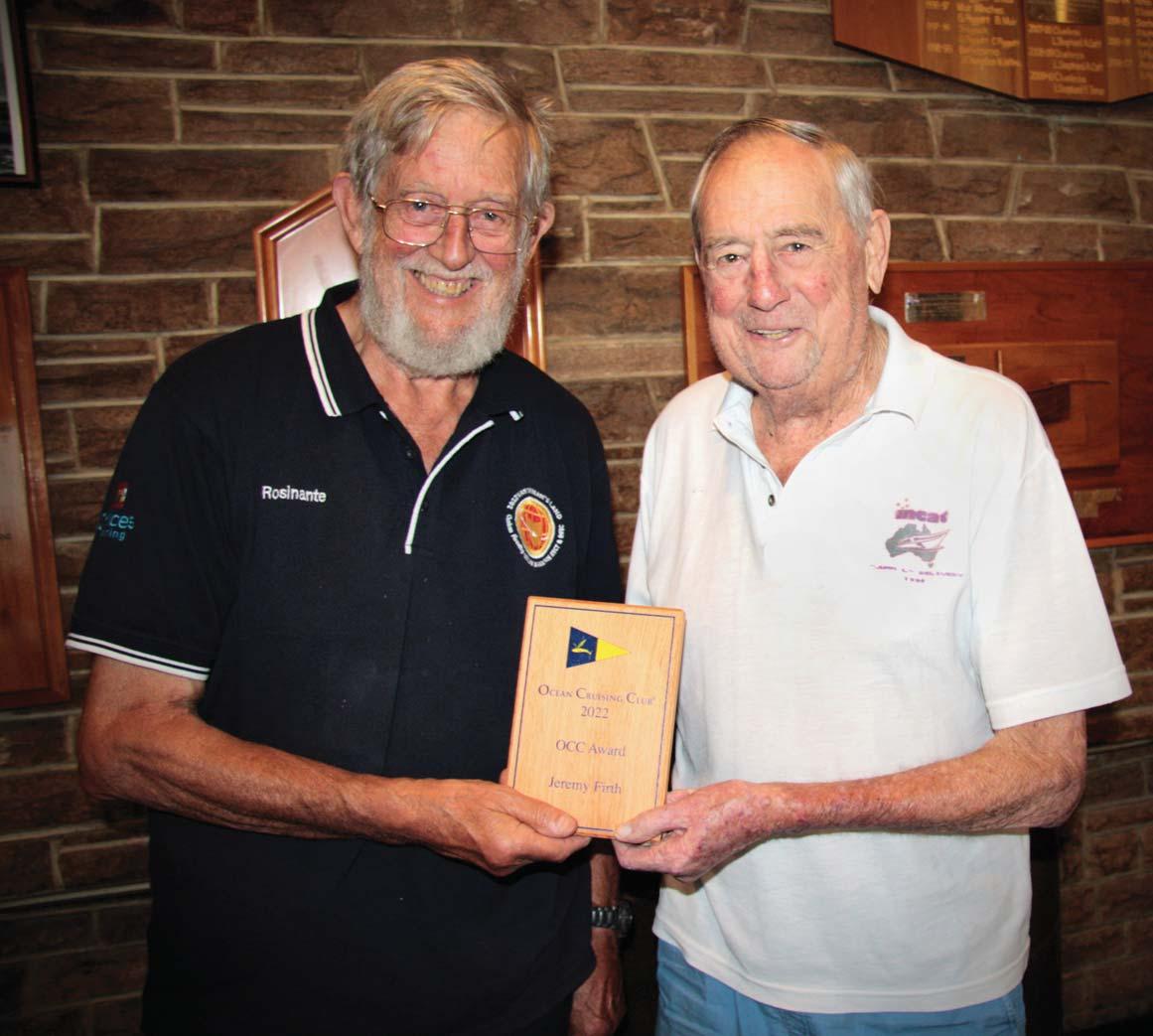
someone to replace the previous editor, Colin Jarman, who was finally succumbing to a serious illness. I put my hand up to fill in on a temporary basis until someone more appropriate could be found. I recall writing an e-mail in which I pointed out why I was not the right person to take over permanently. I was (then) 73 years old, my aged and grog-sodden brain wasn’t what it used to be and I lived on the other side of the planet. Word came back that an aged and grog-sodden brain sounded aspirational and did I want to be considered for the task? How could I refuse! This six-year temporary appointment has been very satisfying and great fun, collecting contributions from all over the world, many from places that Penny and I visited during our ocean-walloping years, as well as from regions we missed.
It remains to bear witness to those who have contributed their unwavering support to make my time as editor of your Newsletter more or less successful. The list is long and includes members past and present of the various OCC management functions, particularly Anne Hammick and Zdenka Griswold, in succession my ‘bosses’ as chairwomen of the Publications Sub-Committee, the small but effective proof-reading posse of volunteers who ride shotgun on the editorial process and pick most (but never all) the nits in each edition and, of course, the OCC membership who have contributed words and pictures about their cruising lives.’
This award, which can go to either a member or a non-member, recognises valuable service to the ocean cruising community as a whole.
Once again two OCC Awards were made, to long-time OCC member Russell Frazer and to non-members Patricia Dallas and David Sapiane, who run the annual OCC NE USA SSB Net and Gulf Harbour Radio in New Zealand respectively.
When nominating Russell Frazer, his proposer reminded the judging panel that, ‘Twenty years ago, in early 2002, Russell ran the Big Fish Net for yachts crossing the Atlantic from the Canaries to the Caribbean. It was not exclusively for OCC members, but many participated in it. More recently he has run the annual OCC NE USA SSB Net, as an occasional Net Controller prior to 2013 and annually since 2014 with the exception of the Covid year of 2020, bringing together cruisers between New York and Nova Scotia. It operates daily except Sundays at 0700 EST on 6227 kHz USB, switching later to 4036 kHz USB. Open to both members and non-members, it has been responsible for many joining the Club.’
Russell was aboard his Peterson 44 Blue Highway in the Bahamas at the time of the Annual Dinner, but wrote:
‘I learned about two-way communication when my dad bought me a CB radio back in the CB radio craze of the 1970s. I actually had a radio base
station shack (closet) and had so much fun meeting new people over the airwaves. Eventually I went on to drive 18-wheelers in the late ’80s, always using CB as a safety and entertainment device.
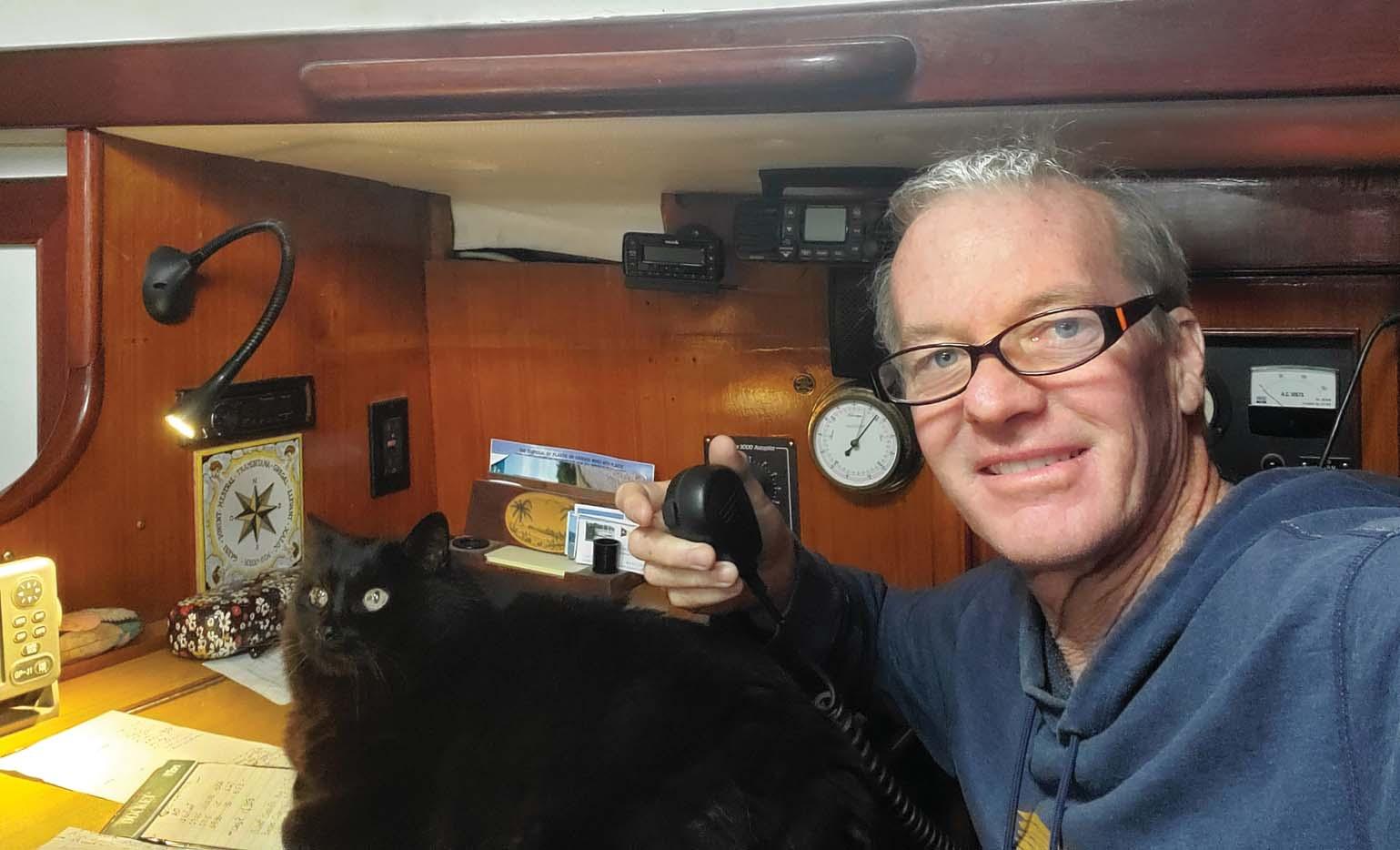
I always say SSB is only as good as the various nets that are available. I was a net controller in the late ’90s on the US East Coast ‘Cruiseheimers net’ (8152 at 0900 EST). When we headed east across the Atlantic out of their range I knew I needed to start a new net, so in Bermuda I put up a notice in the customs house and we had more than 18 boats participate. Cruising Scotland in summer 2000 I put together a cocktail net – it was surprising how it grew! Later, when we met SV Amadon Light in Gibraltar as they were heading west, they suggested I take over the Mediterranean cruisers’ net, during which I would read out the German HF radio teletype forecasts.
I’ve co-ordinated or worked as a net controller on countless nets and I enjoy helping to keep cruisers connected. Thank you, OCC, for this award and for recognising an important aspect of cruising life.’
Like Russell Frazer, Patricia Dallas and David Sapiane have been on the airwaves for many years. In 2012, after 15 years of world cruising, much of it in the southwest Pacific, they established a coast radio station, Gulf Harbour Radio, ZMH286, in their home near Auckland, New Zealand. It grew rapidly, its daily SSB schedule becoming a welcome and reliable resource for cruisers on passage in the southwest Pacific. It is a totally voluntary service providing local advice, weather and forecasting, plus assistance whenever sailors in the area need support. Their nominator describes them as ‘wonderful people, incredibly generous and very supportive of OCC members and other cruisers in the South Pacific’.
Both former scientists, David’s meteorological background plus Patricia’s radio interest proved a good combination. David covers passage and island weather and often gives relevant weather-related lessons, while Patricia takes boat positions and gives her take on local and world news. They have a Marine Traffic AIS and Inmarsat station and also livestream their broadcasts on YouTube so that friends and family can tune in to listen to the vessels checking in.
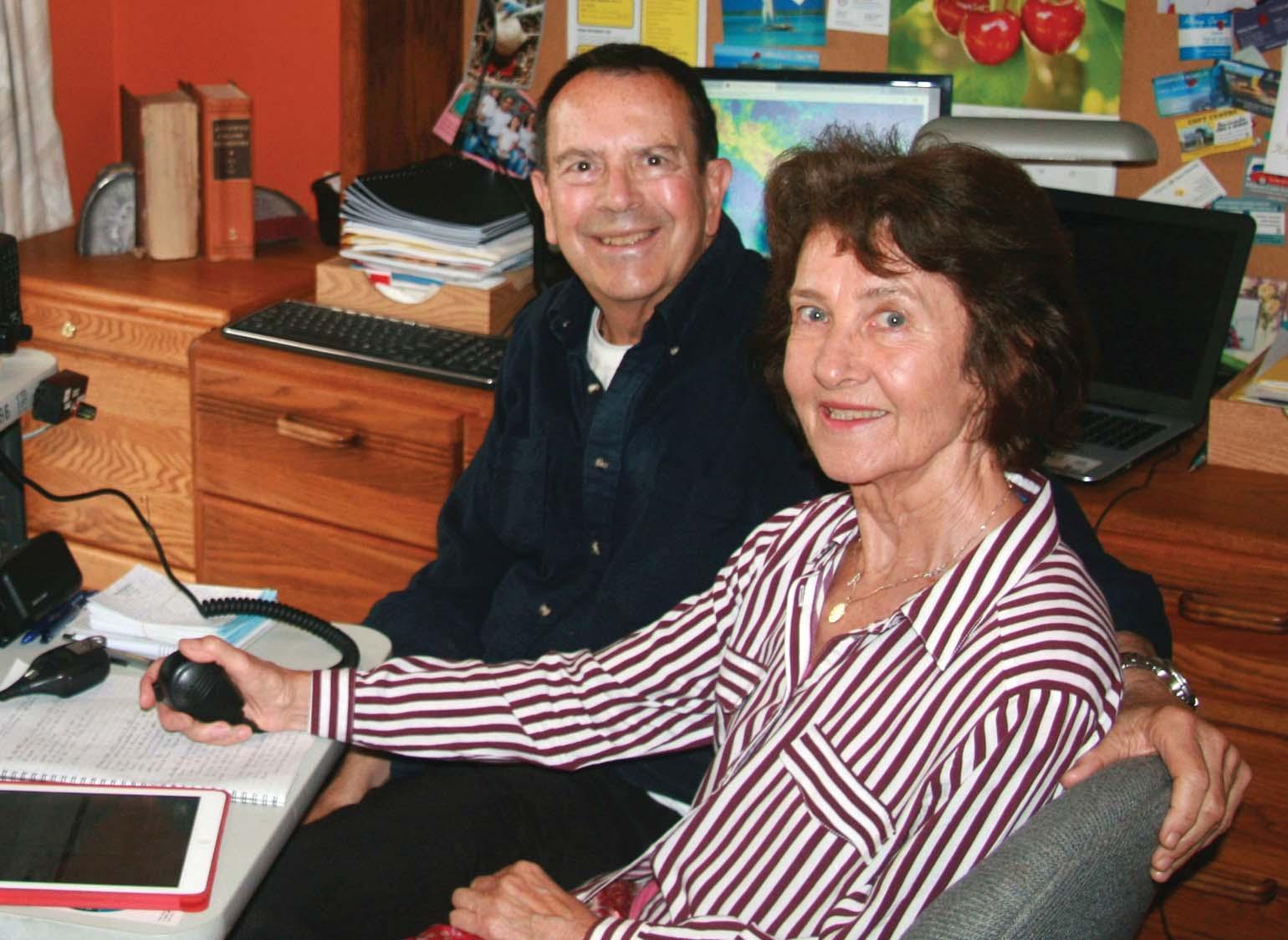
In addition to their daily broadcasts during passage seasons, their website https:// www.ghradio.co.nz/gulf-harbour-radio.html offers various informative and practical papers to assist cruisers with passage planning, interpreting weather information, handling communications and, on arrival in New Zealand, getting the most from cruising the country.
They were away from home cruising New Zealand’s North Island aboard their Moody 471 Chameleon when word reached them of their win, and responded:
‘Thank you, we really appreciate this recognition of our efforts. During our 15 years of cruising we had been on the SSB radio with weather updates virtually every day, so when we decided to take a year off to see what a winter was like, friends asked us to continue broadcasting from home. All worked well until a Radio Inspector arrived one day and politely but firmly advised that we were breaking the law by using a marine frequency from land. Of course we knew that, but it is always easier to beg forgiveness than to seek permission! The inspector guided us through the application for a Coast Station licence – it was either that or lose the radio – so at that point Gulf Harbour Radio was officially
born. We never advertised our station but, like most things in the sailing world, the word spread and pretty soon we had over 500 listeners.
Gulf Harbour Radio has enabled us to return something to the cruising community – one where everyone helps each other with whatever skills they have. There is an abundance of digital weather information available, but what we provide is a seasoned explanation of reality. As David often says, ‘Weather models are computer-generated ideas based on incomplete initial data and formulas of the atmosphere that are incomplete and poorly understood’.
From feedback over the years we know our efforts have helped new cruisers understand the challenges they will face in the South Pacific and helped to make their passages safer. And of course when a passage doesn’t have the clear, sunny skies and perfect downwind conditions we all dream about, we’re told how nice it is to hear a friendly, helpful voice on the SSB each day. Thank you again for the OCC Award, we are absolutely thrilled to receive it.’
Donated by Past Commodore John Franklin and first presented in 2013, this award recognises feats of exceptional seamanship and/or bravery at sea. It is open to both members and non-members.
Many members will have followed the 2022 Golden Globe Race (GGR) which left Les Sables-d’Olonne, France on 4th September. Like its 2018 predecessor it followed the non-stop eastabout route of the original Golden Globe Race in 1968–9, won by Robin (now Sir Robin) Knox-Johnston, its only finisher. Yachts must be monohulls, less than 36ft (11m) overall and with full keels, similar to those widely available at the time of the original race. What makes this very demanding singlehanded race even more challenging is that, while competitors are tracked by Race Control using modern electronics, all onboard navigation must be by traditional methods. Of the 16 starters, three had finished at the time of writing, with two more anticipated. Nine yachts had retired, one had sunk and one had been scuttled after major damage. Visit https://goldengloberace.com/ or https://en.wikipedia.org/wiki/2022_Golden_Globe_Race to read more.
The 2022 race’s only sinking occurred in the Southern Indian Ocean when, early in the morning of 18th November 2022, Tapio Lehtinen’s Gaia 36 Asteria flooded suddenly from the stern, the water reaching deck level within five minutes. The OCC Seamanship Award for 2022 went to all those involved in his textbook rescue
– MRCC* Cape Town, Captain Naveen Kumar Mehrotra and his crew aboard MV Darya Gayatri, fellow GGR competitor Kirsten Neuschäfer and Tapio Lehtinen himself. Their nominator praised the first three for ‘their exemplary co-ordination
of Tapio Lehtinen’s rescue’, and Tapio for ‘his quick thinking, prompt and effective action, good communication and positive attitude’.
Tapio Lehtinen is one of Finland’s most experienced ocean sailors and came 5th in the 2018 GGR in the same yacht. On realising the situation was irretrievable he donned his survival suit, grabbed his emergency bag and took to his liferaft, activating his EPIRB as he did so. This was picked up by MRCC Cape Town who informed GGR headquarters.
The closest ship to him was the Hong Kong-flagged bulk carrier MV Darya Gayatri some 250 miles away. On being contacted by MRCC Cape Town, Captain Naveen Kumar Mehrotra immediately altered course towards Tapio’s position. At about 1500 fellow-competitor Kirsten Neuschäfer, aboard her Cape George 36 Minnehaha and the closest to Tapio at 105 miles, made contact to say she had heard about the emergency and was also heading for Tapio. She was updated regularly by the Race Office, as was Tapio, who responded, ‘You can’t get any closer to the ocean, I love it but this is close enough’.
Fourteen hours later, at 0510 UTC and having averaged over 7 knots, Kirsten reached Tapio’s approximate position. It was light by then, with 20 knot winds from south-southeast. She had difficulty spotting him in the 2–3m swell, but soon the good news came through that Tapio was safely aboard Minnehaha. When MV Darya Gayatri arrived on the scene Tapio returned to his liferaft which Kirsten towed towards the ship, and at 0755 UTC Tapio was able to board via a rescue ladder. The liferaft was also retrieved before MV Darya Gayatri continued her passage to the Far East.
Kirsten Neuschäfer from South Africa, the only woman entrant in the 2022 Golden Globe Race, reached the finishing line at Les Sables-d’Olonne, France on 28th April 2023, taking line honours even without the 35 hours awarded to her for time lost during the rescue. She had led the fleet since Cape Horn and became the first woman to win a round-the-world race via the three great capes, but that was not the reason for her OCC Seamanship Award.
Kirsten started sailing dinghies as a child and has been a professional sailor since 2006 doing chartering, sailing training and deliveries. Before entering the Golden Globe Race her longest singlehanded passage had been the delivery from Portugal to South Africa of an elderly 32ft
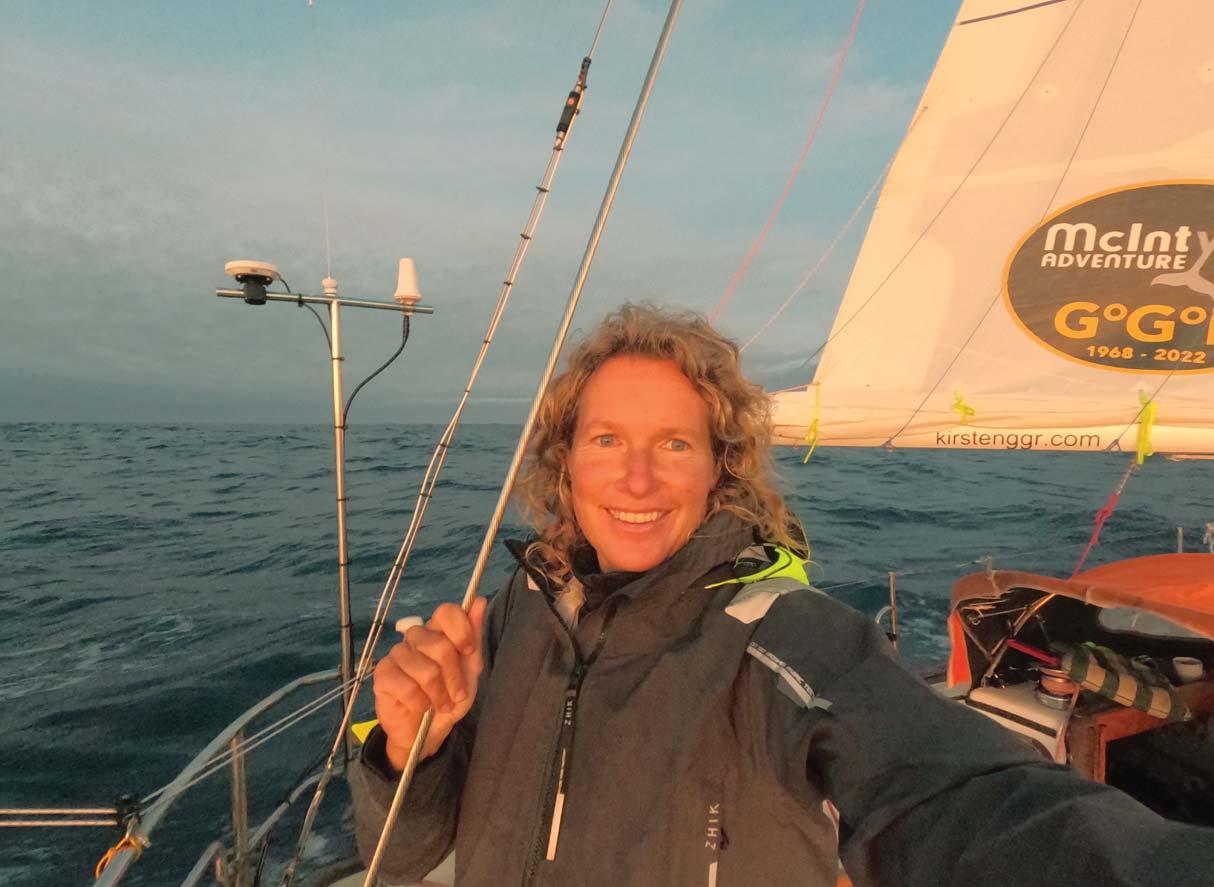
(9 ∙ 8m) ferro-cement sloop which, like Minnehaha, depended on wind-vane selfsteering. In 2015 she began working for Skip Novak’s Pelagic Expeditions, taking researchers and film crews to the Falkland Islands, South Georgia, Patagonia and the Antarctic Peninsula.
Minnehaha, her Cape George 36, was built in Washington State in 1988, but Kirsten chose Prince Edward Island in eastern Canada to refit her for the race. The yacht’s name is best known from Longfellow’s poem The Song of Hiawatha in which it is said to mean ‘laughing water’.
Following the successful rescue Kirsten told Golden Globe Race Control, ‘I’m full of adrenaline now, I’ve been up helming all night and it’s quite something to be manoeuvring so close to a ship, but we’re all good. Tapio was on board, we drank a rum together and then we sent him on his merry way. No congratulations needed for the rescue, everyone would do the same for another sailor, thank you guys for co-ordinating it.’
As already mentioned, Tapio Lehtinen is a highly experienced ocean sailor and made his first circumnavigation in the 1981 Whitbread Round the World Race aboard Skopbank of Finland. His sailing CV also includes the Round Britain and Ireland Race, Two-Star, AZAB, the Bermuda Race and various races in the Baltic Sea. His second circumnavigation, this time singlehanded, was in the 2018 Golden Globe Race, in which he and Asteria finished 5th, thousands of barnacles clinging to her hull having made for slow sailing. One can only imagine Tapio’s emotions as he watched Asteria sink.
Far from being deterred, however, Tapio is already planning his next circumnavigation, this time skippering Galiana, a 1970-built Swan 55 yawl, in the Ocean Globe Race 2023 which leaves Southampton, UK in September. The OGR 2023 marks the 50th anniversary of the first Whitbread Race, sailed in 1973 and, like the GGR, it is sailed in yachts of the period using traditional navigation. Tapio has long been an advocate for youth sailing and will have one of the youngest crews in the race.
We were delighted that Tapio was able to attend the Annual Dinner to receive his OCC Seamanship Award. As someone who is passionate about the world’s oceans, he told us how concerned he was to witness the decrease in ocean biodiversity, the diminishing numbers of birds, whales and other sea mammals and ‘all the trash in

the sea and the smog above the shipping routes’. He plans to use the publicity around his next race to increase the awareness of different solutions to environmental challenges and to ‘work in cooperation with companies and organisations that are part of the solution, not part of the problem’. On a lighter note, and picking up on an earlier remark about how the OCC Awards were beginning to resemble the Oscars, Tapio said that of course he wanted to thank his mother but, even more, he wanted to thank Kirsten’s!
The rescue was co-ordinated by MRCC Cape Town, established in 2004 under the South African Maritime Safety Authority and currently headed by Jared Blows. It is responsible for a search and rescue region of more than 8 million square miles, one of the largest on the planet. The Centre’s motto is ‘Joining hands so others may live’ and it prides itself on its professional approach to helping those in peril on some of the world’s most unpredictable and inhospitable oceans. MRCC Cape Town was represented at the Annual Dinner by Vusi September, the Alternate Permanent Representative of South Africa to the International Maritime Organisation.
Sadly the OCC has been unable to make contact with Captain Naveen Kumar Mehrotra and the crew of MV Darya Gayatri.
Vusi September, representing MRCC Cape Town, with the Seamanship Trophy and Past Commodore John Franklin
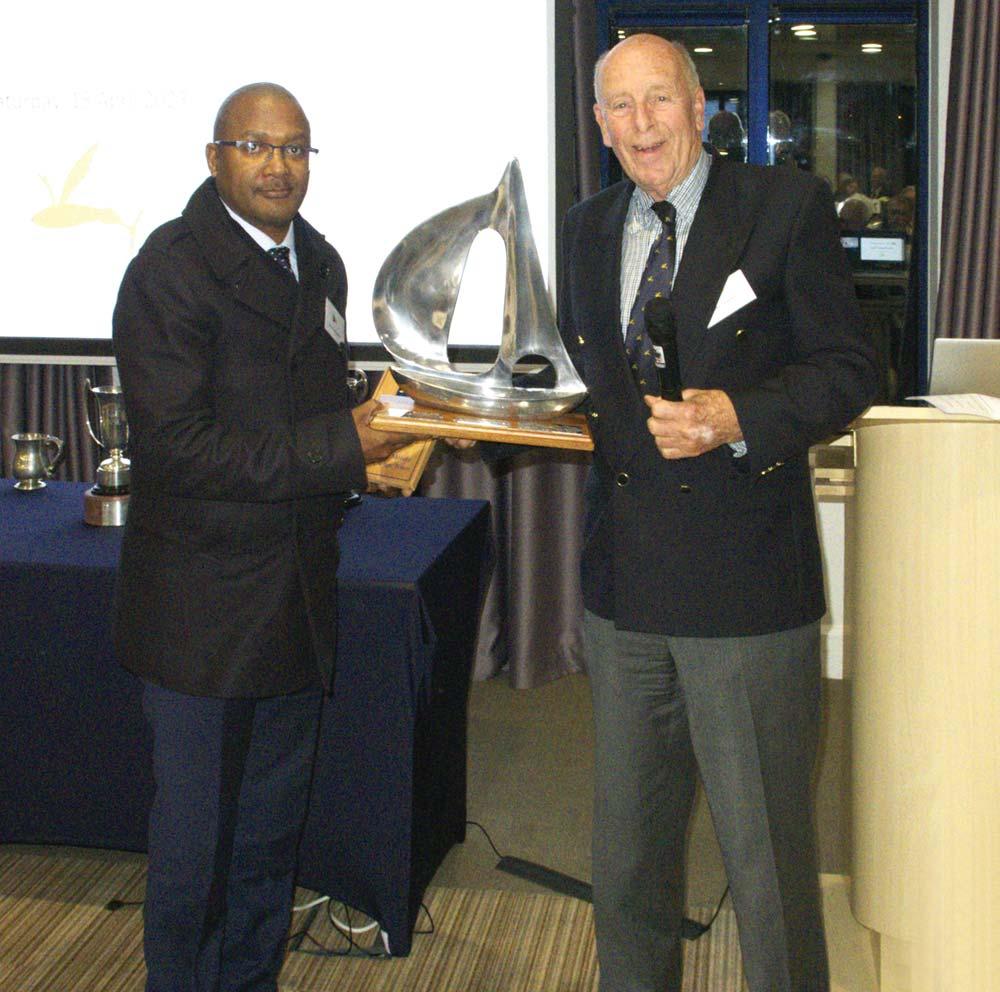
 Tapio Lehtinen speaks at the Annual Dinner, with Past Commodore John Franklin beyond
Tapio Lehtinen speaks at the Annual Dinner, with Past Commodore John Franklin beyond
First presented in 2018 and open to both members and non-members, the OCC Lifetime Award recognises a lifetime of noteworthy ocean voyaging or significant achievements in the ocean cruising world.
Two Lifetime Awards were made for 2022, to Joanna ‘Asia’ Pajkowska from Poland and to OCC Founder Member Ian Nicolson, both of whom attended the Annual Dinner to receive their awards.
Having completed three circumnavigations and some 250,000 miles at sea, Captain Joanna ‘Asia’ Pajkowska is probably Poland’s most accomplished sailor. In January 2009 she completed a singlehanded westabout circumnavigation from Panama to Panama aboard the 28ft (8∙5m) Mantra ASIA, stopping just once, at Port Elizabeth, South Africa, a voyage of some 25,000 miles which took 198 days. In 2010 Asia began her second circumnavigation, again aboard Mantra ASIA but this time with her husband Captain Aleksander Nebelski. Over 16 months they sailed some 22,000 miles, visiting 22 countries and stopping in more than a hundred places. For her third circumnavigation, in 2019 at the age of 60, she borrowed the aluminium 40 footer FanFan, sailing eastabout non-stop from/to Plymouth, UK.

Preparing Rote
66 for the 2017
Two-Star. Photo
Uwe Röttgering
Early in her long sailing career Asia competed in the 1986 Two-Star in the catamaran Alamatur III , and when living in England between 1995 and 2002 was a volunteer crew member aboard the RNLI’s Salcombe Lifeboat. In 1995, 1997 and 1999 she competed in the Fastnet Race, in 2000 in OSTAR aboard the 40ft (12m) Ntombifuti finishing 4th in her class, and in 2001 in the Transat Jacques Vabre aboard the 50ft (15m) Olympian Challenger. She also took part in many fully-crewed transatlantic races, including in 2001 with a female-only crew on the 60ft (18m) Alphagraphics in the EDS Atlantic Challenge. In the 2002/3 southern summer Asia sailed round Cape Horn to the South Shetland
archipelago aboard Zjawa IV, a 62ft (19m) wooden ketch. Between October 2006 and February 2007 she raced halfway round the world with another woman, again aboard Mantra ASIA. In 2013 she competed in her second OSTAR, this time in Cabrio 2, a 40ft (12∙2m) catamaran, the first lady to finish, and made a further four Atlantic crossings that year, all in Cabrio 2. In 2017 she again took part in Two-Star, this time aboard the Class 40 monohull Rote 66 together with German sailor Uwe Röttgering, winning the race.
For the past few years Captain Asia Pajkowska has sailed mainly in the Baltic and North Seas, often as mate aboard the Polish sail training ship STS Pogoria, engaged in an Education Under Sail programme for young people.

On stepping forward to receive her OCC Lifetime Award, Asia told us that she felt she had unfinished business after bad weather forced her to make an unplanned stop at Port Elizabeth, South Africa during her 2009 solo circumnavigation, hence her desire to attempt it again ten years later. She also joked that she hoped a ‘Lifetime Award’ didn’t mean that she was expected to stop sailing, something she certainly wasn’t planning to do!
Visit her website at https://www.asiapajkowska.pl/ (in Polish, but readily translatable).
Founder Member Ian Nicolson, born in August 1928, is probably the only remaining OCC member to have watched the iconic J Class racing in the Solent prior to the Second World War – and that is the least of his claims to fame. Ian has long been a highly-respected yacht designer and is the UK’s most experienced yacht surveyor. At least 20 of his 27 published books are still in print, with two more in the works, all of
interest to and comprehensible by ordinary cruising sailors. Most have been reviewed in Flying Fish, for which Ian has also written some often very amusing articles. He has successfully campaigned yachts for more than 60 years, including winning the Scottish Tobermory Race overall, the Scottish Series overall, Cork Week and the Sigma 33 Nationals (after which he jokingly asked if he’d still be welcome in the Ocean Cruising Club!). He has been our Port Officer for the Clyde ever since the network was created in September 1959, but still finds time for regular racing in his Maxi 1000 St Bridget – the latest in a long line of yachts named after saints – interspersed with singlehanded and family cruises on the west coast of Scotland.
Ian began his design apprenticeship with Frederick Parker in Poole, Dorset in 1945 at a wage of £1/5/- (£1 25p) per week and was one of the team involved in the post-war rebuild of the 134ft (40∙8m) Fife schooner Altair. He served his journeymanship with ship and yacht builder John I Thornycroft Ltd (later Vosper Thornycroft plc). Judging from his article Cruising Sixty Years Ago, published in Flying Fish 2014/1, Ian and his sister spent their free time sailing any boat they could get their hands on, some more seaworthy than others and always on a shoestring.
Ian Nicolson speaking after the Annual Dinner, his hand on an OCC table burgee

In 1951 Ian and two crewmates emigrated under sail to Vancouver via the Panama Canal in the 45ft (13 ∙ 7m) Colin Archer ketch Maken . Once there he worked under Thorton Grenfell, Canada’s greatest yacht designer. See The Ian Nicolson Trilogy for the full story, including his purchase of the part-completed 30ft (9m) St Elizabeth and his singlehanded passage home across the Atlantic. In 1954 Humphrey Barton’s advertisement announcing the formation of a club for ocean sailors was published in The Times and Ian became a Founder Member of the OCC.
After a spell as a naval architect and race reporter on Yachts & Yachting magazine (for which he subsequently wrote a Designer’s Diary column for more than 31 years), in 1959 Ian joined the famous Glasgow design office of Alfred Mylne & Co, founded in 1896 and the country’s oldest yacht design firm. He became senior partner, and took over the firm following Alfred Mylne II’s death in 1979. Although based in Scotland, Ian travelled throughout the UK and abroad to survey yachts.
One of these was the 127ft J Class yacht Shamrock V, as Ian is understood to be the last person in the UK licensed to survey yachts of composite construction (Shamrock V features mahogany planking over steel frames).
In 2007, and about to turn 80, Ian sold the company to naval architects and design consultancy Ace Marine Ltd of Dunfermline, Scotland but, rather than take ‘early’ retirement, promptly went freelance. Drawing on a lifetime of experience, Ian Nicolson & Partners offer a wide variety of design, survey, drawing, alterations and consultancy work, specialising in historic and traditional vessels of up to 150ft (45m) LOA.
As well as sharing his vast store of knowledge via his books, Ian has given regular lectures on yacht design and surveying at three Scottish universities and found the time to build six yachts and numerous dinghies for his family, all to his own designs of course. He is a Fellow of the Royal Institution of Naval Architects, an Honorary Member of the International Institute of Marine Surveyors and was awarded a Winston Churchill Scholarship amongst other professional accolades. Most recently, at the 2023 OCC AGM, he was elected an Honorary Member, one of the highest accolades our Club can bestow.
On collecting his Lifetime Award Ian, a memorable raconteur, remarked how there was never enough time to do everything he wanted to. He told us how he and a friend had won the RYA ‘Build a Racing Dinghy for £200’ competition and how, during another competition, he and a friend completed a seaworthy dinghy from scratch in 57 minutes and 39 seconds – a world record at the time. He then apologised for missing the following day’s Sunday lunch as he had a survey to complete back in Scotland!
The Club’s premier award, named after OCC Founder Humphrey Barton and donated by his adult children, twins Peter Barton and Pat Pocock, the Barton Cup was first presented in 1981. It recognises an exceptional or challenging voyage or series of voyages made by an OCC member or members.
The 2022 OCC Barton Cup was awarded to Jon and Megan Schwartz and their sons Ronan (15) and Daxton (13), an American family who, with their two cats Poseidon and Athena, have been cruising full-time aboard their Boreal 47 Zephyros since September 2017. In this time they have sailed some 35,000 miles exploring Europe, the Caribbean, South America and Antarctica.


After crossing the Atlantic in December 2018, in April 2019 the family transited the Panama Canal before continuing to the Galapagos, Ecuador, Easter Island and Chile. They explored Patagonia for over a year, during which the two boys grew up quickly, becoming capable sailors and crew as well as racing dinghies with the local Chilean kids.
At the end of 2020 Zephyros headed south across the Drake Channel for the first of their two visits to Antarctica. They had a fascinating time exploring before returning for another year in Chile (all done legally, with full permits and no bending of Covid restrictions). Late in 2021 they returned to Antarctica, then sailed back up to Cape Horn and on into the South Atlantic, with long passages to the Falklands, St Helena and Ascension Islands, before heading back to the Caribbean to complete their multi-year circumnavigation of South America.
 Zephyros during her first visit to Antarctica in 2021
Zephyros during her first visit to Antarctica in 2021
Jon, Ronan, Daxton and Megan aboard Zephyros in January 2022, before leaving Puerto Williams, Chile for their second trip to Antarctica
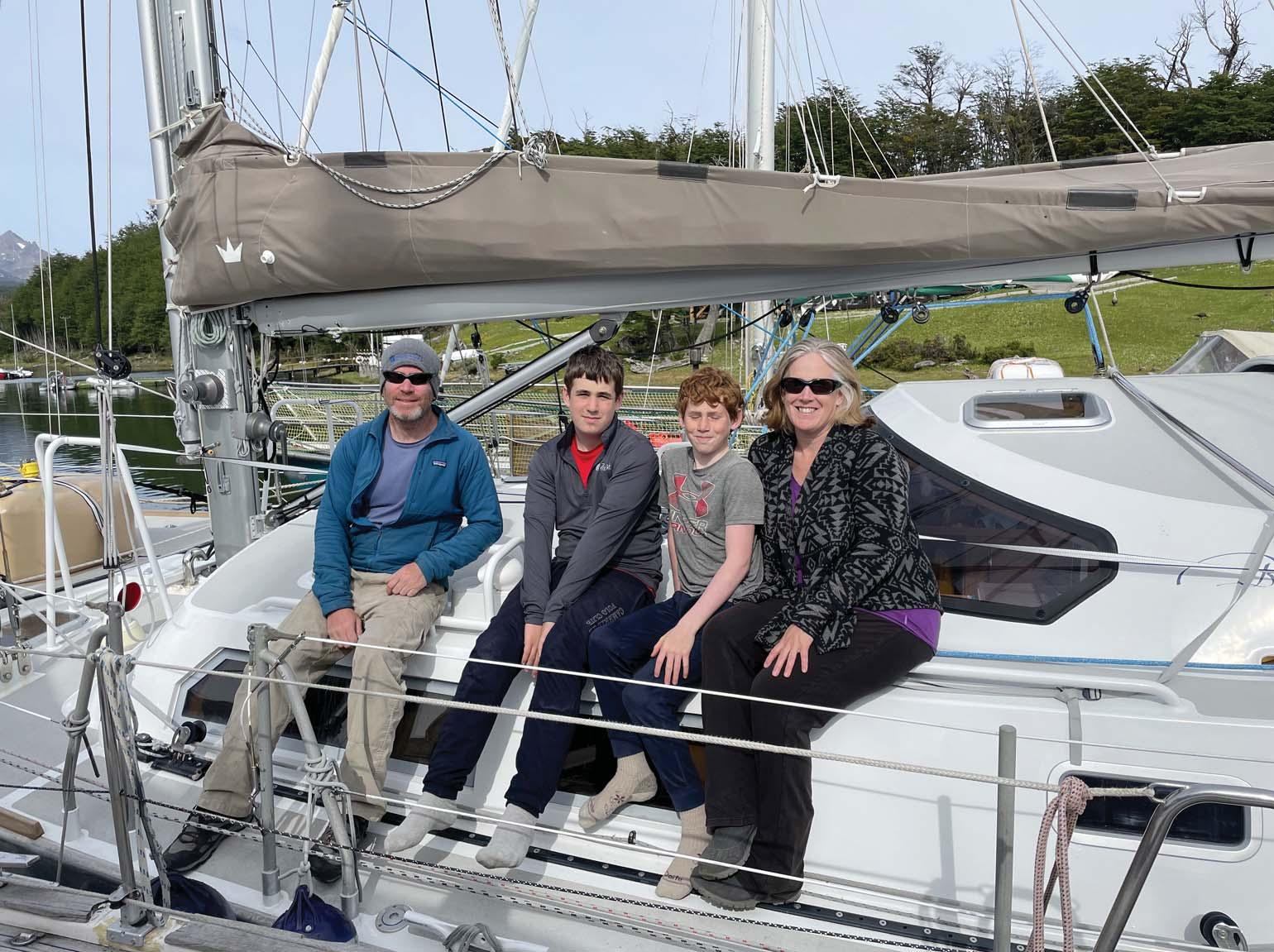
Driven by a desire to explore the world and experience its disappearing wilds, they have often chosen to visit places less travelled. Currently meandering through the Caribbean, they are planning for an eventual push to the northern high latitudes. Follow their travels on their blog Sailing Zephyros at https://www.svzephyros.com/.
As the Schwartz family were unable to fly from the Caribbean to attend the Annual Dinner they asked Ernie Godshalk, Port Officer for Boston, Massachusetts, to read out the words they had prepared:
‘Thank you for allowing us to share a few remarks through the voice of Ernie Godshalk on behalf of the Zephyros crew.
Our dream was to set sail to see the world and learn something together. We never considered being recognized for our adventures. The opportunity to experience so much of the world and travel in the footsteps of explorers and pioneers was the only award we sought, so it was a great surprise to learn we had been unknowingly nominated and recognized with the Barton Cup as a sailing family.
Ronan and Daxton thought it was common and routine for an 11 and a 9 year old to have sailed across the Atlantic after we first did it in December 2018 – after all, so had most of their new friends. Now 15 and 13, they think of exploring Antarctica by yacht as completely normal. Also normal to them are extended bluewater passages and night watches. Watching them grow, explore and stretch their horizons has
been most rewarding. Our challenge as parents is to keep them humble and to teach them to deeply appreciate the special moments we have been lucky enough to experience.
Cruising life has delivered the highest highs and the lowest lows. Nobody accomplishes or gets through these things alone. Along the way we have benefited from the help, counsel and encouragement of so many friends and fellow sailors including a generous handful of sailing legends. We’ve tried to repay the karma and ensure our wake remains clean. As magnificent as cruising has been, the extended separation from loved ones has been difficult and we thank our families and friends back home for their continued understanding and support.

As we have moved forward in our adventures perhaps we haven’t spent enough time reflecting on how we have grown, what we have accomplished, what we have learned from the many challenges along the way and what it all might mean. To us, being awarded the Barton Cup is a reminder to pause and reflect on just those things and to continue to remember to do so. We encourage all OCC members to do the same in their own lives and with their own journeys, whatever paths they find themselves on.’


(Simon and Sally left Scotland in 2015 aboard Shimshal II, their 48ft (14∙6m) cutter, exploring Iceland and Greenland before crossing the Davis Strait to Labrador, Newfoundland and Nova Scotia, where Shimshal was laid up during the pandemic. In September 2021 they were able to relaunch, and in 2022 headed south via Chesapeake Bay and the Florida Keys, where we join them now. Follow their travels at https://voyagesofshimshal.blogspot.pt/p/blog-page.html.)

Shimshal finally ready to sail south from Nova Scotia, having spent three winters in Mahone Bay during Covid
The Straits of Florida are only 90 miles wide but their crossing is a journey back in time and a voyage between two radically different cultures. We raised our anchor in Key West on the last evening of 2022 and picked our way through squadrons of jet skis, party boats throbbing with music and New Year’s Eve revellers. We were heading towards the setting sun with superyachts and schooners silhouetted against the embers in the western sky. Soon we found the breeze, allowing Shimshal to fall into her groove and surge, close-hauled, bound for Cuba.
New Year’s Eve revellers off Key West

For much of 2022 our cruise had been in the shoal waters of the USA and our deep keel an encumbrance, banishing us from many quiet anchorages and the entire length of the Intracoastal Waterway. But now, as we left the partying tumult behind and the continental shelf gave way to deeper oceanic waters, our 7ft 6in (2∙3m) keel came into its own. With apparent winds between 12 and 17 knots we sped into the night. The Gulf Stream did its best to keep us in America but the sailing conditions were perfect and the east-flowing current did little to dent our speed as we pushed southwest under clear skies and a bright half moon.
For more than 20 years we had been in waters too cold for flying fish but now, as the New Year dawned and with the strongest of the Gulf Stream in our wake, we were seeing them once more. By mid-morning the breeze had died and our trusty Yanmar engine brought us to the entrance to Marina Hemingway, about 10 miles west of Havana. As directed by the Waterway Guide*, Sally began calling on VHF from 12 miles out but it wasn’t until the fairway buoy that a polite voice answered her in good English, “Madam, you are very welcome to Cuba and a Happy New Year. Please take care in the channel as some of the buoys have been moved by Hurricane Ian”. The buoys had indeed been slightly shuffled, but the channel was easy to find and we were soon on the customs dock with a throng of uniformed officials lining up to welcome the first cruising boat of the year.
First on board was the doctor to undertake a sanitary and health check which we passed with flying colours. It wasn’t a stringent examination and was done with good humour and without the need to go below or make any kind of inspection. With those papers filled in it was the turn of the border guards, who were keen to record the number of GPSs and bicycles on board. Next the agricultural inspector, who counted our oranges and didn’t see the irony in my dyslexic declaration that we had 5kg of flowers on board. Sally politely and patiently pointed out that I meant flour!
The queue to board dwindled and finally the dock master, a former history professor, came aboard. He spent much of his time apologising for the five identical forms he had to complete, always fearful of making a mistake which would make him lose pay. His forms required 18 of my signatures – the pile of signatures on apparently pointless forms reminded me of the hundreds of thousands of prescriptions I had signed in my professional career, each of which was just as pointless in a paperless age!
As the last official left, Commodore Escrich of the Hemingway International Yacht Club of Cuba arrived with his husky, accompanied by a cluster of dignitaries. We were now allowed ashore to be formally greeted by the Commodore in Spanish via a translator, with a photographer on hand to make sure that everything was proudly documented. We have met many OCC Port Officers and Port Officer Representatives on our voyages, but Commodore Escrich’s sense of ceremony, formality and his sheer presence make him quite unique. We were invited to a formal welcoming reception at the Hemingway International Yacht Club on 4th January.
This involved more speeches, welcomes and presentations, but it was Sally who melted the hearts of the assembled crowd by making her first, and probably her last, public speech in DuoLingo Spanish. Over the previous thousand miles she had spent many of her watches talking to her phone, which hosts a rather brilliant app whose
* Waterway Guide, 2nd edition, Addison Chan, Nigel Calder and others.
artificial intelligence seems to understand her faltering phrases. So too the great and the good of the HIYC, who applauded her brave attempt to mangle their mother tongue!
With the ice broken, conversation flowed and we heard first-hand the life stories that form the backdrop to the north-bound Cuban exodus that had been so evident during our journey through the southern US states – we had seen abandoned Cuban fishing boats all along the Florida Keys. Munching canapés and sipping rum and Coke at the HIYC, a mother told us of her 20-year-old son’s journey to Miami in search of a better life. Food rationing, poverty of opportunity and the State’s firm grip drive the young and the talented to seek their fortunes on the other side of the Florida Strait.

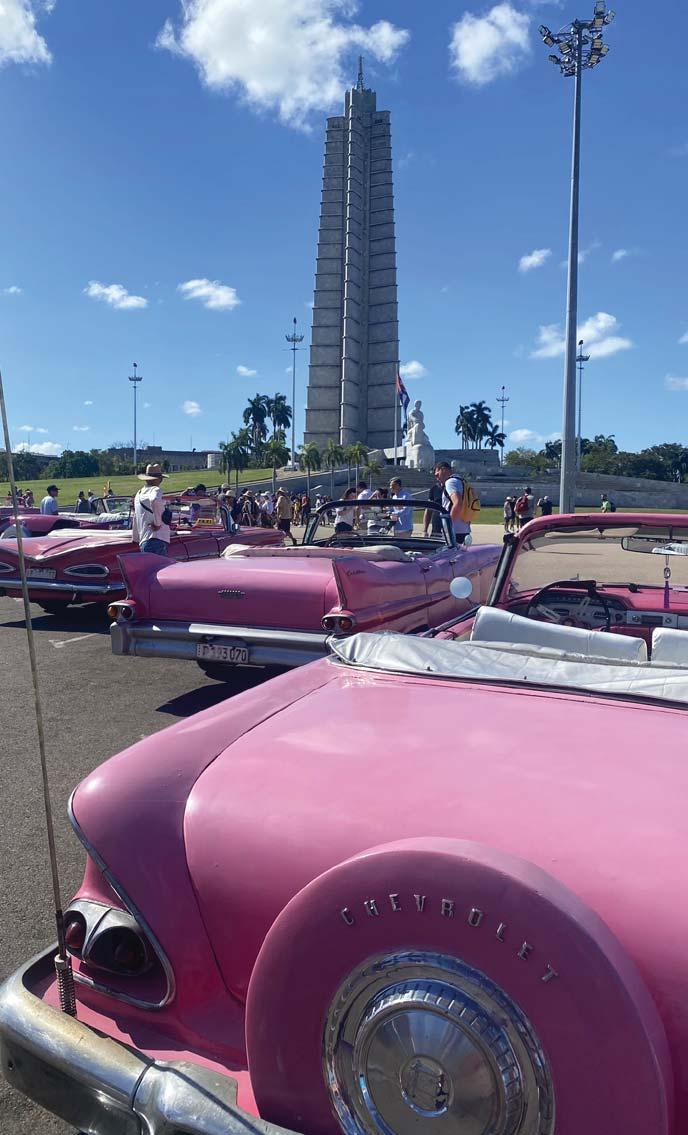
Our month in Cuba was fascinating. A guide took us to Havana, where Castro’s statue in the Plaza de la Revolución gazed incongruously down on lines of pink Cadillacs. Near the Old Port we found the Soviet missiles that sparked the Cuban Missile Crisis 60 years ago. They are disarmed, but still point defiantly at America and are emblematic of the broken relationship between poor Cuba and its giant, prosperous neighbour.
After Havana we abandoned guides and took a trip to Vigñales in search of cooler mountain air and some cycling amongst the limestone cliffs and caves, where we enjoyed darting hummingbirds and circling vultures. It was a perfect antidote to the ocean. The taxi colectivo ride back to Marina Hemingway was in a gem of a car. With three bench seats our gleaming, green, 1952 Chevy could have seated nine but, for our journey, there were just six on board. Our ‘pilot’ for the trip was as flamboyant as his car with a huge gold watch and pendant. Singing, gesticulating and chain-smoking he kept us well entertained whilst occasionally looking at the road ahead. His ancient wheels flew over the potholes with barely a jolt and the big Mercedes diesel engine took us to speeds that the Chevrolet designers would never have intended. A memorable journey!
Our voyage southbound from Nova Scotia had been wonderfully sociable. We often cruised with buddy boats, met great folk along the way and spent our nights in crowded anchorages. As we pressed south most of our posse crossed the Gulf Stream to spend the winter in the Bahamas where, apparently, anchorages can often be crowded. Not Mangrove forest fringes much of the coast in western Cuba
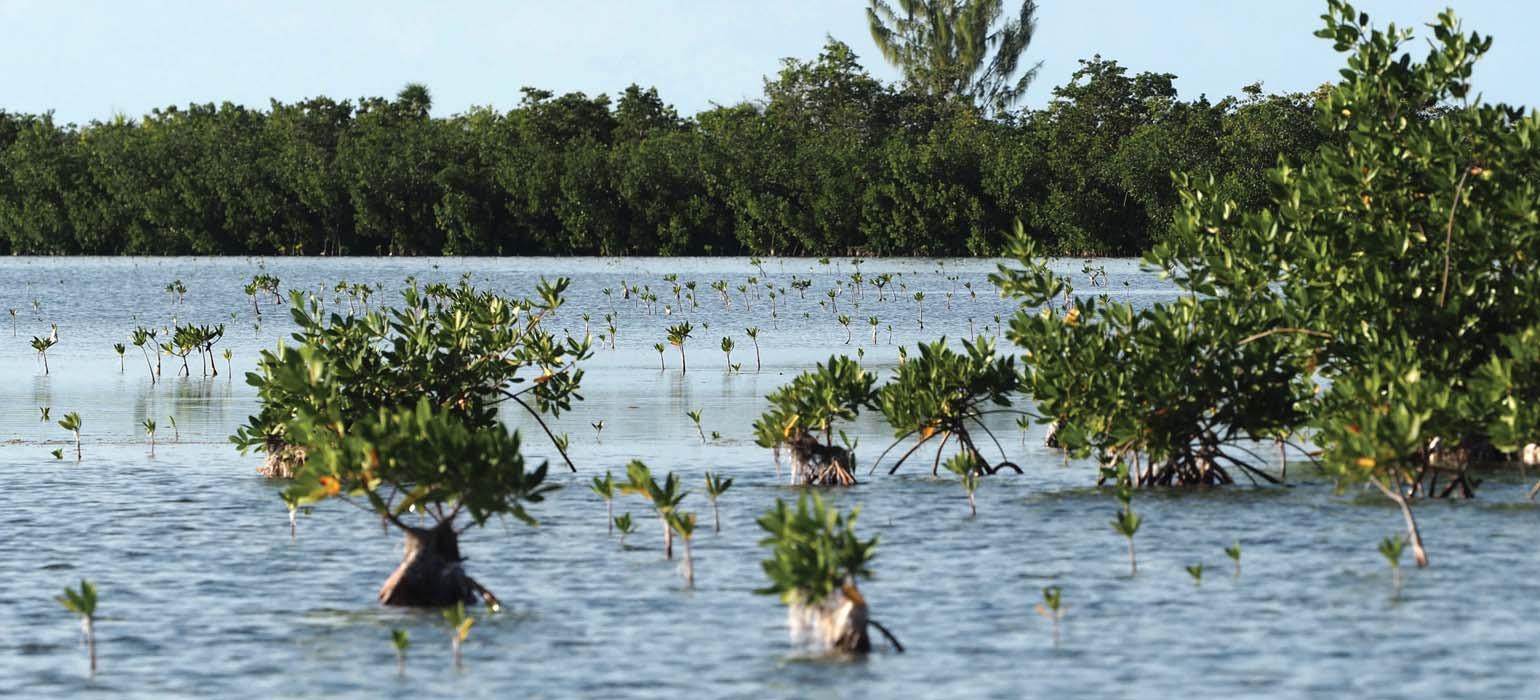
 Vigñales from our anchorage near Cayo Levisa
Vigñales from our anchorage near Cayo Levisa
so in Cuba, where there were very few cruisers following the restrictions placed on US crews in 2017. While we were in Marina Hemingway in January 2023 there was less than a handful of boats. During our anti-clockwise cruise from Havana to Cayo Largo on the south coast we saw no other cruisers. This rugged, remote coast some 360 miles long is fringed with mangroves and coral sand beaches, its crystal-clear water guarded by intricate reefs and islands. It is a perfect and beautiful cruising ground. The few folk we saw were fishermen who spent their days free-diving for lobsters and who happily traded their catch for cash or commodities.

We slipped into the nearly empty marina at Cayo Largo and, once again, were greeted by officials and dignitaries on the pontoon who live-streamed our docking on Facebook. Thank goodness our arrival was not as catastrophic as it had been a few months earlier in Norfolk, VA when a lapse of concentration put us aground in front
 Cayo Largo Marina
Cayo Largo Marina
Shimshal reefed down for the night on passage between Cuba and Grand Cayman. Photo Jonas, SY Jollity

of the dock belonging to the newly appointed Regional Rear Commodores for South East USA! Pire, the urbane Cayo Largo dock master, gave us a very warm welcome. He had been Fidel Castro’s translator in an earlier life and has been helping cruisers on Cuba’s south coast for decades. He readily accepted my invitation to become an OCC Port Officer Representative and his new OCC PO flag hangs above his desk next to a picture of Pire and his former employer – Fidel Castro. Welcome to the OCC, Professor Pire El Cid!
The humour and spirit of Cubans was a most notable feature of our stay on this huge and fascinating island. Every day they cope with food shortages, rationing, a nepotistic and controlling State, ostracism from much of the developed world and a monolithic bureaucracy. They rejoice in their great education system and their health system and yet smile at the irony of having many excellent, homegrown doctors and nurses but empty pharmacies thanks to sanctions. They crave the return of tourism to their shores, having glimpsed the prosperity it brought when tourism briefly flourished a decade ago. Hopefully the sanctions and restrictions on travel will one day be lifted and the wonderful, proud Cubans that we met will prosper. The OCC has great connections in Cuba, with three superb Port Officers in Varadero, Marina Hemingway and Cayo Largo. OCC friends also connected us to Yoni and Addonis Perez, who work out of Shimshal moored off the cemetery at Georgetown, Grand Cayman
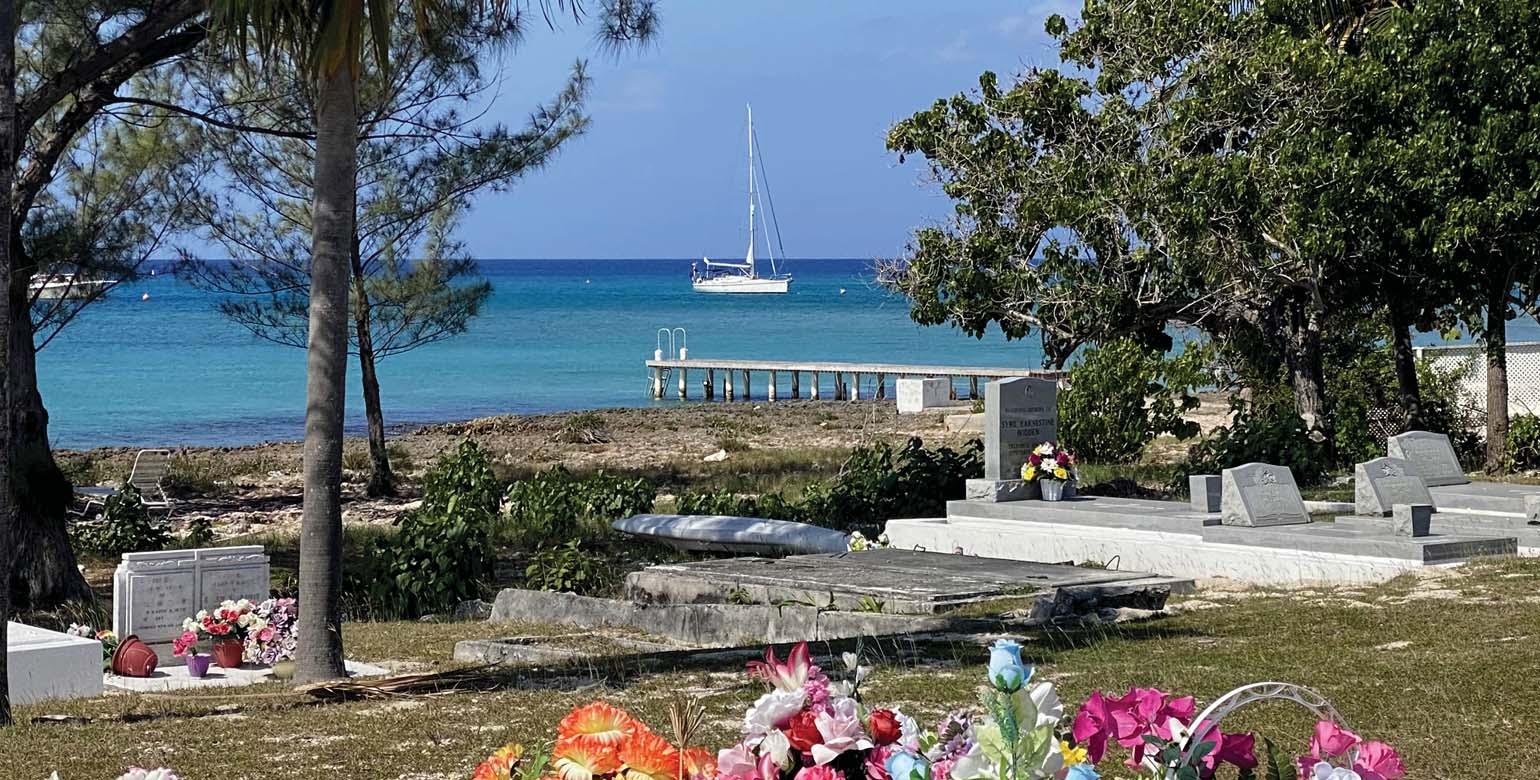
Marina Hemingway and can’t do enough for visiting cruisers. Their details are on our Cruising Information Map so don’t hesitate to contact them before you head for Cuba. Please take your boats to Cuba and spend your dollars there!
The brisk 140-mile trade-wind reach from Cayo Largo to the Cayman Islands went quickly. A harbour launch escorted us to the customs quay and, after checking in, took us to a free mooring where we spent a happy week or two snorkelling in the gin-clear waters, exploring Grand Cayman and being royally entertained by friends of friends ashore. Within minutes of rigging our mooring bridle the OCC crew of Blue Mist wandered over to say hello and welcome. We had low expectations of Grand Cayman, having previously only associated it with offshore banking and tax avoidance, but the warmth of our welcome, the astonishing underwater life and the supermarkets brimming with fresh produce endeared these islands to us. Another high point of our Cayman visit was the moment when I re-engineered our watermaker and wonderful, fresh water started flowing into our tanks, thus ending the 10 litres a day limit we had imposed on ourselves since leaving Marina Hemingway.
360 miles due south of Grand Cayman is the tiny, mountainous Isla de Providencia. The summit of a volcanic seamount, this gorgeous, jungle-clad tropical paradise fringed by coral is a distant outpost of Colombia. It should have been a relaxing reach, but the seas were high and we had a few mechanical and electronic problems to contend with. The tiller arm connecting our autopilot’s linear drive to the rudder quadrant failed and, soon after, the backlight on our ancient Raymarine plotter gave up the ghost, turning the screen black and unreadable. It did us good to sail the boat as she was meant to be
A rough and squally passage to Isla de Providencia without autohelm

sailed instead of relying on pushing buttons and gazing at screens. We fixed our gaze on the Southern Cross and kept the compass pointing south, hand-steering on two-hour watches. We enjoyed it so much that we kept sailing the same way on the final leg to Panama, despite having made some temporary fixes in Providencia.
We had sailed to Providencia because it has a mountain which offered the opportunity to stretch Sally’s legs and slake her thirst for summits. She was not disappointed and the highlight of our visit was the day we spent hiking with Bernardo, our incredibly knowledgeable guide. It took us ages to reach the top as every tree, orchid and shrub had a story or a medicinal use and those stories had to be told. It was late morning before we reached the summit and gazed out at the surf breaking on the barrier reef, the patchwork of emerald, blue and brown seas, the steep, jungle-clad slopes and a few yachts in the anchorage near Shimshal being buffeted by the strong trade winds.

To check into Providencia it is mandatory to use an agent. We chose Mr Bush, whose office has a balcony with a fine view and a cooling breeze. He sat us down to enjoy the shade while he marshalled the various officials required to check us in and out. All came to us and the process was conducted efficiently and enjoyably with a little help from WhatsApp. Mr Bush had been on the island in 2020 when Hurricane Ioto had torn into it, destroying 95% of the houses and damaging the tiny airport. Three years later the island was still full of Colombian contractors busily rebuilding houses, the airport and the infrastructure, a process paid for by faraway Bogotá. Every local we met told us the story of when the Category 5 came their way, bringing terror and leaving ruin in its wake.
The trade winds had been blowing hard throughout January and February and every morning Chris Parker’s weather report spoke of high seas in the Western Caribbean. We were tempted to stay on in Providencia and await quieter conditions, but we spotted a brief window long enough to get us to Bocas del Toro in slightly milder conditions. As it turned out, our passage was benign and the sea state far more comfortable than forecast. We hand-steered all the way once again and enjoyed the starry, moonless nights, the warm wind and the deep pass between breaking surf to enter the sheltered waters of Bocas del Toro, Panama.
Shimshal at anchor at Isla de ProvidenciaA different set of procedures surrounded our Panamanian entrance, but we were soon ashore and enjoying the vibrant town with its colourful waterfront and exquisite cafés. Bocas has a multitude of ferreterías (hardware stores) and many of our early days there were spent combing them for those bits that only cruisers need ... new sanitation hose to make the heads work better, after spending a day sweating in Providencia trying to rod a calcium-caked, foul-smelling pipe ... bigger wrenches to remove the errant tiller arm ... a dehumidifier to keep the mould at bay while we head back to Europe for the summer ... cockroach killer just in case one crawls onboard. After a week anchored off the town we moved into our final berth for this season at the lovely Red Frog Marina on Isla Bastimentos. Our plan was to lay Shimshal up there for the hurricane season and return to Europe to avoid the worst of the rain, heat and humidity. Pierre, an ex-cruiser who now lives ashore, will be caring for her in our absence and divers will scrub the hull every three months. Pierre tells us that the most common unwanted boat visitors in the marina are boa constrictor

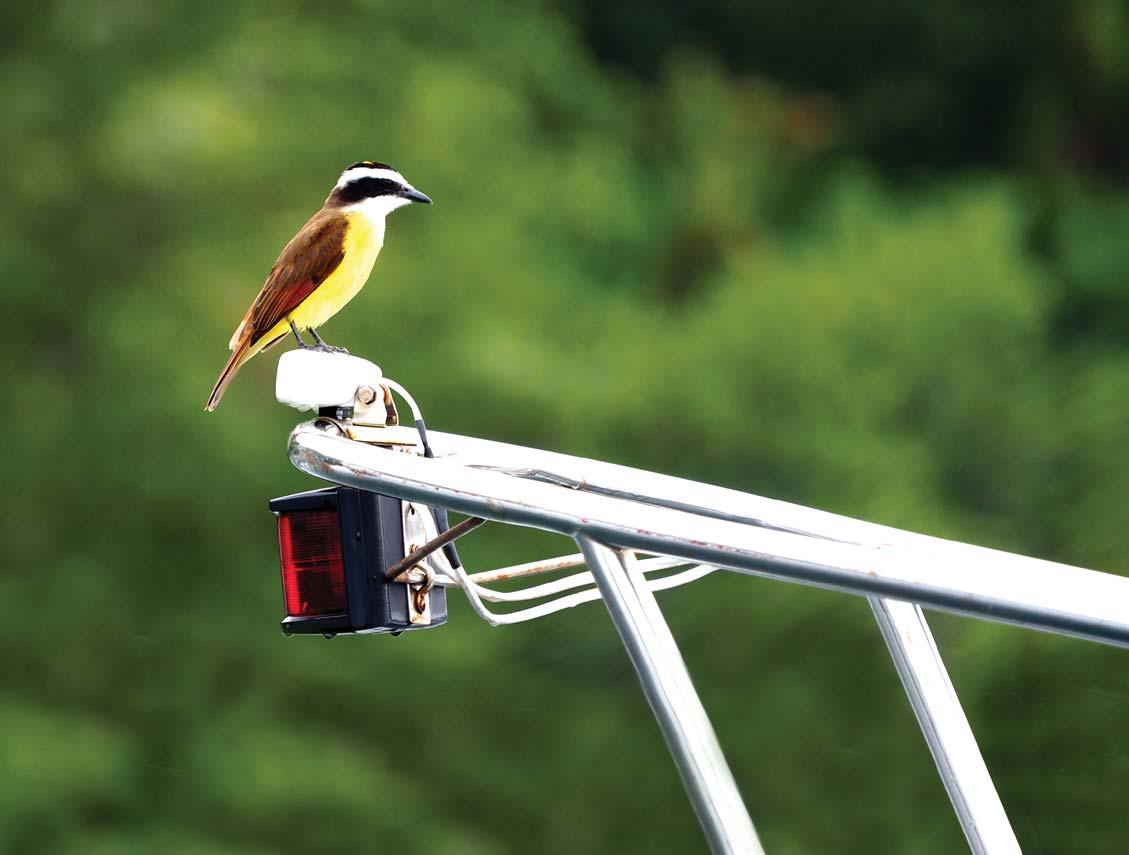 A great kiskadee in the Red Frog Marina
Bocas del Toro’s southern anchorage
A great kiskadee in the Red Frog Marina
Bocas del Toro’s southern anchorage
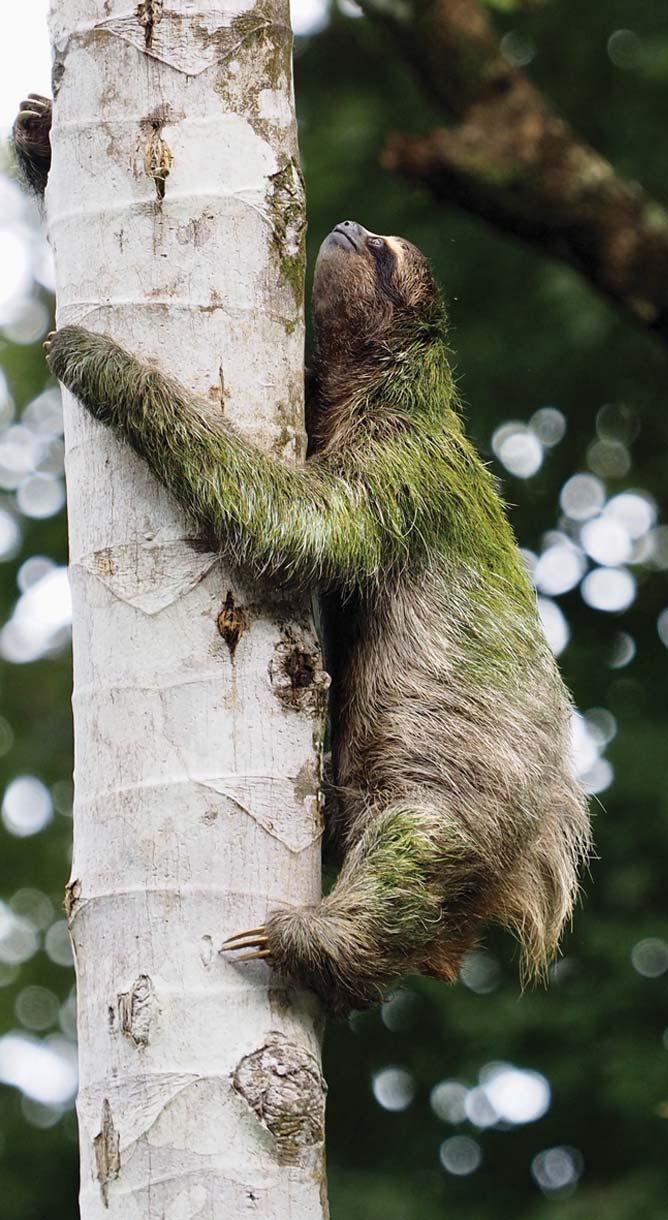
snakes, and we know of one couple who had to deal with a massive serpent emerging from their boom when offshore. With so much sun, rain, heat and humidity it’s a hostile place to leave a boat, but the marina is safe from hurricanes and crime so we are comfortable leaving her until the northern winter.
Isla Bastimentos is another tropical gem, with native jungle and a rich population of exotic fauna. On our way to the café every morning we glimpsed the three-toed sloths ever-so-slowly munching their way through the leafy canopy, the diminutive and highly poisonous red frogs whose toxins were used by the native Indians to poison their darts and the capuchin monkeys scavenging for handouts. A short walk across the island to the Caribbean coast took us to a fine surfing beach but hungry looking caimans (a close relative of the alligator) lurk in the muddy waters of the lagoon.

With Shimshal’s lay-up work nearly complete we took a complicated journey to the cloud forest on the Panama/Costa Rica border. The journey involved a couple of high-speed (35 knot) water taxis, a four-hour road trip to the town of David near Panama’s Pacific coast, a bus up to Volcán and then a tortuous 4x4 track that wound up through the rainforest into ever-denser cloud. I had wanted to hire a 4x4 and make the journey under our own steam but Sally, who is always more sensible, opted for a Hilux driven by someone who knew both the way and what he was doing. A wise decision as it turned out, as the dry season came to an end the minute we left Volcán.
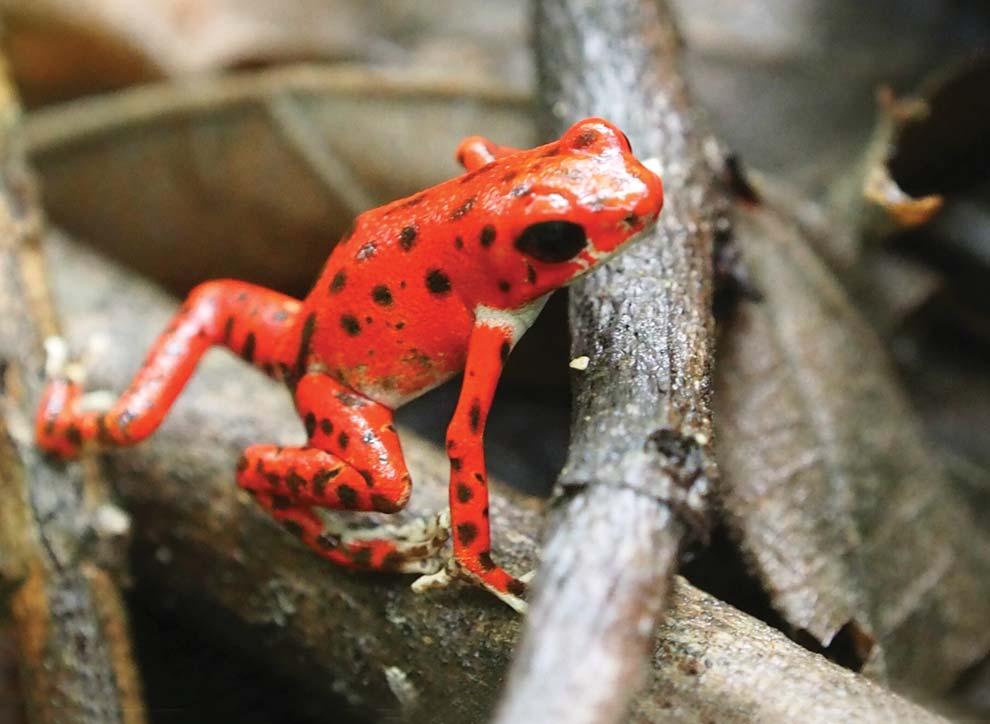 The diminutive red frogs give the marina its name
The diminutive red frogs give the marina its name
The way grew greasier and steeper as we bounced up a narrow, rough track with river crossings and precipitous drop-offs. At first it was like a wet weekend in Wales with thin mist, dripping moss-covered trees and gentle drizzle. Later, as we neared Mount Totumas at an altitude of 1900m, it was more like Mordor with rain pelting down and the early afternoon light more like dusk. Karin met us with umbrellas and escorted us to our treehouse in the cool cloud-forest canopy, where a hummingbird darted across our balcony and, despite the rain hammering on our tin roof, we were surrounded by the exotic noises of jungle birds. We spent the next few days wandering the mountain tracks, before heading back to Bocas and fitting Shimshal’s protective cover for the rest of the rainy season.

 A howler monkey near Boca Chica
Isla Bastimentos’s Caribbean coast
A howler monkey near Boca Chica
Isla Bastimentos’s Caribbean coast
A male resplendent quetzal – only 25,000 pairs are left in the world

Cruising is all about contrasts. The frustration of breakages, the toil of maintenance in hot and sweaty exotic places, the thrill of a landfall, exploring new lands, meeting new friends and the pure pleasure of a well-balanced sailing boat surging through the waves on a starry tropical night. Our journey from the Canadian Maritimes to Panama in 2022/23 was full of contrasts in abundance – great company, spectacular cities and scenery, fun sailing, technical challenges and memorable gatherings. It’s those varied and intense experiences that transform a journey into an adventure and make memories that last a lifetime.
As part of my personal war against American-style single-use, shrinkwrap plastic covers I’m pleased to point out that this cover has protected our boat for eight years now and is still going strong. It’s made from Weathermax, a lightweight, strong, breathable, waterproof, uv-stable fabric. In Greenland it accumulated 70cm of snow and ice and in Iceland it survived winds that blew away a house! I hope it does the trick during the equatorial rainy season.
Shimshal snug under her ‘winter’ cover for the remainder of the rainy season





£585,000 Portugal
British yacht building in 1972 by SOS to never out of style designs by Van de Stadt, she is a machine for crossing oceans. Nautical makeover in the UK in 1998, immaculately maintained and perfect for adventure sailing.
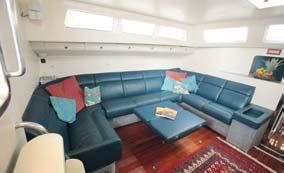

€1,650,000 + VAT Canaries
2014 splash from Dykstra and K&M for high and low latitude sailing. She has also proved herself to be perfect in the Tropics. Variable draft, pilothouse, and massively well sorted for short-handed long distance sailing.

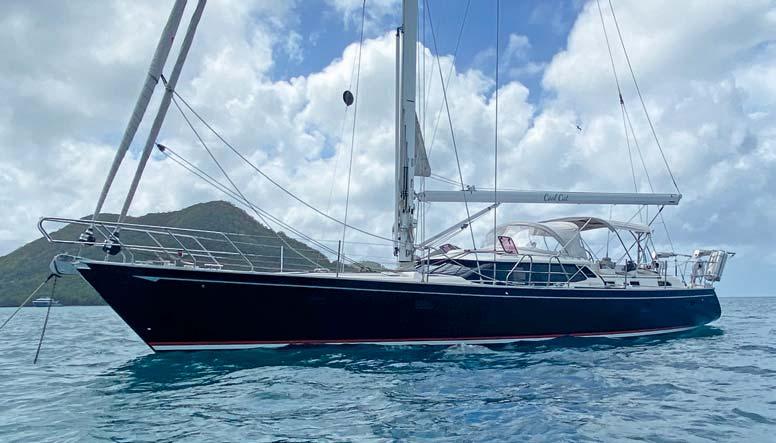


€1,200,000 Palma de Mallorca
She emerged from the shell in 2009 and comes with an automated rig, recent standing rigging, epic satin teak interior and she is in truly sparkling condition. Her blue water caboodle list is very long and used but sparingly.
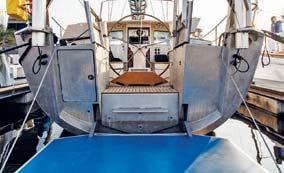
€675,000 Caribbean
Splashed 2012 she is #41 of this benchmark blue water cruising sisterhood by whom all others are judged. Proper deck saloon, interior watch keeping and lovely Holland lines. Nautical makeover in 2019.
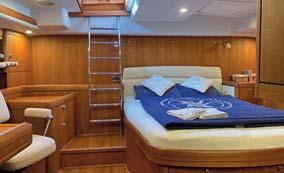
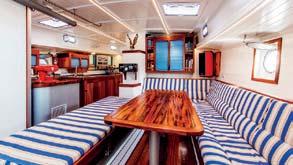
Your best crew member - steers 24/7 with no complaint! Full access to your cockpit with main wheel / tiller fixed No problem to install off center - keep your davits or platform Have confidence in case of main steering or rudder failure

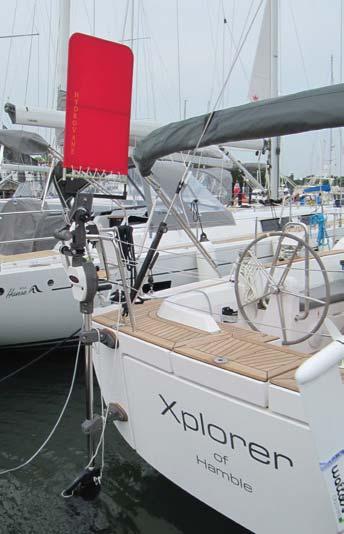
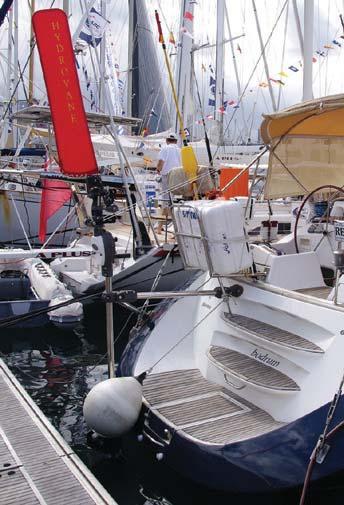


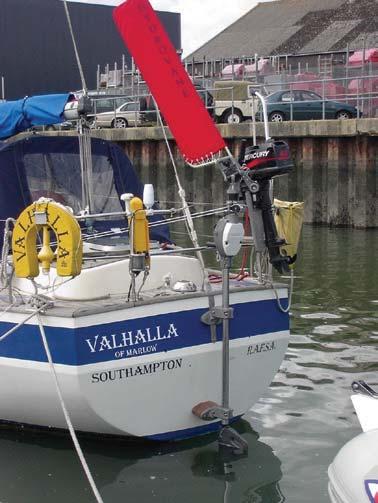
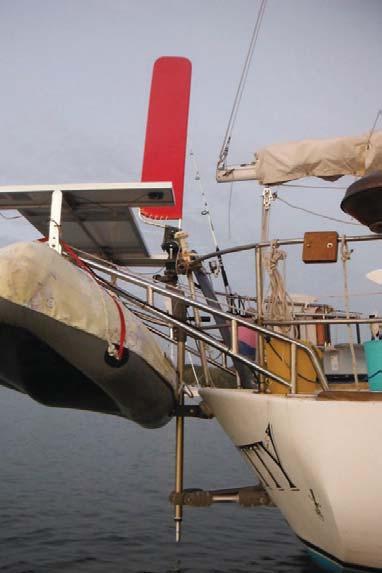


(The following account first appeared in the US magazine Yachting for June 1969, and was reprinted in Flying Fish 1969/2 though not including the footnotes on pages 52 and 54. As with previous From the Archives pieces the grammar has been left largely unchanged. Fred Slavic was a New Yorker with an address on 5th Avenue.
I would particularly like to thank John Maddox, himself a member since 1968, both for bringing this gripping account to my attention and for generously donating his collection of early Flying Fish to the OCC Archives.)
Under reefed main and working jib Nightingale heeled down and drove through the water. The wind was close on the starboard bow and we were crossing the Bay of Biscay on our way from England to Spain. Clouds kept passing over us, each with an accompanying squall that forced us to run off or be laid over. Aside from our desire to make a fast passage, and Rosalind’s passion for driving a boat, there was a special urgency in our wild ride south on this squally morning. We had just spent a day and a night hove-to in a gale, and the forecast now called for another more severe one to the north.
There were four of us on board, Brian and Zella Kelley, who had come down from Dundee to join us at Lymington, my wife Rosalind, and myself. Nightingale is a 44ft Sparkman and Stephens yawl which we had sailed four years before from New York to Scotland, and on which Rosalind and I had been cruising the coast and canals of Northern Europe each summer since. We were now on the first step towards the trade winds passage home.
The forecast turned out to be wrong, and our hard drive southward took us toward the next gale rather than away from it. The glass began to fall rapidly and the squalls became more frequent and more severe. We lowered the main, replaced the storm jib which had been stowed only that morning, and came about to put as much distance as possible between us and the land, as we had by now sighted the mountainous coast of Spain about 30 miles off. By 1600 the wind had become force 8 and we hove to again under storm jib and mizzen, backing the jib and lashing the helm down. As before, the difference in motion was dramatic, seeming, in the cabin, almost as if we had entered a harbour, although a glance out the portholes quickly dispelled this notion. Zella put the situation very well with typical British understatement: “She’s riding like a duck, and those seas outside are simply beastly”.
The boat secured, Brian and Zella, who were on watch, came below to join us and we settled down to another vigil. With plenty of sea room, a sound boat, and a reasonably dry cabin, there is a certain snugness in a boat riding out a gale. It is like being on a tiny planet in a howling universe which by some miracle is held at bay while one eats, sleeps, or putters around with chores. On the other hand, the noise, the motion, and the knowledge that the name of the game is survival, prevent complete relaxation. Having nothing better to do I went out into the cockpit and took 16mm moving pictures of the commotion. The wind was now blowing at force 9 and I quote
Beaufort’s description: ‘High waves. Dense streaks of foam along the direction of the wind. Sea begins to roll. Spray may affect visibility’. At about 2130, just after dark, I looked out again. The roar of the wind had risen an octave or two and the main halyard was slatting furiously against the mast. The seas had taken on the whitish appearance of force 10, and the air was thick with spray which produced a steady hissing barely audible in the general noise. The seas were by now moving with frightening speed and, while the boat was riding them easily, the thought crossed my mind that if one were to hit us at that speed the results might not be pleasant.
I went below to check the barometer and found it still falling. Rosalind, lying on her bunk on the port side of the main cabin, asked how things were going and I told her that the wind was getting worse, but that we were in no trouble. Brian and Zella were asleep in the forward cabin. We were hove-to on the port tack and heeling only moderately to starboard. Our ears had become accustomed to the noise and in the dark cabin things seemed relatively peaceful.
Suddenly, with a thunderous roar, a wave crashed down on top of the cabin, forcing solid water through the sealed and canvas-covered skylight, and laying the boat over to starboard. Before she could recover another tremendous impact sent a column of water through the skylight while the boat went down and over and the dark cabin became darker still as tons of water passed over us. I saw, or rather sensed, something fly past me and, realising it was Rosalind, tried unsuccessfully to stop her. She struck her head with a sickening crunch against the chart box above the opposite bunk, while at the same instant every loose thing in the cabin flew through the air and landed with a deafening clatter. The boat seemed borne down by an irresistible force, but as she went over she stiffened, stopped, and then quickly fought her way upright again. Rosalind fell down onto the bunk with a little moan, and in the returning half-light I saw blood running from a deep cut on her head. At the same time the floor hatch in the galley seemed to explode upward and a geyser of water gushed up out of the bilge. It seemed at that moment that the end of the world had come. Knowing that Rosalind needed attention, but also knowing that I first had to see if the boat was intact, I left her and rushed up on deck.
The scene on deck was as improbable as the one below. The lifeline stanchions on both sides of the cockpit were bent inwards, and the shredded weathercloths* were streaming off in the wind. The mizzen was loose and flapping violently against the shrouds, while the two life ring lights were hanging, one in the water and one in the cockpit, flashing eerily in the darkness. The lights of a freighter, fairly close and to windward, showed dimly through the spray, but I paid no attention to it at the time. Looking forward I saw that the fibreglass dinghy was stove-in and fractured on the windward side, and torn partly loose. The forward windward lifeline stanchions were bent, as was the pulpit. The snap shackles on the storm jib had all broken loose except at the head and tack. Aside from this there seemed to be no damage to the hull, superstructure, or rig, even the skylight being intact in spite of all the water that had been forced through it.
Relieved to find no structural damage but expecting another sea to board us at any moment, I quickly secured the dinghy and looked below to see how Rosalind was. She was standing near the entrance hatch, her head and one side of her face covered
* ‘Dodgers’ to British sailors.
with blood, but apparently no longer bleeding. Satisfied that she was all right for the moment, I returned my attention to the deck.
Brian and Zella, as mentioned before, had been asleep in the forward cabin when the crunch came. Brian on the port side went over his bunkboard, through a narrow space between two uprights, through a similar space on the starboard side, and landed on Zella, all in almost pitch darkness. He disentangled himself, got oilskins on, and came up on deck just after I had finished with the dinghy and was checking on Rosalind, and after a quick look around, started forward to lower the jib, calling out to me to handle the sheet. I had been eyeing the foredeck with increasing distaste, but not wanting to be outdone by my crew, asserted my authority and told him to take the sheet while I went forward. Getting there was a matter of climbing horizontally hand over hand along the battered liferails, releasing the halyard, and then scrambling for the shelter of the pulpit before pulling down the sail against a wind that would not let it go. Some early weight lifting training proved useful here and a few energetic tugs got the thing started, after which it slowly came down. Securing it to the pulpit I noticed for the first time that the pulpit had not only bent, but had been torn loose on the port side. I had attached my lifeline to it and if a sea had come aboard at that moment I would in all probability have taken the pulpit overboard with me.
Brian meanwhile got the mizzen down and we put a lashing on the boom. We put the life ring lights back in their brackets and stopped the unearthly flashing. There seemed nothing more to be done on deck. Before going below I suddenly remembered the freighter. She seemed closer now, but barely moving and apparently hove-to just as we were. It is possible, though not likely, that she saw the flashing lights, mistook them for a distress signal, and was standing by to offer assistance, but since we made no attempt to contact her we cannot tell. I thought of asking her to take Rosalind off, but another look at those seas put an end to that idea.
We went below to find Rosalind and Zella pumping the bilge in the darkness. Rosalind, dazed, bleeding and alone in the cabin, had realised that the water was almost over the floorboards, and when I looked in on her I did not know that she was preparing to pump the bilge. The various drain hoses around the pump had gone adrift and she was struggling to get the heavy pump handle past them and into its socket under the galley floor when Zella, also dazed from Brian’s landing on top of her, emerged from the forepeak and started up on deck to lend a hand. Rosalind suggested that a woman’s place at that moment was in the galley, and the two of them had managed to get the bilge pumped dry by the time we came below. It hadn’t occurred to anyone that the lights might be working, but we tried the switch and the lights went on, restoring a sense of normalcy to an otherwise chaotic scene. Books, bedding, cans and floorboards were strewn about the cabin, and everything was soaking. While the Kelleys took on the Herculean task of clearing up the cabin, I gave Rosalind some belated first aid and found dry clothes for her as she had been thoroughly drenched when the water came through the skylight.
Nightingale rode easily for the rest of the night, even though she was now under bare poles, and we all slept fitfully in our oilskins. The gale continued all the next day while we kept turning up boullion cubes, tea bags, sodden books and inside ballast in odd places. The drawers and lockers had all remained closed, so there was remarkably little mess, although the contents of those on the starboard side were soaked. The things which did come adrift were mostly books and galley equipment which, though well-
stowed, were not proof against a boat on her way to turning upside down. By nightfall we had repaired the mizzen sheet and jib, tidied the cockpit, and gotten the boat ready to go as soon as the wind abated. At 0157 we were awakened by the sound of rock ‘n’ roll music as Brian switched on the radio to get the BBC marine forecast. For the first time in a week it mentioned no gales except one in the Viking area of the North Sea. The wind had come down to a force 5 although a considerable sea was still running, and so we donned our oilskins and lifebelts, went out into the night, and set sail for Spain. We passed Cape Finisterre about midnight that night, and late the following morning we turned and sailed in among some islands and unmarked reefs, continued up a narrow bay, and entered the harbor of Vigo. We found the yacht club dock and tied up while the local fishermen took our lines and stared at our bent stanchions and tattered weathercloths, and at Rosalind who, with bandaged head, was steering us in. We were welcomed by Señor Fernando Solano, the local port captain of the Little Ship Club, who arranged hotel accommodation and found a doctor for Rosalind. Her injuries proved not to be serious, and we all went out to a fine Spanish dinner where the festivity retained some solemn undertones of thanksgiving.
While few American yachts have sailed across the Bay of Biscay, it has been done by many British yachts, and the point of this story is our rolldown, its probable cause, and results. To the best of my admittedly limited knowledge, there are about a dozen cases on record in which boats have been rolled down or completely over and survived. I use the term “rolldown” as against “knockdown” to designate an extreme layover caused by sea rather than wind, during which the sea actually passes over the boat. Sir Francis Chichester describes such an experience in the Tasman Sea during his famous voyage*. A caper like this usually removes the mast and/or part of the cabin, and the most remarkable part of our own experience was the complete lack of damage to the hull or rig despite the force of an impact which bent in stanchions made of 1⅛ th inch diameter monel pipe, bent and tore loose a pulpit welded from the same material, bashed in and fractured a fibreglass dinghy, and pulled apart five bronze jib hanks, each of which had a breaking strength of 1000lbs. Nightingale was built 12 years ago of glued strip-planked construction, by two skilled boatbuilders under my supervision. Aside from her proven strength and seaworthiness, the boat is fast and has done well in races. She is a keel boat with 6ft draft.
Using Rosalind’s and Brian’s trajectories as guides, and those of other objects whose paths we were able to trace, we reasoned that the boat must have gone down at the bow about 20°, and over to starboard about to the horizontal, and in addition was given a mighty shove sideways which threw everything in the cabin towards the overhead before falling downwards across the cabin. We were puzzled for some time by the geyser of water which gushed up out of the bilge at the moment that the boat righted herself, until we realised that the considerable volume of water which came through the skylight (and landed on Rosalind as she fell across the cabin), would have lain on the starboard side of the boat until she righted herself, whereupon it rushed into the bilge and gushed up as soon as it reached the lowest point.
* Two years previously, in 1966/67, Sir Francis Chichester had achieved the first singlehanded west-to-east circumnavigation with a single stop in Sydney.
Since in this, as in previous gales, Nightingale behaved not only in seaworthy but in sea-kindly fashion, riding easily and taking an occasional breaking wave in her stride, and since immediately after the accident she rode as quietly as before, the question arises as to what happened during those hectic few seconds to upset the pattern. It might have been some sort of freakishly large or ‘rogue’ wave running out of time with the rest, which by some improbable chance broke just as it reached us. This is a distinct possibility, but there is another theory which I think more likely. In previous gales when we had found it necessary to heave to we had lain under bare poles or under storm jib and trysail. On this trip for the first time we tried using the mizzen instead of the trysail and found it not only easier but better, as it held the boat higher in the wind. The mizzen sheet, blocks, and fittings were all stout and seemingly adequate, but we noticed later, when projecting the motion pictures which I had taken, that there was quite a bit of motion between the mizzen sheet block and its fitting. This suggests that the fitting let go not from the sea, but from a combination of metal fatigue and wind pressure. It must have broken just after I went below to check the barometer. In the general bedlam we did not notice any difference in motion as the boat paid off and began to sail across the wind with no one at the helm. No longer riding with the sea, she soon plunged her bow into a wave which stopped her dead just as a big fellow came along and broke right over us. The second wave must have been almost as high as the spreaders when it hit, and here is the most remarkable part of the sequence, because as it passed over us it broke the snap shackles off the jib, spilling most of the wind when the boat came upright and allowing her to come back into the wind. This was fortunate, as otherwise it would have been most difficult to get that jib down with the boat being swept repeatedly by seas.
It should be noted that if the mishap was caused by the failure of one fitting, we were saved from further disaster by the failure of another. This brings to mind the interesting point that some of the old sailing ships with hemp rigging were safer than later ones with steel rigging. I should mention that while Rosalind and I have seen some nasty seas on both sides of the Atlantic, the only time I remember one like that was when, as an 18-year-old ordinary seaman, I rode out the end of a West Indian hurricane on the deck of a freighter. That was a good long time ago, and as I remember it, the old ship made more fuss about it than Nightingale did.
Many yachtsmen have had experience with winds of 60 mph or more, but a wind of this strength in a harbour or sheltered bay, or even out at sea in a squall lasting a few hours, is nothing like a sustained gale with a long fetch that lets the seas build up to their proper height for the wind. The fact is that few yachtsmen have experienced the kind of sea that even a force 7 can build up, and would find, as we do, that the sea in conditions of force 8, 9 and 10 is a phenomenon not easily forgotten. In these conditions it is not the wind but the sea which threatens the boat, and it is here that the quality of a boat shows itself and becomes of supreme importance to the well-being of her occupants.
Since each of the four of us had at least 20 years of sailing experience, including North Atlantic and North Sea passages, and since the boat was well found and proven, it must be assumed that such a mishap could occur to anyone, and it has in fact happened to others, some of them more experienced and expert than we. Without in any way wishing to discourage anyone from the incomparable satisfaction of taking a small boat to sea, I should like to make the point that the most meticulous care and
planning cannot always prevent an accident, and so one must anticipate the possibility, however remote, of a situation in which one’s survival depends purely and simply on the boat’s ability to hang together.
Editor’s note: It may be worth reminding those new to ocean sailing that, although EPIRBs with a location accuracy of around 12 miles had been available to military and commercial aircraft for several decades, until the 1980s very few yachts were equipped with them. Some carried HF radios, but most had no means of calling for assistance beyond visual or VHF range. Basically, if things went seriously wrong you were on your own.
• 4 large egg whites
• 9 oz (250g) caster sugar with a little extra for sprinkling
• 1 tsp cornflour
• 1 tsp white wine vinegar
• ½ pint double cream
• 4 tbs good quality raspberry jam or raspberry coulis
• 8 oz (230g) raspberries
Preheat the oven to 190°C or fan 170°C (Gas Mk 4/5). Line a 13 x 9 in (33 x 23cm) Swiss roll or roasting tin with nonstick baking parchment, snipping diagonally into the corners of the paper, then pressing into the tin so the base and sides are lined.
Whisk egg whites in a large bowl to stiff peaks (test by tipping bowl upside down without egg whites moving). Gradually whisk in the sugar a teaspoonful at a time and continue to whisk for a minute or two until thick. Mix the cornflour and vinegar together and fold into the meringue mixture. Spoon the meringue onto the lined tin, smoothing gently into an even layer. Bake for 10 minutes until well risen and just beginning to colour, then reduce heat to 160°C / 140°C (Gas Mk 2) and cook for 5 minutes or until just firm to the touch and beginning to crack.
Put a cloth on a work surface, cover with a sheet of nonstick baking paper and sprinkle with a little caster sugar. Turn the hot meringue on to the paper, remove the tin and leave to cool for 1–2 hours.
To finish it off, peel away the lining paper, whip the cream into soft swirls and spoon over the meringue. Gently spoon the jam or coulis on top and sprinkle with raspberries. Roll it up, using the baking parchment and teacloth to help. Transfer carefully to a serving plate and remove paper and teacloth. Serve cut into thick slices with extra berries and grated white chocolate for decoration (I use a vegetable peeler to create chocolate curls).
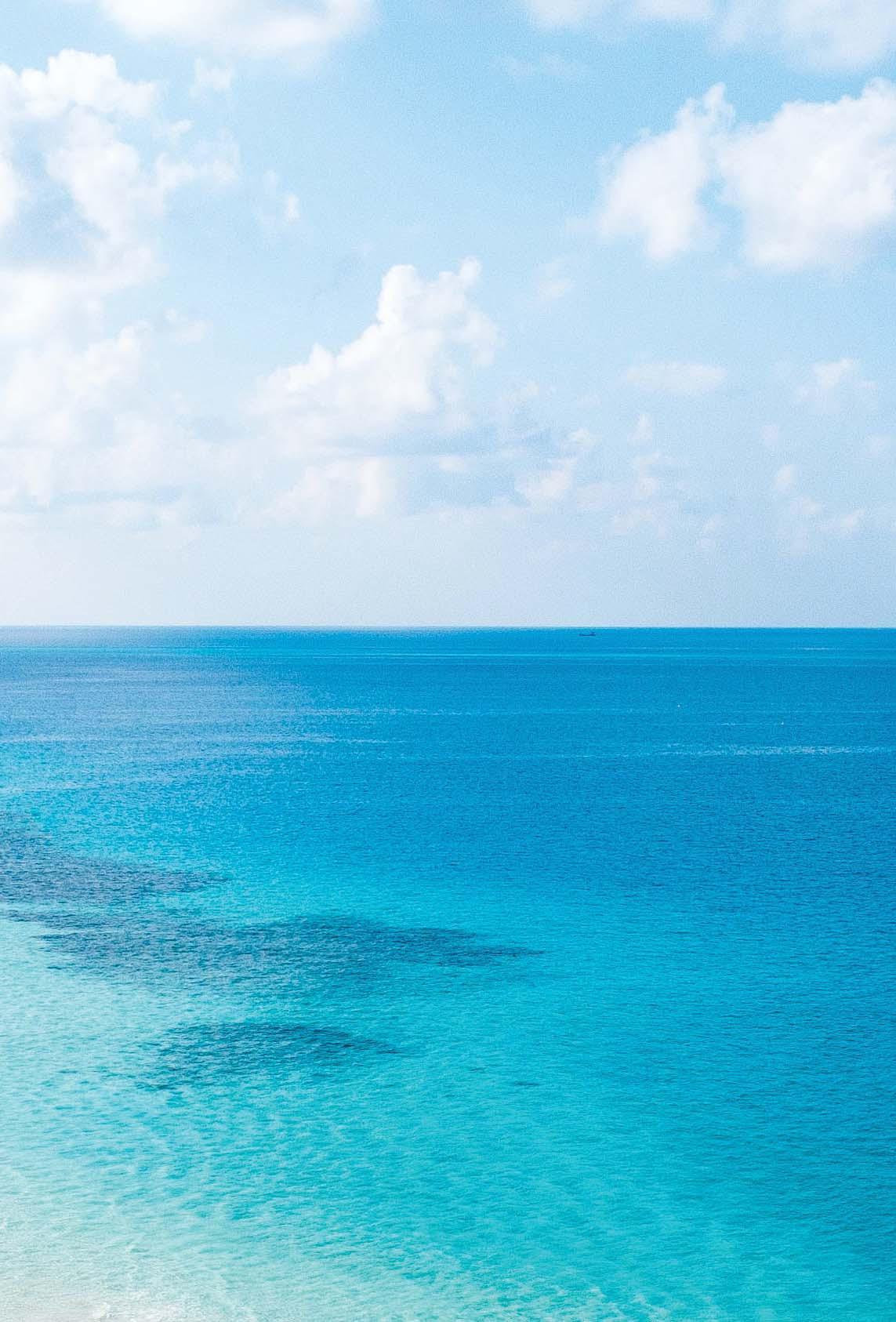











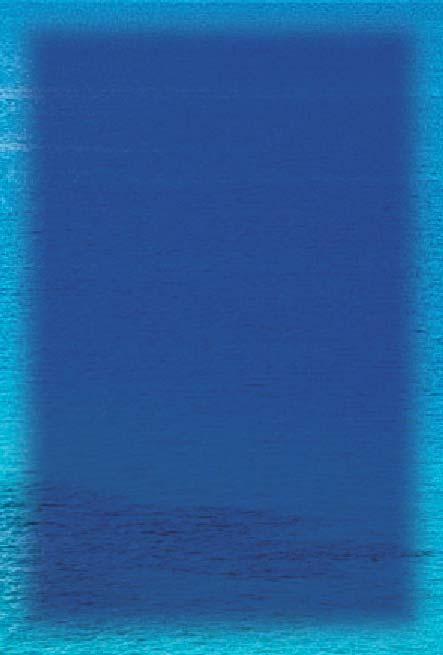



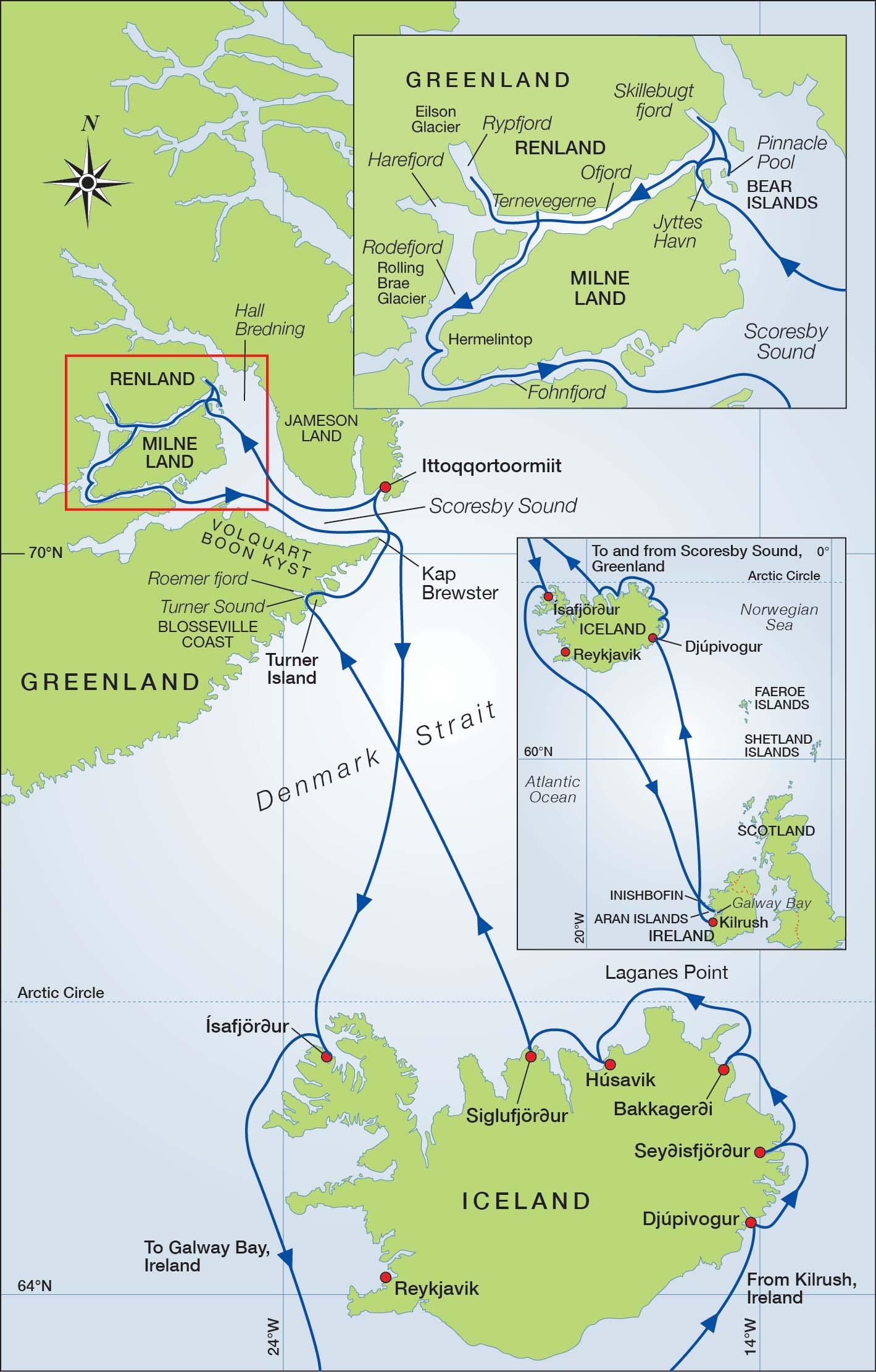
(Peter Owens is a sailor and climber living in Kinvara in the west of Ireland who, with his wife Vera, owns Danú of Galway, a 43ft ketch – see Flying Fish 2015/2, 2017/1, 2021/1 and 2021/2 for their previous adventures.
The expedition described below took many years of planning, was run on a tight budget, caused minimal environmental impact and visited a remote part of the world. The OCC Challenge Grant, which was critical to its success, assisted in preparing Danú for the voyage. Aboard were Peter, skipper, climber and expedition leader; Richard Darley, experienced yachtsman and skipper when Peter was not aboard; Paddy Griffin, primary expedition photographer and sailing crew; Paul Murphy, lead kayaker and sailing crew; and Sean Marnane, climber, who teamed with Peter for the mountaineering phase of the expedition.
All photos are vcourtesy of the Irish Scoresby Sound Expedition, including that of Danú alongside in Seyðisfjörður which appears on this issue’s front cover.)
Scoresby Sound in East Greenland is the largest fjord in the world, around 110 km (68 miles) long and bounded by the Greenland ice cap. Active glaciers moving down from the ice cap, feeding into the fjord at several locations, provide a conveyor belt of huge icebergs moving slowly to the open sea. Previous expedition reports showed
The Greenland crew at Seyðisfjörður in Iceland before departing northwest. L to R: Paddy Griffin, Paul Murphy, Sean Marnane, Richard Darley and Peter Owens

pictures of massive spires of rock rising directly from the sea, with great scope for new climbs. Our proposal was to sail from Ireland to Iceland, making the jump from there into Scoresby if/ when the ice conditions allowed. Once in the Sound we would explore a number of locations for new climbing routes and survey the anchorages we visited. We also included a scientific element to the expedition. I contacted Dr Quentin Crowley at the Trinity Centre for the Environment in Dublin who studies microplastic proliferation in the world’s oceans and is a member of the University of the Arctic. There is a distinct lack of data from the waters we were planning to travel, so we agreed to sample for microplastics along our route and within Scoresby Sound. Both saline and fresh water were sampled, referenced against GPS positions, using a simple vacuum filtration setup.
30th June: In the interest of time, and with a small essence of bravado, we chose to sail direct from Kilrush (the previous winter had been spent at the yard there, with many alterations and upgrades for the upcoming expedition) to Iceland. On board were Paddy Griffin, Richard Darley and me. Winds were initially favourable but became consistently force 7 or higher from the northwest, which pushed us eastwards and made our planned landfall on the west coast impossible. We skirted the Rockall Bank, experiencing a strange four-way swell pattern. A few mishaps occurred along the way. A flailing jib sheet punched a hole through our port side doghouse window. We hove to in order to effect repairs, cobbling together a mix of old sail cloth, mastic and duct tape which would stay intact to Iceland. As we got closer, the wind strength increased again but now with us from the southwest. A big wave smothered the aft deck and swept one of our new solar panels over the side, found still dangling from a single cable.
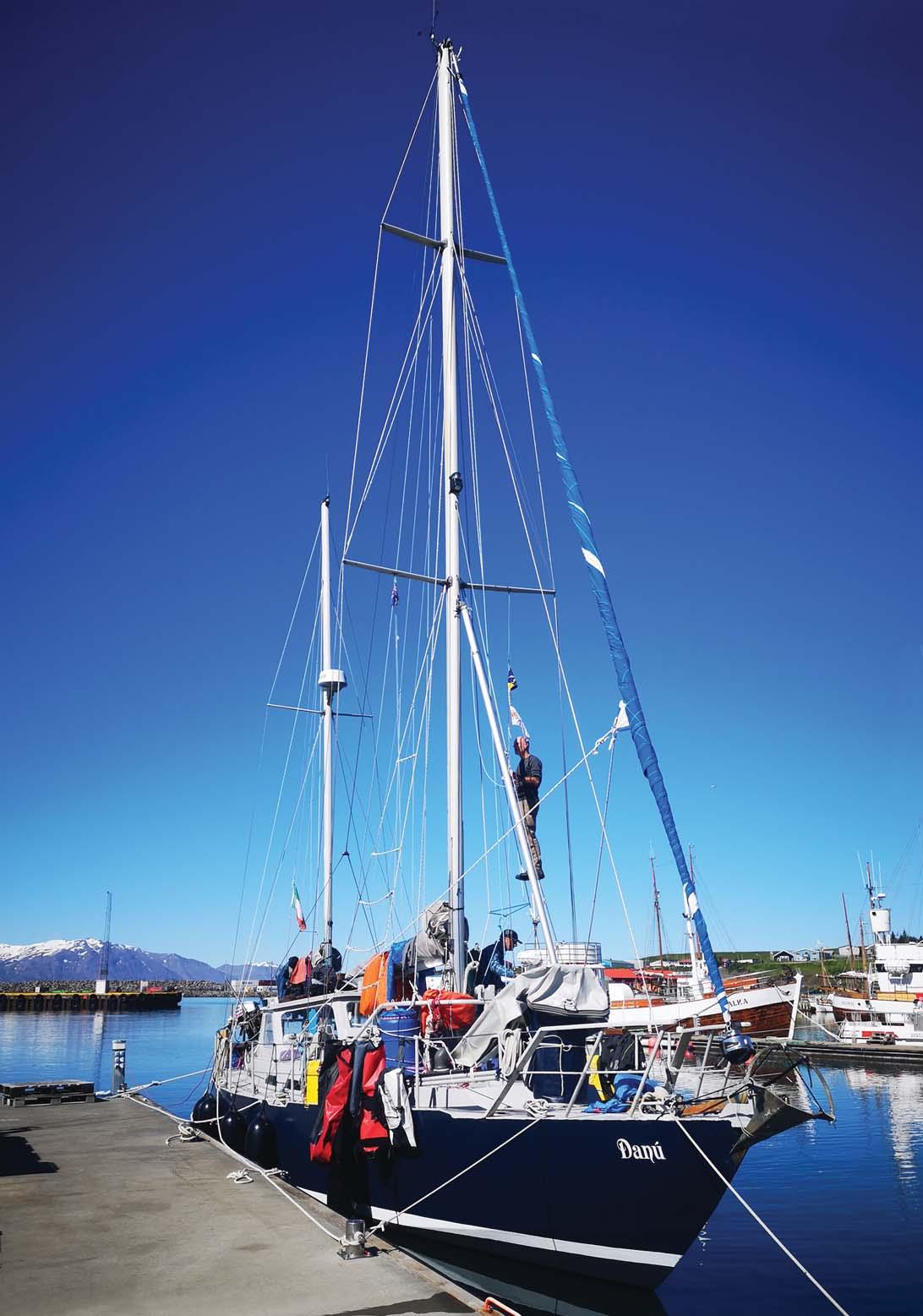
7th July: The quartering seas were too big for the Hydrovane so we hand-steered the last day to Djúpivogur on Iceland’s southeast coast. After a hard, seven-day passage with 40 knot winds to the end, we entered this small harbour surrounded by ancient volcanic peaks. The Guinness came out and we toasted the start of the expedition, musing over the days at sea.
8th–9th July: We spent the next two days repairing Danú. The SigmaDrive* had loosened somehow, causing the prop to shift backwards. I had three chilly dives to assess and then push the prop back to the right position. You can’t buy anything in Djúpivogur (it’s quite a remote spot) but instead we received gifts of a sheet of Perspex and extra mastic for the doghouse repair – thanks go to Gulli Birgisson for the Perspex and Jon Karlsson for the mastic. Thanks also to Jon Einar Agustsson, who was happy to trade a box of salmon for a few cans of Guinness. We had enough salmon for five people for a week and no berthing fees were charged. Djúpivogur was a wonderful place!
10th July: We sailed north, with spectacular views of remote high mountains still capped with snow, tying up on the run-down pier at Bakkagerði.
11th–12th July: Early start, a mix of wind, sun, fog and motoring, then we sailed overnight past Laganes Point. This headland is known to be difficult to get around and we did so running under small genoa and triple-reefed main in dense fog and rain in 30–35 knots of wind from the northeast. Another hard passage, this time wet and cold. At last we turned inside the wall at Húsavik and tied up to a small pontoon in front of the office of the harbour master, who was there to take our lines. We had just sat down, got the heater on and were contemplating breakfast when, with impeccable timing, Paul Murphy arrived.
13th–14th July: We spent the next few days fixing things, including the solar panel which was repaired and gave amps once more. The hot topic amongst the sailors in Húsavik was ice conditions. Ice charts were quite sporadic in their availability and we were working off the last one which was a week old. It didn’t look promising, with ice reported quite far out to sea and Scoresby Sound choked up completely. The old hands said ice conditions can change rapidly – the key was to be ready.
15th–20th July: A false start out of Húsavik with return necessary due to engine problems. Air was getting into the fuel system, a poor job done in Kilrush despite getting a local mechanic involved. I rebuilt the fuel lines, reseated the filters and got the engine running again. We spent a few days pottering about getting more jobs done and analysing old ice charts. Sean Marnane change his flights and came direct to Húsavik, so the full crew was now on board.
21st July: We left Húsavik for the second time and had a fine day sail westward along the coast to the beautiful fjord of Siglufjörður, tying up on the quay wall.
* From Bruntons Propellers, the SigmaDrive aims to reduce noise and vibration caused by imperfect alignment between the engine and the propeller shaft.
22nd July: We were off to Greenland! We sent our first report to the Joint Arctic command, the Greenpos system*. This was something that caused a lot of discussion amongst the skippers – to enter the Greenpos system or not? The commitment is to send an e-mail every six hours to the Joint Arctic command, with position, course, ETA and current ice conditions. This is quite an onerous activity, as it’s easy to lose the satellite connection and can take time to get an e-mail out while at sea, but on the outbound journey we decided to join Greenpos.
23rd July: Nice sailing led to dense fog. Through the clag we glimpsed our first iceberg, which was very exciting even though it was half a mile away. We had two on watch during the night and were all on high alert, our first venture to icy waters. Radar was very useful.
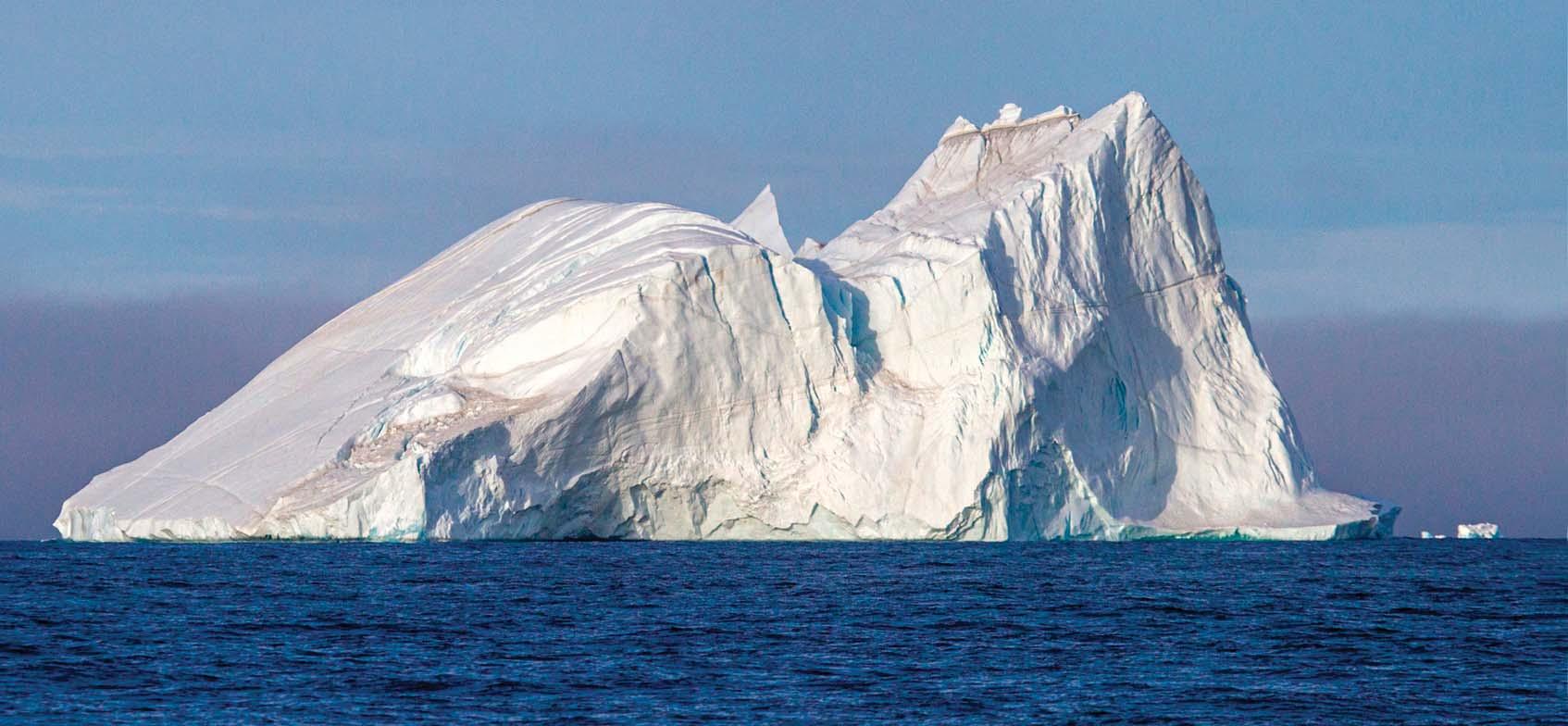
24th July: At 0600 the coastline of Greenland appeared through the mist, a display of triangular snow-capped mountains. The fog cleared gradually as we made our way to Roemer fjord on the Blosseville coast, which had only small patches of ice, easy to navigate. We anchored directly opposite a hot spring in wonderful surroundings. At Roemer we met Nick Kats on Teddy, a seasoned Arctic sailor who lives in Connemara. We hadn’t crossed paths before, so it was fitting that we met here.
25th July: We made a small jump to Turner Sound, marvelling at the mismatch between our course on the plotter and the reality as we sailed through the water. Our CMAP electronic chart
* The Greenland Position reporting system, run by the Danish Maritime Authority.
 Some of them were Big!
Roemer fjord on the Blosseville coast
Some of them were Big!
Roemer fjord on the Blosseville coast
consistently put us on the land, as did Navionics. Turner Sound is a wide and sheltered bay surrounded by mountains, making for great shelter with good holding. The latest ice chart looked more favourable, showing a high concentration within the Scoresby Sound but the entrance open. With this information we left at 2100, making use of the midnight sun at these latitudes, and sailed northwards up the Blosseville coast through a myriad of bergs of various shapes, sizes, colours and consistency. Little auks flew past in their thousands.
26th July: At 0600 we passed Kap Brewster at the entrance to Scoresby Sound and made a course to Ittoqqortoormiit, or ITQ as we chose to call it. The sea was calm with a light southerly breeze, but as we got closer to ITQ the density of bergs increased and we had crew on the bow and on the ratlines to confirm a way through. We detoured to ITQ to pick up a rifle from tour company Nanu Travel for protection against polar bears. Going ashore, we observed two dead seals hung in the sea from the wooden jetty, while on an ice floe a local hunter was preparing seals for dog food. He had rammed his boat onto the ice to lodge it there and was busy gutting the seals. In the background, behind the fuel terminal, the sled dogs were howling as if they knew what was coming.
We took the dinghy to the terminal and filled up by can (diesel was 0∙70€ per litre!), but by 1800 we were off again, heading out into the Sound and as time went on the ice cleared to open water. The wind increased, so we sailed goose-winged until the early morning when we looked over to what appeared to be a new bank of fog. It was overcast and the visibility was poor, but suddenly I realised this was not fog but a bank of ice stretching as far south and north as we could see. Quickly we stowed the sails and motored northwards along the ice shelf. On reaching the edge of Jameson Land we had found no way through so, with no detail from the chart regarding the topography, we carefully approached the shore. This was not a place to run aground. It wasn’t much of an anchorage being quite exposed, but nevertheless we anchored in 5m in good holding.
27th–28th July: We tried to push along the north coast for a few hours, but again were repelled by the pack ice so returned to the same anchorage for the night. The following day we tried to go south, motoring along the ice edge to the southern side
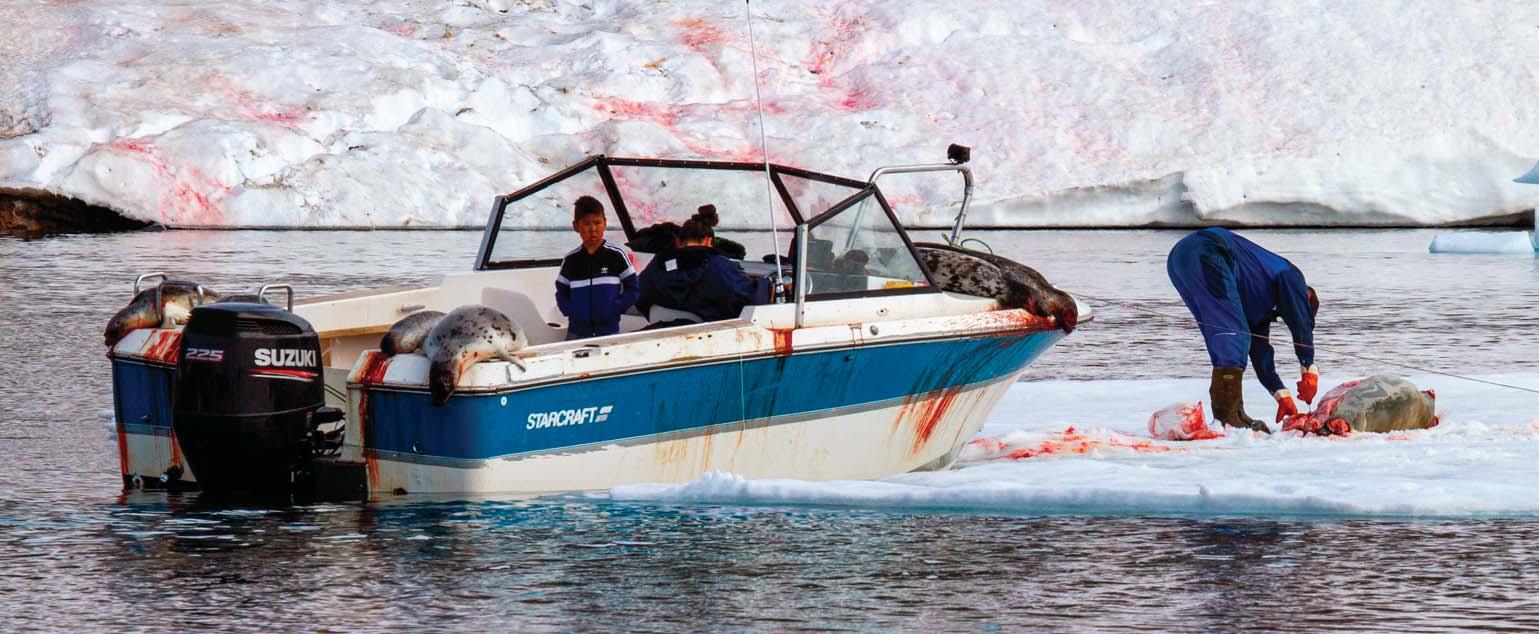
of Scoresby, again finding no way through. The only place to go was back to Jameson Land where we anchored again in the same spot. The wind and swell increased, with a counter-current making things uncomfortable. Passing bits of small bergs needed to be pushed off the anchor chain and, turning in for the night, we were unsure of what the next day would bring. We tried not to contemplate a retreat.


 The tranquillity of Scoresby Sound, looking south from Ittoqqortoormiit
The tranquillity of Scoresby Sound, looking south from Ittoqqortoormiit
One of the challenges of Arctic sailing –ice floes getting stuck in the anchor chain
Trying to find a way through the ice to the inner part of Scoresby Sound
29th July: A sunny morning brought hope. Paul suggested reworking our way along the coast of Jameson Land, and as the sea became more open we realised that we were going to make it to Hall Bredning, the large stretch of water between Milne Land and Jameson Land. The mood on board lifted – we were elated, although it was a mystery as to where all the ice had gone. We motored all day towards the Bear Islands, taking the passage between Milne Land and the islands to give us a closer look at the east side of Milne for climbing possibilities. The anchorage at Jyttes Havn is spectacular, nestled in a very secure spot with views to the mountains of Milne and Renland.
The next few days were spent on reconnaissance and an attempt on the east wall of Milne land, but we found the rock to be very fractured and dangerous so were forced to retreat. While we were climbing, Richard surveyed the Jyttes Havn anchorage with our Deeper Pro sonar device, which can be mounted on the dinghy or a kayak. We used it to survey each anchorage we visited.

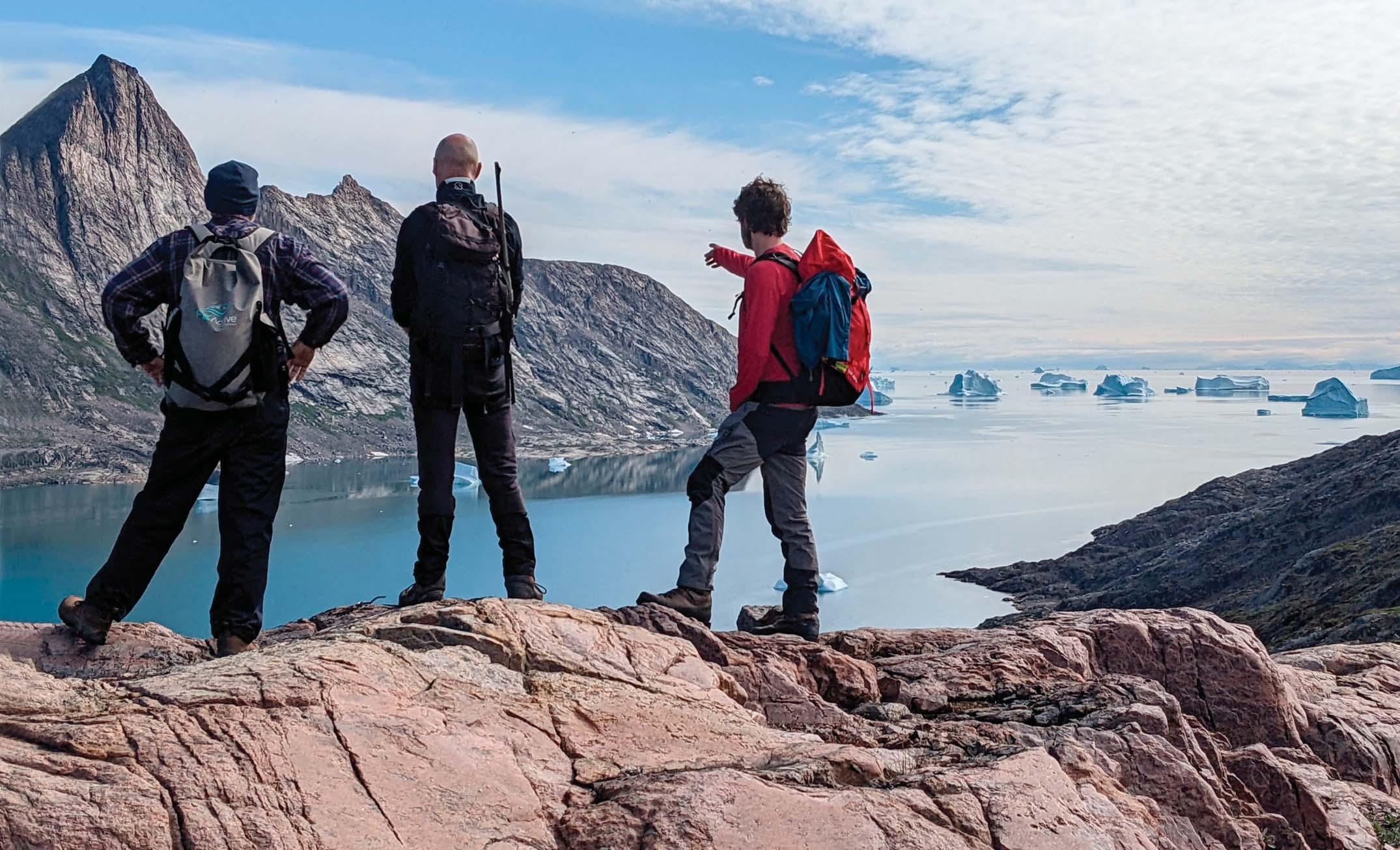 The wonderful Jyttes Havn
Exploring ashore in the Bear Islands
The wonderful Jyttes Havn
Exploring ashore in the Bear Islands
2nd August: We motored over to an anchorage called Pinnacle Pool on the other side of the Bear Islands (excellent sailing directions had been provided by Mike Henderson and Helen Gould), which involved some tricky pilotage through a narrow channel only a few metres wide. At Pinnacle Pool we anchored in 8–10m with good holding. We had light winds and rain all day, so spent the afternoon in the kayaks. The log that day reads: ‘we had ancient Arctic ice hacked from a small berg with Greenspot whiskey after dinner’.

3rd August: We moved from the Bear Islands to Skillebugt fjord on the south side of Renland, a spectacular fjord with big mountains rising from sea level on all sides. We anchored near its head, close to a moraine and almost on the shore, even though the runoff from the glacial melt clouded the water and gave us erratic depth soundings.

The only way to get close to the ice – Paddy Griffin in one of the folding kayaksTricky pilotage to Pinnacle Pool in the Bear Islands Danú in Skillebugt fjord

4th August: Sean and I headed up the hillside to have a closer look at the rock walls directly above the anchorage, taking hours just to reach the base. We traversed along the base of a wall past a deep gully and found a possible route up the wall.
5th August: With large bags of climbing gear we started back up the hillside at 7am. We got to the base in two hours and started climbing, choosing to follow the line of best rock. This factor determined our line and we meandered up the face swapping leads. The fog that filled the bay still lingered to late morning, but we had a clear view across the fjord to the peaks of Renland. There were too many peaks to count, many not climbed. The climbing was never too difficult – at its hardest moves of 5c but mostly of HVS grade*.
* Visit https://www.thebmc.co.uk/a-brief-explanation-of-uk-traditional-climbinggrades for an intelligible guide to the British Mountaineering Council’s grading system.
The Skillebugt wall. Our route started on the right of the huge gully

We climbed nine pitches, the last of which put us up on an exposed rib. Looking down to the right there was a deep chasm and, on the left, the wall we had just climbed. Even though it was 10pm we had the benefit of 24-hour daylight so decided to descend via the rib. What followed was quite an adventure, down-climbing the loose rock on the rib. Time passed, but at last the angle steepened allowing us to abseil. Five abseils later we were down at the base. It was midnight and we heard a relieved Richard on the other end of the VHF. By 2am we were back aboard for a quick celebratory beer and then to bed.

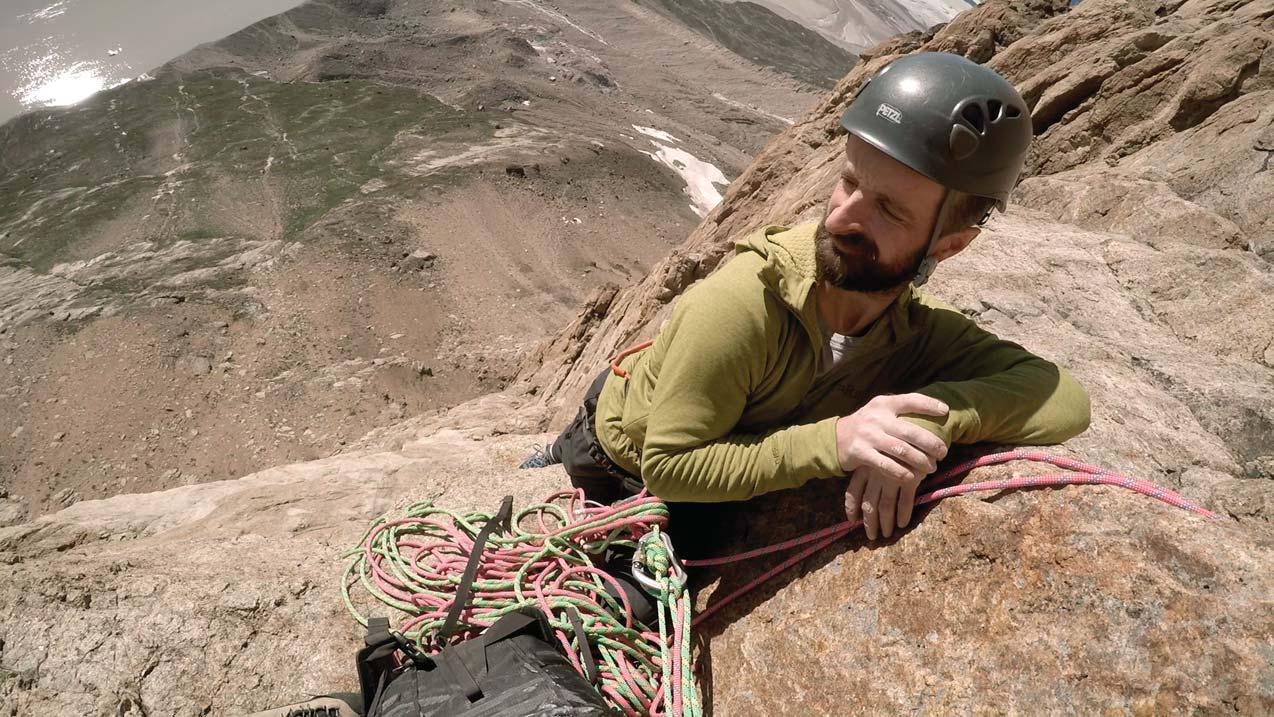 Sean Marnane and the view from the top of pitch 5
A telephoto shot of us (circled) on the Skillebugt wall
Sean Marnane and the view from the top of pitch 5
A telephoto shot of us (circled) on the Skillebugt wall


6th–8th August: We departed Skillebugt in deteriorating weather and after a brief stop in Jyttes Havn sailed eastwards to Ofjord. The north-facing cliffs of Milne offered lines but would be long, cold adventures. The weather broke and clouds pushed in from the sea so we took a detour up Rypfjord to see the Eilson glacier, but close to the glacier wall the depth shoaled rapidly, prompting an abrupt U-turn – we were seriously close to running aground on submerged moraine. That night we snuck into the beautiful sheltered anchorage at Ternevegerne opposite the northwest tip of Milne Land. Big icebergs are barred entry into this lagoon and musk oxen roam the shoreline. The temperature dropped and it rained for two days, the boat getting progressively damper. Soggy walks ashore were taken and trips by kayak.
9th August: We sailed on southwards past the iron-laden conglomerates of Rodefjord in fine sunny conditions. The massive Rolling Brae glacier spilled into the sea to starboard, increasing the sea-ice concentration – the way forward always seemed to be impenetrable until we got much closer – and anchored in a small bay at the southwest end of Milne Land with good holding in 15m.
The following day Sean and I departed early with the climbing gear to get to the base of the north face of Hermelintop. A three-hour slog got us there and we assessed the possibilities. Loose rock on the north face didn’t appeal so we chose to ascend first by a steep gully on the left. Hours of scrambling in loose scree led to a snowy saddle and there, about 300m away, was the summit, reached by a short climb. The ground was covered in fresh snow and the terrain similar to that of Kerry – the difference
Our anchorage at the southwest tip of Milne Land
was the 500m vertical drop from the north side of the mountain. Looking from the summit across Milne Land all the way to Renland beyond was breath-taking. For the descent we took a direct line to the north and three hours of walking brought us back to the boat. Richard had recorded a nice survey of the bay and Paddy and Paul had paddled through the dense icebergs that got stuck by Rode-O island in the channel to the north of our anchorage.
11th August: The weather had changed again with a harsh wind blowing down Fohnfjord. The clouds obscured Hermelintop and gave some light rain, but a new forecast gave us an upcoming window of fairly calm conditions to get back to Iceland so we decided to head directly back to ITQ.
12th August: We reached ITQ at 0900. More bargain fuel was bought, water tanks filled and we enjoyed showers at the community centre. At 2000 we left ITQ, sailing past Cap Brewster and back into the fog, seemingly omnipresent. The radar went back on and we kept a keen watch for growlers. The big bergs are easy and, now battle-hardened, we often sailed quite close. Growlers are scary though, only just breaking the surface which makes them hard to see. Our destination was Ísafjörður in northwest Iceland.
14th August: Approaching the Icelandic coast messages came in from family and friends wondering where we were ... were we still alive? The fluted green cliffs of Iceland heralded us in towards Ísafjörður with a nice bit of downwind sailing. On arrival we tied up at the end of the wooden pier to toast the expedition with the last of the wine.
15th–20th August: Sean, Paddy and Paul caught flights back to Ireland and Richard lay low for a few days having picked up a chest infection. I was faced with more work on the engine transmission. On inspection the top flange on the V-drive was very loose, with a broken keyway, and in the end I had to unbolt and hoist the engine to remove the flange and get it rebuilt, which took two days. I’m very grateful to the staff of the Ísafjörður harbour office who let me borrow their hoist and bearing puller to do this. Richard Church arrived, a fresh face and new enthusiasm for the upcoming passage. With Richard Darley now much better we started to get ready for the passage home while waiting for the weather to clear. Our final act in Ísafjörður was to splash out on its famous (and not that expensive) all-you-can-eat fish restaurant, the only time we ate out in the entire voyage before returning to Ireland.
21st August: We left at 0600 and, with some engine-related paranoia, motored slowly out of Isafjordur. This was followed by lovely downwind sailing along the west coast where a pod of around twenty pilot whales joined us for hours, surfing with the swell.
As we covered the miles the winds became increasingly fickle and then directly against us – high pressure had stabilised over Ireland giving an easterly airflow. While people in Ireland were eating ice creams in sunny weather, we cursed our bad luck at not getting the usual westerlies. The days passed, always with things to fix. The Raymarine autohelm failed mid-way, but we had a spare which we modified with jubilee clips to provide added strength.
30th August: We picked up a mooring at Inishbofin, a wonderful island north of Slyne Head on Ireland’s west coast. A swim and wash were followed by dinner ashore and one too many pints. The following day was still glorious, but with hangovers all round. We pushed on to Kilronan on the Aran islands and it was wonderful to tie up alongside Fergus and Kay Quinlan on Pylades.
1st September: In light easterly winds, we motored to Black Head and then into Galway Bay, slipping through a glassy sea. The transmission was holding – I was checking it every hour. By 1700 we were alongside at Parkmore pier, our summer harbour. A huge welcome was waiting for us, with a host of family and friends cheering and my musician friends playing tunes to guide us in. Big hugs with my wife Vera and my kids. Then I got the fiddle out and joined in with the lads. Richard had composed a shanty about our trip and gave a great rendition. Many were jumping on and off the boat, having a look around ... did you really get to Greenland? After two months at sea, we were back at home, our journey completed.

An expedition to Greenland costs a fair bit, with much extra equipment needed beyond the requirements of normal sailing. We made applications to several funders and were incredibly lucky to obtain financial support from an Ocean Cruising Club Challenge Grant, the Arctic Club Gino Watkins Fund and Mountaineering Ireland. This was a major factor in the outcomes and achievements of the expedition. We would particularly like to thank Chaloner Chute, FRGS, cousin of Richard Darley, for his advice in the early stages of the expedition planning and David Lovejoy, who sent us weather information and cut-down ice charts for every day we were in Greenland.
It was an amazing experience to sail to Arctic waters, and to sail with such a great crew. Since our return many people have asked me whether it was all I had dreamed it would be. I would say it was much more than that, as it provided the experience and confidence for future Arctic voyages. And for those, there is no shortage of ideas.
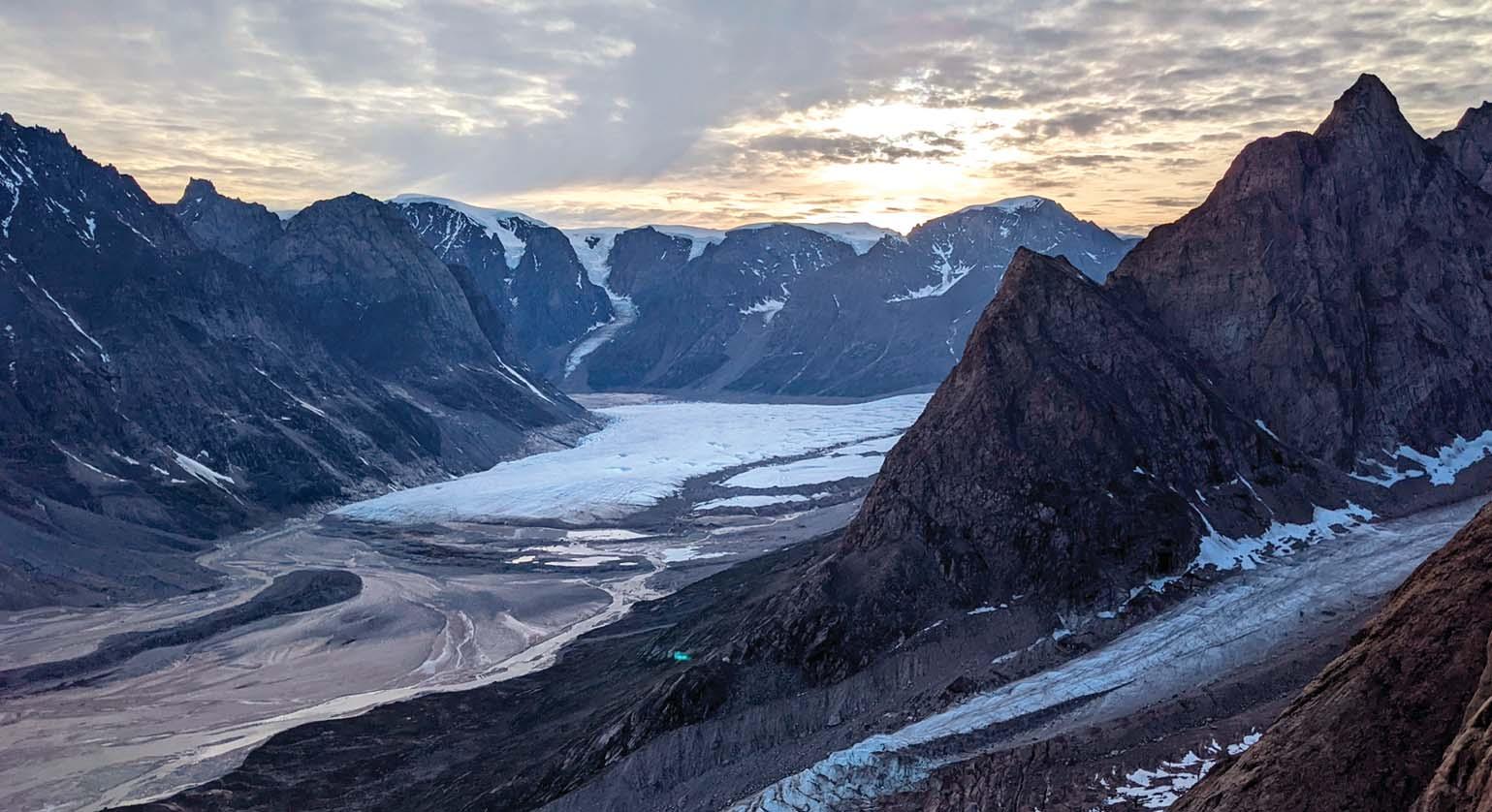
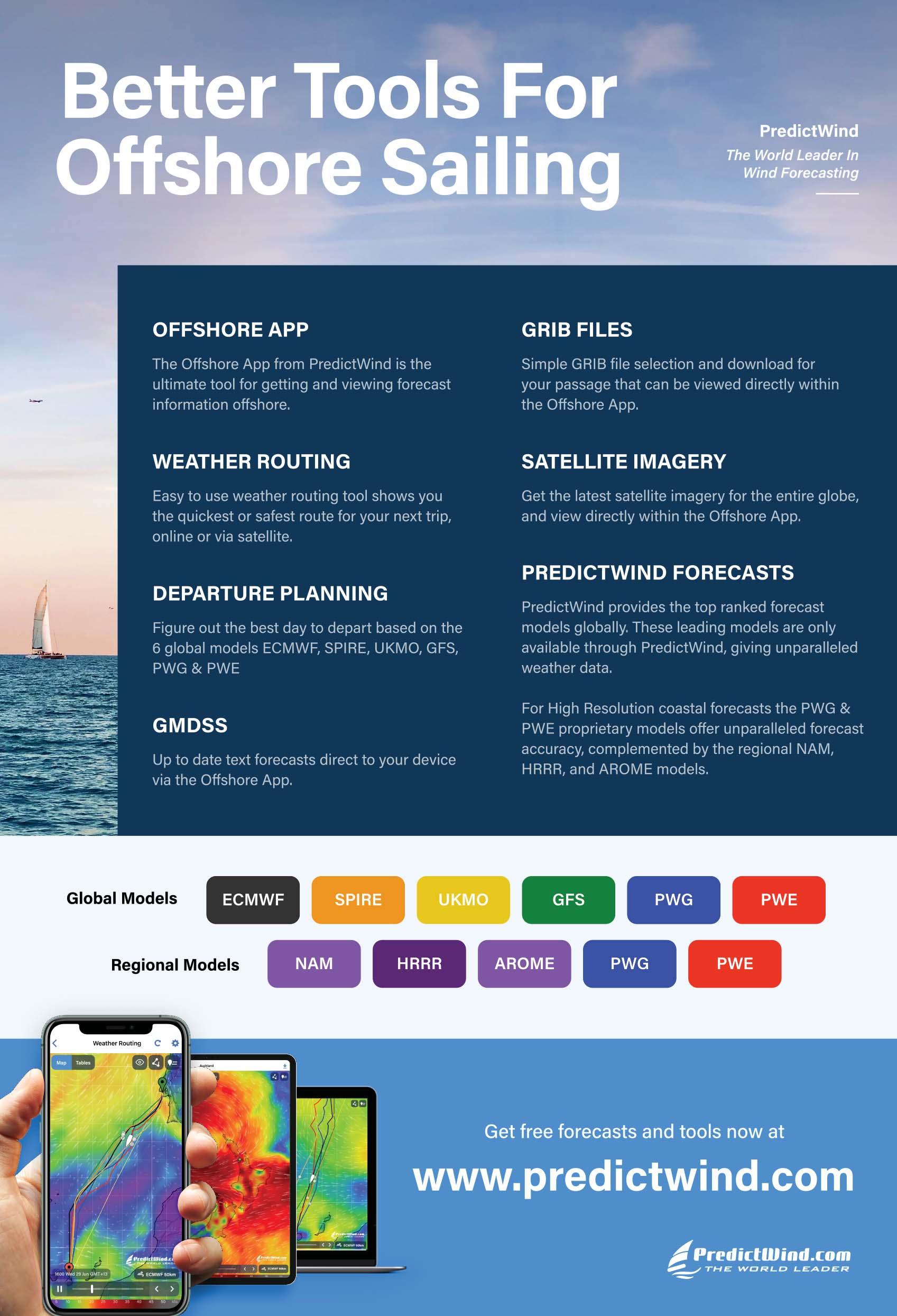
I’ve been sailing since I was a kid, just messing around in dinghies. Later, in my teenage years, I moved to Sail Training, sailing and volunteering with a UK-based organisation, and still do that now. I’ve always been very active and played a lot of sport, but when I was injured at around 17 I had to cut back on sport and found sailing as another way to remain active. I became more and more involved in it over the next seven years, focusing on racing and continuing with the Sail Training. I enjoyed being active so much that I became a PE teacher, but after six years of teaching and studying I decided I wanted to take some time out to focus on my sailing more and complete a Master’s degree.
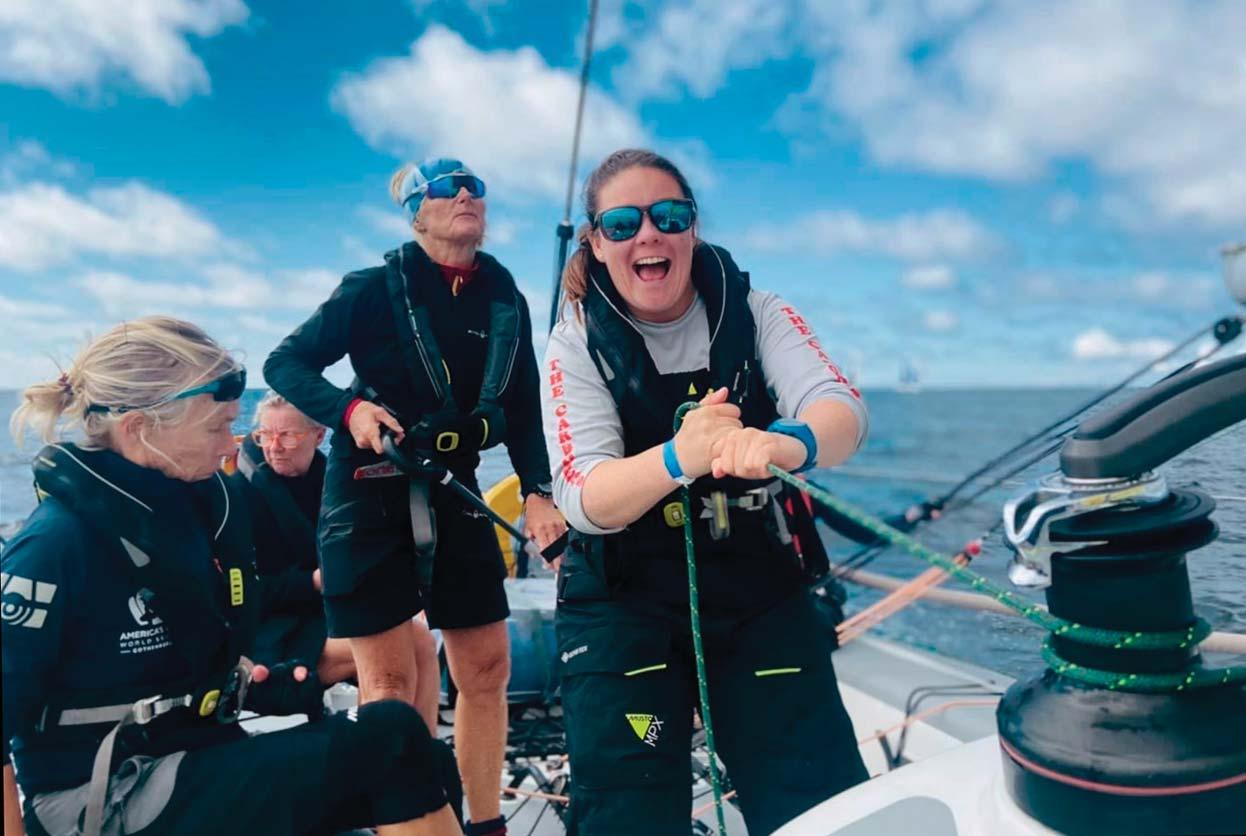
I have always been fascinated by the world of cruising since some family friends built their own boat and sailed it around the world about 15 years ago. Most of my sailing has been racing, but these friends have always remained in the back of my mind. They kept an online blog which I followed eagerly and it really sparked my interest in doing a long passage. I’d known since then that I wanted to complete an ocean passage, and this year out seemed the perfect chance to get one under my belt. I was keen not to race, in order to connect more with the cruising world and really take my time and enjoy the crossing.
I therefore set about looking for an opportunity to cross the Atlantic on a cruising boat, even though most of my contacts were in the racing world. Mark Fowler, a fellow Sail Training volunteer and OCC member, contacted Club Secretary Rachelle to help me find a crossing and she also told me about the OCC Youth Sponsorship Programme, which I knew straight away was the perfect opportunity for me. I was put in touch with Peter Basilides, owner of the beautiful Nerio, as well as a very lovely French couple with a catamaran. I quickly realised that, with my thick Irish accent, communication would be a struggle on a lot of boats, but fortunately Peter had had the pleasure of learning to sail at Skerries in North Dublin, despite hailing originally from the Austrian mountains,
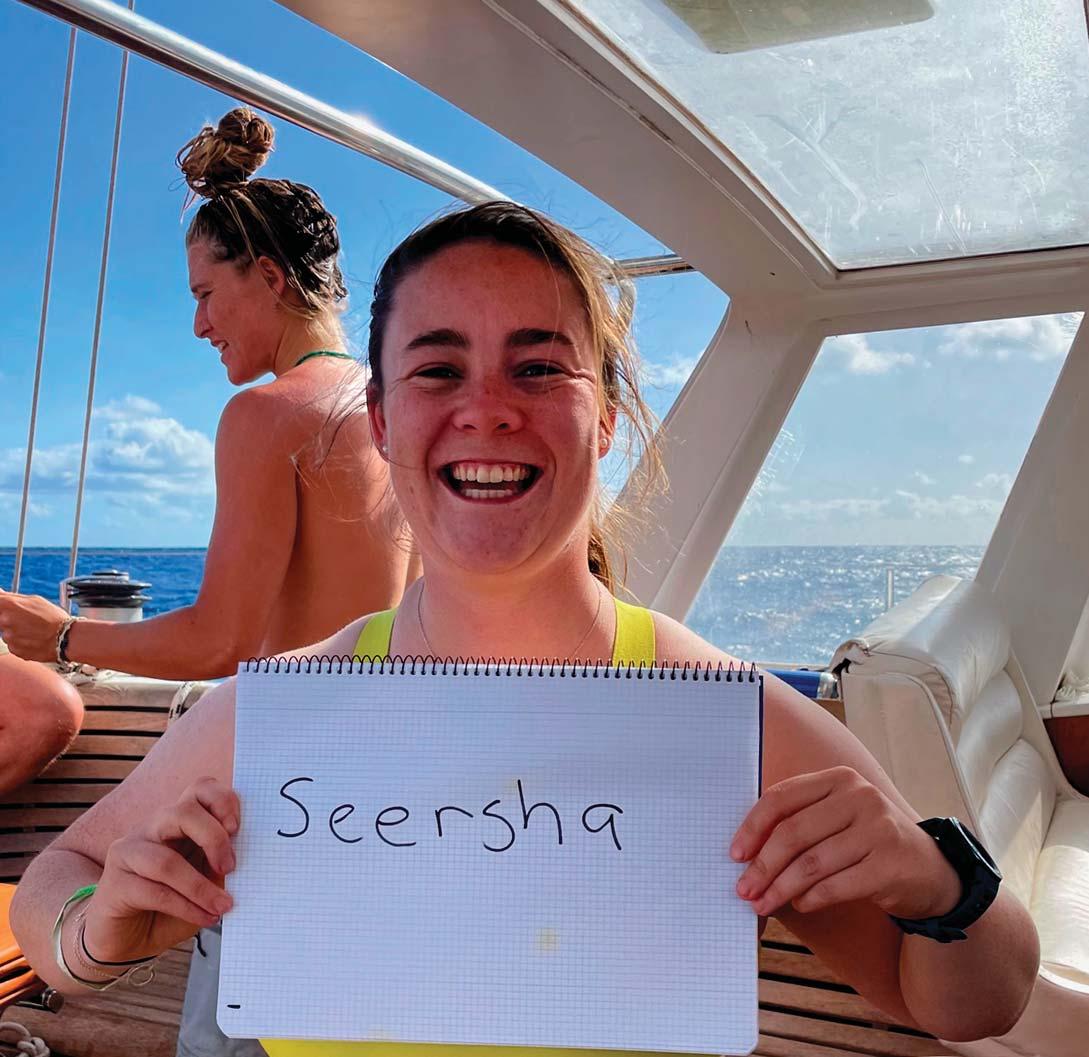

so was able to understand my accent even when I spoke too fast! After a few e-mail exchanges with Peter a plan was hatched and I booked a mid-November flight to Las Palmas where I joined Nerio , a 72ft retired racing Jongert and easily one of the prettiest boats I have had the pleasure of sailing. There were six of us on board – Peter 1 the owner (Austrian), Peter 2 and Jan (both Belgians), Bego and Xabi (from Spain) and me.
We spent a week in Las Palmas preparing the boat for our upcoming passage – Las Palmas to Antigua, via Cape Verde and Barbados. I began to learn one of my biggest lessons of the voyage here – with boats, there is always something to do! From sails to watermakers, to electrics and electronics, there is always a job to be done. One of our mammoth jobs in Las Palmas was to get the genoa prepared. An easy task in principle – ship it off to the sailmakers. But alas, Nerio’s genoa is 140% and moving it was no easy task. We succeeded, however, and five days later it was returned, so again we tackled the challenge of packing it up and moving it from the pontoon to Nerio’s bow with the help of the sailmakers, four crew and the main halyard. I also helped with the provisioning of four weeks of dried food and one week of fresh food for six people. If the ARC fleet hadn’t been there at exactly the same time I’m sure the lady in the supermarket would have thought that either I had 25 children at home or was cooking for a small nation’s army.
Finally it was 21st November and time to head off, a day after the ARC fleet. We left Las Palmas in a blowy 25 knots and it didn’t take long for
us...
Just the dry goods for six of
me to fall in love with sailing
Nerio as we surfed down waves at over 12 knots under just the genoa. We settled into a watch system as I got used to the boat. We opted for a threewatch 4-hours-on, 8-hoursoff rotation and I was paired with Peter the skipper, which allowed me to learn lots about the boat and long-distance sailing. Although we had the luxury of occasional WhatsApp messages while underway, thanks to a trial of the new Iridium GO! Exec, we quickly lost the phone signal. At first this was a little hard to adapt to, but I quickly started to appreciate
Jan photographing a tile picture of Cesária Évora, a famous Cabo Verdean singer


the chance to ‘unplug’ while on an ocean passage and began to really enjoy the switch from staring at a screen to staring at the waves and appreciating my surroundings.
After a week we arrived in Mindelo, our speed reduced by a tear in the genoa. Arriving at sunset the landscape of the Cape Verde islands was absolutely breathtaking, though sailing through the wind funnel created by the gap between the islands is something I won’t forget for a very long time. Unenthusiastic about the prospect of hauling the sail off the boat for another professional repair, another crew member and I set about trying to repair it. Another steep
Part of an art exhibition in Mindelocurve here – big boats = big sails = much inconvenience to stitch = the need for large needles and strong hands = 2½ hours sitting in the same position and ending up stiff as a board. Finally the repair was done but I’d learned my lesson and will move around from time to time when I next attempt a sail repair!
The next few days were spent cleaning, provisioning, exploring the island and enjoying some down time in the pool by the marina. The streets of Mindelo were colourful and rich with art, partly thanks to an exhibition that was taking place and partly thanks to some very creative locals.

The next 16 days will stick in my mind for a very long time. When we left I was really excited about getting to Barbados and it took me a couple of days to get out of the ‘are we there yet? mindset, but after a few days I learned my most important lesson from this experience, something I will definitely take with me throughout life – enjoy the moment you are in now. Even if you’re not enjoying it, still try to look for the positives. From then on I found a great appreciation for every sunrise, sunset and ‘family dinner’ (evening meals where we sat around the cockpit table as
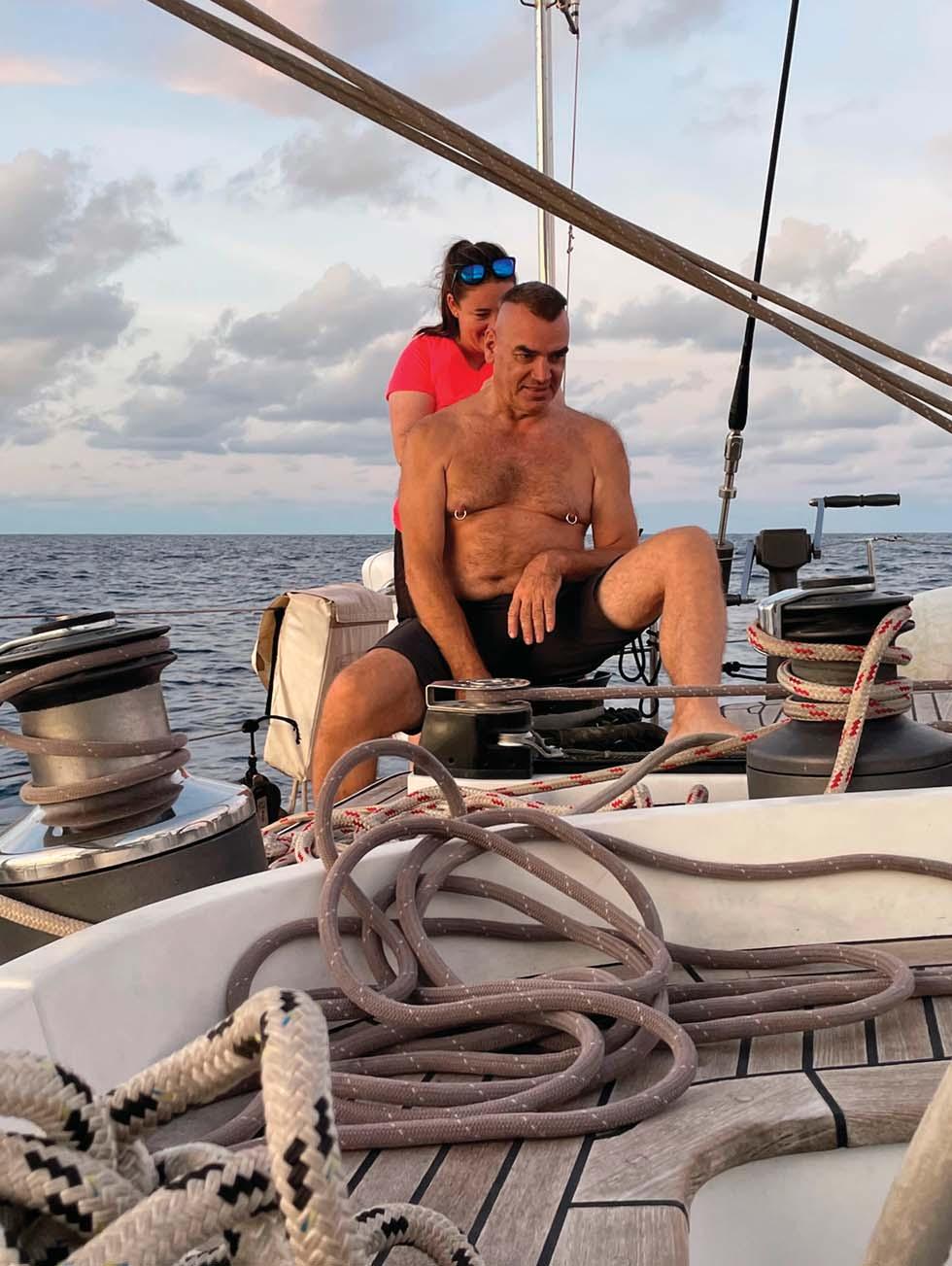 A dramatic sculpture of an Atlantic blue marlin off Mindelo’s beach
Skipper Peter 1 putting far too much trust in me!
A dramatic sculpture of an Atlantic blue marlin off Mindelo’s beach
Skipper Peter 1 putting far too much trust in me!
a full crew). I switched from sometimes thinking I was bored to enjoying the opportunity to get my head stuck into a good book or podcast, or sunbathing on the aft deck.


Lots of opportunities came up for entertainment, including playing with the gennaker and making sure Peter’s mohawk was looking sharp. We had light breezes to start, making the first 11 days of the passage slow, but it did mean that Peter kept his mohawk and didn’t end up with a buzz cut – which would probably have been the case if we’d got the razor out while surfing downwind! Our chance to surf downwind came later in the passage, as we approached Barbados and the wind filled in. We flew along, munching up the miles. A day out from Barbados
life on board was good and morale high as we surfed down big waves under just full genoa in glorious sunshine when, alas, our genoa split again. It seemed like this was going to slow us significantly, adding close to another day to our passage time as we proceeded under just staysail, but the wind gods were again in our favour and, with continuing strong winds, we reached Barbados on the morning of Saturday 17th December.
Peter 2 preparing our last bit of fresh food (after we had fun passing it around the boat for the previous three weeks)
Sunset at seaNerio safely berthed in Port St Charles, against a stunning Barbadian sky

We enjoyed a few days in Barbados after cleaning and packing up the boat. Some of the crew took the chance to explore the island with a taxi tour and I had my first dip in Caribbean waters. As an avid sea swimmer back in Ireland, the increased temperature was very welcome. We were berthed in Port St Charles and the sunsets were beautiful. We said goodbye to four of our crew and a few days later, Peter and I departed for Antigua.
Unfortunately some technical issues meant that we had to pull into Martinique, and I had to hop on a plane to Antigua to be sure I made it there in time for Christmas with my mum – never get on the wrong side of an Irish mother! A few days later Peter arrived and we met up again, and I was able to enjoy the privilege of showing my mum and boyfriend around the fantastic boat on which I’d had the pleasure of crossing the Atlantic.
I’d like to say a massive thank you to Mark Fowler for suggesting the OCC to me, to Club Secretary Rachelle, and to my shipmates on SY Nerio, particularly Peter 1 the skipper and ‘Team Belgium’ aka Jan and Peter 2, who did a fantastic job of keeping our friends and family informed of our journey via his PredictWind blog. I’m writing this in sunny Antigua and am already thinking about, and looking forward to, my next adventure!

In Antigua, heading out to Nerio in the dinghy with Peter and my mum








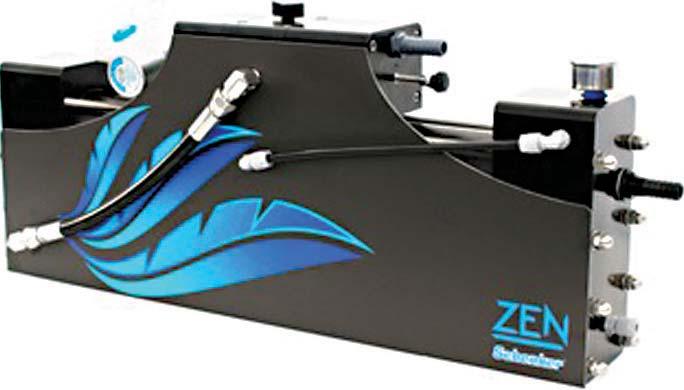

(Who has not heard of the Rev Bob, veteran of Cape Horn, the Northwest Passage (twice), and seemingly almost everywhere in between? Bob lives in the Scottish Highlands and, although no longer a boat owner himself, remains very much in demand as crew. Visit the Flying Fish archive at oceancruisingclub.org/Flying-Fish-Archive, pull up ‘Search Archive’ in the box on the left and enter ‘Shepton’ in the box on the right to access all his 31 previous contributions. All photos by the author except where credited.
Parts of this article appeared in the January 2023 issue of Sailing Today magazine.)
North and South are still One Nation in Great Britain. Long may it continue thus, so that one can continue to enjoy summer sailing in both North and South with no need to show one’s passport at the Solway Firth – yet.
Summer 2022 did not start too well. A friend of mine had at last sold his old boat to Gareth, a member of the Stornoway Coastguard, and part of the deal was that he would help him sail the boat from Oban to Stornoway. He asked me to come along as crew. Fired with enthusiasm at the thought of being on the water again, I quickly realised that all might not be so good after all.
The boat did sail well, and we had a southerly wind to help us, but this was not quite as helpful as it sounded. Sailing on the genoa alone we could not hold the course without the sail collapsing, which required fine judgement and concentration, but that was okay. However, down below the boat was falling to pieces – a slight exaggeration perhaps, but more and more things stopped working. Fortunately, the battery power remained sufficient to start the engine when necessary, but only one saloon light would come on and bits seemed to be falling off here and there around the boat. She had been neglected for four years as my friend had bought another ... I only hoped that Gareth had been given a very knockdown price! Even so, we made it to Stornoway in time for my friend to get home next day, by ferry to Ullapool, bus to Inverness, bus to Fort William and bus to Oban – such are the pleasures of west coast travel – in time for a medical and a funeral, the two unconnected.
The second outing was also not quite as expected – to help sail a boat round the Mull of Kintyre in early June to attend the Royal Cruising Club’s Queen’s Platinum Jubilee Meet at Kerrera, close to Oban. Great – the challenge of rounding the Mull with its fearsome tides, especially with wind over tide! But there was no wind. In fact, there was virtually no wind for the whole four days so we gently motor-sailed all the way to Kerrera, stopping off at Ardfern to meet up with an old naval submariner mate of the owner whom he had not seen for many years. It was as well that we did stop, as the engine overheated as we approached the harbour. After lengthy investigation we found that the oil filler cap had come off, so no pressure and overheating. You learn something new every day.
The third venture was entirely different and involved going to London, by train, for the inauguration of the Novara One Planet project*. I had sailed with Steve Brown aboard Novara from the Falklands to South Georgia in 2017 (see Flying Fish 2018/2), but now he is gradually transferring her over to Nigel Jollands and Veronica Lysaght to be used for environmental research. The Novara One Planet project aims to visit remote areas as they sail slowly through the Arctic and Northwest Passage and down through the Pacific to their homeland of New Zealand, investigating the effects of climate change on remote communities and seeing where and how they might help the situation. I am a patron of the project so, for better or worse, the inauguration involved a presentation about my book Addicted to More Adventure at the Greenwich Yacht Club followed, a week later, by one more specifically related to Novara and the project by Steve Brown.

* Visit www.novara.world to learn more about the project, which is being supported by an OCC Challenge Grant.

The rope factory (below) was especially interesting with (at left) the huge length of the building for laying up rope
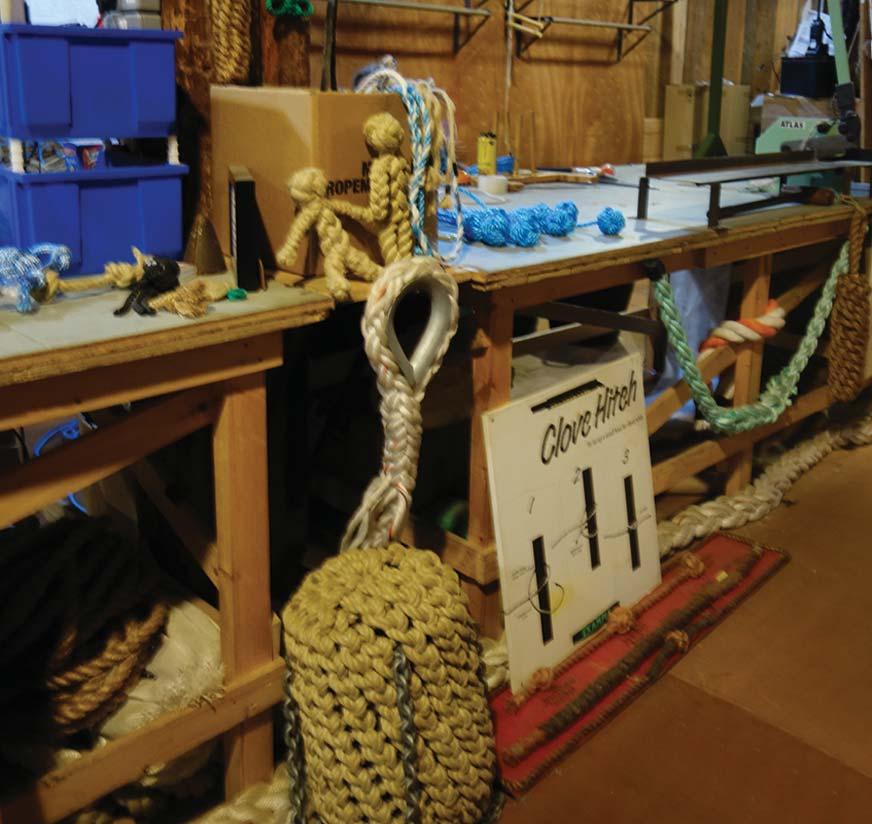

During that week Steve and I went down to Chatham Dockyard. This involved tours of a submarine, a destroyer and a sailing boat from the late 19th century, with an even more fascinating lecture and demonstration on how rope for ships was laid up in a hugely long warehouse. We also went down to Southampton and stayed aboard Novara. She was in the water, but with no masts so we could not put to sea. A lengthy refurbishment of masts and rigging remained incomplete, but at least Steve could bring pressure to bear on the boatyard. As is the way of these things, when the masts were taken off more had been found that needed to be done, but it was still taking an exorbitant amount of time.
 Novara shorn of her masts
Novara shorn of her masts
For me the highlight of this time – and possibly of the summer – was a visit to the Greenwich Maritime Museum and especially to the Royal Observatory at the top of the hill. Of course I did the tourist thing of putting a foot either side of 0° longitude, having sailed 38,000 miles from one foot round to the other some years ago, but the highlight was viewing Harrison’s chronometers H1, H2, H3 and both models of H4*. Such marvels of intricate, detailed, minute, painstaking design and execution. The man may have been ‘difficult and irascible’, but he was a genius. And he had displayed such personal stickability to keep going in spite of all disappointments. The problem of longitude was now finally resolved with an accurate Harrison’s H4 chronometer, tested aboard HMS Deptford on a voyage to Jamaica
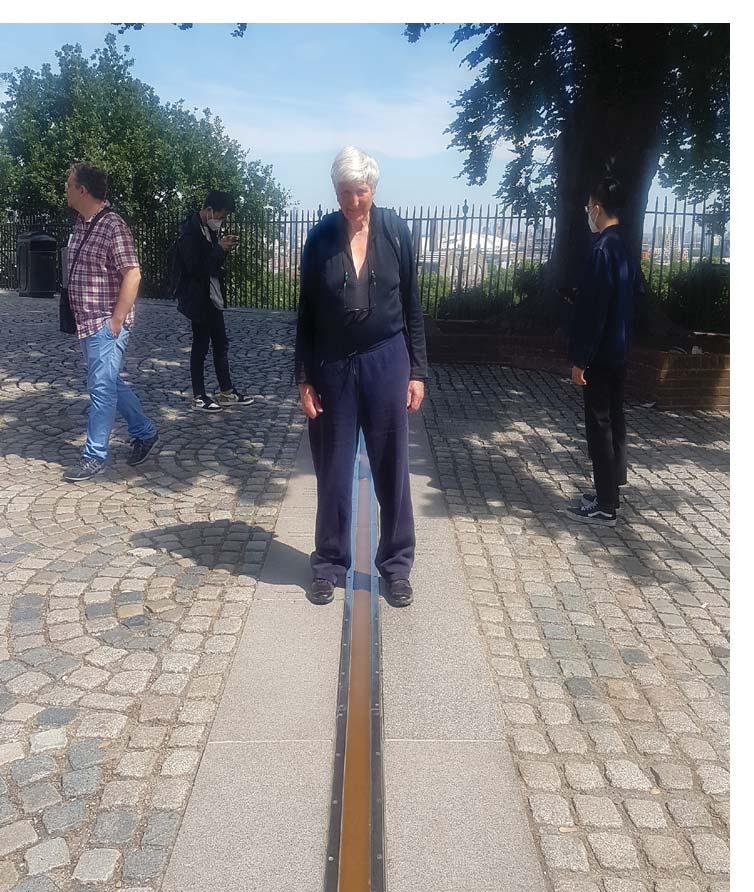
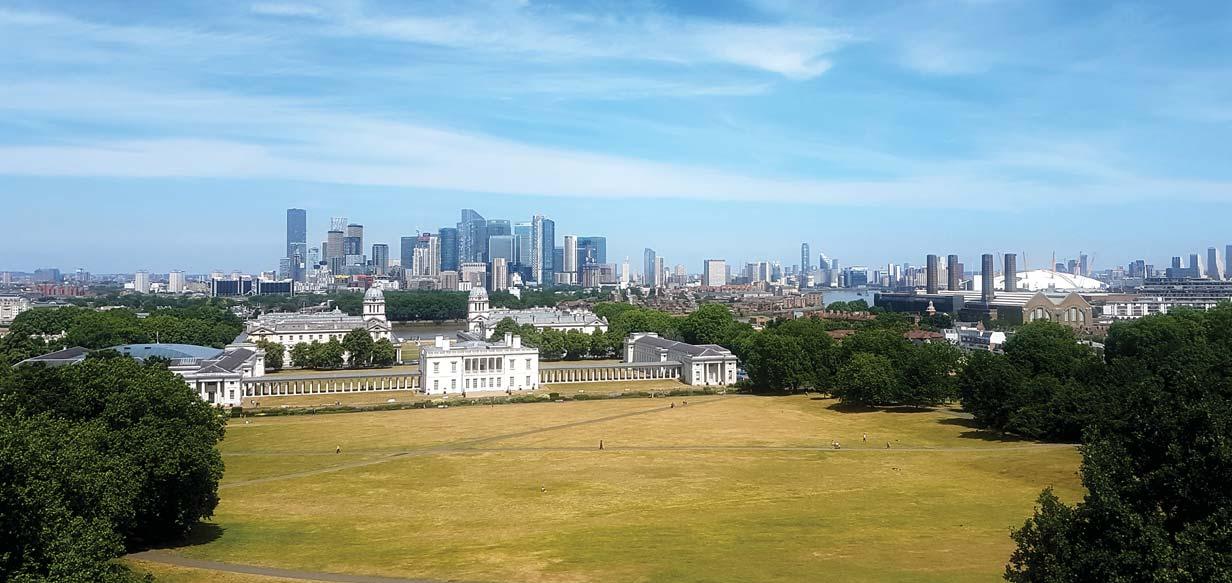
Harrison’s H3 chronometer, which took him 19 years to build

timepiece though, as with Captain Cook, it was still often checked by lunar calculations – far too technical for me to understand.
* Visit en.wikipedia.org/wiki/John_ Harrison for pages of fascinating detail.

A train strike posed problems getting from London to Glasgow, back to my home in the Highlands, and then back to Glasgow to fly to Stornoway for the summer’s fourth venture, though a flight from Gatwick was a start. The mission was to help an elderly owner sail his boat all the way south to Port Solent. He had no wish to sail all that way singlehanded and of course it meant more sailing for me.
I was rather hoping for a rest day after all that travelling but the owner was anxious to get going, though at least I was able to negotiate a late start. That day we made our way, tacking and motor-sailing against a southerly wind, to reach Scalpay, off the east coast of Harris, which I had not visited before. We approached via the northern sound and the question was, would we get under the bridge? We slowed down rather a long way from it, I thought, but when I asked if he’d like to take her he replied with a smile, “No, if we hit it I can blame you!”. We passed under, though there did not seem that much room to spare, and made our way round to the safe, enclosed harbour where the skipper did take over. The steering position was quite low down so it was difficult to see ahead clearly as one came alongside another boat or a pontoon. We had a bit of difficulty there, saved with the help of a French couple aboard their fine liveaboard yacht.
Next day we retraced our steps under the bridge, though with hindsight I wondered whether it might not have been wiser to go west and then south down the wide-open inlet leading to Tarbert. But all was well and we began to bounce, bounce in everincreasing southerly winds and short, choppy seas. I remember thinking ‘deliver me from these lighter displacement boats that bounce around in steeper seas’. The skipper was quick to point out that his Victoria 34 was medium displacement. Fair enough, but at 5½ tons for 34ft she was considerably less stable for passagemaking than my old Westerly at 7 or 8 tons for 33ft. It was a long, uncomfortable day as we made our way south towards Lochboisdale.
An amusing difference was becoming apparent between us. The skipper would put in waypoints on the chartplotter, sometimes well out from the objective, this time off the entrance to Lochboisdale. If he was on watch for that final leg it seemed he felt he should go to the waypoint even though it was a long way out from the objective. I queried why we didn’t just sail closer to the coast and save a great deal of distance? It was safe enough. It became a joke between us – I dubbed him Skipper Waypoint and he dubbed me Cut the Corners Crew! We sailed amicably on, and he did allow me to treat his waypoints merely as passage pointers, explaining he did it that way as he’d sailed singlehanded so much and it gave him extra time ‘to make sure’.
We delayed a day in the small, well-appointed marina in Lochboisdale due to the forecast. This turned into two, then three, days as a full-blown gale whistled through. It was soon ‘a good day (days) to be in harbour and not at sea’. I suggested to the skipper that maybe he should add a little to the otherwise excellent Outer Hebrides* pilot as, though it mentioned there was a grocery store and a hotel in the vicinity, it did not explain that the store was two or three miles away (we were given a lift) and the hotel looked rather run-down or ‘in need of refurbishment’, as a local agreed.
When the wind eventually died down we made our way across to Tiree as an intermediate point for a crossing to the north coast of Ireland. All went well, though it took an age to motor-sail along the north coast of Coll against the tide to reach
* CCC Sailing Directions and Anchorages – Outer Hebrides, updated by Edward Mason.
Gunna Sound. We picked up a mooring for the night on the southern side off the main town of Tiree. Perhaps it was as well that there was little wind the next day as it meant we could motor-sail all the long way across to Ireland, keeping above the skipper’s regulatory speed of a minimum of 5 knots in order to achieve our objective. Each day the skipper produced splendid, detailed passage plans of where and how to proceed and on this occasion I earned some marks for finding Malin Head Harbour hidden away in the pilot*. We put our anchor down with relief after a long day.
It had always been part of the agreement that we would sail via the west coast of Ireland, not least so that I could meet up with the ‘publisher’ of Addicted to More Adventure, though more accurately that should read my ‘expert adviser’, self-publishing guru Alex Blackwell. So next morning we started out for the west coast ... and it was then that our troubles began.

We were soon met with a strong west wind combined with a strong foul tide, and though tide and wind were together it still threw up a nasty sea. Notwithstanding that we were motor-sailing with two reefs in the main in an attempt to sail closer to the wind, we were still being pushed further and further north. It was my watch and, the boat having an inadequate sprayhood, I was being doused with water over the top every so often as we crawled along at sometimes only 2 or 3 knots. When we eventually tacked we started making better progress towards a possible anchorage far away on the coast, but certainly not the one originally intended for that night. Eventually, by mutual agreement – actually I think we both gave up too easily, but hindsight is a splendid thing! – we turned round and shot like a bullet all the way back to Rathlin Island. We had decided to go down the east side after all.
Coming out of Rathlin next day we were faced with the extensive and imposing cliffs of Fairhead in County Antrim, a climbing mecca in their day. The marina at Bangor was huge and we were shattered by the steep rise in the cost of diesel. From there we put into Port St Mary on the southwest tip of the Isle of Man. The skipper bravely allowed me to take the boat through the narrow gap between the main island and the Calf of Man – fortunately the tide was favourable as I have known it to be quite vicious there. And so to Holyhead.
Holyhead was interesting. There is a splendid marina office, but no marina! Just one long pontoon, with other disconnected pontoons dotted around the harbour. This is all a result of the destruction of the original marina when, in March 2018, a spring tide combined with hurricane-force winds threw it all up against the enclosing breakwater. Will they rebuild? There is much discussion locally, but there are concerns that it could happen all over again.
We had a pleasant rest day in Holyhead, again owing to the forecast, moving the boat further and further up the pontoon to try and find a working shorepower socket. This was hindered by a naval fisheries protection vessel also being alongside the pontoon, but at one stage they left the harbour to check something which gave us our chance. Holyhead was also where I had my comeuppance. After chatting with an owner whose boat was named after a character in the Lord of the Rings, I remarked, “Well, you’re obviously a reading man. Perhaps you would enjoy my books”. He asked what they were called and I replied “Addicted to Adventure and Addicted to More Adventure”. Absolutely no response. Dead silence. I shuffled disconsolately away...
From Holyhead we enjoyed a three-lighthouse day – North Stack and South Stack lighthouses, with disturbed water and the famous climbing cliff of Craig Gogarth in between – and finally the imposing lighthouse on the southern end of Bardsey Island. This was a sheltered (except from the south), unrecorded anchorage recommended by a friend. We did not see Bear Grylls, reputed to have a house on the island. Another long day ensued during which we experimented with the spinnaker (unsuccessfully, the asymmetrical had done much better previously) and were entertained by a mother and baby dolphin gambolling around the boat, the baby floundering as it tried to emulate mother. On several occasions flocks of geese spun past us just above the surface. We found the anchorage on the southern side of Skomer Island strangely crowded, and were forced to put our anchor down on rock for lack of space.

 South Stack lighthouse (above)
Bardsey Island lighthouse (below)
South Stack lighthouse (above)
Bardsey Island lighthouse (below)
It was as well that there was no wind the next day so we could motor the whole way across the wide width of the Bristol Channel to reach St Ives. After days of north winds the swell was running straight into the harbour and we endured the worst anchorage of my life. We rolled viciously all night and could only get any sleep by jamming our clothes bags into the lee cloths so we could not move. But, as the skipper said, “Where else on this coast can you wait for your tide around Land’s End?”.
We tried the asymmetrical, which worked well in light airs
Even the yankee did better than the spinnaker


I was surprised next day to be asked to reef down, when we were enjoying a fast sail in an at-last favourable and obliging east wind, and then to discover that we were also sailing against the tide. I had always thought the point of spotting the tides round Land’s End was to sail with them! But apparently Reeds* suggests the opposite going this way, in order to have the tides with you round the Lizard later. Skippers must be obeyed, and he was obeying the almanac, so we slowed down, though
* Reeds Nautical Almanac, published annually.
I did think it a pity and had a shrewd suspicion that, with the east wind, we might be on engine again when passing the Lizard. It did, however, have the advantage that I could take plenty of pictures of the cliffs where I had been trained to lead climb as a young Royal Marines officer so many years ago, and of the Armed Knight which, for some strange military reason, we had raided from a landing craft! We continued on round Land’s End in the sunshine, clicking away, and then round the Lizard (against the wind), to anchor in calm conditions in the Helford River.
From the Helford River we attempted the impossible – to reach Dartmouth in time for supper, which was to be kindly brought aboard by friends of the skipper.
Motor-sailing again the best slant of wind and tide took us north, not south, of the Eddystone Light, and when we reached the southeast-trending coast towards Start Point the east wind forced us to tack back and forth. Off Salcombe we ran out of fuel – we had been pushing it at just over 2000 revs – so we continued to tack under sail alone. Off Dartmouth we ran out of wind. This was not good – no motor, no wind and the tide turning to come out of the river. What should we do? I was just trying to use the odd zephyr of breeze to make for the shore to put down an anchor when a small motorboat appeared. We waved frantically and they, with incredible kindness, turned round and gave us a tow into the harbour. I could just imagine the headlines, ‘Arctic sailor towed ignominiously into Dartmouth by small motorboat’. But we did meet the skipper’s friends and they did bring us supper.
The Armed Knight, a steep, rocky islet close to Land’s End, scene of a raid by landing craft
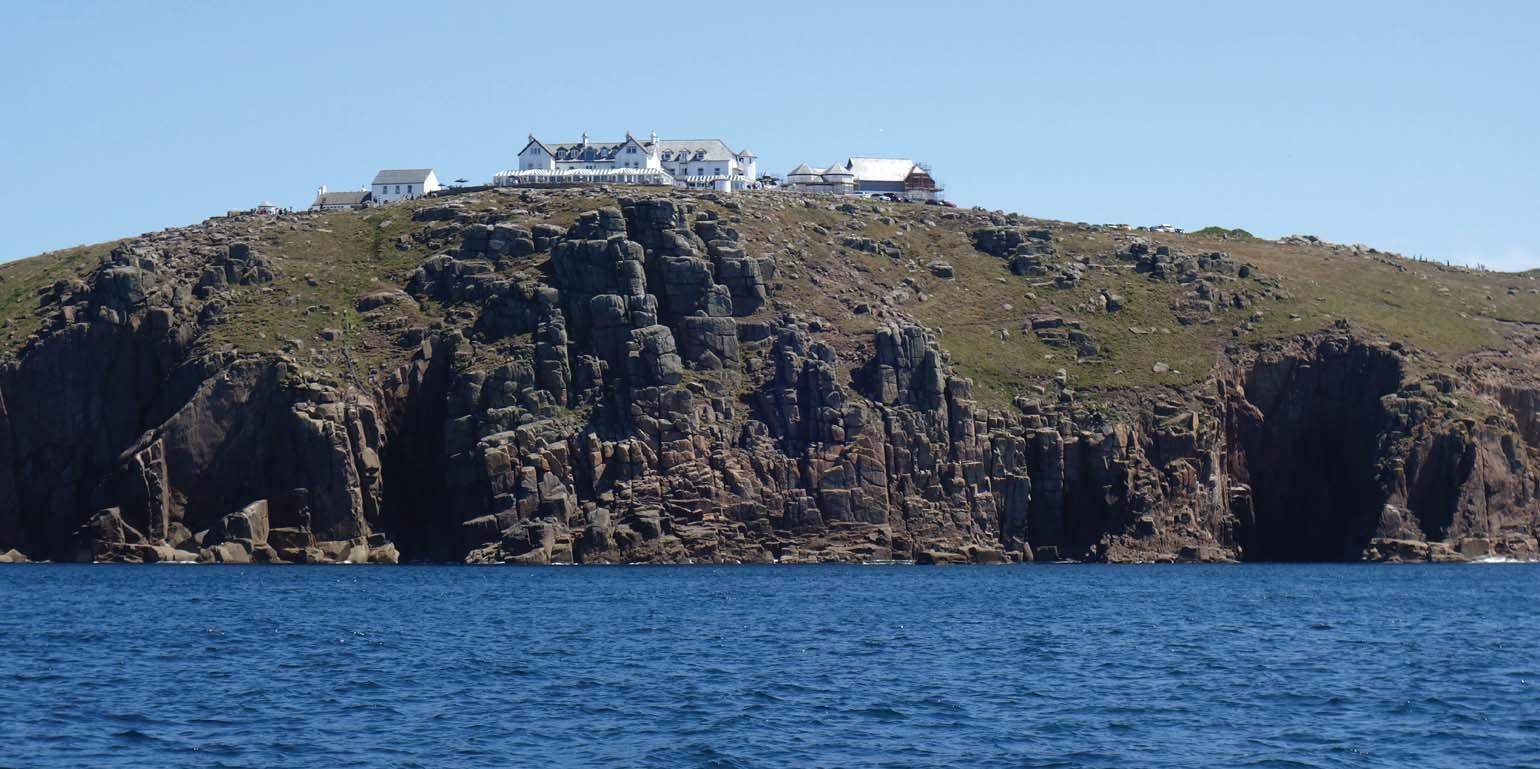
 The Land’s End Hotel, with the Land’s End Night Climb and famous Long Jump below
The Land’s End Hotel, with the Land’s End Night Climb and famous Long Jump below
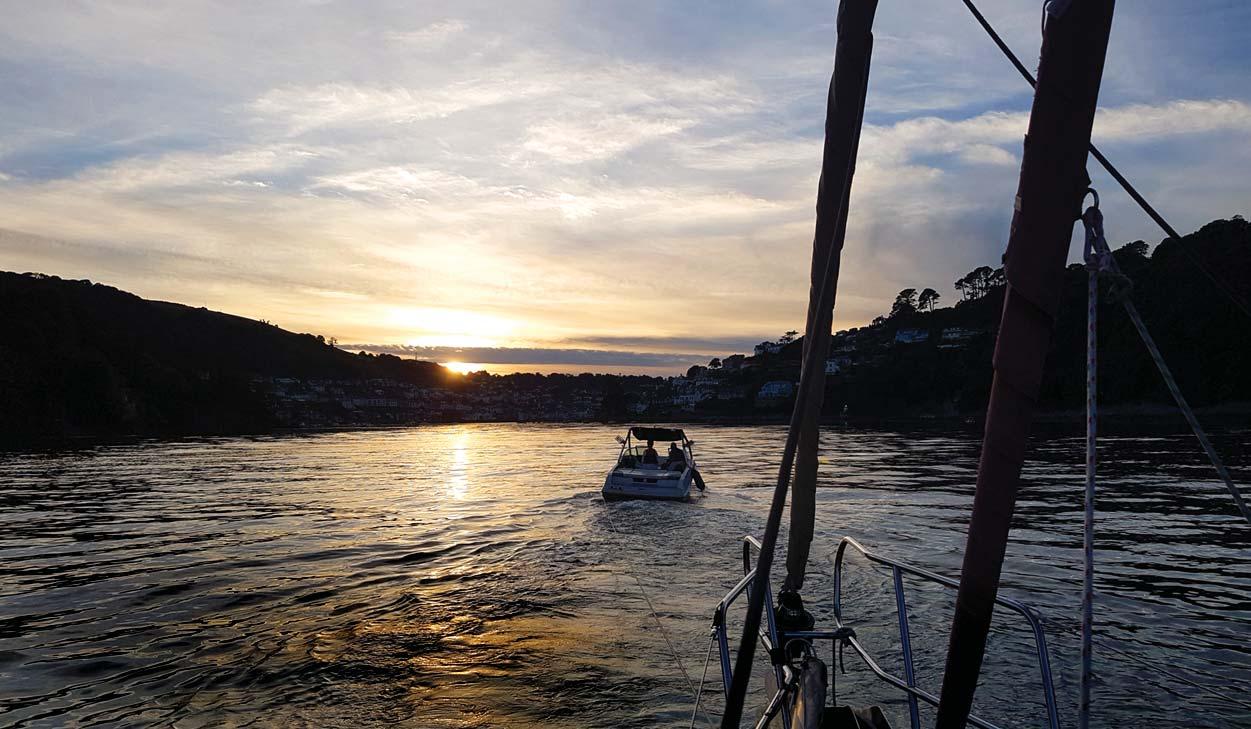
After a day to recover from these excitements we crossed the infamous Lyme Bay. The skipper kindly allowed us to make landfall at the northern end of Portland so I could take photos of the dramatic limestone cliffs which I had been lucky enough to pioneer for climbing in the 1960s and ’70s – and for which I wrote the guidebook ... another sortie down memory lane. At last we spun round Portland Bill, close to Pulpit
Streaming past Pulpit Rock and Portland Bill lighthouse with the tide under us

Rock on the inner passage with the tide. After a night in Portland Harbour with all its new and unwelcome regulations we made it to Port Solent next day, despite having to divert for live firing off the Lulworth Range and the tide being against us in some way all that day. So, Stornoway to the Solent Successfully Solved...!
Stornoway to Port Solent –journey’s end

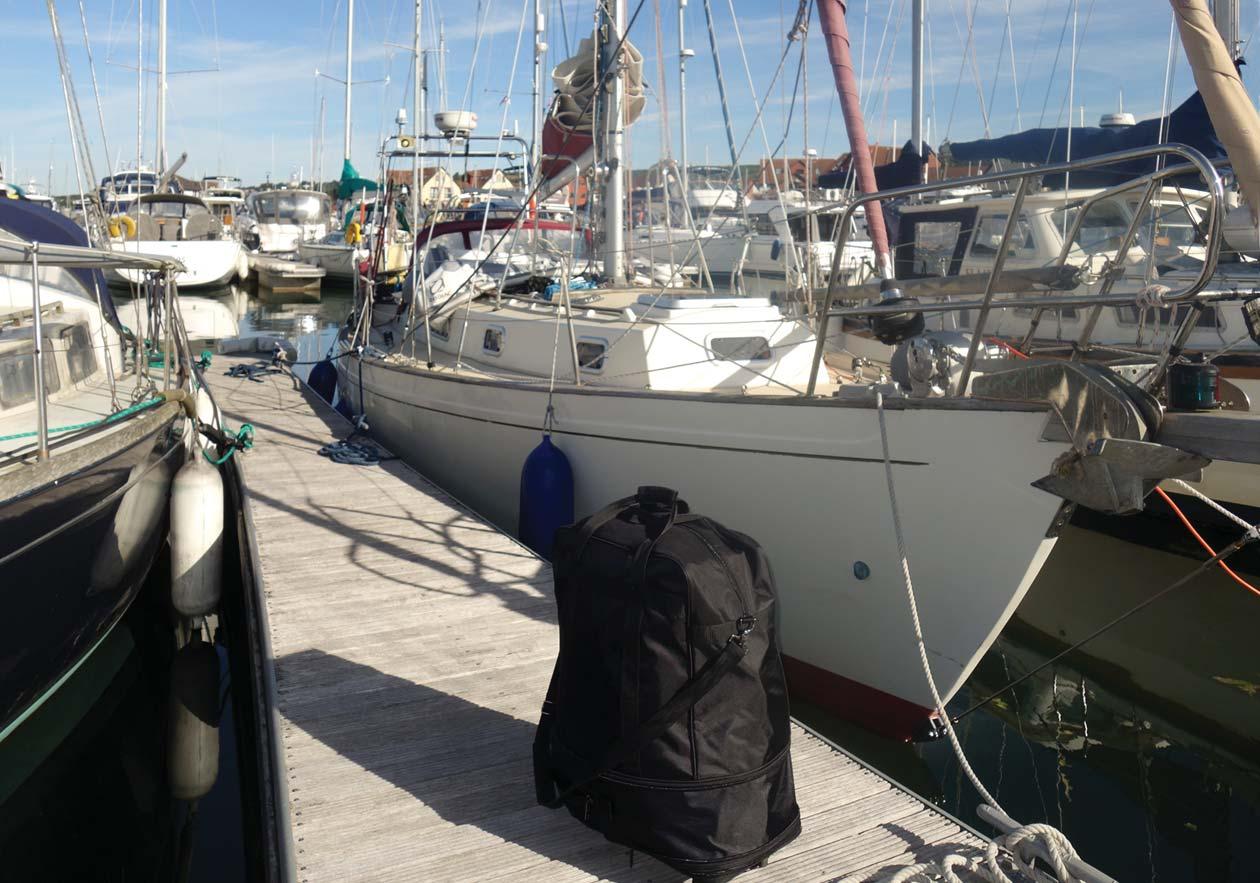

(Flying Fish last heard from Donald in 2019 when he was sailing his previous yacht, Lydia, from Cape Town to Grenada towards the end of a circumnavigation (see Flying Fish 2018/1, 2019/1 and 2019/2). Since then he has downsized to a smaller boat and plans to cruise in European waters from his base in southern England.)
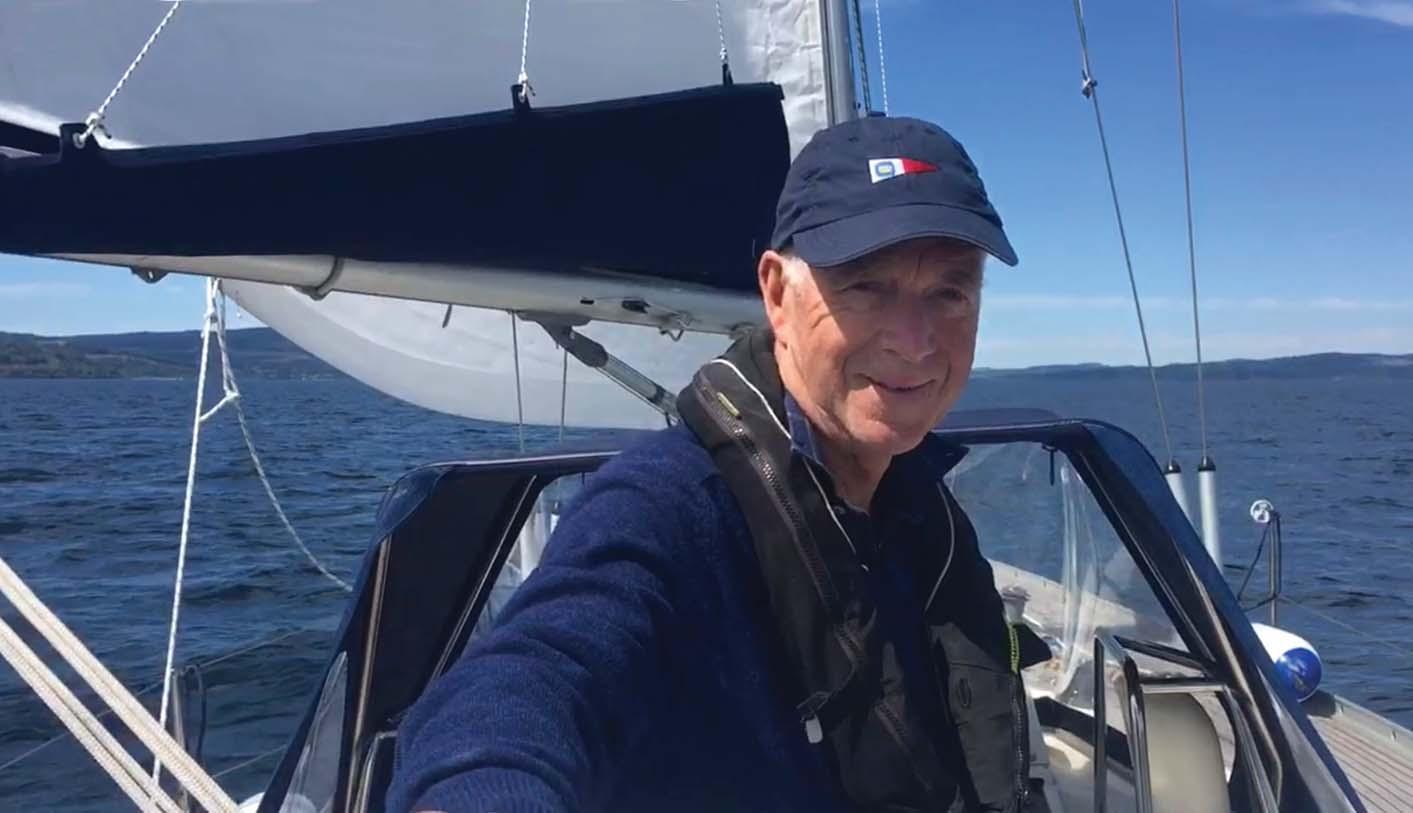
I acquired Ellida at the close of the 2021 season. She is an S&S Swan 38 built in 1979 so she is no spring chicken, but she was built at a classic yard to a design known for its seakeeping and sailing ability. She replaced Lydia, my Bowman 48, so is smaller and less of an ocean gobbler. But, like Lydia, her heavy displacement and emphasis on stability puts her on talking terms with Neptune. Importantly, she is handier for the marinas and anchorages of European coastal sailing than the big 48. During the winter she had new electrics, new electronics and new sails. Next we needed to go to sea and get to know each other.
I sailed from the Hamble on 18th April. Yarmouth, Weymouth, the usual juggle to get tide and wind right for Portland Bill, Dartmouth and Plymouth, Falmouth and Newlyn. Fortune smiled, the sun shone, the wind was from the east. From Newlyn I rounded Land’s End and had my first overnight sail to Kilmore Quay in Ireland’s County Wexford. Conditions were good to begin with. There were numerous fishing boats in St George’s Channel, but they were brightly lit and were trawling at slow speed so the singlehander’s regime of catnap and lookout was workable. But by daylight the wind,


thankfully from the south, was hitting 30 knots and the sea was steep, which made for some uncomfortable moments preparing the boat for a small fishing harbour in which scope for manoeuvring is sparse. It went well – the little marina was comfortable, the friendly welcome was typically Irish, the Guinness was cool and the wind whistled overhead. Passport? Nobody’s bothered.
Coming out of Kilmore the next morning meant a two-mile motor into the wind, still gusting 30 knots, to St Patrick’s Bridge, but thereafter I could turn my stern into the weather and had a cracking sail – 7 knots through the water under genoa alone, a slalom through the wretched plethora of double lobster pots to Arklow. Then another downwind sail to Dun Laoghaire and on to the pretty little marina at Carlingford in Carlingford Lough.
Here’s the rub. Carlingford is six miles up the lough and the streams run at up to 7 knots, so you need a favourable tide to get in or out (Strangford Lough just up the way is worse still). There are no anchorages

outside the lough. If you go out on the ebb, as you must, you are committed – you won’t get back in for six hours and the next harbour is Ardglass, 25 miles further on. On the day of my departure the wind was whistling and williwaws were tumbling down the side of the hill. PredictWind said southeasterly 25 knots. But high water was at 1400 and getting later every day, so I needed to get a move on. Out I went, to be spat into the Irish Sea with a spring tide against a 30+ knot wind ... horrible conditions. Luckily the wind and tide were with me once I was clear of the reefs and the run to Ardglass was mercifully quick. A night in the well-sheltered and charming marina assuaged morale.
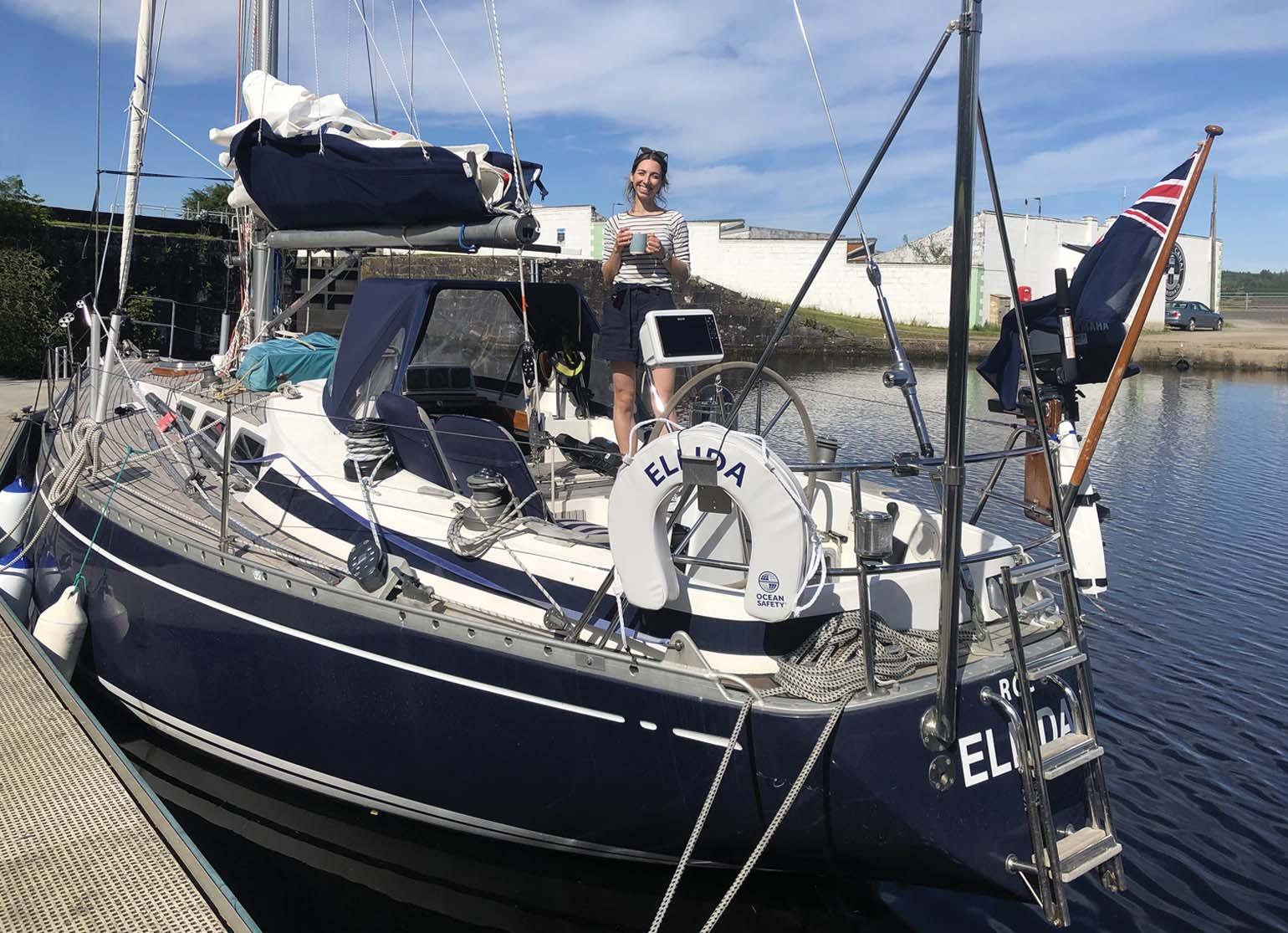
Daughter Katie, who joined me in Ardrossan
 Ardglass
Ardglass
By next day the wind had moderated to 20 knots and veered into the south. The tide was to turn in my favour for the North Channel in the early afternoon so I sailed at mid-day, once again making 7 knots through the water under genoa alone. We came into Lady Bay in Loch Ewan, Stranraer, at 2100 and I dropped the pick for a night’s sleep. An early start next morning got me past Ailsa Craig, into the Clyde and comfortably berthed at Ardrossan marina by 1500.
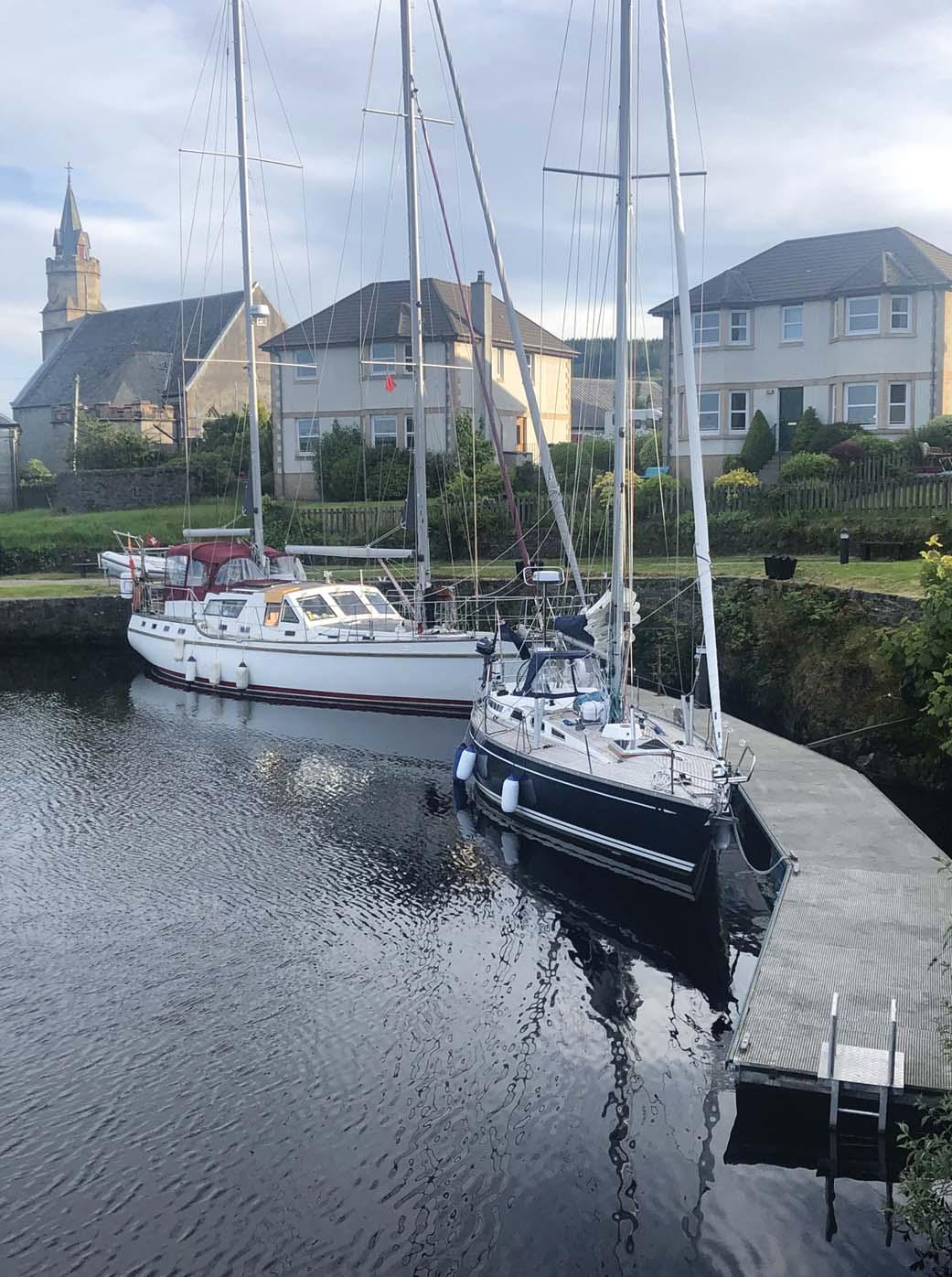
The Clyde to Oban Katie, our youngest daughter, joined me in Ardrossan – delightful and helpful company she was too. On 5th June, our last sunny day for a while, we sailed up the Clyde and Loch Fyne to Ardrishaig. There we entered the first lock for the Crinan Canal, ready for an early start the next day. Only 7½ miles, I had said to myself, easily done in a day, but I’d had little experience of locks. The canal staff were terrific, and from our start at 0800 we found charming and helpful people at all 15 locks. We had a lovely day of canal-barging, reached Crinan just before the 1600 deadline, and were allowed to moor for the night in the sea lock ready for an early start the next morning.
An early start meant 0610 in order to ride the northbound tide. It was cloudy, but flat calm with good visibility, so we motored. This gave us a better feel for the surge of massive bodies of water beneath and around the keel as we shot the Dorus Mor and the Sound of Luing, the dreaded Corryvreckan close to port, and up the Firth of Lorn at 11 knots over the ground. Then on to Oban and Kerrera Marina, where we berthed at 1230.
From there until Stornoway we were part of the the Royal Cruising Club’s Queen’s Platinum Jubilee Meet. The weather was unremittingly awful, but it was a terrific event with some good sailing, convivial company, wonderful scenery when we could see it and memorable experiences. From Kerrera we sailed up to Loch Aline for a night at anchor and then up the Sound of Mull to Tobermory. There, to my regret, Katie left the ship to return to London and work.
On my own, I sailed north round Ardnamurchan (entitling the boat to a sprig of heather at the bow?) and on to Arisaig to rejoin the other RCC boats, navigating the intricate approach channel with much help from Bob Bradfield’s Antares charts. Thence to the marina at Mallaig, where I was joined by Job de Groot and Taco van der Dussen from the Netherlands, old friends and delightful sailing companions. With Skye close to port we crossed to Loch na Dal on the island for an excellent dinner at the Duisdale Hotel. Up at 0415 next morning to catch a ferocious tide up Kyle Rhea, filthy weather through the Kyle of Lochalsh, then a downwind sail to Plockton and a good dinner at the charming hotel. After a day’s rest we had a good beat to windward across to Raasay and up the sound to a mooring in Portree, followed next day by a fast beam reach in a 25-knot southeasterly across the Little Minch, to approach North Harris in half-mile visibility and find a delightful anchorage at Eilean Thinngarstaig in Loch Claidh. Next day we motored up to Stornoway in flat calm for fuel and a minor engine repair, the advantage of the flat water being that we saw several whales, a few dolphins, any number of puffins and one otter. Repair complete by early afternoon, we retraced our steps to the anchorage in Loch Mariveg. On my Dutch crew’s final day we had an easy downwind sail to the marina at Stornoway, where they left and Graham Stoddart Stones joined me. We’d last sailed together across the South Atlantic three years before.

No peace for the wicked – five chummy boats had agreed to continue northwards to the Faroes. The wind was fair, my plans for a quiet day of provisioning and recuperation were dashed, and peer pressure bullied us into an ungentlemanly 0740 start. There was a big sea at the tidal confluence as we rounded the Butt of Lewis, with Cape Wrath visible in the distance, but conditions became easier as we drew north past the desolate Sulsker Bank and North Rona. Indeed the wind was so fair that by the following morning most of us were motor-sailing. I say morning, though in fact it never got darker than
twilight. We completed the 210 miles to Suduroy by 1800 on our second evening, visibility poor in the rain offshore but brightening as we came into Vágur Bay. And brightening is the right expression because the town looks lovely – the Faroese paint their houses in bright colours and the first impression is one of charm and orderliness. We spent two days in Vágur, enjoying a Saturday festival of high spirits, local costumes, rowing regattas and a firework display.
In retrospect, my thoughts on the Faroes are mixed. The people are charming and welcoming. We had some good sailing. The Rak downloadable tide tables are essential for coping with strong streams. We ate well, occasionally exotically. The scenery is spectacular. But overlying it all is the greyness, and the wetness, of the weather, the temperature never above 13°C or below 9°C (55∙4°F and 48∙2°F). The people are busy, cheerful and in no way inhibited by their climate, the houses and vehicles are modern, there is no sign of poverty. Cruising conviviality is challenged, however, by the fact that liquor is sold only in designated and infrequent stores, just at Tórshavn on our route.
Next we sailed to Sandur, a peaceful harbour and village which seems to serve as a dormitory for the capital, Tórshavn, two islands and a regular ferry away. The following day we crossed to Hestur, our course requiring robust geometry against a ferocious tidal stream. We had an eerie night there. The village is pretty and the harbour well-protected with electricity and water on the pontoon, but eerie because we saw no people and no lights in the village, and nobody came by to charge us for our stay and electricity consumption, let alone to welcome us to a bustling hostelry.

Ellida in Hestur at 62°N, with not a human to be seen
We followed this with the relative cosmopolitanism of Tórshavn where we spent several congenial days enjoying cafes, restaurants, a fascinating (if pricey) bus tour and a country hike. A minor disappointment was that we saw no wildlife, although there must be lots of it around.

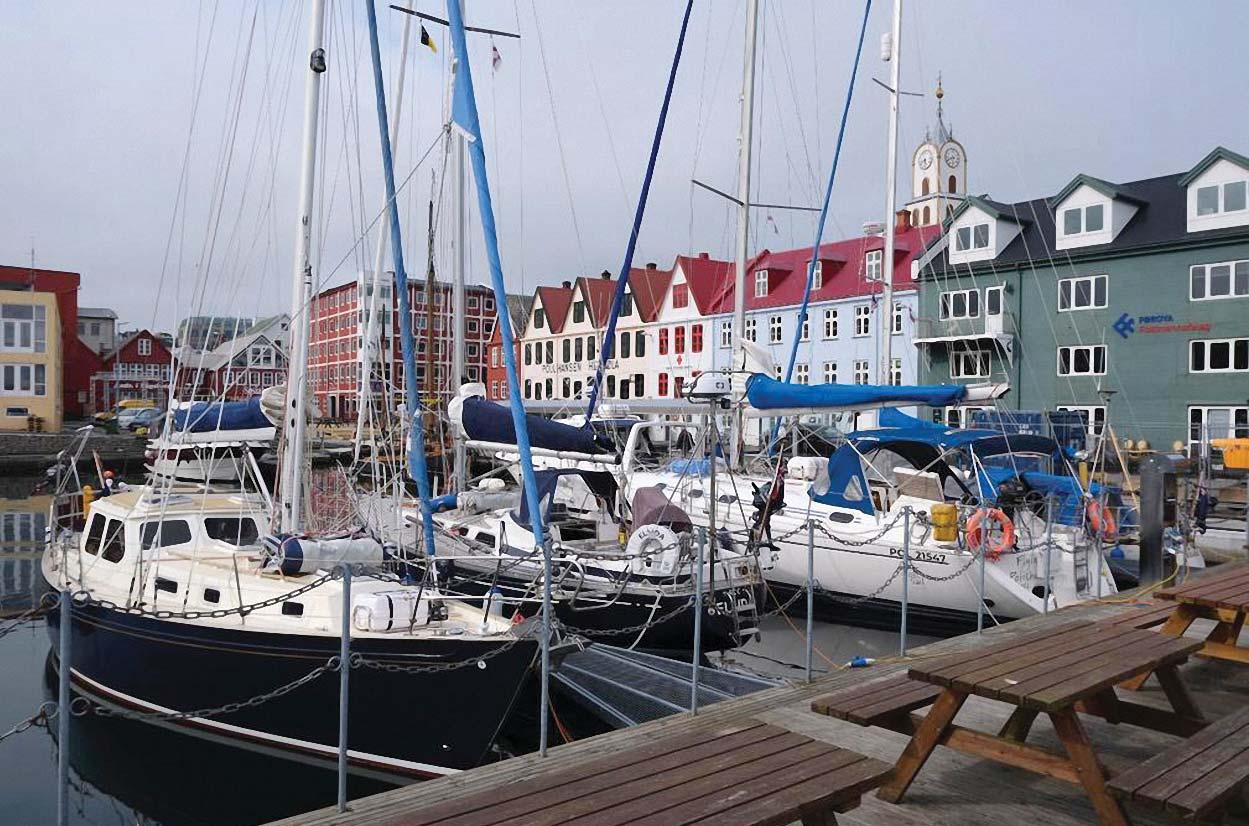
The Faroes were barely affected by the original Covid pandemic. But now, we learned, there was some of it about and a yacht recently departed for Iceland had been struck. Sure enough, on the afternoon of our fourth day in Tórshavn I felt distinctly unwell. Whether it was Covid or flu I don’t know, but I confined myself to the ship. By sort-of good luck, Graham had had Covid a month before so was likely to be anti-bodied up, and he was feeling fine. We had planned to sail the next morning, Sunday, but it was blowing old boots, I did not feel well, and we stayed put.
We sailed at last on Wednesday, at 0815. The reality was that I felt much better once out in the clear sea air. With a stiff breeze on the quarter, a hint
Tórshavnof sunshine and two well-reefed sails we scooted across an unpleasantly lumpy sea. We completed the 185 miles to the Sound of Yell in 26 hours – not bad for the old boat. I had expected arrival to be in the evening and had planned an anchorage and a night’s sleep. As it was we entered Yell at 1130, just as the stream was turning south, so carried on the final 33 miles to Lerwick where we moored at a pontoon in the small boat harbour at 1630. Lerwick is agreeable and friendly, we had pleasant walks, my health improved and there was the merest hint of better weather.
The westerlies threatened to peter out so we left Lerwick at 0700 on 9th July while we still had some with us. In fact we got 14 hours of good sailing in bright if still cool weather before the wind dropped to 10 knots and we motor-sailed. The desolate Kraken oil field and the Frigg gas field went by. At noon on our second day we sighted Utsira, and at 1830 berthed at the marina in Tananger, in time for a good dinner at the (one) hotel.
Tananger, and later Egersund, were colourful and friendly though there’s not much to see in either town. We had meant to keep sailing a little each day, but discovered that a lot of wind seems to cram into the Skagerrak with, while we were there, more pink on the wind chart than anywhere else in Europe. So we were three days at Tananger, before sailing the 45 miles to Egersund with a lovely passage through the narrow channel inside Eigeroy island and staying a further three days in Egersund.
On Sunday 17th July the wind dropped and we motored out into a flat calm. Off Farsund we were into the Skagerrak proper and were rewarded by a southwesterly breeze, giving us 5 knots of boat-speed on a beam reach. That was speed enough. The distance to Thyborøn was 128 miles – too far to make in daylight, but neither did we want to arrive in the middle of the night. The passage was uneventful except for one 30° turn to stay clear of a tanker which showed no sign of having seen our lights or AIS. We berthed on the dock at Thyborøn at 0700.
Thyborøn is a busy offshore-industry and fishing harbour, with a smattering of tourists coming for the beach and an interesting maritime warfare museum which majors on the battle of Jutland. Hvide Sande is more of the same without the museum. We didn’t see Esbjerg proper because the marina is well out of town, it is unfinished and currently has little to commend it apart from shelter. We did, however, get some sunshine and the first warm weather in several weeks.
The feature of note introducing itself in these parts is the shallow water – very Riddle of the Sands. From Thyborøn onwards we were sailing in 10–12m depths, in through the Horns Reef channel beside the huge wind-farm which now adorns the reef, up the long Esbjerg approach channel over an unpleasant sea kicked up by wind over shallows and on down to the German border. The most wake-you-up navigation was the approach to Hornum, just inside Germany, sailing well south of the town before picking up the buoyed channel (port-hand buoys only because the channel is so narrow), a heart-inmouth moment crossing the 5m bar in a following sea, then back north to the town inside a line of breakers to the west. I took good note of the comment in the Cruising Association Almanac that ‘in strong westerlies this coast is a formidable lee shore’.
Graham left the ship in Hornum after a month of excellent crewmanship so, on my own again, I enjoyed a 15–20 knot westerly down the Hornum channel. By now almost indifferent to shallow water, I crossed the mouth of the Elbe through intricate but well-buoyed channels, used a spurt of engine to nip across the continuous traffic in the TSS and entered the Jagdhafen at Cuxhaven.
I left Ellida in Cuxhaven for a month while I got some home-time and allowed the busy season for the marinas and coastal waters of Germany and the Netherlands to cool, finally departing at mid-morning on 24th August on the westerly stream. I crossed the Elbe as soon as I could find a gap in the steamer traffic, like a hedgehog eyeing up its chances at the edge of the M1*, and headed up through the buoyed small-ship channels to the island of Heligoland. The wind was kind during the next two days and I had a good sail to a crowded marina in Norderney, and the next day to Borkum. The notable feature was lots of shallow patches, but generally good buoyage.
On 27th I sailed from Borkum and into Dutch waters, searching for a coastal passage inside the main sandbanks. There is a buoyed inner channel along the coast, the start of which is separated from the main Borkum channel by about 200 metres, with depths in the area between shown on the Navionics chart as 7–8m. I’ll hop across, I thought. Suddenly I was in steep overfalls with the depth down to 3m – a bit closer to low water and I’d have been aground. I was through it quickly, but it was hairy and the clear lesson is that you can’t count on charted depths in areas where the sand shifts. I then had a pleasant sail to the entrance channel for Lauwerzoog and shallow water again. The channel was clearly a good 100 metres from where it was shown on Navionics, but it was well buoyed and I decided to put my trust in the buoyage. Suddenly, I had 100m or so of very unpleasant overfalls as the wind met the outcoming tide from the river, and the boat and I were well shaken. This despite a depth of 10m, and 10m in these parts is like the Mariana Trench. Then, bliss, a lovely sail up the river to Lauwerzoog, in through the Robbengat Sluis (the first of many locks) and into Noordegat marina.
The SMRs are designated routes through the Netherlands where the canal bridges will lift, more or less on demand, to allow sailing yachts to make their passage. It took me seven days to cruise from north to south, a delightful experience blessed by sunny weather.
The first two days took me 40 miles through the Friesland countryside from Lauwerzoog to Harlingen, with an overnight stay in Leeuwarden, both charming towns. The northern canals ‘guarantee’ a minimum depth of 1∙95m, inadequate for my 2m draught, but local advice reckoned I could make it and was just about right.
These northern parts are an interface of sailing and farming. I doubt whether Ellida’s engine has ever inhaled so much methane. The staff at the bridges are alert, you get a lifting bridge and a green light shortly after they see you and through you go. The VHF channel is shown at each bridge and English is spoken (it’s also spoken when the bridgemaster thinks you are dallying and wants you to get a wiggle on).
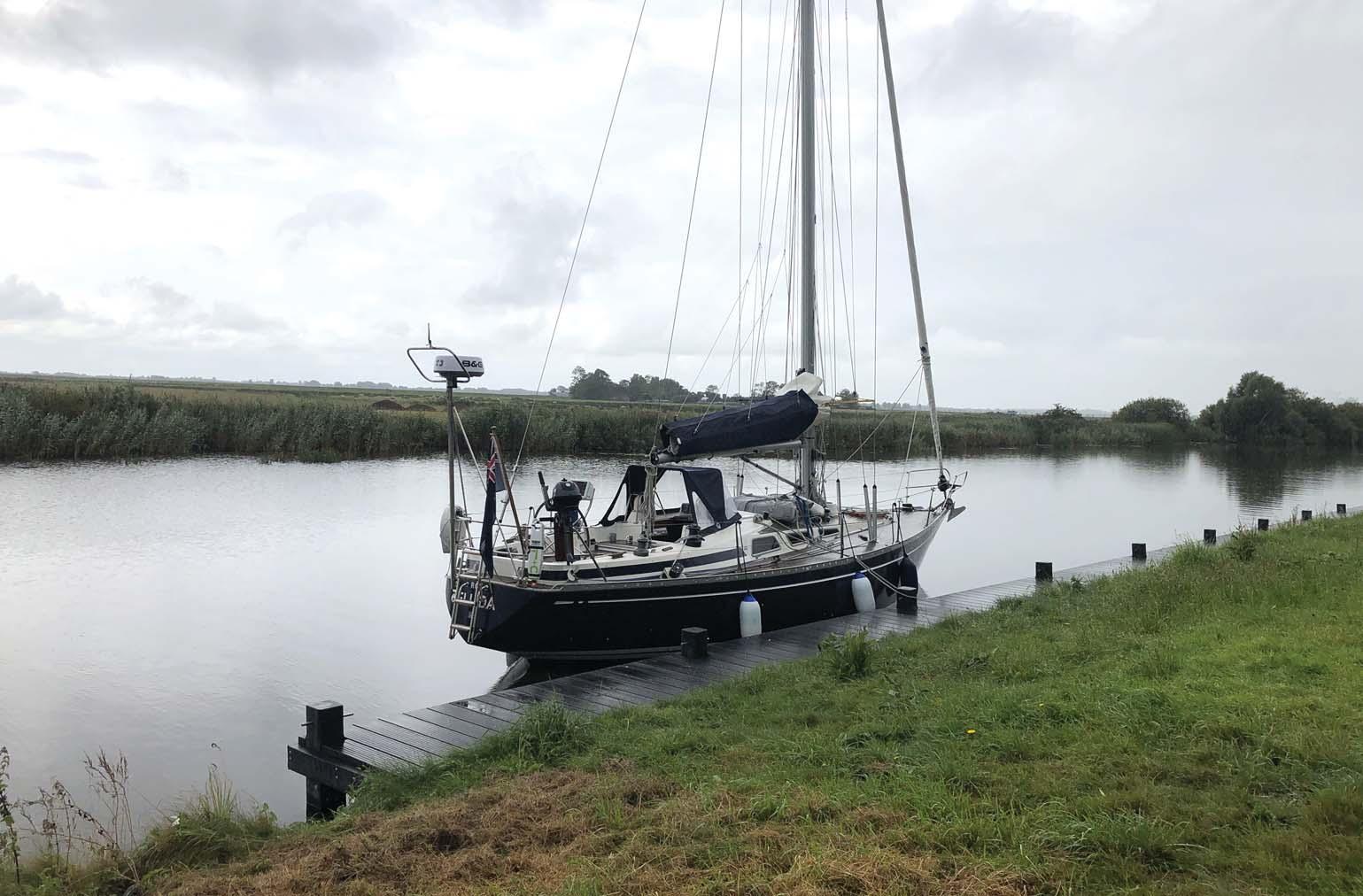
From Harlingen there is a 10-mile sea passage, with a buoyed channel and 4m depth, then a lock into the Ijsselmeer. The lock was cheerfully busy with ten or so yachts bustling to go through. Cue for two policemen to spot my ensign and politely ask for my passport and ship’s papers, no hurry, finish tying that line first, we can see that you’re on your own and busy, but we have a job to do. Much amusement and some moral support among the other yachts. In compensation, I had a lovely sail for the remaining 18 miles to Medemblink.
The next day it was 10 miles to the lock into the Markermeer, and a further 29-mile sail to Marina Amsterdam. As I approached Amsterdam my new cockpit chartplotter failed, taking with it my old wind/log/ depth instruments, all essential in shallow water navigation. This meant an extra day in Amsterdam where I was lucky to find an electrician who could get the instruments running again, though after that I only had a chart plotter down at the navigator’s desk, so much hopping up and down from cockpit to chart table. Who needs a gym?
 Leeuwarden
Leeuwarden
I was joined in Amsterdam by Taco van der Dussen, last seen in Stornoway. It was delightful to have a skilled crew and someone with whom to share the unadulterated fun of the next 24 hours. The famous convoy is a means of getting yachts transiting north or south through the numerous Amsterdam bridges in one go. Our convoy, comprising six boats, gathered in the Houthaven at 2330, got the first of a series of green lights at 0030, passed through the (mostly) sleeping city and moored before the A9 motorway bridge near Schiphol at 0330. We were up again at 0730 for the opening of the bridge at 0800, followed by a long day through the lovely countryside past Gouda, Rotterdam and on to charming Dordrecht, where we moored in the Marteensgat marina at 1840. Dinner in Dordrecht with Taco and old crewmember Bart Nieuwenhuizen, and then I was on my own again.
From Marteensgat marina to the Dordrecht bridge is a mile, the lifting bridge is on the left of the fairway, and then it’s another mile to the junction with the busy Dordtse Kil shipping channel to port. I stayed on the left, aiming to be on the inside of the fairway, could see a big barge coming up the Kil, and slowed down so as to slip to shoreward and then behind it. Suddenly a police launch stormed up alongside me, the skipper shouting that I was on the wrong side of the channel and commenting volubly on my ancestry. He told me to fall in behind him, which I did, thinking that I was being escorted to the penitentiary. In fact he, and I, slipped behind the barge, and then he led me across to the right of the Kil, the way I had been planning to go, and sent me on my way, with a gasp of relief and an unreciprocated friendly wave from me. I muttered sotto voce that I’d had a bridge watchkeeping ticket before that skipper was born, but one doesn’t argue with policemen.
It was 20 miles to a comfortable night at the excellent Sint Annaland marina, then the next day a further 20, nice sailing in a 15-knot southerly, and through the Zeeland bridge before overnighting in Roompot marina.

Once through the Roompot lock it was out into salt water again, rough, tidal, breezy and occasionally thunderstormy. I had a good 39-mile sail to Zeebrugge and its rather stark marina. Here I waited for two days while fresh westerlies passed overhead. The Queen died, and Ellida wore her ensign two thirds of the way up the topping lift. Extemporary etiquette?
After Zeebrugge it was a 40-mile sail to Dunkerque, with an expensive taxi ride to passport control for an exit stamp. Then the next day another 41 miles to Dover with the usual fun dodging across the traffic separation scheme. Two further days’ sailing covered the 65 miles to Brighton, leaving Dover at 0445 in order to catch the tide, then the same on the morrow with 65 miles to the Hamble. I crossed my outbound track at 1425 on 13th September. Total mileage 2654.
An adventurous cruise, part singlehanded, part with excellent crew. The initial object was for old boat and new owner to get to know each other and this was accomplished. I would be flattered if I thought that the boat had as much respect for me as I have for her.

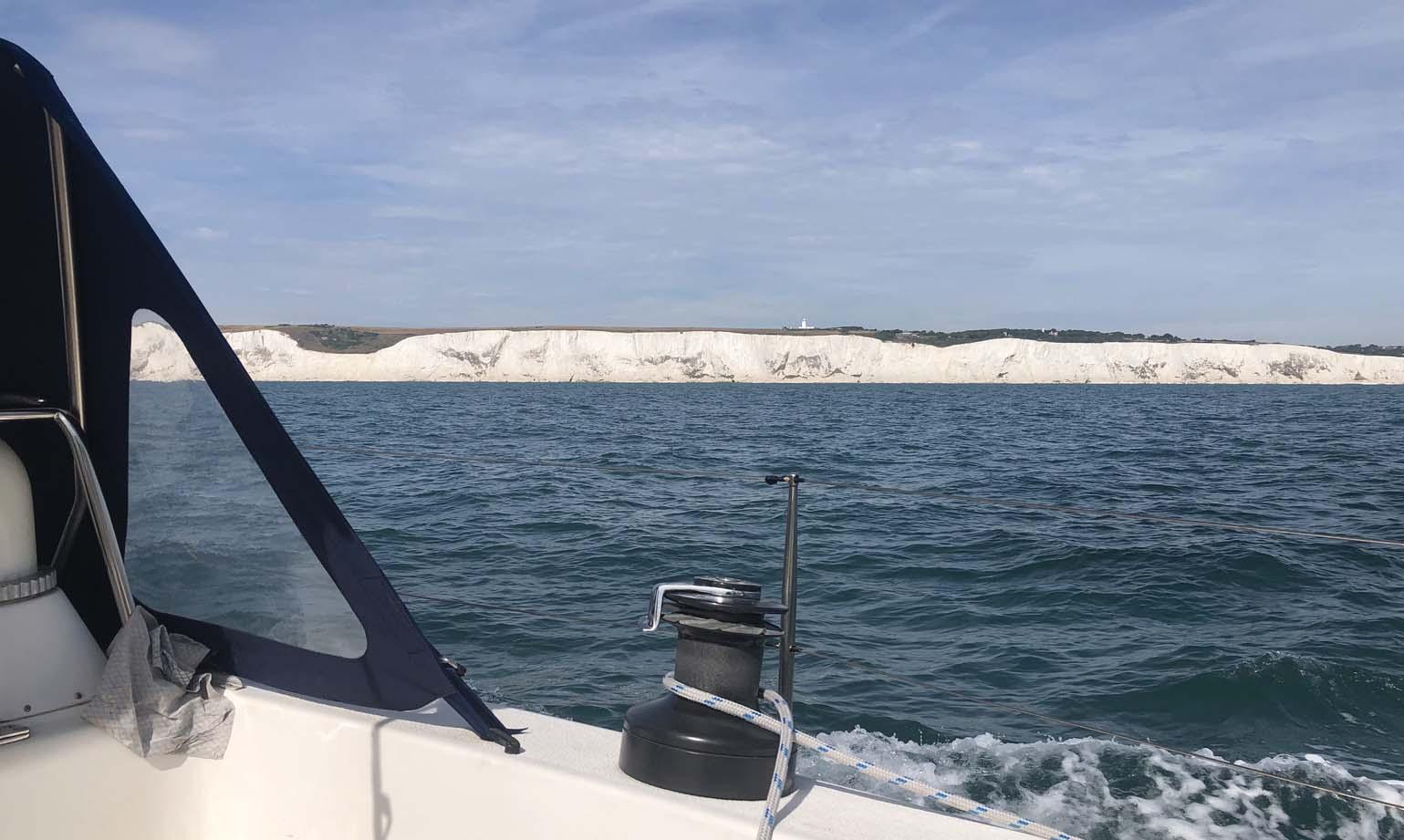
 Back in the Hamble at the end of the cruise
The White Cliffs of Dover
Back in the Hamble at the end of the cruise
The White Cliffs of Dover






(Geoff and Niki lived and cruised aboard Penmar, a 29ft (8∙8m) Westerly Konsort, for eight years, culminating in an Atlantic crossing from the Canaries to Barbados (their qualifying passage) in 2006, after which they sailed up the US East Coast to the Chesapeake. After a few land-based years back in the UK they purchased Spirit of Penmar, a 39ft (11∙7m) Westerly Sealord, in which they completed a North Atlantic circuit in 2013/14 – see Flying Fish 2014/2 and 2015/2. Having sailed Spirit of Penmar back from Portugal during the pandemic and moved to the West Country, at present they enjoy cruising locally.

This article is published as a case study on https://dmstech.co.uk/project/the-evidencebetter-battery-power-for-sailing-boats, the website of UK power solutions company DMS Technologies. The authors wish to be entirely open about the fact that the battery installation on Spirit of Penmar was supplied by DMS. They have been officially ‘trialling’ them to enable DMS to better understand the demands of a long-term cruising boat on the batteries they supply to the marine industry.)
Long periods far from shore in true ‘blue waters’ mean a constant drain on batteries. Navigation instruments, domestic and navigation lights, pumps, fridge, watermaker, autopilot etc all add up and require careful battery management
Away from the convenience of a modern marina where batteries can be charged via a shorepower cable and onboard battery charger(s), one of the primary means of charging batteries is by running the yacht’s engine and charging via its alternator. Modern yachts are normally equipped with efficient marine diesel engines used for departing from and arriving in harbours as well as in windless conditions at sea. Alternative means of charging are possible and indeed recommended. During long periods at anchor and extended passages at sea, battery charging by engine alone may not be practical due to limited fuel-carrying capacity. Furthermore, operating a marine diesel under minimal load can result in excessive engine wear. The most popular alternatives for yachts fitted out for more serious passage-making are wind generators, solar (photovoltaic or PV) panels or a towed water generator, or any combination of the three.
* Absorbent Glass Mat
Powerful charging with wind and solar
Towed water generators provide efficient charging during sea passages


Owners need to assess battery requirements and manage consumption very carefully. A properly planned 12-volt (or 24-volt) battery installation is imperative – around 80–90% of lead acid batteries manufactured these days are AGM, but they vary in specification and the correct choice is vital. ‘Deep cycling’ AGM batteries, which are specifically designed for discharging and recharging, will give many ‘cycles’ over many years provided they are not often discharged below about 50% of their capacity. A dedicated engine starting battery is a different beast and is designed to produce a high burst of power for a short time. It follows that a combination of the two is recommended for a sailing boat with an auxiliary engine.
A charging system which prioritises charging of the engine starting battery is sensible. This battery will have relatively low capacity and can be topped up before recharging the deep cycling or domestic batteries. A battery monitor is a useful instrument, enabling a high degree of visibility and control over consumption.
In calculating consumption, there are many factors to take into account. For example, a fridge operating 24 hours a day and/or perhaps radar or a shortwave radio transmitter will increase consumption markedly. A boat underway overnight with all instruments and navigation lights in use will consume a lot of amps, whilst a boat at anchor with the crew asleep and just an anchor light glowing from the masthead will consume very little. The permutations are endless, but detailed analysis combined with experience should establish a maximum power consumption or ‘draw’.
When we are on passage we reckon on a maximum draw of around 175 ampere hours (Ah) in every 24 hour period, but this doesn’t include equipment such as radar, watermaker or shortwave radio. These could easily add a further 50 Ah draw, making a total of 225 Ah. This is a rough estimate based on our experience and far more detailed information can be found online.
Spirit of Penmar is equipped with a 35hp diesel which provides a maximum 65 amp charge via its alternator. We have a wind generator capable of delivering 35 amps in a gale but averaging 4–7 amps in moderate winds. We also have a small, flexible solar panel capable of producing a maximum of 4 amps ... when the sun shines! We have two separate battery banks, comprising:
1. A Red Flash 1100 with a small capacity of 43 Ah at 12 volts, which cranks out a very high current (around 500 amps) for a short time, for starting the engine.
2. Four deep cycling 105 Ah Lifeline batteries wired in parallel, totalling 420 Ah at 12 volts, for domestic requirements – effectively everything other than engine starting.
This system was designed so that, in an emergency, the batteries could be switched in parallel together to start the engine, making temporary use of the domestic battery capacity. All five are sealed lead acid AGMs and are tried and tested, high-quality batteries. We had a similar set up on our previous, 29ft (8∙8m), boat.
Spirit of Penmar at anchor in the US Virgin Islands with our wind charger performing well in the strong Caribbean trade winds

Why AGM batteries? Well, we are no experts but the key reasons we would recommend AGM deep cycling batteries for marine application are as follows:
1. AGM batteries are sealed and maintenance free and therefore do not spill fluids. Gel batteries, on the other hand, are not completely sealed and over their life will vent small amounts of hydrogen into the atmosphere.
2. Deep cycling AGM batteries are tolerant of being repeatedly discharged to a certain extent, which is critical for longevity on sailing boats where battery drain is not always immediately matched by recharging opportunities.
3. They can operate quite happily in a partial state of charge for a considerable time, though it will eventually be necessary to recharge each battery fully so that all the cells are ‘balanced’ to reach their full potential.
4. They can be mounted in most orientations provided, of course, they are properly secured.
5. They are tolerant of bouncy motion and vibration ... essential in a seagoing environment!
On the other hand:
1. Deep cycling AGM batteries can be more expensive than standard AGMs, but as with most things in life, you get what you pay for.
2. Battery chargers always have to be compatible with the type of battery being charged and a three-stage, voltage-regulated charger is vital for deep cycling AGMs. These can be expensive but are now regarded as the industry standard. If a cheaper charger with no voltage regulation is left on for two or three days it will overcharge and damage the batteries, and is therefore not suitable for unattended marine use.
Part of Spirit of Penmar’s battery set up, showing a bank of 240 volt chargers, two of the four domestic AGM batteries and the dedicated engine starting battery, all securely lashed down

Rolling down the trade winds for 28 days, the windvane self-steering gear helps reduce battery consumption and the towed generator helps keep the batteries charged

3. If fully discharged and left in that state, deep cycling AGMs can be damaged. Because of the limited electrolyte left in a battery, high resistance can occur and it may be impossible to recharge. If partially or fully charged immediately after complete discharge, however, they stand a better chance of recovery than other types.
We have recently replaced our entire battery bank following nearly 11 years of use, including an Atlantic circuit, ocean crossings and a high proportion of time at anchor. The used batteries were returned to DMS technologies where lab testing showed that, although all were showing signs of wear, they still averaged around 80% of their original factory capacity. This is quite remarkable and well exceeded our original expectations. We attribute this performance to the following:
1. Smart voltage-regulated shorepower (240-volt AC to 12-volt DC) chargers were fitted, which are designed not only to charge the batteries but to continue to trickle charge them to bring all the cells into balance. If this type of charging is not carried out the weakest cell in the battery will never reach full charge and battery life will be compromised.
2. Although Spirit of Penmar has a lot of electronic gear, she also carries a wind generator, a solar panel and, for long sea passages, a towed water generator so that every opportunity to recharge can be exploited.
Christmas Day mid-Atlantic and all’s well in our world!
3. Carrying 420 Ah capacity for the domestic load means there is a much larger reservoir of battery power than normal for a sailing yacht. This in turn means that the batteries are less likely to be completely drained, which would make them more difficult to recharge and could ultimately reduce their capacity.
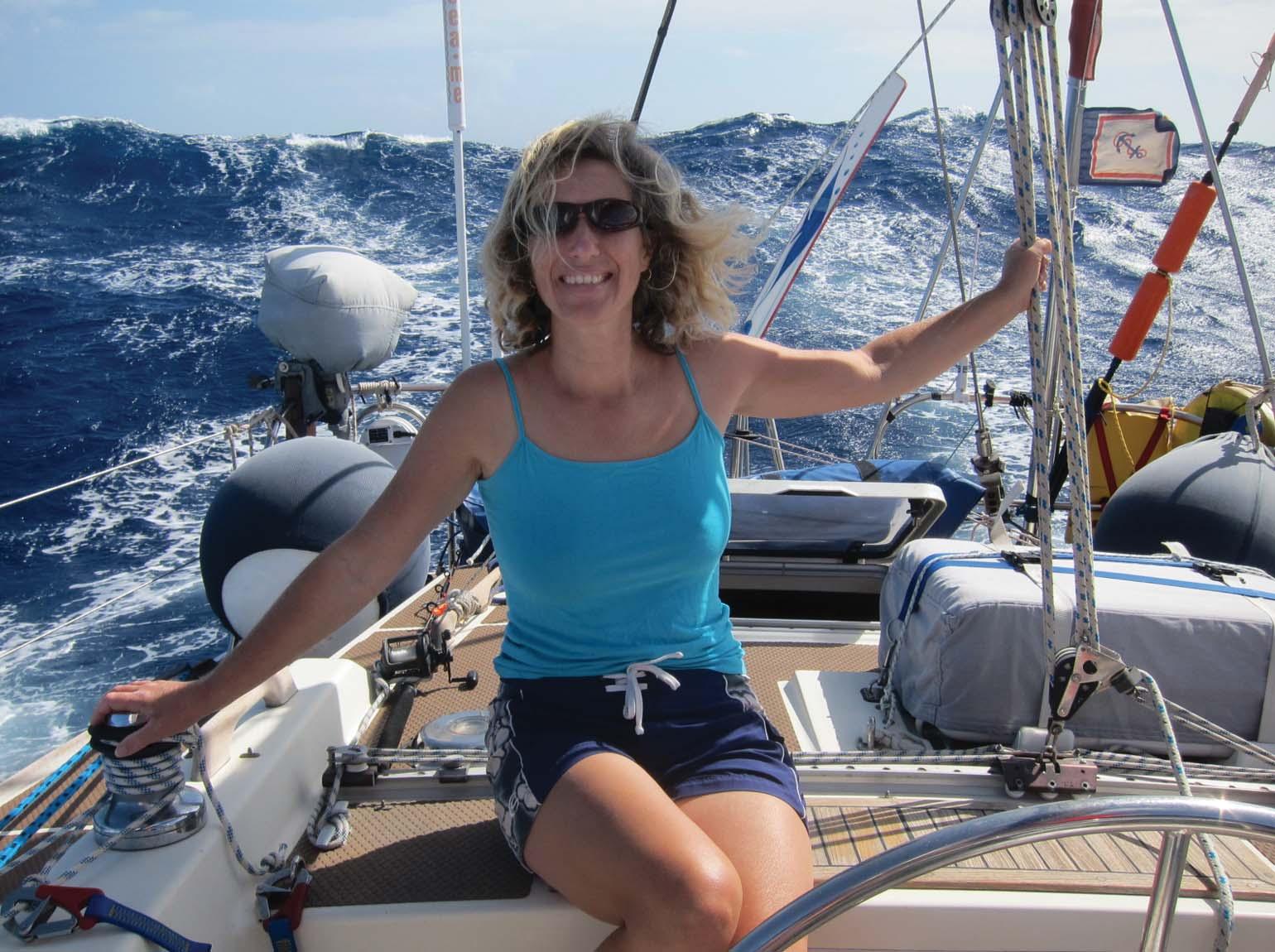
4. Upgrading to modern lower consumption instruments and LED lighting has decreased power consumption markedly.
In years past, builders and owners have tended to view batteries as a short-life, throwaway item. However, with modern battery technology this no longer needs to be the case.
The Sea! the Sea! the open Sea! The blue, the fresh, the ever free! Without a mark, without a bound It runneth the earth's wide regions round; It plays with the clouds, it mocks the skies, Or like a cradled creature lies.
Barry Cornwall, The Sea
















































































































































Superfast internet onboard via WiFi, 4G and satellite

WiFi, 4G & satellite for a complete solution
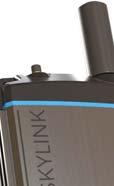



• Iridium 9555/9575 handheld & 9522/LT-3100 fixed phones

• Inmarsat Fleet One and FleetBroadBand FB150/FB250




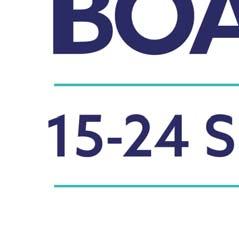





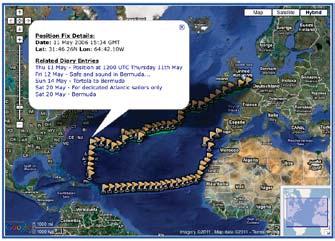
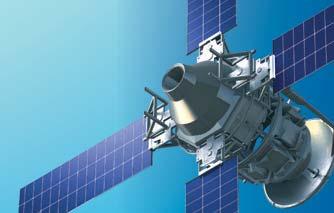



• NEW!
• WiFi boosters and 4G modems
• Airtime and spares for all satellite phones/systems


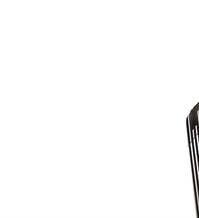

• Excellent after sales service
• Global delivery and technical support





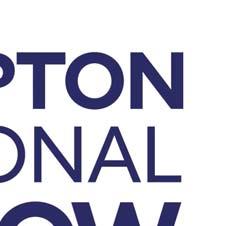





• Who else will you call mid-ocean?
• Email compression services
• Blogging and position tracking
• Weather services - use your favourite weather app!




• Firewalls to control unwanted data usage and spend
(Don’t forget to ask for your OCC discount!) Proud
(This is the story of a 59-year-old Aussie, his 32-year-old, 52ft (15·85m) cedar and balsa trimaran Oceans Tribute, and their 16,500 mile passage from New Zealand to Caribbean. Guy received the 2022 Australian Trophy for the New Zealand to South Africa leg of this passage – see page 13.)
“And you may find yourself living in a cedar and epoxy tube, And you may find yourself in another part of the world, And you may find yourself on the tiller of a racing trimaran, And you may find yourself in a beautiful anchorage, with a beautiful boat, And you may ask yourself, “Well how did I get here?”
I have been Jekyll and Hyde ever since my first Manly Junior dinghy, which I raced and took on camping trips on Pittwater, Sydney. I did some adventurous trips along the New South Wales coast in my Mirror dinghy, whilst also working as an apprentice at North Sails and getting to race on top yachts. All my past yachts had been true cruiser/racers, winning offshore races and then cruising Indonesia, Papua New Guinea and spending two years in the Pacific.
For many years I had a cruising cat and ran an annual rally to Papua New Guinea, the racing being satiated in dinghies on the local lake. During my circumnavigation aboard Sanctuary I joined many race boats in the Caribbean, Med and Cowes – Mr Hyde was gaining the upper hand. In the 2020 Covid shutdown, which Sanctuary and I spent in Panama’s Las Perlas Islands, I rethought the next three seasons aboard Sanctuary in the Pacific and decided to go racing.
Fiona and Chris Jones are to blame for my solo efforts. In 2015, after I had flown a sick crew out of Ascension, they offered their crew for my passage to the Caribbean. I declined the offer and set off from Ascension alone. I had voiced concern that I couldn’t get up the rig solo and Chris had explained Prusik loops. and how to climb by myself. Not two days out of Ascension my forestay toggle failed and I had to climb the rig three times to get things sorted. Thanks Chris!
By 2020 I had made many, many passages solo on Sanctuary, was confident and realised that I enjoyed sailing that way. Then, amidst the juggernaut of OCC advocacy for cruisers with nations across the Pacific.., I learned that a boat I loved was for sale. She was a Crowther design and one I had coveted for some years. I spent the days in lockdown hassling the owner for details, as well as contacting the original builder, past owners and the co-designer and builder of the famous sistership Bullfrog. I spoke to experienced multihull mates regarding whether I could safely sail such a high-performance beast solo across oceans. We compared Oceans Tribute (then named Ave Gitana) with other
1. See https://www.animatedknots.com/prusik-knot to learn about this useful knot.
2. See Flying Fish 2021, p.17.
multis ... she seemed the best for my bucket list, which included fun and fast solo ocean crossings, Caribbean and Med regattas, the Caribbean 600, the Middle Sea Race, the Fastnet and, if I go back across the pond, perhaps a Transpac. A Sydney Hobart Race is also on the list, but they don’t take multihulls.
By September 2020 I was aboard Sanctuary in Tahiti and had bought a boat in New Zealand sight unseen (OCC member John Martin did lots of inspections for me and supervised her delivery to Marsden Cove and subsequent lay-up). I took Sanctuary solo to Bundaberg, up to Cairns for a refit, back to Gold Coast to sell her and then, as soon as New Zealand opened its border to Australians at Easter 2021, I was on the first plane I could book.
Oceans Tribute has circumnavigated twice, competed in OSTAR and holds the solo TransTasman record. The previous owner had lent her to the Magenta Project and Sharon Ferris-Choat and her crew of experienced women had raced her in the Groupama around New Caledonia and in Queensland regattas. I was confident regarding her bones and systems.
BUT ... she hadn’t been sailed actively for three years and had sat on a mooring for two of them. I also had a huge list of changes and improvements to make for my solo ocean crossings and crewed offshore and regatta races.
I arrived at Marsden Cove and was immediately greeted by the most welcoming office and boatyard staff one could imagine. John Martin had facilitated a great storage deal during Covid lockdown and Marsden continued to offer this to me and, seeing me work on the boat, the yard boys would drop by and ask if they could do anything. With various issues I ended up hauling out four times, and each time the staff were fantastic. Later they let me use the sandblasting booth to spray paint.

An inventory of what was aboard and a trip to the previous owner’s container to retrieve other items confirmed that everything expected was there, but often a bit more tired than I’d hoped!
The first major task was to remove an Oceanvolt electric motor and replace it with a lightweight Lombardini diesel. Given that I’m a global sustainability consultant this may seem strange and out of character, but the simple reality was that the battery bank could only drive her for 12 miles, then a small petrol generator would take over six hours to charge up for another 12 miles. For my purposes, and to meet offshore racing safety regulations, I needed a range of more than 12 miles so I refurbished the old saildrive and gearbox, rebuilt the old saildrive mounts and fitted the Lombardini. As it required new exhaust, fuel tank, filters, sea strainer, a new propeller, etc etc this was no small task! Four new 125 ampere hour LiFePO4 batteries with internal battery management systems were also fitted together with all-new high-amp controls and cables. We were careful to weigh everything removed along with the Oceanvolt set-up as well as what went back on with the Lombardini. The weight of the former’s control box, heavy cables, contactors and 48-volt LiFePO4 battery bank was surprising. The diesel, with 20 litres of fuel in the tank plus the four new LiFePO4 batteries, weighed about the same.

I purchased a moisture meter early on and carefully went over the hulls above and below the waterline to check for major issues.
15–18% moisture was typical and appeared to drop to about 14–15% if the outer glass layer was removed (I used the cedar hull piece removed for the saildrive and some through-hull cut-outs) – not too shabby for 32 years old with two circumnavigations already astern. A couple of scary bits on the balsa decks of the amas* turned out to be repairs after fittings had been removed.
A note here re OCC Youth Sponsorship recipient Greg Williams. I had sailed with Greg when he was a trainee with Performance Yacht Racing prior to his passage across both Atlantic and Pacific oceans – see UK to NZ at 20 in Flying Fish 2020/2 – and in 2020 he was one of only a handful of foreign crew allowed to enter the country. By
* A Polynesian/Micronesian term for outriggers.
New signage included the OCC flying fish superimposed on my island logo

2021 he was hanging around NZ and offered to help aboard Oceans Tribute , so he and Karine spent many very hard weeks working on her in some atrocious autumn weather. In addition I was greatly honoured that Ian Johnston, a famous Australian sailor and builder of Oceans Tribute’s sistership, came over to NZ to help with the refit!
So the refit continued – all new dyeform* stainless diamonds and turnbuckles, lots of NKE Marine Electronics boxes to recommission, a new motherboard for the Furuno plotter, sending the AIS off to be reprogrammed, a new liferaft and safety gear (harness lifejackets, tethers, flares, handheld VHF, handheld sat phone and bilge pump). I also bought a spare Iridium GO! from PredictWind.
A major disappointment was the ten 100-watt semi-flexible solar panels mounted on each ama. The previous owner had replaced one brand with another, but the new ones’ junction boxes had leaked and the diodes failed/corroded, in one case causing a significant burn into the balsa deck! I have progressively replaced some of these panels but they remain a major frustration and cost. Given the issues I was having with solar I bought a Watt & Sea generator, which has been a real winner. I’m unable to use it in some starboard tack situations as I didn’t make its mount low enough, but it has basically powered the boat for 16,500 miles and I run autopilot, radar, big screen plotter, AIS etc 24/7. The rudder bearing proved to leak in the first sea trials so I ended up taking her back out twice to reseal it. In the end it required complete removal of the bearings and all new lip seals. Also needed was carbon reinforcement of the tiller and rudder stock and work on the centreboard to tidy up damage.
Launch day. Note the ‘Ocean Cruising Club’ proudly on the transom!
 * High-tech, low stretch wire rigging, with a 30% increase in breaking strength over traditional 1×19 wire and 25% less stretch. Often referred to as compacted rigging.
* High-tech, low stretch wire rigging, with a 30% increase in breaking strength over traditional 1×19 wire and 25% less stretch. Often referred to as compacted rigging.
Oceans Tribute in Cullen Bay, Darwin
By August 2021 OceansTribute was in the water and I was sailing her up and down the coast solo before racing her with crew in the spring. Then I put my thoughts to the extras required for solo ocean crossings. A small but important change was to the Solent jib (also called a 100% jib) which furls (not reefs) on a torsion cable forestay on a load-bearing furler. In race mode, the jib is lashed to the top forestay swivel. Solo I would be unable to drop a damaged sail and imagined a split headsail with the top part flogging away uncontrollably, so fitted a captive halyard with returns down the luff lashed at the furler. This has proved an ongoing source of frustration as the luff tension is always problematic and not easily tightened at sea, but at least if required I can drop it solo!
NKE autopilots have a great reputation. I bought a spare computer and rudderangle sensor and lots of other bits to get it all singing together. Fast boats need to sail to true wind angle downwind, so the mast rotation sensor becomes critical as does the wind gauge etc. I upgraded these, and added wireless remotes to operate the autopilot both on deck and when below. My article in the December 2022 Newsletter describes the problems of the autopilot drives – suffice to say that I have not yet got the original system reliable and have been using a B&G drive unit not made for cockpit use in an exposed and very wet cockpit! I also carry a new, unused B&G drive unit as a spare. In addition I fitted a Pelagic tiller-drive system with its own computer/compass as a completely separate autopilot. It could take the NMEA 0183 wind info from the NKE, but I decided to keep the Pelagic unit fully isolated from the rest of the boat. In the event of lightning it’s disconnected from everything in the hope it will survive a strike...
Preparing for solo sailing on a racing tri wasn’t frivolous. Even though Oceans Tribute was well set up for offshore sailing when I bought her, I added many more items, some solo-specific:

• Longer sheets to take below deck, with cam cleats
• Four reefs in the mainsail, and five in the new main fitted in South Africa
• A heavy staysail with reef, plus storm jib

• Drogue and sea anchor
• Three independent nav systems – Furuno plotter, phone and tablet with Navionics, and Laptop with Open CPN
• A sextant and emergency tables
• Weather forecasting using Iridium GO! from PredictWind, with a spare Iridium GO! carried
• Radar and AIS alarms always on and wired to a 90-decibel alarm
• Wind speed and boat speed wired to 90-decibel alarms
• A boom preventer and only a furling screecher* (no top-down or socked spinnakers used solo offshore)
• New liferaft, fire extinguishers, flares, grab bag and handheld VHF
• New solo mast climbing gear plus helmet
• Custom Muir manual anchor winch and roller installed at the port forward beam, removable for inshore racing
1. OpenCPN is an open source Chart Plotter Navigation system, with apps for laptops and phones and accepting a wide source of charts.
2. A multihull term for a very large sail set flying, used downwind and for reaching.
Rig check in Cocos Keeling, also showing the solar panel array on the amas
It’s 16,500 miles from New Zealand to Antigua...

The story of my early crewed racing off New Zealand, solo passage north to New Caledonia, across the Coral Sea to Australia, and then across the Indian Ocean to South Africa via Cocos Keeling and La Réunion appeared in the December 2022 Newsletter, available online at https://www.oceancruisingclub.org/members/newsletters.
I made landfall at Richards Bay, where the Zululand Yacht Club is one of the gems of a circumnavigation via Africa. This was my second visit and I immediately felt at home. The ‘scurrilous’ boatyard contractors, the bar regulars, their active sailing programme and the cruisers whom I already knew made for a very enjoyable month.
John and Jenny Franklin came for a visit and we formally presented Natasha Wolmarans with her Port Officer Service Award. Her help to me was exceptional, but I discovered that I wasn’t special and that every arrival gets the VIP treatment. I replaced a fridge unit, went for a few twilight sails, took a one-day trip to Umfolozi Game Reserve, attempted repairs on the errant autopilot drive unit and it was time to leave.
I was aiming to make the Caribbean by New Year, and jumped in good weather to Durban, East London, Port Elizabeth and Cape Town. Having had a wonderful welcome at
A new mainsail was ordered from Zoom Sails and fitted in Port Elizabeth

Simon’s Town in 2015 I had hoped to go there, but the tri couldn’t be accommodated. After a minor panic I ultimately got a berth in the V&A Marina, the police launch vacating her berth for the duration of my stay! Oceans Tribute and I were made welcome by the marina staff and felt like royalty, though the credit card wasn’t so pleased. Some minor work to expand the boom bag to accommodate a new mainsail and I was ready to be off again.
I had huge hassles with my outbound clearance due to Covid issues, resulting in an 18-hour delay in departure and only very high-level intervention by Robert Ravensberg, Port Officer for Cape Town, got me cleared out. On 7th December I finally left Cape Town, motoring past Robben Island in a flat calm. For the first four days I had very flat seas and light winds and averaged 9 knots, relatively slow for the tri. I used PredictWind weather routing and looked at their six available models for making sensible decisions. About day four half the model routes had me diving west to go up a split in the South Atlantic High. Fortunately I didn’t take any notice and kept east of the main high, slow but still moving. By day six I had sailed 1250 miles and was settling in.

The next week was spent gybing downwind, still in easy winds and almost flat seas. Using an old screecher I had bought in Sint Maarten some years previously we idled along. Nine days out we’d sailed about 1900 miles with the gybe angles and were 1755 miles from Cape Town. Looking ahead at the models to cross the doldrums, the usual cruisers’ route just skirting Fernando de Noronha wasn’t an option with a big calm right along the Amazon coast and the east-setting counter-current to the north of that. Instead I kept heading north to get the best crossing of the intertropical convergence zone and keep north of the counter-current. Christmas Day was ‘convergence day’ with a full 24 hours of drifting in almost flat calm from one stationary squall cloud to the next. I went from screecher and full main to staysail and three reefs and back again so often I lost count. No electric winches, so a choccy was issued after each sail change (well okay, a few choccies...).
Boxing Day was even more fun. At about 0500 the radar showed a huge cloud/rain band to the north. It took many hours to slowly sail through the local showers and calm and then get through the very heavy rain in the front – so heavy that the seas went flat. Until
typical south Atlantic evening, flat seas, light winds ... gorgeous!
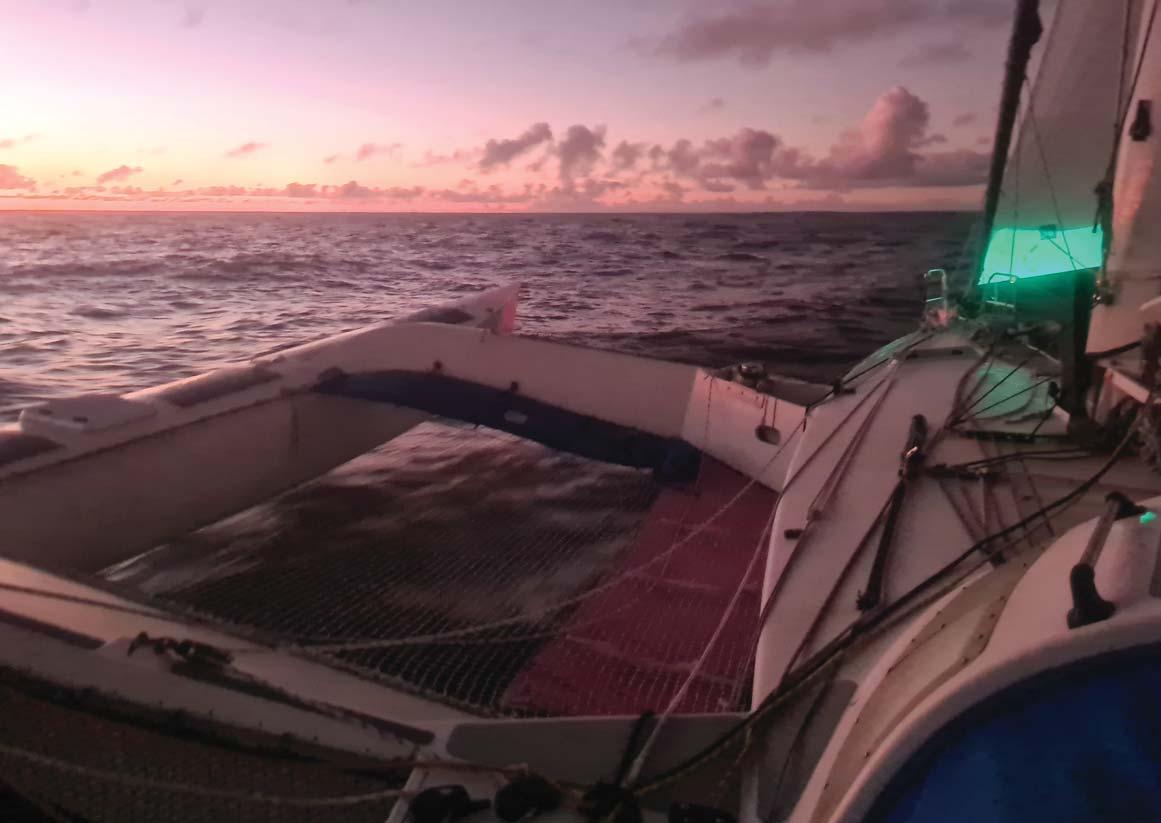
then if there was any gradient wind it had been from the southeast, but as soon as I popped out of the rain I found 20 knots from the northeast and a 3m northerly swell! Given my planned route north of the counter-current I still needed another 300 miles or so of northing. This made for very rough close reaching in 15–25 knots, with an almost head swell of 3m plus the 2m northeasterly seas generated by the wind.
Conditions were very wet and wild and it was hard to do anything. Every so often there was a big slam and at one point I fell over onto my carbon table – the alloy bracket bent, not the custom carbon! No cooking, no kettle, even slicing some cheese was difficult. I reefed down to three reefs and staysail and slowed as much as possible for the night. Mostly she sailed happily at 9–10 knots, but every so often we took off at 15–16 – very wet.
 The screecher up on a westward gybe angle to get around the South Atlantic High
The screecher up on a westward gybe angle to get around the South Atlantic High
The following week saw another 2000 miles pass uneventfully with the screecher up. 250-mile days were usual and, apart from gybing to miss Guadeloupe, I was mostly on course. I made landfall at 2200 on 2nd January, anchoring in Sanctuary’s usual spot in Falmouth Harbour, Antigua. This was the completion of an inadvertent, largely solo circumnavigation in Sanctuary and then Oceans Tribute. It hadn’t been the aim, but an achievement within three years nonetheless. Had a quiet little rum.

The passage had taken 27 days. The direct course covered 5500 miles but we had actually sailed over 6300 miles with all the downwind gybes, so had averaged 230 miles per day. I was very happy with this as we’d had a lot of light, downwind sailing with no spinnaker – I was only using the very second-hand screecher (more like a big jib than spinnaker) off Sanctuary. Overall the passage had been pretty uneventful. The L&S autopilot drive failed after 24 hours, a soft shackle chafed, the Watt & Sea generator lost a blade and then blew out its tiedown strop (both due to sargassum weed). The new mainsail was great, every reef being a nervous process to try and avoid damaging the leech.
 The final sunset before landfall in Antigua
The final sunset before landfall in Antigua
Oceans Tribute doing 22 knots in 20 knots of breeze during the Round Barbados Race
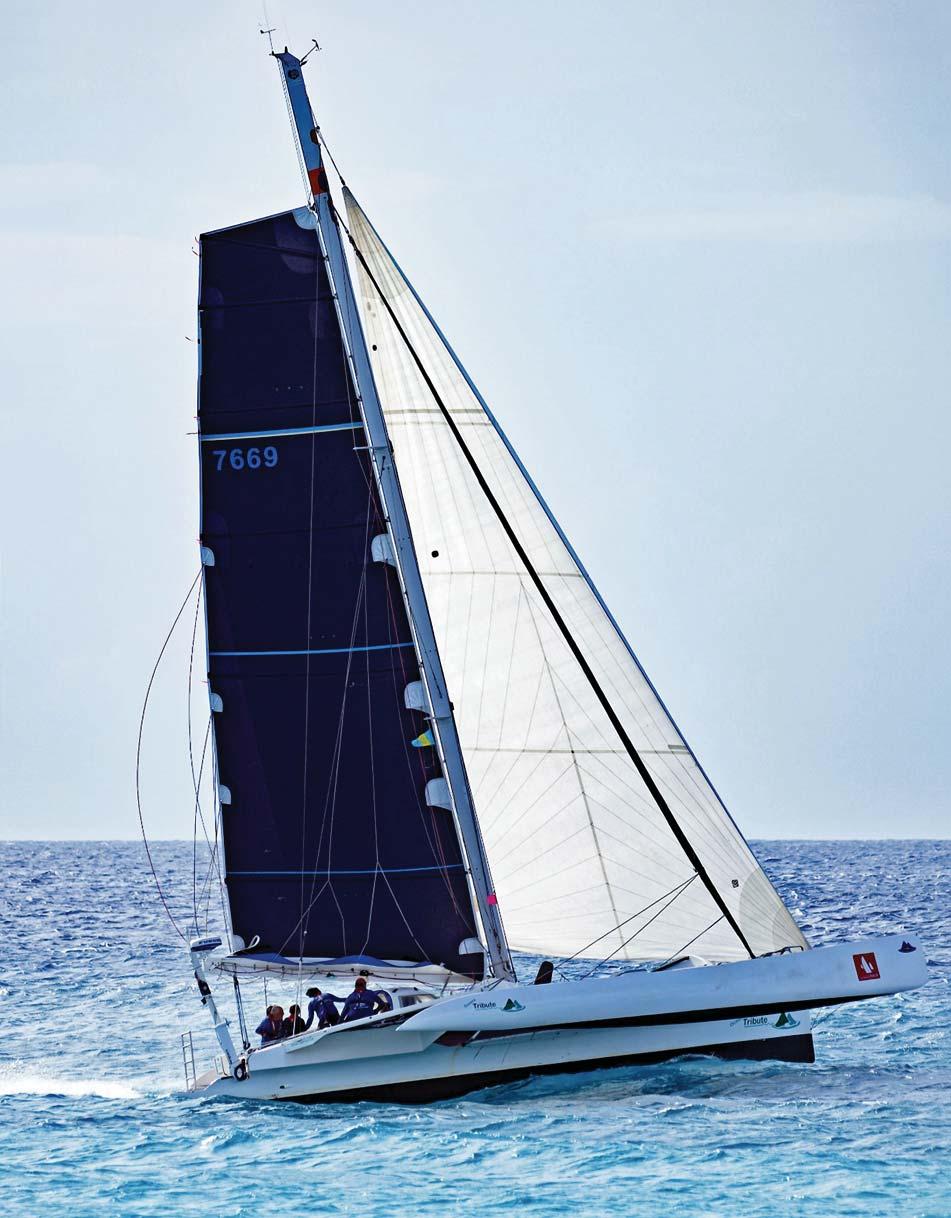
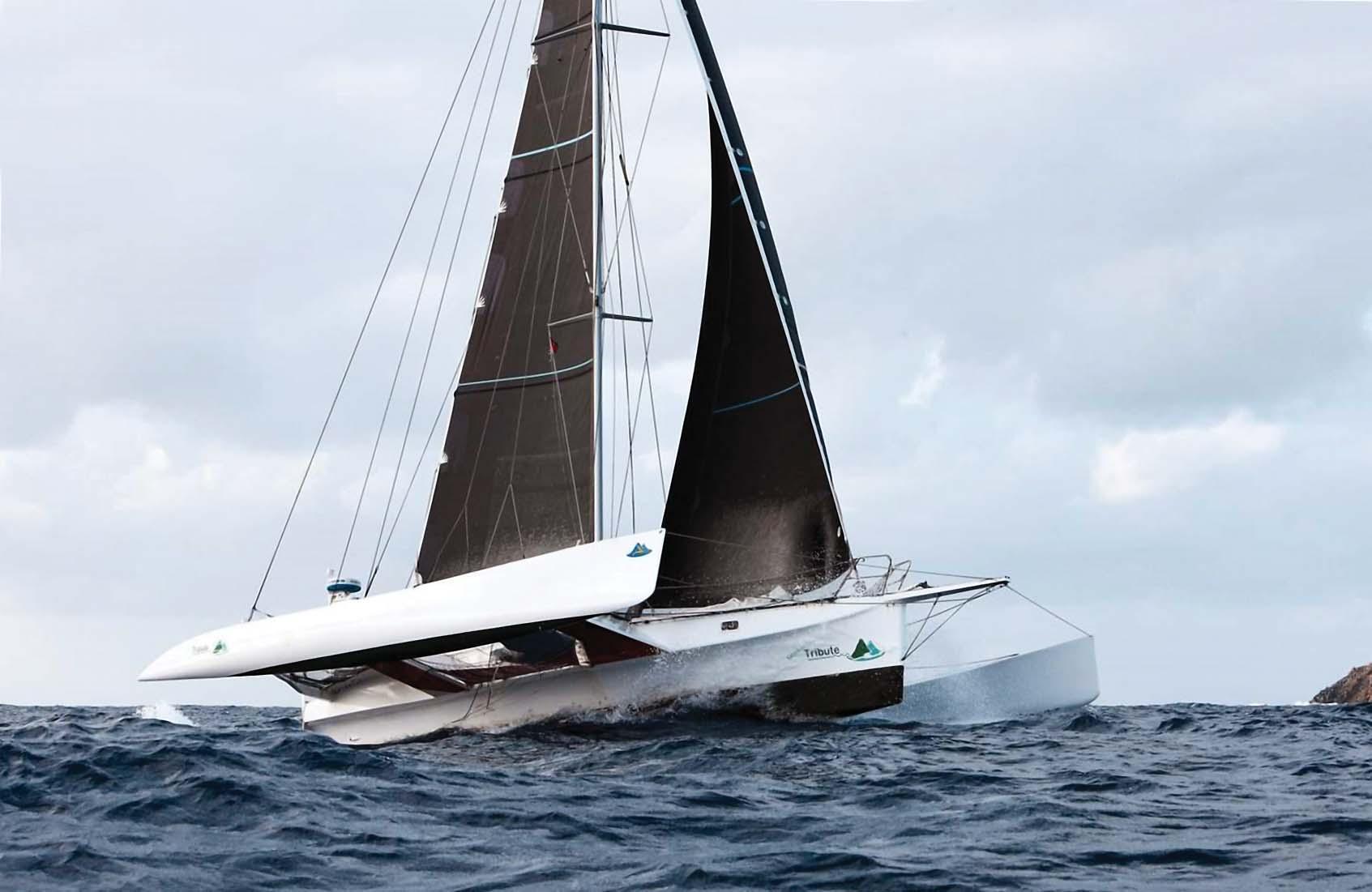
Over the 16,500 miles from New Zealand to the Caribbean we averaged 10 knots. To achieve a 10-knot average you are mostly sailing at 11–12 knots and regularly into the mid-teens. On one occasion the GPS recorded a top speed (15 second average) of 24 knots, though I don’t actually recall going that fast – I was probably asleep! Going downwind I mostly sail ‘low’ VMG (velocity made good) angles of 145°–150° TWA (true wind angle) as this is easier on the boat and on me. In race mode much hotter angles get better VMG, but this needs ‘sheet in hand’ sailing. When sailing solo there is often an extra reef in, or the
for the likely next gust/squall so it doesn’t become a panic.
screecher is put away. The boat is usually set up Racing round St Barth during the Caribbean 600. Photo RORC Photo Richard Freeborn
Photo Richard Freeborn
Dr Jekyll’s aim was to do some long, solo ocean crossings, and 16,500 miles from New Zealand to Antigua should keep him happy for a while. But I’m writing this in full Mr Hyde mode. After arriving in Antigua I was joined by crew to sail down to Barbados for their sailing week (winning the round Barbados Race), then up to Sint Maarten for the Caribbean Multihull Challenge, then back to Antigua for the Caribbean 600, then back to Sint Maarten for the Heineken Regatta... Now I have a couple of weeks off before the BVI Spring Regatta, then Les Voiles de St Barth, then Antigua Sailing Week. All these with full crew etc, a major logistical exercise. After that I’m thinking Mr Hyde can take a rest and some slow, solo Dr Jekyll cruising down to Grenada and Trinidad might be in order.
“Letting the days go by, let the water hold me down Letting the days go by, water flowing under hulls, Into the Blue again after the money’s gone Once in a lifetime, water flowing under hulls, Same as it ever was...”
(after Talking Heads, Once in a Lifetime)


... to make the parties as easy as possible to set up and run. If you are feeling adventurous, try the Sunflower Raft for a truly memorable gathering.
70th Anniversary House Flag


... available from the Club Secretary now. Fly yours throughout the year and particularly at your OCC parties.

OCC Cocktails
... we challenge you to produce a yellow and blue anniversary cocktail. Share your cocktail recipes!



... capturing the spirit of the celebrations. Raft ups, cocktails, 70th anniversary flags, parties: submit your best snaps.
... and invite other yachts at the anchorage, they might not know yet what the OCC is all about.
When there’s a gathering of yachts in an anchorage there’s an excuse for an OCC 70th Platinum Anniversary Rendezvous Party! Everyone has a part to play in making 2024 a year of fun out on the water.
Larger social events and cruises in company are planned in Japan, Fiji, New Zealand, Stockholm, Australia, eastern USA, Bahamas, the Mediterranean, the Macaronesia islands (Azores, Madeira, Canaries and Cabo Verde islands) and more … wherever you are cruising in 2024 the Ocean Cruising Club will be celebrating! Look out for the latest information in the OCC’s eBulletins, on the OCC Website and the OCC Members Group Facebook page.
“A year of celebrations around the world”
(Ellen is a frequent contributor to Flying Fish and the only person in its 32-year history to have twice received the David Wallis Trophy, awarded for the ‘most outstanding, valuable or enjoyable contribution’ in the previous year – see page 6.
She and Seth, who now live in Hawai‘i, have sailed some 60,000 miles together, including a circumnavigation in their early 20s. Celeste is a 40ft LOA cold-moulded wooden cutter, built in British Columbia in 1985.
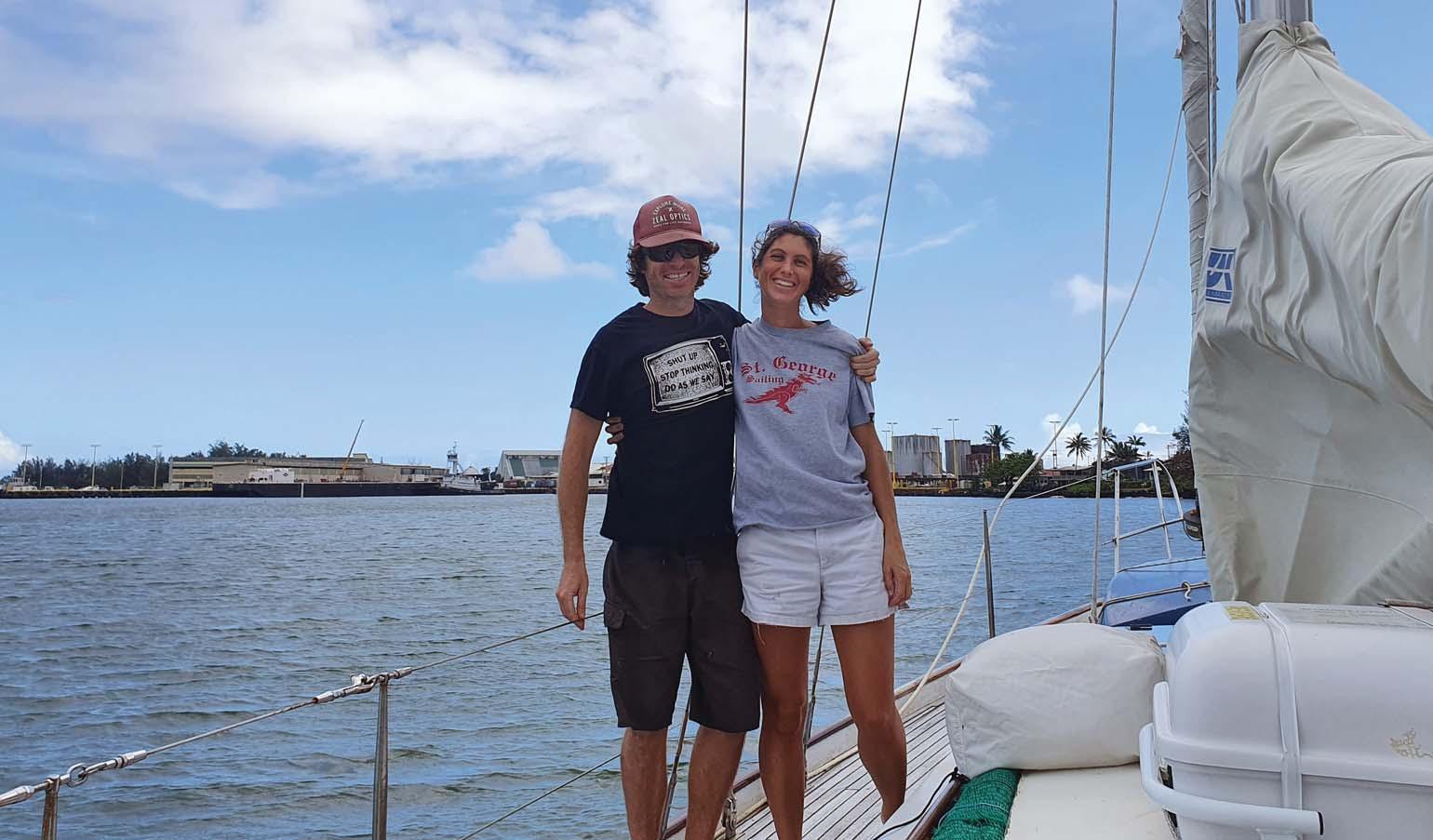
Photographs by Seth Leonard and Ellen Massey Leonard.)
‘Nothing goes to windward like a 747’ is, in my opinion, one of the most amusing aphorisms about ocean sailing. I’ve taken a 747 upwind – the flight retraced my earlier downwind sailing route across the Pacific. I’ve also done a considerable amount of upwind ocean sailing. The 747 was a lot more comfortable, but then again, comfort and security aren’t why we sail, are they?
Towards the end of 2020 Seth and I found ourselves making what proved to be a close-hauled passage of 2400 miles. Like most upwind passages, it was fun in retrospect but not so much at the time. It was a rough three weeks, pounding into confused head seas with never much less than 20 knots of wind. Looking back on it, though, it was one of the richest passages we’ve ever made, thanks to the abundance of rare and beautiful marine life that we were lucky enough to see.
By November 2020 Celeste had been in French Polynesia for almost 2½ years. We had kept up with her most-needed maintenance but had deferred certain larger projects for our eventual return to the States, where parts and supplies would be cheaper and easier to Ellen and Seth aboard Celeste at the end of the passage
obtain. Due to a combination of work obligations and the uncertainty generated by the pandemic, the time had come for that return. It was time to sail Celeste to Hawai‘i.
We knew it was going to be an upwind passage, with all the forecasts predicting strong headwinds. Had we been able to wait until April or May we would likely have encountered much easier conditions than we did. The same would have been true had we been able to set off from the Marquesas (about 500 miles east of where we were anchored in the Tuamotu archipelago). Neither was possible, however, so we just had to stow our whining and sail.

November in the southern hemisphere is late spring, early
Celeste at anchor in the Tuamotu archipelago
 Sailing to windward from Rangiroa to Hawai‘i
Sailing to windward from Rangiroa to Hawai‘i
summer and the weather patterns are markedly different to the winter weather patterns. To begin with, it is the start of cyclone season, although cyclones in French Polynesia are uncommon and become even less likely the farther east you go. Summer brings much more heat and humidity and calmer, shiftier winds. Most important for Seth and me, however, was that the southern trade winds shift from the southeast into the northeast. This makes sailing north a whole lot tougher.
Knowing that we would soon be leaving French Polynesia for the indefinite future, we had spent our last few months there in our favourite islands, the Tuamotu (see Flying Fish 2022/1: Sailing and Diving the Many Motu). These islands are atolls – flat rings of uplifted coral surrounding lagoons. They’re not the lush mountains abounding with tropical fruit that one thinks of as quintessentially South Pacific, but beneath the surface they’re staggering – sheer walls of coral plunging to a bottomless abyss, canyons teeming with fish finding refuge from the ripping currents, and phalanxes of sharks patrolling the passes into the lagoons for their next meal.
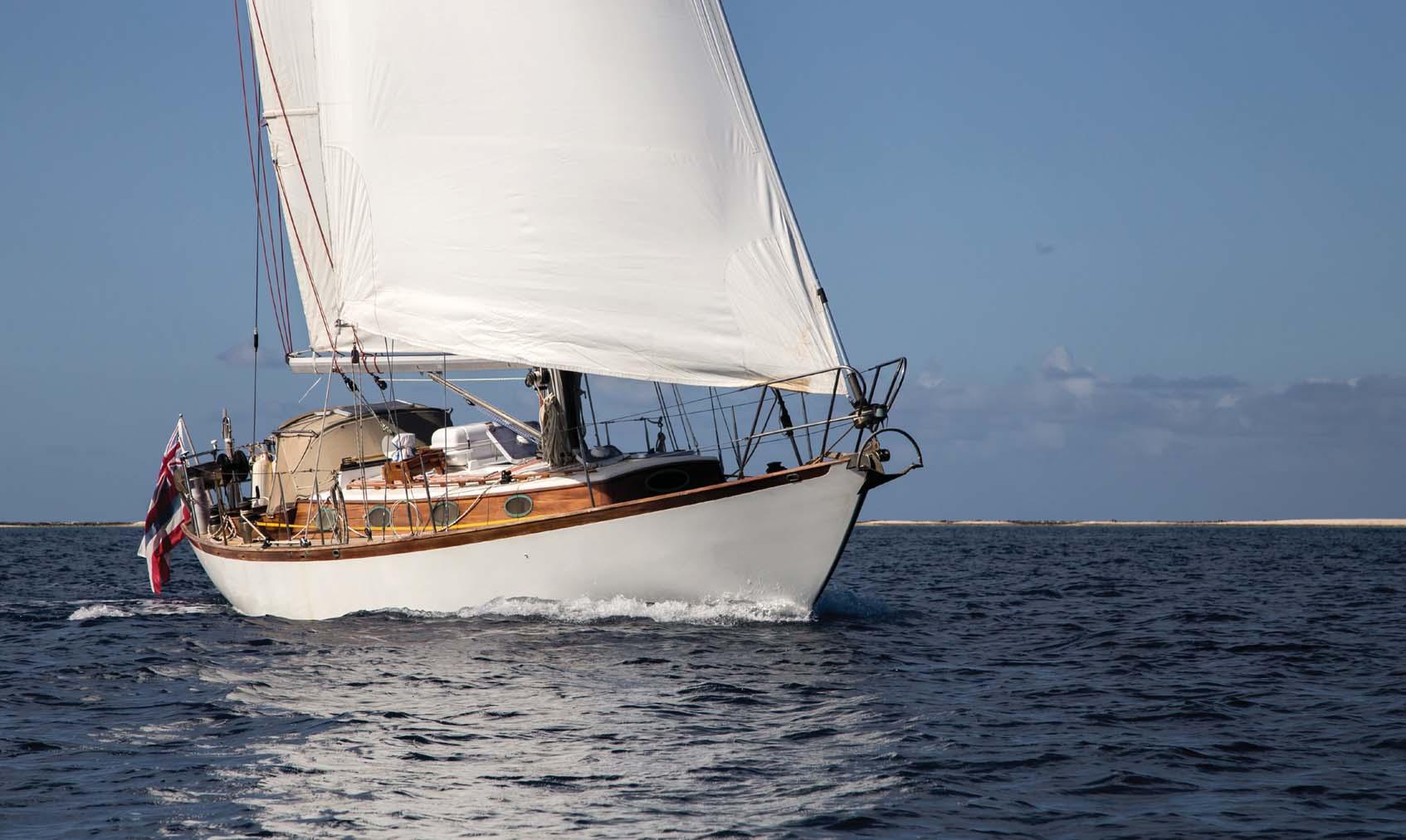
 Celeste under sail in the Tuamotu
A grey reef shark seen while scuba diving in the Tuamotu
Celeste under sail in the Tuamotu
A grey reef shark seen while scuba diving in the Tuamotu
By October the summer pattern of northeast winds had established itself in the Tuamotu. We stayed alert to any weather window that might allow us to sail northeast to the Marquesas in search of a better wind angle, but there was nothing. So we cleared out of the country with the gendarmerie in Rangiroa, situated at the northern end of the Tuamotu chain and the only island in the archipelago that is an official port of entry. Thus began our 2400 miles of upwind sailing.

Before leaving, and throughout the passage, we consulted weather forecasts from OCENS WeatherNet. We receive these GRIB files over a sat phone and an OCENS Sidekick wifi router/firewall. (The latter is designed to accept only compressed files to ensure you don’t accidentally chew up a lot of expensive sat phone minutes.) The forecasts showed the northeast winds gradually veering into the east near the equator and then finally southeast just south of the Intertropical Convergence Zone (ITCZ) at around 6°N. Winds in the ITCZ were predictably shifty and light. North of the ITCZ, beginning around 10°N, the winter trade winds of the North Pacific were blowing hard from the northeast.
The rhumb line route from Rangiroa to the Big Island of Hawai‘i is only slightly west of north. The trick is to stay as far east as possible, or even to make some additional easting, before reaching the strong northeast trade winds, thus ensuring a better angle on the wind. This adds mileage, of course, but one hopes that the additional time at sea is worth it for better sailing. This strategy was going to be difficult for us as the wind was blowing from the northeast already, so we decided just to point as close to Tiputa Pass, Rangiroa at slack tide. The current is very strong on ebb and flood
the wind as possible without it becoming intolerable ... or too slow. Slamming into steep seas while sailing close-hauled can kill Celeste’s boat speed, as her displacement is relatively light for a cruising vessel. We decided that any easting we lost we would make up again in the more favourable winds just south of the ITCZ. If at all possible we wanted to cross the ITCZ at around 145°W, about 2° east of our departure point, thus allowing us to fall off onto a decent reach for Hawai‘i once we entered the NE trades.

Rangiroa’s beautiful bottlenose dolphins gave us a superb send-off as we sailed out of the lagoon through Tiputa pass. We felt we knew these dolphins well after a few weeks of snorkelling and scuba diving with them. It lifted our spirits to watch them as we sailed away from a place so special to us. We wondered if they were even the same dolphins who had given us a send-off more than a dozen years earlier when we’d visited Rangiroa during our circumnavigation. We hoped we might see them again someday, on another voyage. Then we were out in the ocean swell and wind waves. Celeste heeled right over and Seth and I decided we should cook something easy for dinner that night while we found our sea legs.
After a day and a half of shipping spray over the bow, the wind moderated and we could shake out a reef. Soon thereafter we were visited by a big pod of dolphins, jumping clean out of the water. We could tell they were not spinner dolphins, with which we’re familiar from both French Polynesia and Hawai‘i – they were longer and darker and didn’t spin when they jumped. We didn’t think they were bottlenose dolphins either, as they looked more slender. We spent considerable time looking through our marine mammal book until we thought we had identified our cheerful visitors as rough-toothed dolphins. That was a first for us. We’ve seen common dolphins, bottlenose dolphins, spinners, pilot whales, different porpoise species, several species of whales, but not these
A rough-toothed dolphin jumps next to Celestesleek creatures. Between our new dolphins and the beautiful weather, it was the kind of day that reminded us why we love sailing. Our pleasant day soon ended, unfortunately, and by nightfall we were back to a double reef, then a triple reef, with the rail under and spray soaking the dodger. Spaghetti for dinner again.
The wind was veering, however, and we were actually able to make some easting by remaining close-hauled. Although we had sailed a little west of Rangiroa’s longitude at the beginning, we gradually headed further east and, by the time we were ten days into the passage, we’d achieved the 2° east that we’d hoped for. Around that time we also got another reprieve of lighter winds and mellow sea state, letting us get the camera out and photograph the remarkable bird life that stayed with us throughout the voyage – petrels, storm petrels, shearwaters and tropicbirds. One shearwater we spotted that day had just caught a squid.
More marine mammals came to visit, this time a small pod of dark-coloured creatures, about 8ft long, with distinctive rounded foreheads and dorsal fins set fairly far back on their bodies. They swam slowly. They approached Celeste but that seemed to satisfy their curiosity and they went off again without bow-riding like so many dolphins do. We could see them distinctly through the clear pelagic water, unusually calm for this passage, but unfortunately we couldn’t get a good photo as they never fully lifted their faces above the water. There was something magical about them – they seemed so peaceful and calm – and we were both captivated. After sailing through buffeting wind and waves for the previous week or so it was wonderful to observe such serenity. Just watching their unhurried pace calmed us both, and reminded us yet again how rich and beautiful the natural world is. That’s one reason we sail after all, to find a deeper connection with our watery planet than is otherwise possible.
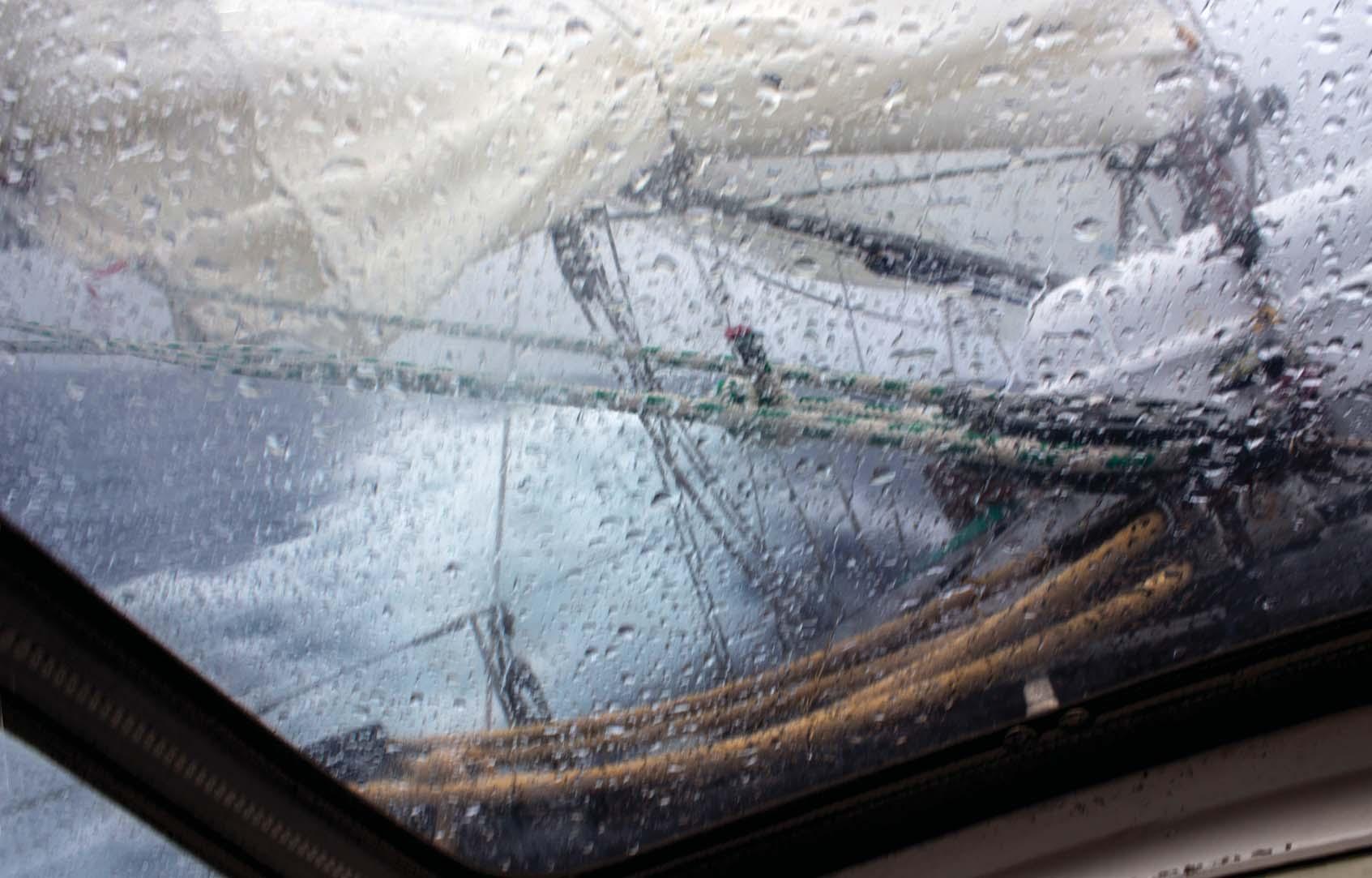
We have a quick-reference poster for marine mammals taped up in the companionway, and with this we came to the immediate and definite conclusion that these were pygmy orcas, also called pygmy killer whales. The melon-headed whale and the false killer whale have the same rounded head but, from looking at the poster (which includes all three of these species) and then at our cetacean visitors, we were certain they were pygmy orcas. Once we arrived in Hawai‘i, however, we began to doubt ourselves. Apparently pygmy orcas are rare, or at least rarely seen. The IUCN Red List* has them as ‘data deficient’ and, according to NOAA*, ‘Not much is known about them, and they are considered naturally rare’. The first recorded sighting of a live

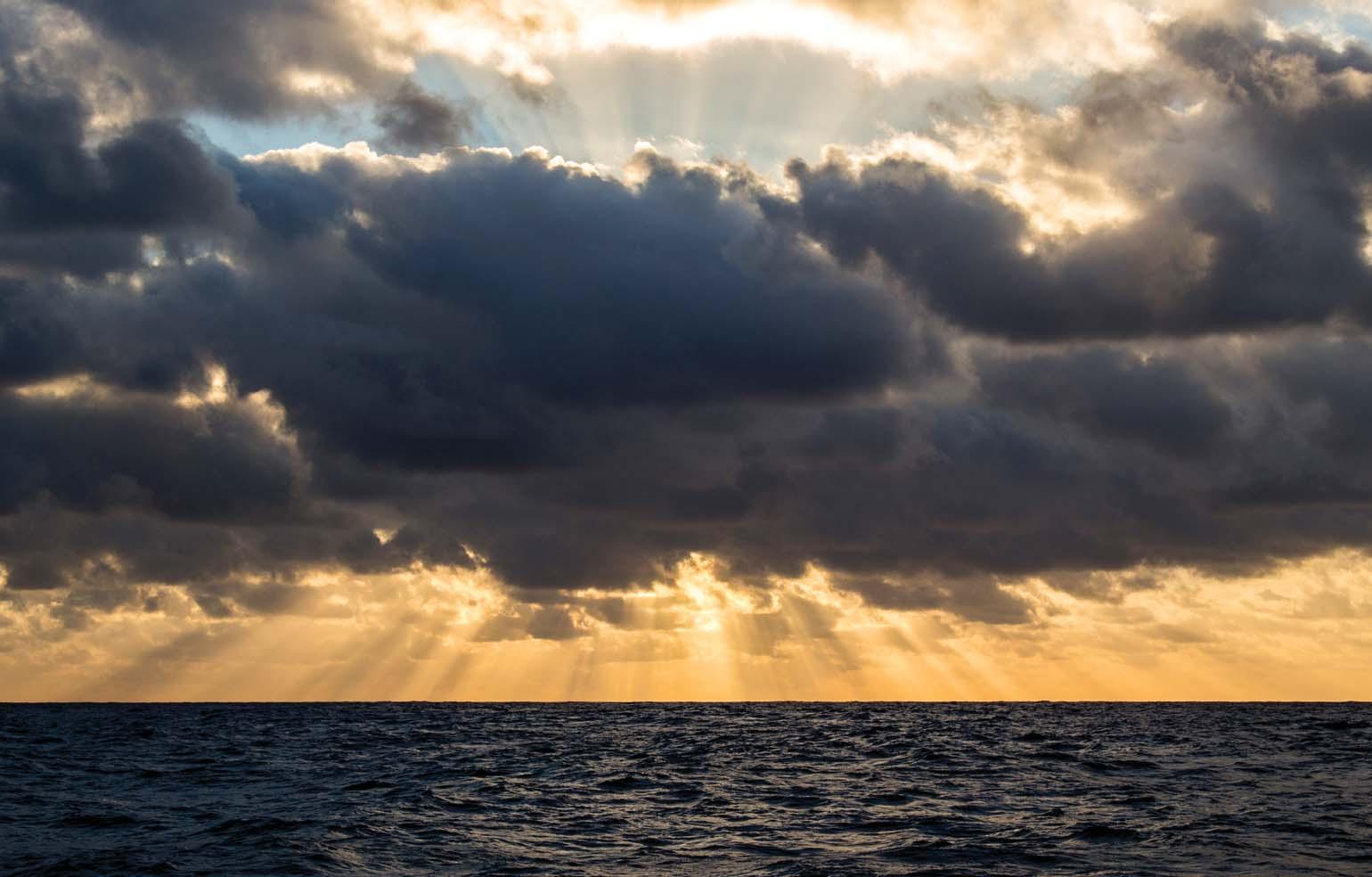 Sunset on a rare, calmer day
Sunset on a rare, calmer day
animal did not occur until 1954 – before then, pygmy orcas were only known from two skulls found in the 19th century. While more people have seen them in recent decades, sightings are still unusual. So had we really seen these elusive creatures? Further digging eventually confirmed to us that we had – they looked and behaved in a way consistent with other reports. This difficult passage had rewarded us with a very special sighting in both rarity and magical quality.

We had another day of good weather and that was it – for the rest of the passage we were back to shipping waves over the bow. Down below, Celeste was full of all those creaks and groans that accompany a small boat sailing in steep seas, including the mast straining with the pressure of the wind and the hull straining with all the forces of forward movement through the waves. Moving around required keeping a hand on something almost all the time and, of course, staying clipped onto the jacklines or other strong points whenever out on deck. We shortened sail to three reefs, then no mainsail at all. As we have so many times before, we felt thankful that Celeste is such a strongly built vessel. With all the pressure on the rig we were also glad we’d replaced her wire rigging three years previously, before leaving for French Polynesia.
A day later we reached the edge of the ITCZ. We’d managed to make quite a bit of easting, reaching 144°45’W. The forecasts had been showing a very shifty ITCZ – some days it was fairly narrow, without much precipitation (a good indication of the density of squalls and thunderstorms), then within a day, or even within hours, it would broaden out to as much as 300 miles, thick with squalls. Unfortunately, we managed to time it just wrong.
As we approached, it broadened and became dense with squalls. We didn’t want to dive into that if we could help it. Squalls are one thing but the ITCZ is known for its thunderstorms. As all sailors know, lightning is frightening on a small boat when your mast is the tallest thing for hundreds of miles. Our mast is grounded, of course, but a lightning strike would still be devastating. It can ruin your electronics and also cause significant additional damage. The shock of it would be scary and could potentially cause injury. After a near-miss in a big electrical storm several years ago, Seth and I have been extremely cautious when it comes to lightning, so we decided to wait it out.
Seth trimming the jib
A gap in the precipitation and an appreciable narrowing of the low pressure band was forecast at our longitude for three days later – we would cross the ITCZ then.
It was a tough decision. We both wanted to get home and the fatigue caused by the motion of sailing close to the wind, the constant heeling and pitching, was wearing on us. The wave action was doubly uncomfortable thanks to the swirling currents and counter-currents around the Equator, sometimes setting directly against the wind and sometimes at 90° to it. Waiting for three days meant we would miss Thanksgiving in Hawai‘i. It also meant that we might not make our goal of a passage of 20 days or less – yes, we’re mildly competitive and wanted to beat the elapsed time of all our

 A squall in the ITCZ
A squall in the ITCZ
friends who had made this passage in comparable boats. (The best time among them was 23 days, so we had a bit of a buffer.) And finally, waiting around, tacking back and forth at 2 or 3 knots, is irritating in the extreme. One sails oceans in order to go places, not to sail in circles!
Our enervating wait finally came to an end, and it turned out to have been well worth it. We had only about a day of typical ITCZ weather – squally, with that heavy, oppressive cloud cover that’s so common in low pressure zones – and then we came out the other side into stiff winter trade winds. Our decision had paid off. We’d seen no thunderstorms at all, and also no calms. We’d sailed all the way through, not having to motor once, and reached the Trades in only a day. The cool northeast wind felt so familiar, so much like Hawai‘i, that it almost seemed we were there already. It was strong, though, and for the next couple of days we were down to staysail alone.
The rain squalls hadn’t done with us, however. Three days out from Hawai‘i more clouds and squally weather descended and we raced along under just the staysail once more. But neither had the marine mammals disappeared. Last to visit us was an enormous pod of small, compact dolphins with distinctive pinkish-white lips. They played around Celeste for hours, taking turns riding the bow wave, then jetting off towards the horizon, then frolicking back and swimming beside us. We identified these as pantropical spotted dolphins, another new sighting for us.
While the abundant bird and mammal life on this passage was so heartening, we were disappointed to encounter two very big Asian longlines set – legally or not we’re not sure – in the territorial waters of Kiribati when we sailed within 80 miles of Caroline Island. Longlines, left unattended with Class B AIS transponders (that’s how we knew their names) and then later collected by the fishermen, catch not only the target fish species but countless others, known as by-catch. This includes rays, sharks, birds, even dolphins. Fishermen have become so good at finding and killing fish that it’s a real problem for the health of the ocean’s ecosystems everywhere. There’s no consequence to creating all the by-catch either, and there won’t be until consumers everywhere refuse to buy fish that’s caught in unsustainable ways. I doubt if any of the fish on those


longlines were intended for the North American (and certainly not the European) market, but I can’t help bringing it up as a sad reminder of what’s happening in what would otherwise be such a beautifully abundant ocean.
We reached Hilo, Hawai‘i around an hour past midnight a few days after Thanksgiving. We’d just squeaked in under 20 days at sea, despite our three days waiting for better ITCZ conditions. It was raining heavily as we rounded the breakwater and lowered and furled our sails, and the air was full of that wonderful smell of wet, warm, tropical earth.

It felt surreal to look over at the town’s waterfront, sleepy and placid under its amber streetlights. It seemed such a different world to the heaving seas and high winds we’d just come from. Arrival after a long ocean passage is always a strange feeling – there’s a disconnect between the elemental life you’ve been living and the shore life that you fall into so quickly. You feel so distant from the people ashore, so marked by your experiences at sea, that it feels strange to realise that outwardly you look no different from when you left your home months or years previously. No matter how many times you make an ocean crossing, this feeling never seems to go away.
We had a slight mix-up about where to drop anchor in these post-Covid days, but once that was sorted out we bathed ourselves in fresh water for the first time in three weeks, changed the sheets on the bunks and fell into luxuriously clean beds on our luxuriously still and quiet boat.
We both woke again at dawn, accustomed as we were to a short sleep cycle on passage. There wasn’t a cloud in the sky and there, immediately before us, rose the great dome of Mauna Kea, towering 4000 metres into the sky, its red cinder flanks glowing rose in the sunrise. For a sight like that, almost any amount of upwind sailing is worth it.

Reprinted by kind permission of the Cruising Club of America, in whose journal Voyages it previously appeared.
The ocean is a wilderness reaching around the globe, wilder than the Bengal jungle, and fuller of monsters.
Henry David Thoreau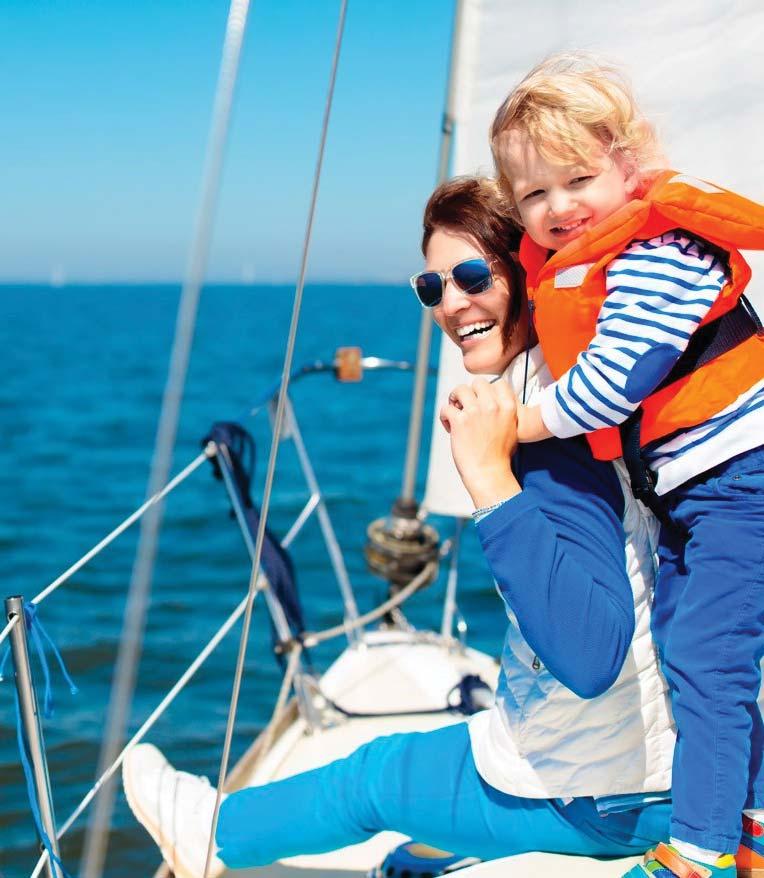

SAILING TO NEWFOUNDLAND: A Solo Exploration of the South Coast Fjords – Paul Trammell. Independently published in hard covers at $19.99 and in soft covers at $12.65 / £10.38. 290 229mm x 152mm pages, with many blackand-white photographs. ISBN 979-8-3717-7771-3
The author, new to sailing in 2016 and now an OCC member and full-time liveaboard on his 40ft cutter Windflower, has cruised extensively throughout the Caribbean, the Bahamas, the US East Coast and the Canadian Maritimes. Sailing to Newfoundland is an account of his journey from Florida to this stunningly beautiful Canadian maritime province, unique in its isolation. No roads lead to most of the small outports on the south coast, many of them now abandoned, and only a handful of cruising boats visit during the short summer season.
For anyone looking to sail to the ‘Rock’, this book provides a faithful, detailed log of the author’s passages, anchorages, sailing strategies and weather conditions. For readers in search of granular descriptions of sailing in the area, or of the challenges of singlehanding in a remote place which demands utter self-sufficiency, it is spot on. Helpfully, the author provides co-ordinates and numerous photos to illustrate both the anchorages and the breathtaking vistas. He accurately portrays the solitude, the wildlife, the extraordinary scenery and the extremes of wind and weather, including fog, challenging winds in the fjords and the frequent, frustrating need to motor rather than sail to reach the next destination. He hikes extensively in the wilderness where there are no trails and writes persuasively, leaving one with a sense of awe and a desire to go there too. He describes his mistakes and close calls with honesty.
One can quibble with Paul’s anchoring technique which often involves two anchors off the bow along with a stern anchor. This, predictably, sometimes leads to entanglements, avoidable by using only a single anchor in most instances. For those who do not fish, be warned that many pages are dedicated to the quest for trout. Perplexingly, he vividly and repeatedly bemoans the dreadful scourge of black flies, but mostly neglects to wear his head-net. That said, the narrative feels very real and is meticulous in both physical descriptions and the challenges and trepidations of entering and exploring new places with no one and nothing to fall back on if anything goes awry.
Paul focuses on the uninhabited places he seeks out and does not dwell extensively on the outports he visits in search of provisions, fuel and internet. For descriptions of local communities along the south coast such as McCallum, Ramea or Burgeo and the people who live there one must look elsewhere. But he comprehensively describes some of the coast’s spectacular wilderness and Sailing to Newfoundland is rich in its dedication to the forbidding allure of some of Newfoundland’s solitary anchorages.
I was intrigued by his reading list. On a quest to explore the best of Western literature

he works his way through 50 Masterpieces You Have to Read Before You Die. As he sets out on the Newfoundland cruise he launches into Volume 3. He also hosts a podcast, Offshore Sailing and Cruising with Paul Trammell, and over the course of six seasons has interviewed a variety of sailing luminaries and a wide cross-section of cruisers. Perhaps most notably for the OCC, this list includes a couple of episodes with Commodore Simon Currin and his wife Sally in the course of their slow circumnavigation.
Paul writes well and from the heart. I thoroughly agree when he describes Newfoundland as a ‘wonderful, magical place. It is not for the timid, but for those who are willing to take risks in order to reap great rewards. It exacts its tolls in fog, cold, unpredictable winds, swarms of bugs, and difficult anchorages. It rewards in adventure, extreme natural beauty, good fishing, solitude, and wonderful people’.
I would recommend this book to anyone planning to visit the south coast of Newfoundland, curious about sailing and in particular singlehanding in remote areas, or just looking for a bit of armchair adventure.
ZSGTHE ADLARD COLES BOOK OF MEDITERRANEAN CRUISING – Rod and Lucinda Heikell, 5th edition. Published in soft covers by Adlard Coles [www. adlardcoles.com] at £25. 186 184mm x 248mm pages, well illustrated with colour photographs, diagrams and chartlets. ISBN 978-1-3994-0442-6
When I reviewed the 4th edition of this book for Flying Fish in 2018 I commented that the publisher’s claim that the book had been extensively updated was ‘a bit’ of an exaggeration. Even so, I concluded that anyone who was considering a visit to the Mediterranean and was not already familiar with the area should make this their first purchase. I suggested, however, that those who already owned a copy or had reasonable practical experience of these waters might wish to think ‘at least’ twice before purchasing the new edition. I’m therefore pleased to advise members that this, the 5th edition, fully justifies the claim. It has been thoroughly updated, revised and improved in all respects and in particular with regard to the photographs and drawings, which are now both better and more relevant.

The revised text remains concise, clear and entertainingly written and edited by OCC members Rod and Lucinda Heikell – acknowledged experts on sailing in the Med. It also continues to convey the magic of Mediterranean cruising in these unique and diverse waters. Rod acknowledges Lu’s increasing contribution to their nautical books and thanks others by name for their imparted knowledge, help, suggestions, proofing and editing.
This relatively slim book continues to provide sound advice on Mediterranean cruising options, boats, equipping a vessel and oneself, navigation, weather, berthing and anchoring. The last quarter of the book gives a concise country-by-country overview of routes, local conditions, formalities and facilities, while the appendices provide useful checklists, alternative reading and websites, and distance tables. It remains an excellent introductory guide to the Med and is usually the first one our visitors pick up and actually read, probably because it is not a weighty tome and nor is it bogged down in detail. It does not confuse the reader by also trying to be a pilot book.
I have no hesitation in recommending this updated 5th edition both to those contemplating cruising or beginning to cruise in the Mediterranean and to more experienced Med sailors who might just pick up some new ideas. It is almost a ‘musthave’ book for a ship’s Mediterranean library.
ALFRED MYLNE Yacht Designer 1872–1951 – David Gray and Neil Lyndon. Published in hard covers by Mylne Ltd [https://mylne.com/book/] at £95. 499 290mm x 265mm pages bearing very many colour photos, designs and plans. ISBN 978-1-3999-4066-5
A pair of dinghy davits would be handy for handling this vast book. It’s not just the top product of the year but probably of the century. This is due not just to its size but to the six years of research, done by the two authors, the researcher and the editor.

Being a creakie I remember some of the former great publishing events in the world of yachting books. There was the scramble to get a copy of John Illingworth’s large-format OFFSHORE, which everyone consulted when aiming to win an ocean race. Then, when they came out, we all wanted that delightful batch of books produced just before the Second World War by Uffa Fox. This new book is up there with those great books, but it is more sensational because it is thicker, broader and so much of it is in fine quality colour.
This book, which is subtitled The Life, Yachts and Legacy of Scotland’s Greatest Yacht Designer, is largely the history of yacht design and construction between 1890 and 1946. In those decades, and especially before 1914, mast breakages were frequent, sometimes sensational and cost owners or their insurers a pretty penny. In one summer there were four on a single yacht!
One thing which emerges is the stunning beauty of the yachts that Mylne and his rivals designed. Compared with the ugliness of so many modern factory-made ‘yachts’, the craft built between 1880 and 1939 were almost always elegant. Part of the reason for this noticeable difference is that before 1939 few designers went for a high freeboard. It has to be admitted that the current craze for tall topsides does give more spaciousness below decks. It also means there is a delayed need to reef before the side deck submerges. It’s just sad that these advantages often have to be paid for by boxy appearances.
The famous ‘disagreement’ between Alfred Mylne and G L Watson (for whom Alfred worked from 1892 until 1896) is well documented and treated sympathetically. It’s good to know that, after so many years, the hatchet has been buried and there are now good relations between these two oldest-in-the-world rival firms. In passing I remember a spat in the late 1940s between Laurent Giles and Robert Clark, the two leading designers of the day. My view is that there was no quarrel and these two great craftsmen deliberately ‘manufactured’ a so-called quarrel, probably for their own amusement and to tease the press. It was also an effective way of getting free publicity for both parties!
It is natural that in a tome of this sort there are lots of data about race results. There are plenty of mentions of the ingenuity of Alfred Mylne the First, but not many examples of these. For instance, he was one of the first to realise that modern materials often came in much lighter versions than their traditional equivalents. As a result he introduced
lightweight strength bulkheads. Helmsmen agreed that the ‘feel’ on the wheel was important for winning races and another of his achievements was working out the precise gearing of wheel steering on International 12 Metres, of which he designed a famous batch. At least two Mylne 12s are still sailing, though Kate is tiller steered. She must surely be light on the helm, as this 60-footer was sailed singlehanded across the Atlantic.
The early part of the book is peppered with superb photos of yachts with large jackyard topsails. It is pertinent to ask how many members of the OCC can set one of these sails ... and get it the correct way round first time? I admit that I can set one, given time and reasonable weather. My first attempt was on a 50ft gaff ketch. She had jackyarders on both the main and the mizzen so the windward sails numbered seven in all. There was a crew of 13, though admittedly one of the younger members of the crew said, ‘Those three lasses standing aft out of the way are no help – I’m surprised they didn’t come aboard in high heels!’. It took us 90 minutes to get all seven sails set!
Before anyone quibbles about paying £95 for a book, it is worth remembering that this is the price of a medium-sized snap-shackle or double block. If you cannot find the cash yourself, get your club or local library to buy a copy. Then it will give sea miles of pleasure to many people.
ICEBOUND, Shipwrecked at the Edge of the World – Andrea Pitzer. Published in both hard and soft covers by Simon & Schuster UK [www.simonandschuster. co.uk] at £20.00 / £9.99. 302 200mm x 130mm pages with 11 maps and 11 small illustrations. ISBN 978-1-4711-8276-1
Anyone with an interest in the early exploratory voyages which discovered (or failed to discover) new routes and lands will be fascinated by Andrea Pitzer’s story of William Barents (Willem Barentsz) and his colleagues and crews seeking out a passage to China and Cathay over the top of Siberia – hence the Barents Sea. If you have read about Shackleton and his Antarctic adventures you will be enthralled by the challenges and responses of these Dutch explorers whose voyages began 320 years earlier at the opposite end of the world. ICEBOUND is based on first-person accounts and extensive archive research, but at the same time is written in a style that has the reader eager to know what happens next.
Adopted from the work of Gerardus Mercator, the idea of a northern route east took hold in Barents’s mind from the writings of influential preacher and geographer Petrus Plancius. The theory that gained traction was of a polar route north of Nova Zembla (also known as Novaya Zemlya) that opened to a warm sea allowing passage east.
With funding from Dutch merchants, who saw an opportunity to overtake the Portuguese with their southern route east and to build their new nation once Spain could be defeated, Barents undertook an exploratory voyage beginning in 1594. Aboard the Mercury, one of a group of three ships, in advance of a subsequent fullscale expedition, he sailed the west coast of Nova Zembla, encountering much ice from which he repeatedly had to extricate his vessel. The crew encountered polar bears for the first time and discovered their power and stamina.

The following year a second voyage set out, aiming to pass south of Nova Zembla, but it was dogged by bad weather, encounters with polar bears, mutiny and ice entrapment and had to return to Holland. These two voyages were led by Cornelis Nay and Jan Huygen van Linschoten, neither of whom were convinced about a route north of Nova Zembla, and the book details the conflict between them and Barents.
The second half of the book describes the 1596–1597 expedition in considerable detail, including overwintering on Nova Zembla. It was on this voyage that Barents discovered and named Spitsbergen (‘pointed mountains’), also known as Svalbard. The survival of Barents’s crew shows incredible ingenuity and fortitude, while the descriptions of seeking to free their vessel from the ice literally send shivers down the spine. Lack of food and the means to ward off freezing temperatures, storms, blizzards and attacks by polar bears tested the crew to limits they probably didn’t know they could reach. As we read about the threat of extinction that polar bears now face, it is salutary to learn that once they were in abundance, fearless in the face of humans and very hard to stop with the weapons of the 16th century.

The author states that Barents’s vessel has no name in the historical record, but ‘was of a typical Dutch style known as a yacht, constructed of wooden planks wrapped and sealed around ribs and braced by knees’. However, a Dutch team of marine archaeologists and boatbuilders constructed a replica of Barents’s boat which they called de Witte Swaen. This shows gaps in the author’s knowledge which may frustrate those who want to know more about Barents’s vessels (see www.debarentsz.nl/ (in Dutch), www. oceanwide-expeditions.com/blog/rebuilding-the-historic-vessel-of-willem-barentsz and www.arcticanthropology.org/2022/05/25/when-a-great-ship-asks-for-deeper-water/).
At times the author’s lack of marine and maritime background slightly jars, but this is more than compensated for by her references to and comparisons with other expeditions and voyages of discovery by such as Amundsen, Columbus, Cook, Franklin, Frobisher, Hudson, Magellan and Elcano, Nansen and Peary. Most importantly, she tells the story in a captivating way and the escape from Nova Zembla puts the reader in mind of Shackleton.
Barents’s extensive voyages, accurate charting and the valuable meteorological data he collected make him one of the most important early Arctic explorers. He deserves to be more widely known.
SAILING BY STARLIGHT – Rod Scher. Published in hard covers by Sheridan House [www.rowman.com] at $21.47 / £22.99. 312 229mm x 152mm pages with black-and-white photographs throughout. ISBN 978-1-4930-6569-1
Sailing by Starlight tells the tale of a truly remarkable sea voyage, one without any navigational instruments whatsoever. Not merely no electronic equipment but no sextant, no compass, not even a clock. Marvin Creamer, the man who undertook this voyage in the early 1980s, was an unassuming geography professor at a small college in New Jersey and to a passing acquaintance might not have seemed out of the ordinary. But he was far from ordinary – he found his way around the globe with only his five senses to guide him.
For almost anyone, a Southern Ocean circumnavigation is already a major endeavour, the pinnacle of ocean sailing’s challenges. For Marvin Creamer it was only the beginning – the real challenge was to make that circumnavigation without even the most rudimentary technology. He planned to determine his latitude by unaided observation of the stars and longitude by, essentially, educated guess. His motivation was partly to prove that such a thing was possible, that ancient humans were capable of undertaking world-girding voyages well before humanity’s invention of instruments to determine our precise whereabouts on the planet. The other part was simply to see if he himself could do such a thing.
Author Rod Scher gives us a straightforward and accessible account of Marvin Creamer’s tremendous feat. We learn of the trials of ill-suited personalities together in a crew, the strange meals that are sometimes necessitated by dwindling provisions and the fear one feels on a rocky lee shore. Creamer’s yacht Globe Star was plagued by gear failures and the author provides details on the many ingenious repairs Creamer and his crew effected at sea, demonstrating their supreme self-reliance. Globe Star also had the ill luck to meet a great many storms and gales. The frequency with which Creamer and his crew encountered exceptionally high winds and seas is almost enough to blunt one’s senses as to how difficult and sometimes frightening such conditions truly are. And yet Creamer always arrived at his intended destination with his boat more or less intact. He did so by observing the transit of certain stars across their zenith, the changing colour and temperature of the water, the birds and the clouds and sometimes even the fish.
It is staggering to consider the amount of practice and discipline it must take to train oneself to become that attuned to the world around you, to be that closely observant at all times. Marvin Creamer was able to do this over 351 days at sea, mostly for passages of over 6000 miles. This skill, combined with the details of his wayfinding methods, were what captivated me most in Sailing by Starlight and I was grateful that Scher included an appendix further explaining Creamer’s wayfinding. I would imagine that most ocean sailors would be similarly interested in this most unusual approach to navigation.
I believe non-sailors would also appreciate the book and would be equally fascinated by the tribulations and triumphs that are common to all ocean-going vessels regardless of navigation technology – the repairs, fatigue, crew relations, provisioning and discomfort, the joy in things such as watching dolphins or eating a freshly baked loaf of bread, and the mixed emotions brought on by making landfall. Rod Scher does a superb job of making ocean sailing and its terminology accessible and easy to understand for those who do not do it themselves, while keeping the story moving for those of us who do.

Sailing by Starlight fills a major gap in sailing narrative literature, relating the story of a man and his phenomenal voyage which have been undeservedly little known.
NB: The phrases ‘Discounted on Amazon’, ‘Also available as an e-book’ and ‘Also available for Kindle’ apply to such a high proportion of the books reviewed on the previous pages that it no longer seems necessary to include them in the introductory paragraphs.








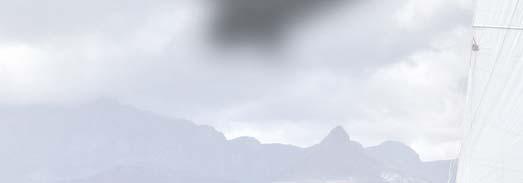




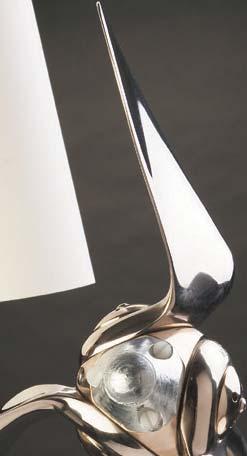





(Continuing the chronicle of Mike, Helen and their 37ft cutter-rigged Countess ketch Island Drifter. See Flying Fish 2017/2, 2018/2, 2019/1, 2020/1 and 2022/1 – all available online at https://oceancruisingclub.org/Flying-Fish-Archive – for the back story.)
Until Covid struck, between 2017 and 2019 we had spent up to five months in total each year aboard Island Drifter (ID), and in that time had explored most of the Greek Aegean mainland coast and islands. It was time to move on, so our objective in spring 2022 was to sail to and explore the Greek Ionian islands and the mainland coast north of the Gulf of Patras. In mid-March we flew via Athens to Leros in the Greek Eastern Aegean, where ID was ashore in Moor & Dock’s boatyard. We spent the rest of the month repairing, cleaning, and servicing before launch, and then headed west across the Aegean Sea, round the rugged southern capes of the Peloponnese ‘island’ and up its west coast into the north Ionian Sea – 443 miles in 76 hours.
Greece’s north Ionian islands and mainland coast can be divided into three areas:
1. The Inland Sea – the area of water enclosed by the islands of Zakinthos, Kefalonia and Levkas to the south and west, and the opposing Greek mainland from the Gulf of Patras north to Preveza.
2. Corfu, its satellite islands and the adjacent mainland from the Albanian border to Preveza.
3. The Gulf of Amvrakikos to the east of Preveza.
We bypassed Zakinthos (Zante) on our passage north as it was night at the time, and continued on to the port of Sami on Kefalonia, the largest Greek north Ionian island and some 30 percent bigger than Corfu. Like its neighbours, during World War Two Kefalonia was first occupied by the Italians and then, after Italy’s capitulation in 1943, by the Germans. The 3000 Italian troops on the island were massacred by Axis forces on Hitler’s orders, as chronicled by Louis de Bernières in his novel Captain Corelli’s Mandolin. When the book was turned into a Hollywood movie, most of the filming took place on the island itself.
Sami, our landfall in the Ionian, is the principal ferry port for the island as well as having an international airport. It also has an attractive local anchorage, where we relaxed for a couple of days before visiting Ay Efimia, the island’s former port which was, in common with many towns in the Ionian Sea, severely damaged in the 1953 earthquake. Fiskardo, near the northern tip of the island, was fortunate in being built on clay which allowed its fine Venetian buildings to remain intact. Having reached Fiskardo via the channel between Kefalonia and Ithaca we bypassed the latter, although we later returned to visit it.

From Fiskardo we sailed north via Sivota, an almost landlocked bay surrounded by hills on the south coast of Levkas. Once a small fishing hamlet, Sivota has been developed into a popular yachting holiday centre. After a day’s solid rain in Sivota we motor-sailed to Vlikho Bay, a hurricane hole on the east coast of Lefkas, which we wanted to check out in case of need. It also has three boatyards that we were interested in with a view to winter storage. Our passage to Vlikho via the attractive channel between Levkas and Meganisi took us past the cave which featured in Hammond Innes’ thriller Levkas Man.

Part of Lefkhada’s town quay looking north, as seen from the top of our mast. The causeway to the mainland and part of the surrounding salt marshes are visible in the background
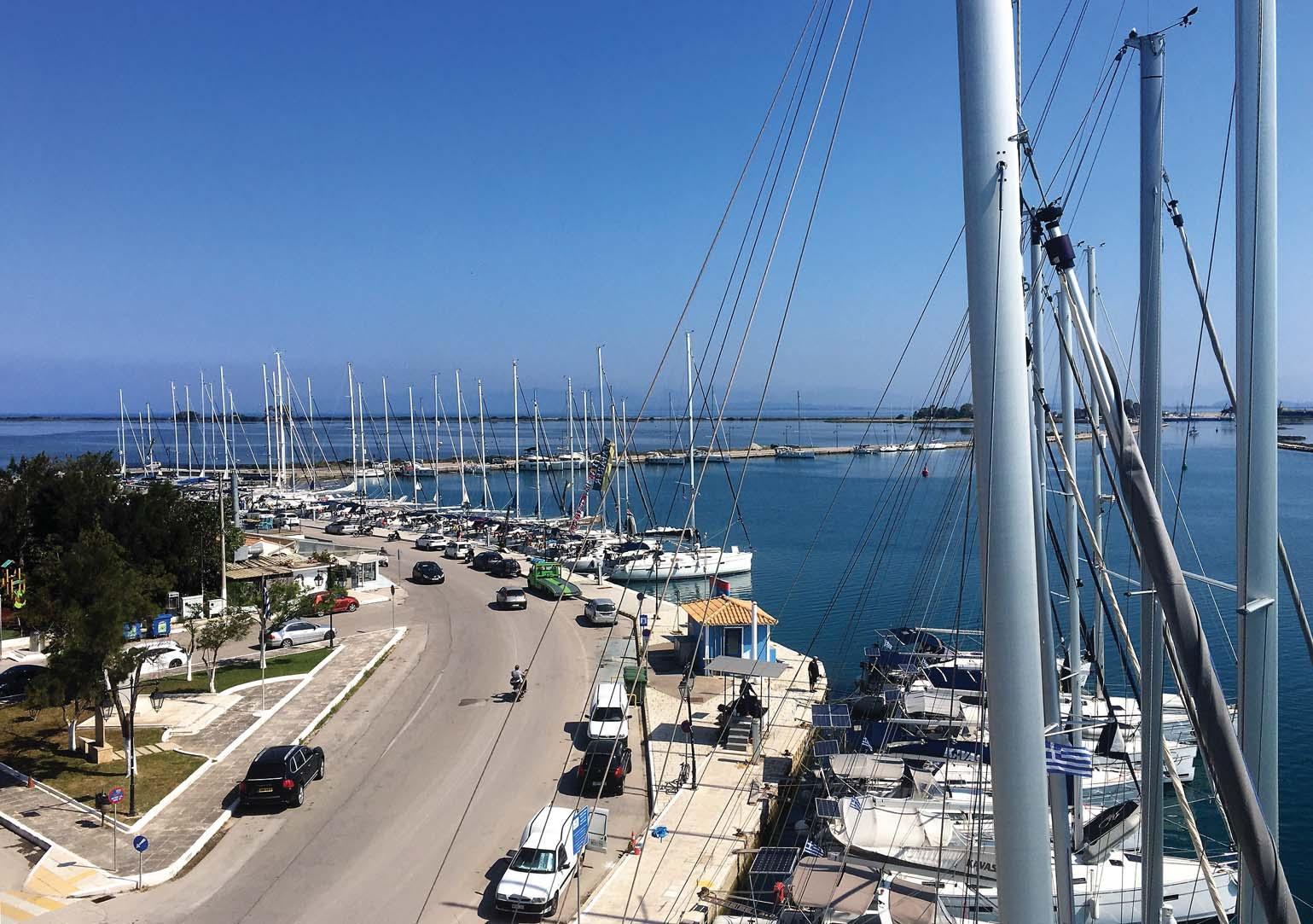 The seafront at Fiskardo with original Italianate buildings in the background
The seafront at Fiskardo with original Italianate buildings in the background
On leaving Vlikho we motored up the east coast of Levkas to Lefkhada at the northern end of the island. There we berthed on the town quay for €6 per night, a more attractive proposition than the €72 per night charged by the town’s enormous marina. Lefkhada, the capital, is the island’s largest town, though it too lost its old Venetian buildings in the 1953 earthquake. The town’s architectural response has been to rebuild ground floor walls in stone or brick, with upper storeys in corrugated-iron sheets on wooden frames which are painted in bright colours. The hope is that any future damage will be less risky to life, less costly and easier to repair. Most buildings are painted in bright colours. Levkas is only an ‘island’ by virtue of the canal – opened in 1904 and since dredged and widened – that runs through the salt marshes connecting it to the mainland. These are traversed by a long causeway that crosses the canal by way of an unusual floating/lifting bridge.

We split the passage from Levkas to Corfu into two day-sails, stopping overnight in Lakka Bay at the north end of Paxos. Surrounded by high wooded hills, it is said to be one of the most attractive bays in the Ionian. Both Paxos and Antipaxos, which we passed on the way north, are idyllic little islands, 5 and 1 mile long respectively, verdant and still largely unspoilt. They have an upmarket reputation and are reputed to be the most expensive locations in the Ionian. Even so, they have only two good overnight anchorages, both on Paxos.
Helen swimming in the translucent turquoise waters of Lakka Bay, Paxos
 Looking south with, left to right, mainland salt marshes in the distance, the canal and Levkas’s large marina
Looking south with, left to right, mainland salt marshes in the distance, the canal and Levkas’s large marina
Mountains dominate the northern half of Corfu, which has a steep and dramatic coastline, whereas the south of the island is much flatter. Corfu was one of the first islands to attract mainstream tourism in the 1960s, hence many of its otherwise excellent bays are surrounded by holiday developments, the beaches covered with rows of sun-loungers and umbrellas. In season, many anchorages are plagued by jetskis, speedboats, parasailers and tourist boats.
There are only two safe overnight anchorages on the west coast of the island, and we chose to anchor in Palaiokastritsa Bay where we had spent a package holiday in the 1970s. We found the bay and surrounding area almost unrecognisable. Since there are no safe overnight anchorages on the north coast, we left early to get round it and into the mile-wide channel between Corfu and Albania. There are four excellent bays on Corfu’s east side, with good holding and well protected from the prevailing northwesterlies. We anchored off the beach in Kouloura Bay, which we had to ourselves.

We had once picked up a yacht from Gouvia Marina, some 6 miles south of Kouloura Bay, and delivered it to Glasson Dock in Lancashire. This time we pulled briefly into the enormous marina to top up with fuel. It has some 1400 berths and, being in the same group as Levkas Marina, is equally
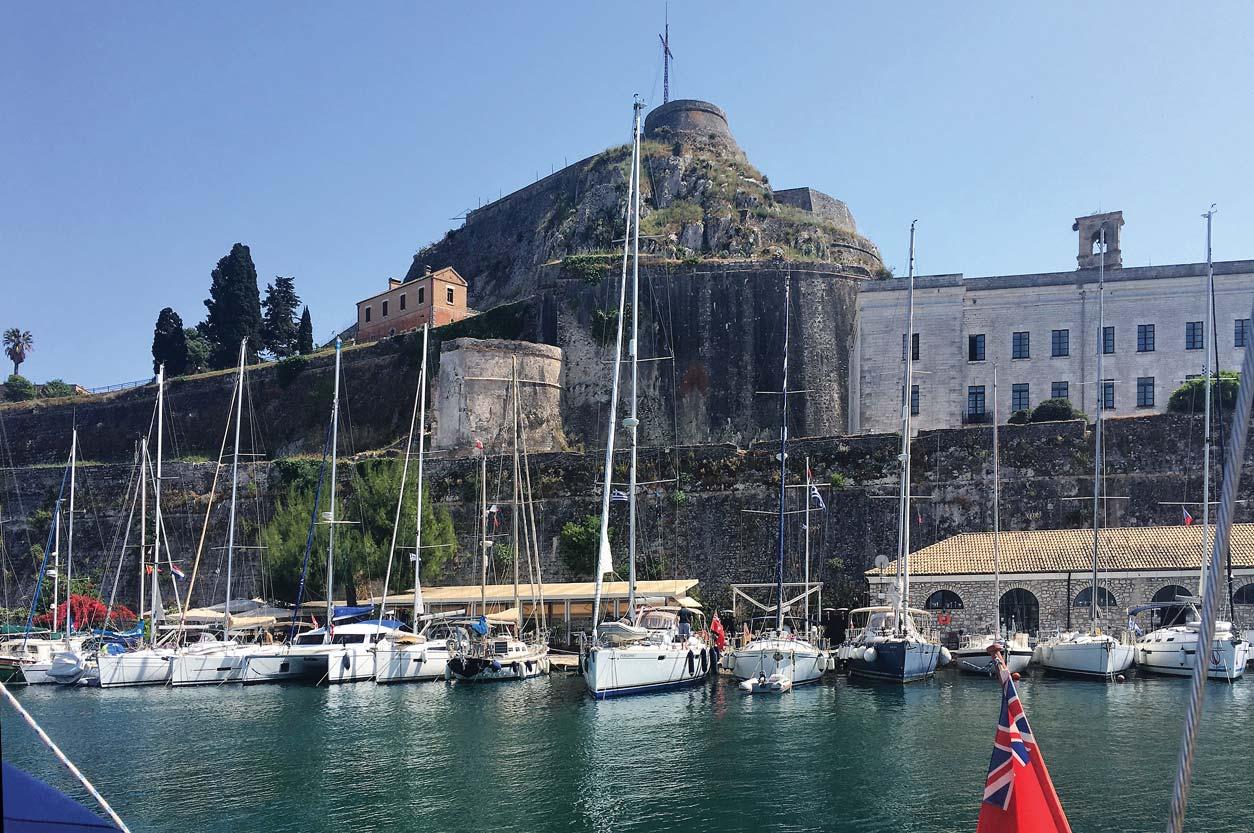
Port Mandraki, overlooked by the old Venetian fort and barracksAt anchor off the beach in Kouloura Bay
expensive. We did not stay there overnight but continued on to Corfu town itself, where we berthed in the small marina owned by the yacht club in Port Mandraki, close to the Old Town and the island’s famous cricket ground.

Our last port of call in Corfu was Petriti, in the southeast of the island, where we had to anchor because the little harbour was full of flotilla boats. It is described in the pilot book as an ‘attractive unspoiled backwater’, but clearly it has moved on somewhat since the book was published!
The mainland coast of northern Greece, from the Albanian border in the north to Preveza in the south, is backed by towering, rugged mountains. These drop abruptly into the sea except where rivers have deposited silt to create coastal plains, such as at Igoumenitsa and Preveza. There are a few safe anchorages in large bays along the coast and we stopped in three of them – Plataria, Parga and Preveza.
Plataria, our first stop after Petriti, is 5 miles south of Igoumenitsa, a major industrial city with large commercial and ferry ports. The holiday resort of Plataria is located at the head of a long bay, its harbour well-protected and unusually large. Parga, our next stop, has a large sandy bay with good holding – fortunate, since the small harbour was fully-occupied by a flotilla. It is justifiably claimed to be one of the most attractive locations on the Greek mainland coast. Cleopatra Marina, where we temporarily left ID, is opposite the town of Preveza and close to the international airport on the Aktio peninsula, from which we flew back to the UK for a family funeral.
After our five-day visit to the UK we left Cleopatra Marina to explore the Gulf of Amvrakikos, a 20 mile-long bay with even larger coastal plains and rivers running into it from the high mountains of the Greek mainland. One of the bay’s attractions, certainly out of season, is that it is visited by only a few cruising and charter yachts ...
From left to right, some of Vonitsa’s tavernas lining its very pleasant quayside promenade, the Venetian castle overlooking the bay, the small inner breakwater on which we were moored, and the very effective open-ended outer breakwater
and no flotillas. On the plus side, the Gulf is a breeding ground for estuary fish (sole, flatfish, eel and prawns) and also attracts dolphins and pelican that feed on the rich fish stock, while its wetlands to the north are home to a wide range of wildfowl and water birds. On the minus side, fish farms line an increasing part of the coast, limiting anchoring in many bays and polluting their immediate surroundings.
Our first stop was at Vonitsa, in an attractive bay on the Gulf’s southern shore. The large, official visitors’ quay was completely taken over by down-and-out liveaboards and abandoned boats, so we anchored stern-to on a solid concrete breakwater in company with nine other active cruising yachts. Vonitsa, like the Gulf itself, is not inundated with tourists, even in mid-summer.

We later joined Angela and Brian Oliver, whom we’d first met when making landfall in Kefalonia, in the recently-refurbished fishing harbour of Kópraina in the northeast corner of the Gulf. There we all enjoyed an excellent snack lunch at the fishermen’s taverna, where drinks were accompanied by generous complementary plates of locally-
Kópraina port and taverna, seen from the outer breakwater


caught, deep-fried, little fish. The port is within easy reach of Arta, where there is a Turkish bridge dating back to the time of Alexander the Great. It appears that the practice at the time was to make a human sacrifice to ensure the bridge’s solidity, and legend has it that the overseer’s wife was buried within the bridge’s structure.
From Kópraina we headed towards the small harbour of Koronisia, exploring the excellent, albeit very shallow, Vouvalos island anchorage on the way. We went to Koronisia specifically to sample their famous local prawns, which were quite excellent. In the movie Live and Let Die James Bond orders Preveza prawns, and good enough for him...
We eventually made our way out of the Gulf, past the boatyards and marinas in Preveza and Aktio and thence south to the north end of the Levkas Canal where the floating bridge operates. Once through, we motored down the canal into Dhrepanou Bay which, like the canal itself, separates Levkas from the mainland. Thereafter we hugged the mainland coast down to Astakos.
On our way we spent a couple of days at anchor over sand in One Tree Bay, within the larger Varko Bay, able to see our anchor and chain clearly through the translucent
FB Maura, the floating/lifting bridge at the north end of the Levkas Canal

blue water. We also liked the northeast corner of Varko Bay, where there was an abandoned holiday complex facing a white sand beach. The anchorage was quiet, safe and very attractive with the complex’s ornamental trees and bushes all in bloom. The northerly mainland harbours of Palairos and Vounaki are home to two large charter companies which, together with cruisers and other visiting boats, have helped develop their adjacent villages into pleasant, low-key holiday locations. Traditionally, these small fishing hamlets supported the surrounding farming populations, as indeed they still do. The sparsely populated mainland coast which stretches south to Astakos is backed by towering, 5000+ft (1500+m) mountains that drop sheer into the sea –barren rock, with deep gorges and gulleys formed by raging winter torrents. Further south we visited Mitika Bay anchorage. Mitika is a traditional agricultural town with a small ferry port serving nearby islands around the Inland Sea. It has an attractive waterfront on the west side of the peninsula while the harbour, main anchorage and beach are on the southeast, more protected side. We also pulled into the steep-to, rocky islands of Kalamos and Kastos. We briefly went into Episkopi Harbour on the north end of Kalamos before moving on to Port Kalamos itself. The latter is popular with charter boats and flotillas and hence is pricey. George, the self-appointed harbour

 Vounaki Marina
Mitika’s attractive town frontage looking north, with the mountains behind
Vounaki Marina
Mitika’s attractive town frontage looking north, with the mountains behind
master and owner of the port’s principal taverna, crams in every boat he can. Yachts are anchor-moored not only on the inside of the port’s quays and breakwater but are also anchored and rafted with shorelines in the centre of the fairway, making departure impossible for anyone on the quay. In the absence of a berth in the port we anchored off, sitting out a gale throughout the night. Fortunately our anchor was well dug in, but we were on a lee shore so maintained an anchor watch nevertheless.
Astakos, our last port of call on the mainland, is located at the head of a long, wellprotected bay at the meeting point of the northern mountains and the low marshlands to the south. It is another small agricultural town, again with a sizeable fishing fleet and a small ferry port. It has only recently acquired a decent road, thanks to an EU grant, but has always been a popular stopping point for yachties.
We spent the rest of our cruise visiting the three larger islands in the Inland Sea that we had bypassed in April – namely Zakinthos, Ithaca and the smaller Meganisi.

Zakinthos has always been an island of strategic importance, due to its position at the southern entrance to the Gulf of Patras and thence access to Corinth and Athens. We had little interest in seeing the southern half of the island, particularly Lagana Bay, because of its reputation for the worst kind of tourism and the fact that there is only one small anchorage available for yachts. The rest of the enormous southern bay is a protected area for loggerhead turtles. Instead we pulled in for the night in Ay Nikolaos, the only viable port/anchorage on the northeast coast, and next day we visited the iconic Wreck Bay. Unfortunately, the reality of the now severely rusting wreck, accompanied by piles of accumulated litter on the beach, does not live up to the stunning photos in Greece’s tourist publicity material.
From Wreck Bay we turned north and headed for Ithaca, where we anchored off the beach in Filatrou Bay with a long line to the shore. Our line was tied around a clump of maquis, which is known to be incredibly strongly rooted. Hence we slept
well with our stern to the wind during what became a fairly blowy night. Helen swam ashore next morning to remove the line and was subsequently hauled back at the end of it at speed.

On our way north from Ithaca towards Meganisi our engine coughed, spluttered and died – our own fault as we’d allowed the tank to run dry! Unfortunately, even after transferring fuel from the main tank to the day tank we were unable to restart it. So we lowered the dinghy and outboard into the water, lashed it to the side of ID and, with Helen aboard and some help from the sails – albeit in very light winds – managed to return to Vathi harbour, Ithaca. The wind was funnelling into the harbour so we needed to pick a spot on the quay and ‘go for it’. Fortunately, the Israeli skipper and crew of a large charter catamaran realised we would have problems manoeuvring onto the quay and rushed to help us come alongside. Within an hour of arriving a local engineer had fixed the problem – a stuck valve in the fuel pump.
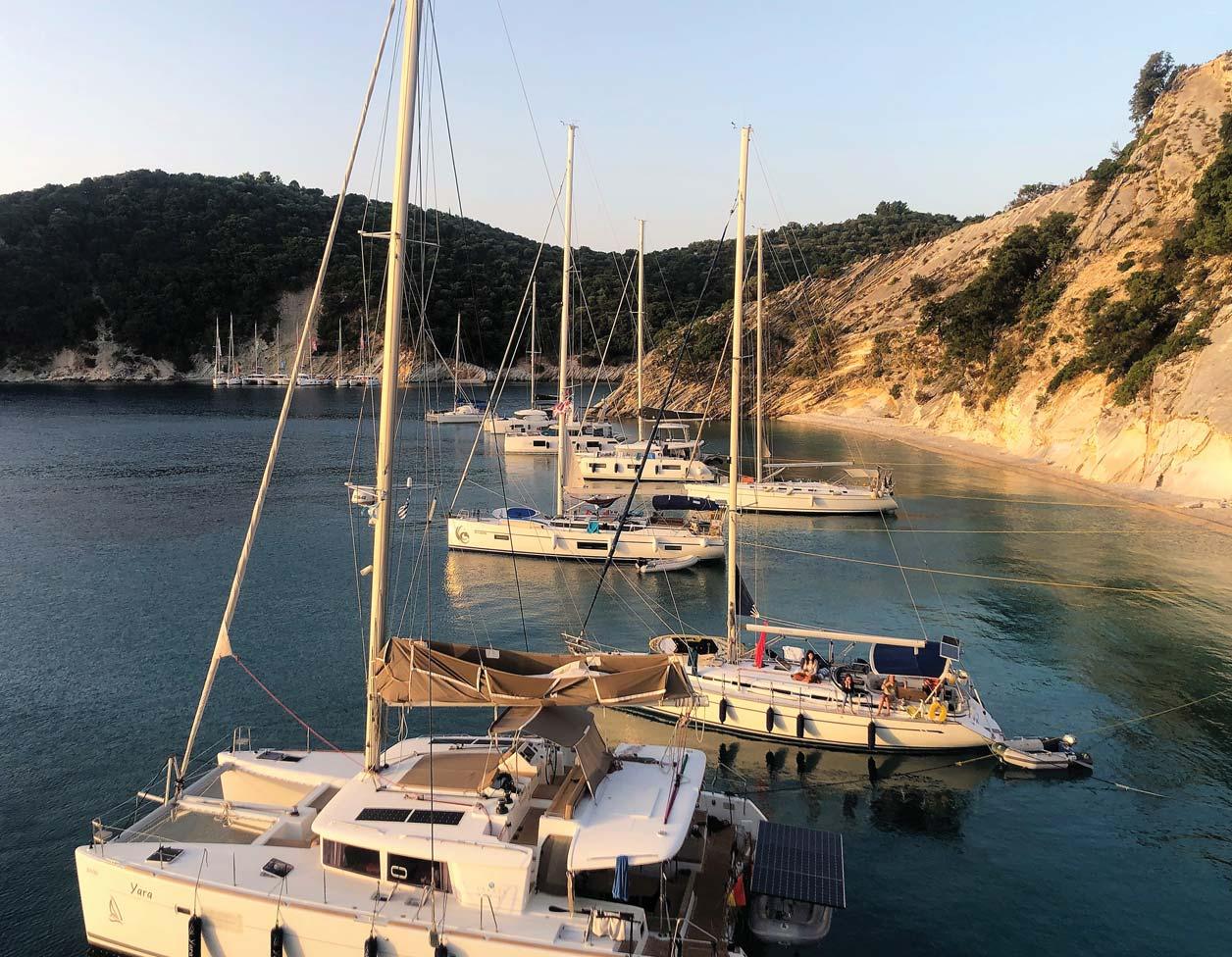
Our neighbours, all with lines ashore and their sterns into the windZakinthos’ iconic shipwreck, looking somewhat the worse for wear these days
Helen managing the dinghy and outboard, which helped us get back to Vathi, Ithaca when the engine refused to re-start

From Vathi, Ithaca we motorsailed north to Vathi, Meganisi (‘Vathi’ is a common name for a port in Greece, meaning something like ‘deep’). We avoided berthing on either the ‘free’ taverna quay (where the obligatory meal can cost more than a marina berth) or the expensive quayside marina itself. Instead we berthed on one of the two town quays which were free of charge. In view of the accumulated ballast on the seabed, we had to pull a long way off the quay and use the dinghy to get ashore.
From Meganisi we headed north back to Preveza, where we fuelled up before berthing in Cleopatra Marina for 24 hours to do those jobs best done afloat – in particular, servicing the engine and washing down the sails. We left next day for our allocated lift into Aktio boatyard, where ID was hauled out by hydraulic sledge – a first for both her and us. It was extremely hot for the next ten days, during which we ‘put the boat to bed’, so we got up at dawn, worked until noon, had a snack and a siesta, and then worked for another three hours in the relative cool of the evening. Our return to the UK was uneventful, other than arriving in an unprecedented heatwave!
Access to ID in Vathi, Meganisi was via a small pontoon reached by rocky steps, plus our dinghy
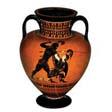
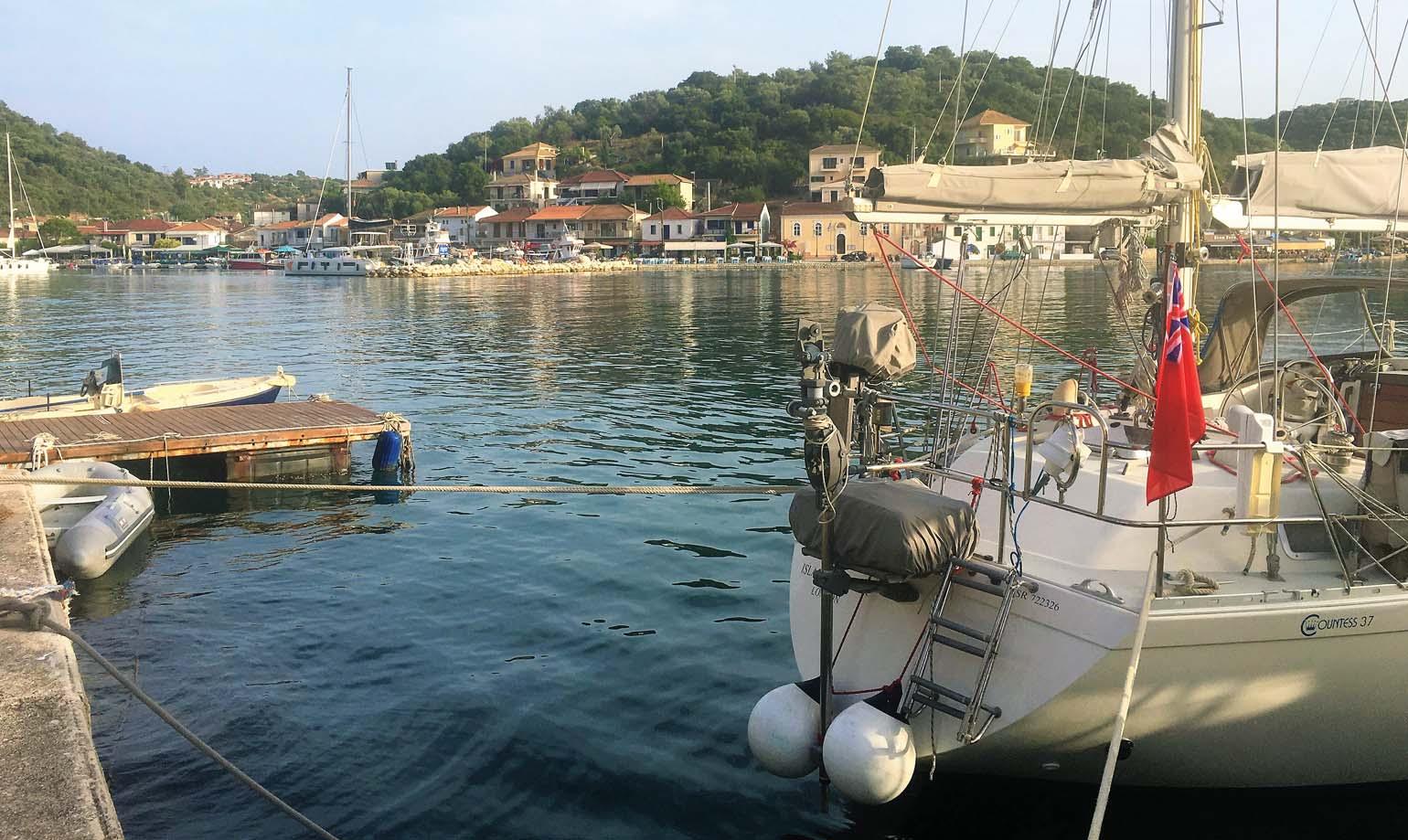


“Join us today, we need all hands on deck if we are to have a living, thriving ocean for future generations to enjoy.”








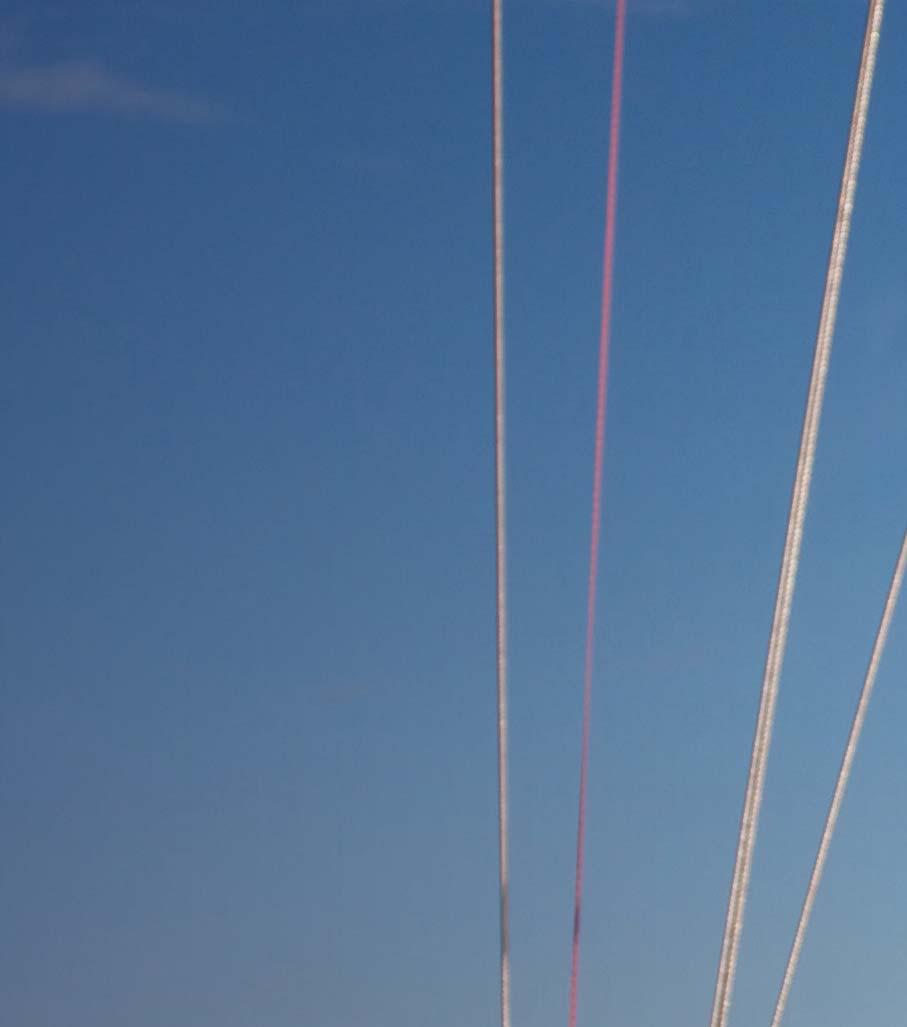

- Liz Clark, sailor, surfer, and environmentalist
(Ben Warrick and Katie Flower are both anaesthetists at the Royal Cornwall Hospital in Truro, with National Health Service contracts which include provision for 15-month career breaks. To make the most of this ‘time off’ they decided to buy a boat, sail to New Zealand, live and work there for a year, sell the boat and fly home. It didn’t prove quite so straightforward, however... Follow their blog at http://blog.mailasail.com/moonshiner.)
Moonshiner is a cutter-rigged Bowman 45 built in 1977, which displaces about 17 tons empty. We bought her from a lovely chap on Guernsey called Dick (a long-standing OCC member) who had cruised her extensively around the globe. She was clearly capable, but we were yet to be proven. We sailed her from Guernsey back to Cornwall in February 2022, Dick accompanying us to ensure that we learnt how everything on the boat worked. It was a lovely crossing, cold and bumpy to begin with but then a stiff 25 knots off our port quttarter blew us swiftly across the Channel. It was when the engine decided to give up as we were entering Falmouth and we requested a tow from Port Pendennis into their marina that we got a taste of what was to come...
Naively (with hindsight) we thought we’d bought a turnthe-key, ready-to-go, offshore cruiser that was going to enable us to sail all summer and then set off on 1st November. We were wrong! All the jokes and sayings: BOAT – bring out another thousand, a hole in the ocean you throw money into, etc etc proved to be true. So, whilst it was a challenging summer during which we didn’t get much sailing and spent a lot of money, by the end of it we did have an amazing boat that was going to carry us on a grand adventure.
She was very well equipped but needed a lot of work – new standing and running rigging, multiple engine rebuilds and angst culminating in a brand new engine, comprehensive electrical upgrade with new
 Moonshiner in St Austell Bay during our first sail after the delivery
Moonshiner in St Austell Bay during our first sail after the delivery
batteries as well as new wind and solar generators, new power management system, upgraded plotter and radar, a decent sound system with cockpit speakers, an additional fridge/freezer, much cosmetic work in the saloon, the forepeak converted from workshop to cabin, a new mainsail, new anchor chain ... and much, much more.
Without a doubt the biggest hero of the summer was Katie’s dad Steve, who spent hundreds of hours working on the original Volvo Penta MD21a, living in a shed in St Agnes in 35°C heat while we were away. To cut a long story short, top (head) off, done in the boat – no joy. Lifted out and completely rebuilt – no joy. It was incredibly galling that we just didn’t have time to get it right so had to opt for a replacement.
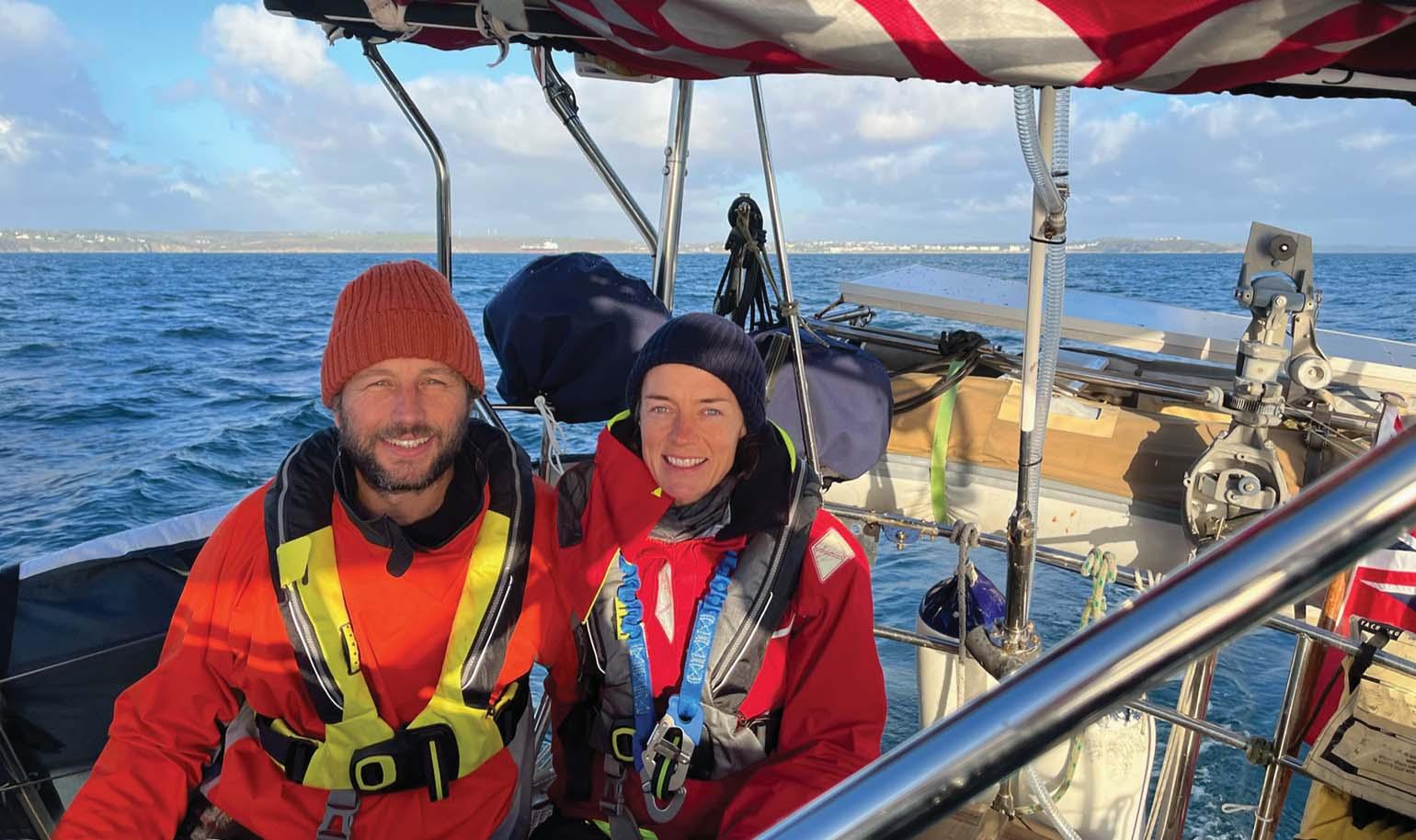
Another hero was Brian, a friend who is a magician with steel and has helped me out with all kinds of things during my time in Cornwall, from a quad bike rack to a staircase. He did some amazing work fitting the solar and wind generators as well as building a barn to store all our stuff while we were away. Others who stood out were Rupert from Waters Marine in Falmouth, a lovely chap who, with his sidekick Mike, did all
We upgraded the electrical system to allow us to run a freezer at sea. It was amazing having frozen batches of mum’s home cooking, and allowed us to eat well with minimal preparation
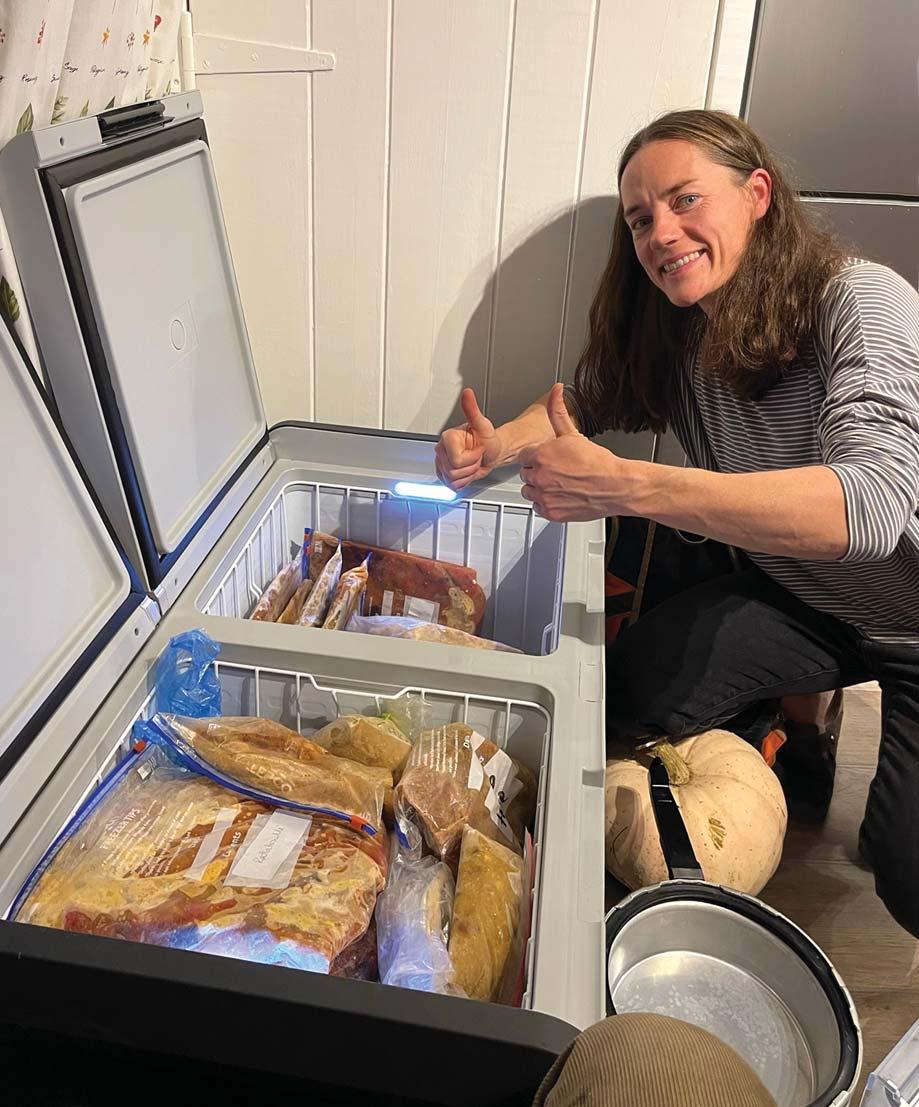 Ben and Katie
Ben and Katie
Provisioning. It’s a long walk through Pendennis Marina with 200kg of food!

the electrical work and fitted the new engine – we can’t recommend him enough. And from Riggers-UK in Penryn, Ben and especially Jake who rerigged Moonshiner and put up with eternal questions from me as a result.
So there we were. By 30th October we’d finished work but still had lots to do. We went round to Mylor Marina for the week before departure with both sets of parents, hopeful that a week later we’d have a boat ready to go. All we needed to do then was sail enough to convince ourselves that we were ready to go as well. The send-off party was amazing! November 27th arrived and the crew were assembled – our dads Steve and Mike, plus a good friend, Tom. All had extensive sailing experience, with Tom’s including many offshore passages.
After a quiet exit from Carrick Roads the weather quickly built with big, rough seas and up to 30 knots from forward of the beam. Everyone was seasick except Katie, who did an amazing job of running the boat. On the first night our AIS packed up. It had been giving problems previously but had been thoroughly checked out and hadn’t faltered. This, and the fact we were so seasick, prompted a serious discussion about turning around, but I was a bit better after an anti-sickness jab and we decided to continue through the night and reassess in the morning.
Blog for 30th November: A good night’s sail, blowing up to about 25 knots, then dropping to below 15. Sail choice a compromise between comfort (not much) and boat speed. We tried double-reefed main and staysail but she lost drive and boat speed if the wind dropped below about 22 knots. Rolling the yankee in and out seemed to work best.
It’s great having such good crew – it would be bloody tough with just two of us. Hopefully after the Azores it will be much more settled. It looks as if we’ve got a significant blow coming, but mainly northerly so pushing us in the right direction. We need to figure out how best to rig her for strong winds.
1st December: Another long night. It’s a tough time of year to sail, with 16 hours of darkness, which is four lots of 4-hour watches. Generally good conditions though, with 15–20 knots from just aft of the beam. A big container ship appeared out of the blue and passed very close down the port side. Everyone now eating and drinking well, and I’m getting better at acrobatics in the galley!
north and west to avoid it, but we were wrong. From about 1800 on Friday 2nd we encountered a horrendous amount of wind and sea state, though Moonshiner coped well.

Overnight we ran under heavily-reefed staysail and, Moonshiner flying along in the first blow with 30 knots behind us

Dad at the mast, taken from inside the saloon. Having the trysail on its own track and always ready to go was great
2nd December: We lost the Autohelm last night – the motor is totally shot. It was a tough night hand-steering and we’re now committed to that for the rest of the way. Thank heavens there are five of us. There’s a big blow coming for the next few days which is going to be hard work, but we’re in good spirits. I think we’ve just passed halfway.
3rd December: It’s been heavy going for the past few days. We knew a significant system
whilst tough on all of us, we continued to make progress and felt like we were managing the conditions. Daylight on Saturday revealed an unbelievable sea state. The wind blew constantly at 35–40 knots with sustained gusts of over 50. The forecast was for it to moderate in the early hours of Sunday and, although not looking forward to another night of it, we were confident that we could manage.

At about midday on Saturday the wind suddenly rose and the sea state became significantly bigger. Dad and I were on deck, me at the wheel and Dad having a rest under the sprayhood. Katie and Steve were asleep in their
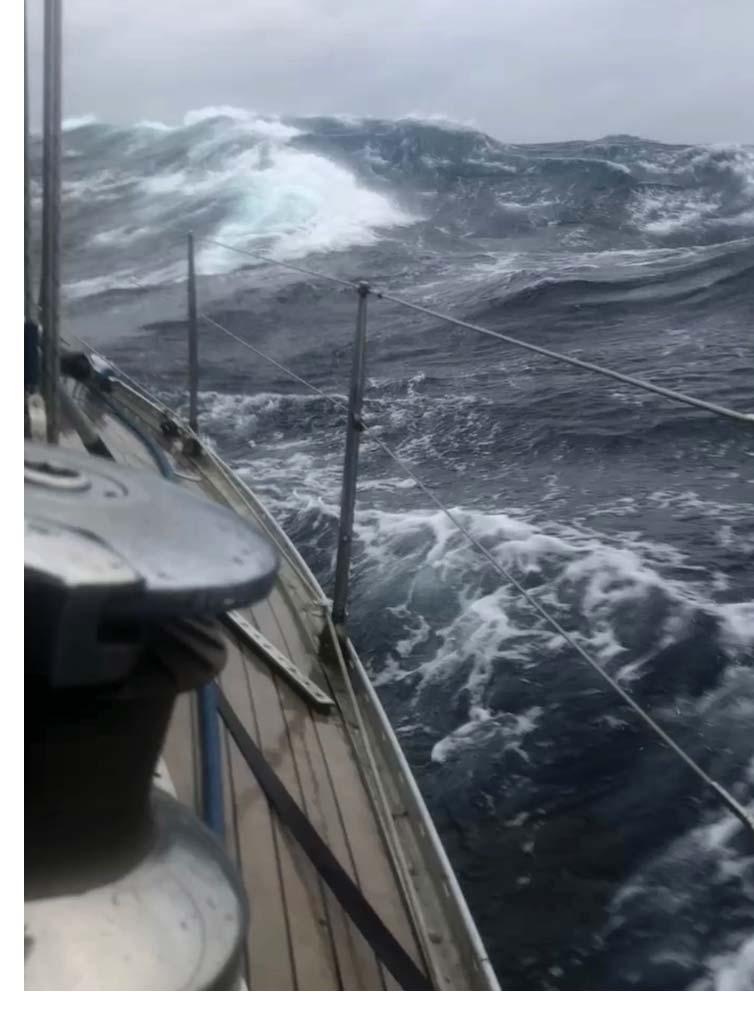
 The first casualty. The Autohelm rotary drive gave up on day three, the culprit being the plastic bearings
The seas begin to build...
The first casualty. The Autohelm rotary drive gave up on day three, the culprit being the plastic bearings
The seas begin to build...
station. I was commenting with concern on the sea state and that the waves were regularly breaking, not just foaming on top but full-on, fullheight breaking like a wave on the beach or a reef. We estimated them at 6–8m. One rose behind us and I battled to stay straight and started to round up. This had been standard
Another still from dad’s video. The water in the background is the face of the wave we’re falling down

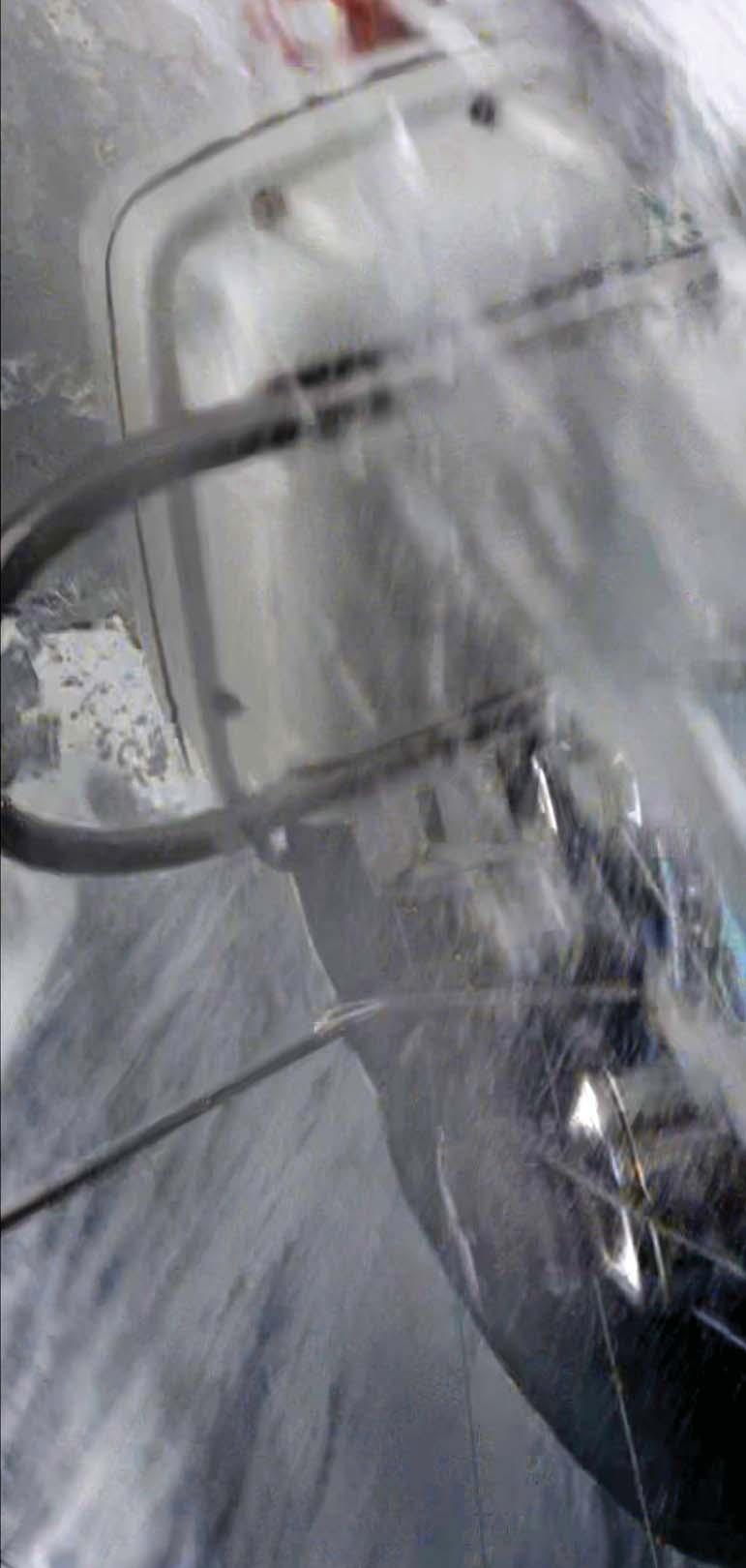
Coffee grounds on the deckhead –proof of the angle to which Moonshiner went over

and Moonshiner had recovered quickly as each wave passed beneath us ... except this one didn’t.
As we rounded up the wave sucked up and began to break at full height, with Moonshiner perhaps just past 45° on the face and right at the top. The breaking lip hit us and literally pushed us out on our side, airborne. From the cockpit I found myself looking straight down at the bottom of the wave just as the mast pierced the water at about 45° from inverted. We had literally dropped in free fall down the front of the wave. An explosion of water first pushed me down then ripped me up out of the cockpit and I felt myself go through the solar panels above the wheel. I managed to hang on and began to think about how to release my harness so I could swim out. At this point Moonshiner recovered and righted herself rapidly. My first thought was for Dad who had disappeared out of the cockpit, but thankfully I found him wrapped up in the sprayhood in the cockpit footwell. He has no recollection of events other than his phone being ripped out of his hands as he was filming the seas.
I shouted for help and after a few moments was relieved to see Katie appear at the hatch. She told me there was significant damage down below and we agreed she’d begin sorting this out while I cleared up on deck. She’d been thrown from her bunk and had landed in the opposite bunk, but other than some significant bruises/ abrasions was okay. Steve was thrown much further, from the port sea berth onto the chart table and Tom. I suspected he had some broken ribs, but he was soon on deck and managing with some analgesia. The whole contents of the fridge and larder cupboards had emptied themselves onto Tom but he was uninjured.
We only noticed this the following day...

On deck the scene was pretty bad. The ocean continued to rage and break over the boat. Both sprayhoods were gone, the cockpit one mangled and obstructing the helm. The solar gantry was a twisted mess and there were holes in the deck where it had been ripped out. The davits were also bent and torn but, amazingly, the tender was still there. After cutting away what I could (thank goodness we had the angle grinder at the ready) it was clear that we were in a precarious position. Katie agreed that we should deploy the sea anchor and all shelter below. The night was pretty unpleasant with the wind screaming and seas breaking over the boat and not much sleep was had, but we were all safe down below.
4th December: All our 12 volt systems are down so no nav kit or VHF, which are run on a dropper from the 24 volt system and trip instantly if turned on, but we have loads of redundancy to navigate with iPads and charts. We are sailing well, the rig seems unscathed and we’re doing 6 knots under full yankee in about 15 knots of easterly. The wind is forecast to drop tomorrow, building again from Tuesday 6th. We’re about 430 miles from the Azores and I hope we’ll be in by Wednesday.
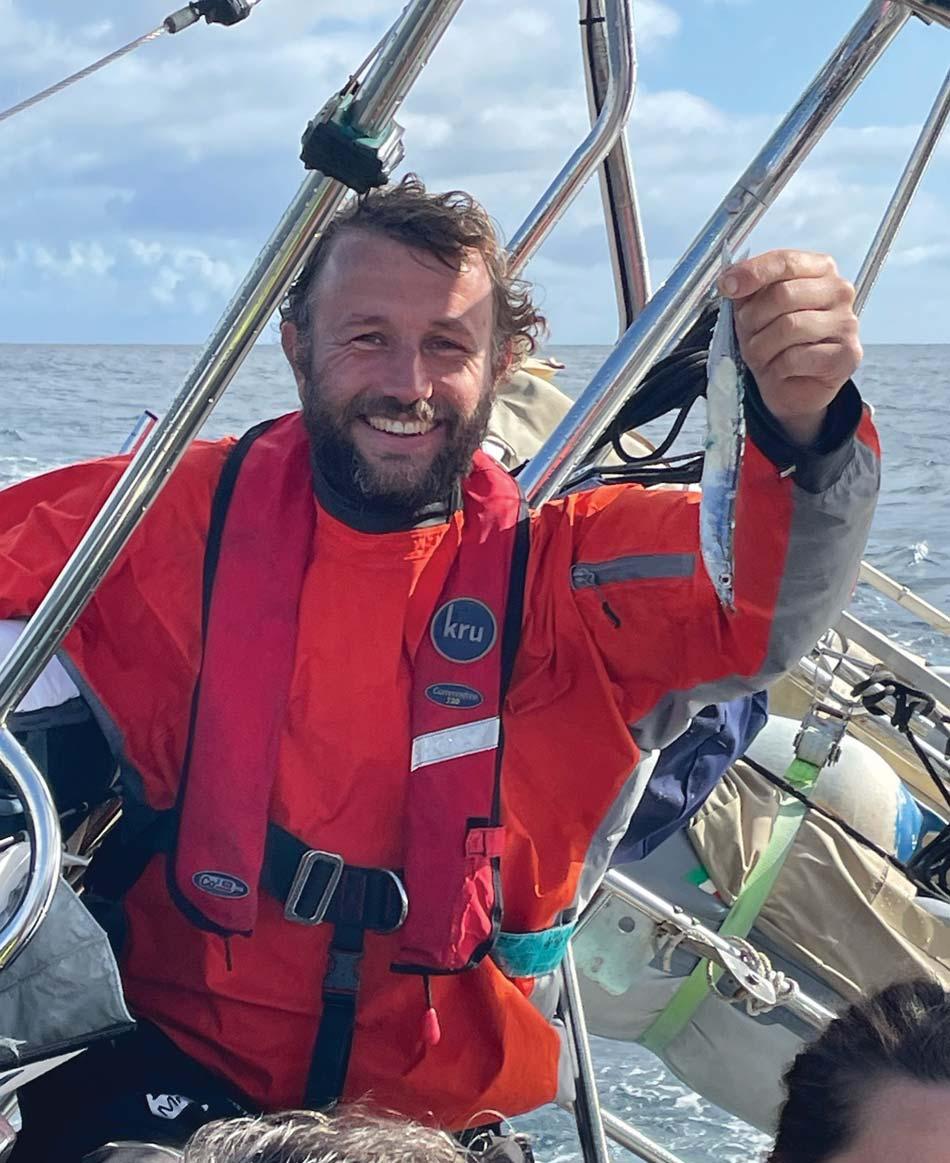
I’m not sure what this means for the rest of our trip. I’m pretty shaken, we’ll need significant repairs and I’m not sure what the insurance will cover. Those are decisions for when we’re in.
5th December: We’ve had the engine on for just over 24 hours now. I know why a friend of mine calls it the screaming banshee box but it feels good to be making progress across a very calm ocean. There’s still a bit of swell running but not a breath of wind. There’s another big system developing over the Azores, so we’ve decided to make best possible progress and get in before it fully develops with us in the middle! Tonight’s blow will be on the beam, so if we can keep the boat running well we should be in by about lunchtime on Wednesday.
It’s been a lovely sunny day so the hatches are open and the deck is covered in drying gear –I don’t think anything missed a dousing. I’ve had a good chance to survey the damage – poor old Moonshiner took quite a battering. I’m told the Azores yards are excellent and good at quick turnarounds ... we’ll see. The islands sound like a great
No wings on this poor little chap, who was literally scooped up out of the ocean
place to hang out and explore. The miracle of the day has been finding dad’s phone. We assumed it had gone over the side when we were knocked down – he was filming at the time! – but found it in a fold of the sprayhood.
6th December: The last couple of days have been pretty calm and we’ve had the engine on a lot. Fuel got a bit concerning as she was getting through more than we expected, but we were pushing hard so not in economical mode. None of us wanted to see another big blow and it was potentially looking as nasty as the last one. This strategy worked really well until a few hours ago when it became apparent that we wouldn’t make our plan, which was to head round the west end of São Miguel and then along the south coast to Ponta Delgada. The west end of the island would be a lee shore, so we turned east instead.
7th December: The seas built quickly with the wind, and by the early hours we were again running with 40 knots plus and huge swell. We were all close to the end of our tethers, but an amazing stint on the helm by Dad allowed us to get some rest. Some really expert helming was required to keep Moonshiner straight on the face of the waves while making progress south to our destination. It was pitch black, and that brought a new fear – how were we going to make landfall in 40 knots, with huge surf and an unforgiving coastline? As the bottom shallowed from thousands of metres to a hundred the swell built and we seriously considered sailing away for sea room. But then suddenly we were through it, the dawn brightened and smiles broke out. A beautiful lighthouse welcomed us past, dolphins danced in the waves and the dramatic, steepsided coastline absorbed our attention.

Farol do Arnel lighthouse at São Miguel’s eastern end, a very welcome landfall
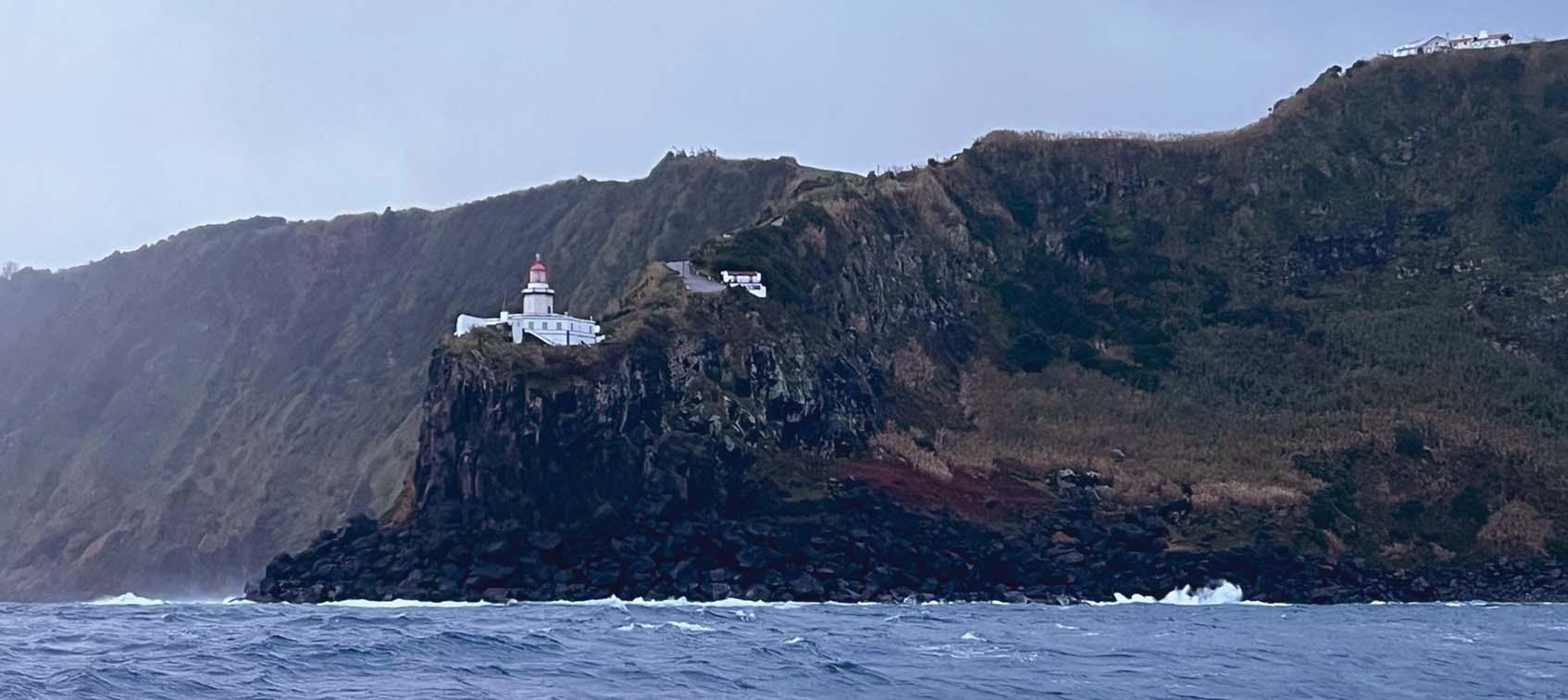
We were low on diesel and thought another 20 miles along the south coast of the island into 30–40 knots of wind was going to be too much, so elected to anchor. We dropped anchor in a shallow cove between Ponta da Marquesa and Ponta do Lombo Gordo* and relaxing a little was a massive relief. The amazing coastline felt really tropical, befitting the length of passage we’d done. It was nicely sheltered, with little swell and a slightly swirly wind pushing us in circles, but we felt secure. The wind was forecast to remain strong from the west overnight but swing into the north next day.
* It has since been pointed out that the area south of Ponta do Arnel is a marine reserve in which anchoring is prohibited.
Anchored off São Miguel and able to relax at last
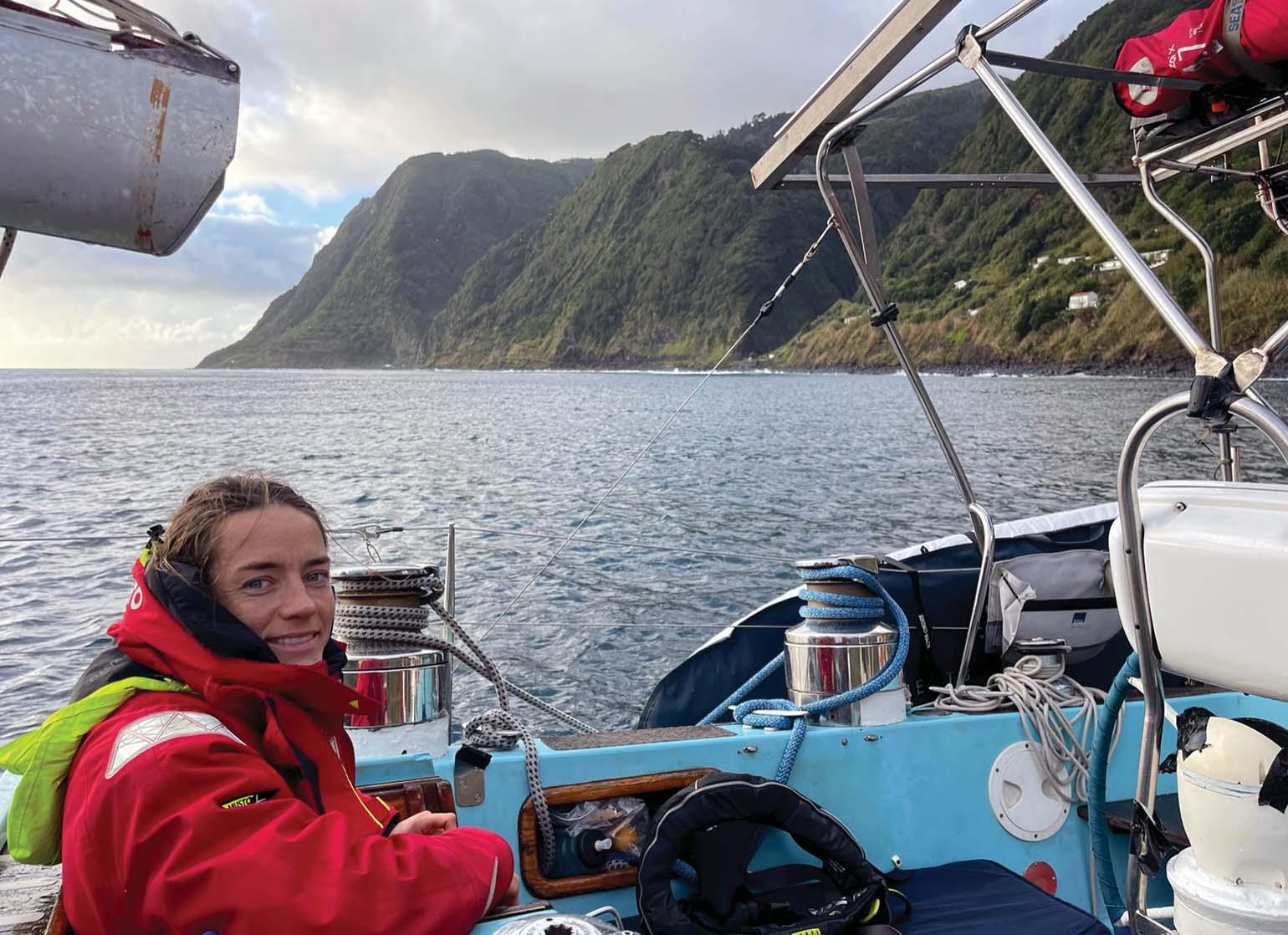
8th December: The following morning was a different story. The wind had been forecast to go round into the north during the day, but had done so early, which made the anchorage much less comfortable. No bother –we were aiming to leave early, but leaving proved tricky with a stuck anchor (the windlass was dead, of course) and then engine failure (rope around prop). Tom’s bare-chested dive from the pulpit to clear the prop and check the anchor saved the day. We then had a glorious sail along the south coast to Ponta Delgada to truss up Moonshiner in the marina.

 Glorious conditions on the way to Ponta Delgada
The Azorean coastguard checking on us as we sail along the south coast of São Miguel
Glorious conditions on the way to Ponta Delgada
The Azorean coastguard checking on us as we sail along the south coast of São Miguel
Ponta Delgada wasn’t as good as we’d hoped, however, as the marina has very poor shelter. The weather continued to be appalling with gales and rain. We snapped a warp but other boats broke cleats and popped fenders. Frustratingly, the Azores seem to shut down totally in December. All the yards and trades were closed and wouldn’t start work again until January. We had significant damage, with the solar gantry gone, all the 12 volt nav system down and the battery chargers dead. The boom crutch and davits were smashed and torn from the deck and there was lots of damage down below. Admiral Marine Insurance were being super helpful, however, which was a relief.
We decided to move on to Horta as soon as we could. The marina has much better shelter and OCC member Duncan Sweet at Mid Atlantic Yacht Services would be on hand to help sort things out. It was 150 miles to the west-northwest and with the wind continuing to howl from that direction we had to wait for a break to make the passage. Once there Katie and I had a lovely Christmas and MAYS was very welcoming and helpful in assessing our damage. Of course we were also discussing our future plans. We’d been a month late leaving, and a three-month delay in the Azores was making our Pacific dreams look increasingly unlikely. Even so we were both positive that we were going to have a great year on the boat – just different from the original plan.
We have, of course, reflected extensively on the passage. Could we have done anything different? We will continue to discuss and take counsel, but I think we ran the boat as well as we could have and really did end up in the wrong place just at the wrong moment. Which begs the follow-on question should we have been there at all? Moonshiner was certainly equal to it, but were we as her crew? We were certainly light

on experience even though we had several lifetimes of sailing between us, including charters all over the world and a circumnavigation of the UK. We always knew that a winter passage was going to be challenging but I feel we were as prepared as we could have been. As a sailing friend has said, we had many thousands of waves beneath us, and had it not been for that one it would have been a challenging but ultimately uneventful passage. We’ve certainly learnt a lot and are still optimistic about the coming year aboard Moonshiner. Would we set off again, with the benefit of hindsight?
I don’t think either of us are ready to answer that question yet.
Editor’s note: Readers will be pleased to know that, by the time of going to press in May, Moonshiner and her crew were en route for the Galápagos Islands after a ‘lovely’ Atlantic crossing and a couple of ‘crazy days’ transiting the Panama Canal.
It’s scary to have a 30 foot wave chasing you. If you are steering, you don’t look back. The crew looks back for you, and you watch their faces. When they look straight up, then get ready!


(Boat ownership for Charles and Frances began in 1997 with a 30ft gaff cutter, Serendipity, followed in 2002 by a Warrior 35, Bow Bells and in 2006 by Francesca of Fowey, a Mystery 35, bought new but incomplete. For several years (and somewhat unintentionally) they actually owned two boats – Francesca of Fowey in the UK and Altair, a Rustler 36, in the Caribbean. The latter was sold in 2020, the year Charles volunteered for the post of OCC Treasurer.
Francesca of Fowey is a classic-looking modern design by Stephen Jones, in which Charles and Frances have cruised home waters extensively. They also raced her in the very windy 2011 Round the Island Race in which three boats capsized, finishing 129th of about 1800 entrants.
The plan saw us heading straight to Brest to follow Brexit rules and ‘clear-in’ to France. Thereafter we planned to cruise South to Bénodet and reach Port-la-Forêt and the Association Nautique, before heading further south in our five-week holiday window.
13th July: We slipped our berth at Mylor on Cornwall’s Carrick Roads at 1800, heading due south for the Chenal du Four pushed by a brisk force 5 northeasterly. At about 0200 next morning, Bastille Day, the autopilot decided to return us to Falmouth and, two gybes later, I had a damaged right arm, suspected broken. The new Wichard gybe-preventer had been unable to do its job because the fastenings of the blocks to the shrouds either side had proved inadequate. My annoyance at this took my mind off the pain in my arm and we continued our course south with the preventer properly secured and the autopilot behaving itself.

It gradually dawned on us that there had to be a substantial shift in boat-handling responsibilities. Hence Frances helmed us down the Chenal du Four in glorious sunshine, still pushed by an only slightly moderated northeasterly, while the saloon sole was the most acceptable place for me to be as I experienced nausea from the shock of the injury. Thankfully this passed and we reached the beautiful Anse de Bertheaume
Francesca of Fowey ready to go
anchorage 26 hours after leaving Mylor. I soon learned that picking up a mooring buoy one-handed was not on so we anchored, albeit wrapping an ancient, small-boat mooring line around our rudder. A job for the following morning!
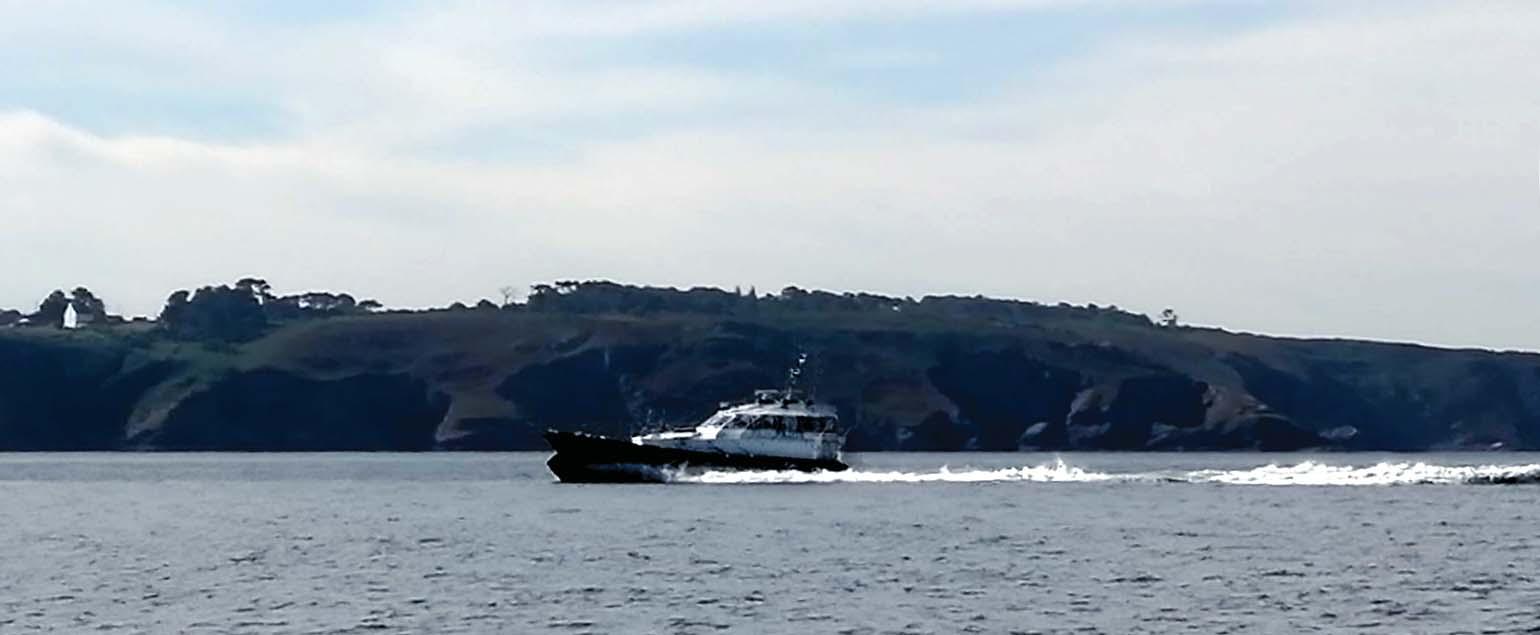
15th July: With some difficulty
Frances raised the line on a boat hook and I cut through it with a hacksaw from the dinghy using my left arm. We set sail for Brest, a new destination for us on that coast, and reached Marina du Château in early afternoon. At the entrance we impeded the progress of a small, scruffy French naval craft full of families out on a jolly and got shouted at for our pains. Coming into the pontoon, Frances warned the marina of our potential difficulties tying up one-handed and help was duly provided.
Finding the right hospital and treatment is a story on its own, but eventually a broken arm – just the forearm (ulna) fortunately – was diagnosed and plaster applied, with stern instructions not to use the arm and to return in two weeks’ time to confirm via X-ray and surgeon that all was well. These were disconcerting orders.
18th–21st July: The Brest douaniers (customs officers) were completely uninterested in us but cleared us in nonetheless. The process seemed rather pointless. After Frances had reprovisioned in the broiling heat, a challenge in Brest with the nearest shops 20 minutes away up steep hills, we decided to head up the River Élorn to the northeast, find an anchorage, recuperate and consider our options. We found a beautiful spot at Kerloret just short of Landerneau where we relaxed, read and admired the wildlife.
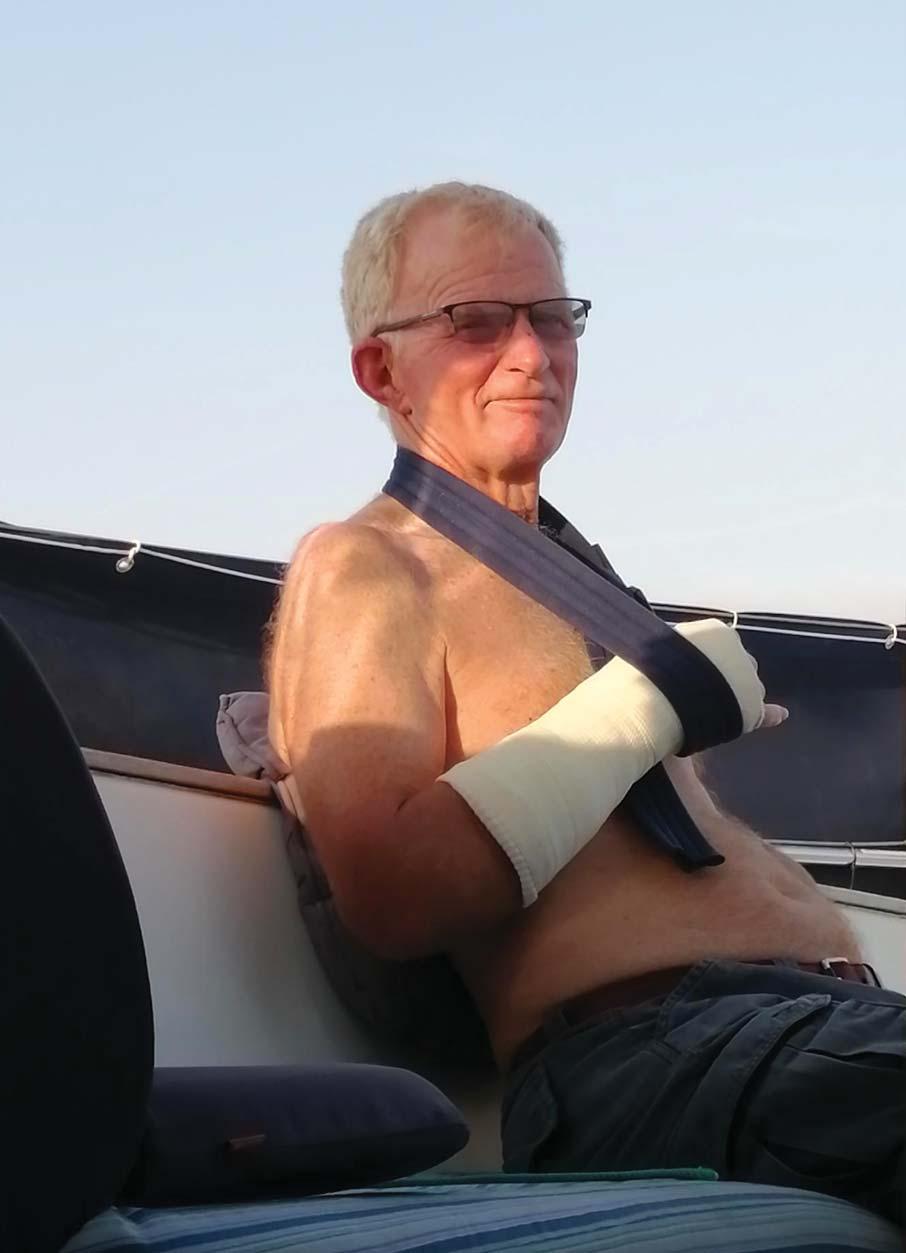
The only drama on the Élorn was being ‘attacked’ on all three nights by a military vessel with an extraordinarily strong search light looking for who knows what. Although we were not boarded, we were glad that we had cleared into France legally. We considered returning early to England, but that was not really an option as we had dog and house sitters booked until 12th August who would have missed out on their holiday. We also thought about bringing crew over from the UK to assist our return home, but eventually discarded that idea when we found that my arm was gradually regaining some usefulness.
24th–26th July: After three days on the Élorn we motor-sailed back out past Brest and southeast into the River Aulne, highly recommended by Peter Cumberlidge in his excellent Secret Anchorages of Brittany, to anchor in idyllic surroundings just below the spectacular Térénez Bridge. Although it meant 10 miles of up-river motoring, our objective was to reach Châteaulin on the Nantes-Brest Canal. There was a lock to be negotiated at Port-Launay and the book suggested we would have to operate
it ourselves. Our river voyage passed through breathtakingly beautiful countryside with, of course, the chartplotter giving no indication of depth. In some danger of going aground, touching bottom here and there, we soon realised that the deepest water lay on the outside of the many twisting, sharply turning bends.
River Aulne anchorage with a French warship laid up in the distance

 The spectacular Térénez Bridge over the River Aulne
The spectacular Térénez Bridge over the River Aulne
We approached the lock with some trepidation, but found it was staffed by a charming lock-keeper and powered very effectively. We were keen to reach Châteaulin so passed through Port-Launay, ignoring all the craft moored at the canalside – our mistake! Despite the apparently helpful buoyage we were soon aground in what turned out to be a very silted-up canal, with no rising tide to lift us off. The only traffic that could get through was shallow-draft powerboats and we were lucky and grateful to be dragged out of the mud by one of them after a long struggle. Having finally returned to the spot where all the other

boats had stopped, knowing they could get no further, we were invited on board a Malo 34 for drinks and dinner by a couple we had just met, which was a great outcome after our earlier tribulations. From them we learned that the visitors’ pontoon at Châteaulin had been removed by the authorities after being damaged the previous year, so we were fortunate not to have made it further up the canal.
Port-Launay must once have been a lovely, lively village but signs of economic decline were evident. The boulangerie/ patisserie (bakery or pastry shop) was closed, there were no food
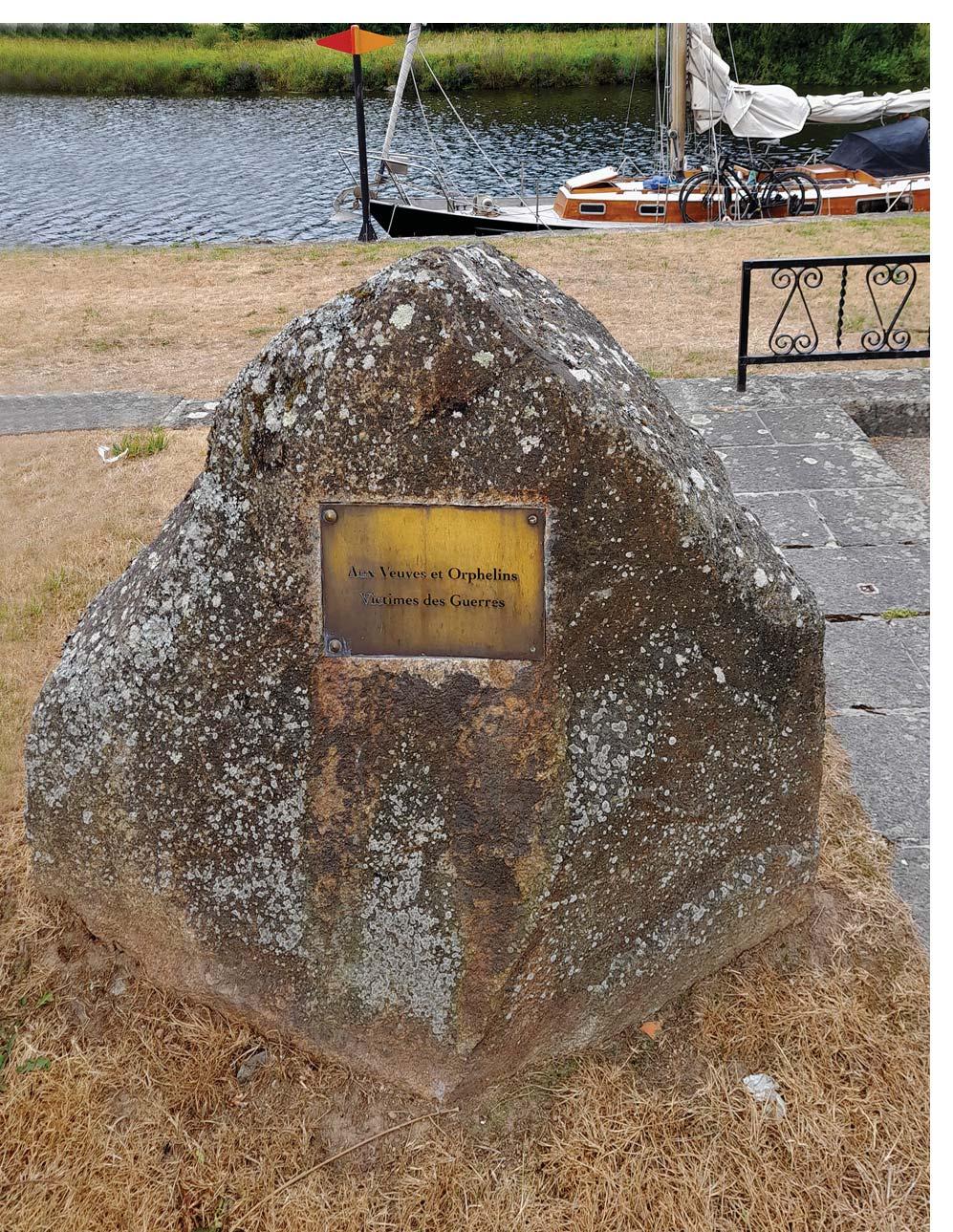 The Widows and Orphans Memorial at Port-Launay
The lock-keeper at Port-Launay chatting with Madame
The Widows and Orphans Memorial at Port-Launay
The lock-keeper at Port-Launay chatting with Madame
shops, just one bar tabac and little else in the sleepy backwater. There was a vending machine selling baguettes for one euro but it was, predictably, empty. At one corner stood a typical French latrine, such as we have all known and loved (sometimes), in which a typed notice wished the occupant success with his endeavours and a bonne journée. The Square with its Mairie (town hall) is really picturesque and graced by war memorials, both to French soldiers and to their widows and orphans.
27th July: We returned to Brest in sweltering heat and no wind to attend the hospital. I was dismissed by the ‘ urgence ’ department for the obvious reason that I was no longer ‘urgent’ and, with considerable difficulty, was X-rayed, told the results were on the internet and that no doctor was available to assess them. I would have to find a local GP. We quickly decided this was not an option and enjoyed an excellent dinner at La Presqu’île, one of the many marina-side restaurants.
28th July – 5th August: We left Brest bound for the Raz de Sein accompanied by two gorgeous, classic, gaff-rigged cutters and, in a light northeasterly,

 The quayside at Port-Launay
The quayside at Port-Launay
motor-sailed under jib to anchor just east of the Raz. Frances timed the Raz perfectly, so although the wind was almost on the nose it was not an uncomfortable experience. The following day we sailed southeast, accompanied much of the way by a large pod of dolphins. We reached Bénodet mid-afternoon and decided to anchor upriver on the Odet, reckoned to be the prettiest river in France.
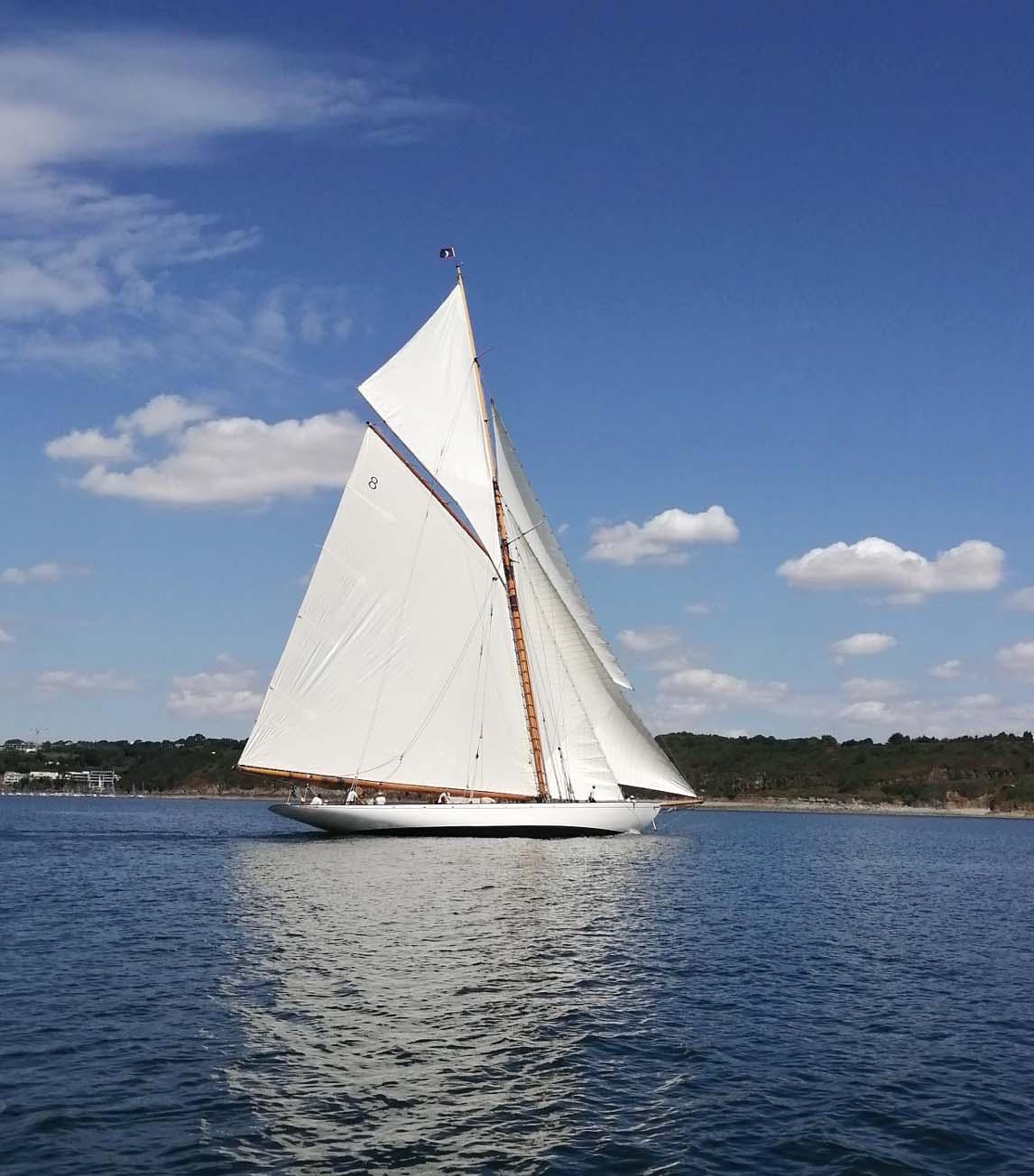
Next day we felt we deserved a night in the marina and dinner ashore, a very fortuitous decision. We motored back downriver to the marina and the following morning, with the batteries needing to be charged and finding that shorepower was not providing what it should, I started the engine. It started, but with a curious noise I had not heard before so I quickly shut it down. On restarting it Frances, who was down below, alerted me immediately that smoke was coming into the saloon from the engine bay. The engine did not respond to a cockpit shutdown so I had to find the emergency stop in the smoke-filled engine bay. Fortunately I remembered exactly where it was. We now had no shorepower and no engine. Merde was the appropriate
 A classic gaff cutter off Brest
The Raz de Sein in ideal conditions
A classic gaff cutter off Brest
The Raz de Sein in ideal conditions

French word.
While there are worse places to be, we were stuck in that marina from 31st July until 6th August while an electrician dealt with the shorepower issue and the on-site boat maintenance company promised to deal with the engine. The whole of France was on holiday and we were fortunate to get the engine fixed in just seven days. We tried to be patient, but even so I became wellknown to the Nicolas Cave (wine merchant). We were also incredibly lucky that the relays failed when we were in a marina and not at sea. The shorepower unit had been replaced earlier in the year by so-called experts, however the French electrician was most uncomplimentary about their work, suggesting they should choose another métier.
6th–8th August: Due back in Mylor by 12th August to relieve the dog and house sitters, any thought of going further south was long gone. We slipped the marina on Saturday 6th, heading for our usual pre-Raz de Sein anchorage. The jib was up but, with no wind, the motor, thankfully, was running.
It was a scorching day with a hint of strong wind in the forecast for our destination. I forgot about that when, in early afternoon, I tried to put a reef in the jib but failed because of a riding turn on the winch. In the worst case, I thought, we could drop the sail. As we approached our anchorage from the south the constant northeasterly became a 30 knot shriek and an unreefed jib was far too much sail, but taking the sheet off the winch risked shredding a sail we could not drop.
The rig was shaking and even the wind generator had shut down because of the strength of wind. Making the usual anchorage with its small boats on buoys was obviously not viable. Frances swiftly found another anchorage further east and I eased pressure on the rig by releasing the halyard and scandalising the sail. We made the new anchorage without too much difficulty and Frances was able to drop the jib from the pulpit. Because of my broken arm we could not raise it again and it had to be lashed on deck until we reached a marina berth. After such drama a cockpit drink at sunset was pure bliss.
The day’s events made us realise that we must hoist the mainsail and manage it as best we could. This Frances did and we sailed off anchor to the Raz, continuing to the Anse de Pen Hir on the south side of the Camaret-sur-Mer peninsula, a new anchorage for us which proved delightful. The following day we had to reach Brest, raise the
jib in the marina, clear out, reprovision, refuel and finish the day back at the Anse de Bertheaume anchorage. All was achieved, mostly by Frances in the broiling heat. Although I had a rucksack for essentials such as wine and beer, this was impractical for groceries so the shopping burden mainly fell on her and, as I said previously, Brest is steep and without good local shops near the port.
9th–11th August: After spending the night at Anse de Bertheaume, we set off for the Chenal du Four having hoisted the main at anchor and, for the first time, raised the anchor from the cockpit. Ten minutes into the passage I looked forward but could not see the anchor. Going onto the foredeck I could see that the chain had not fed through the windlass completely, but managed to untangle it and retrieve the anchor before any damage occurred. In future I’ll always raise it from the pulpit!

The continuous northeasterly meant progress up the Chenal was hard won, but we reached our intended destination of Portsall in mid-afternoon, after skilful navigation by Frances through the outlying rocks and shoals, and anchored off the village and small harbour. We were concerned that the chartplotter showed rocks close to our 7m spot, but chose to ignore the warning without subsequent regret.
The wind remained in the northeast for the Channel crossing, which was unhelpful, but we reached Mylor at 0500 on 11th August after 25 hours at sea.

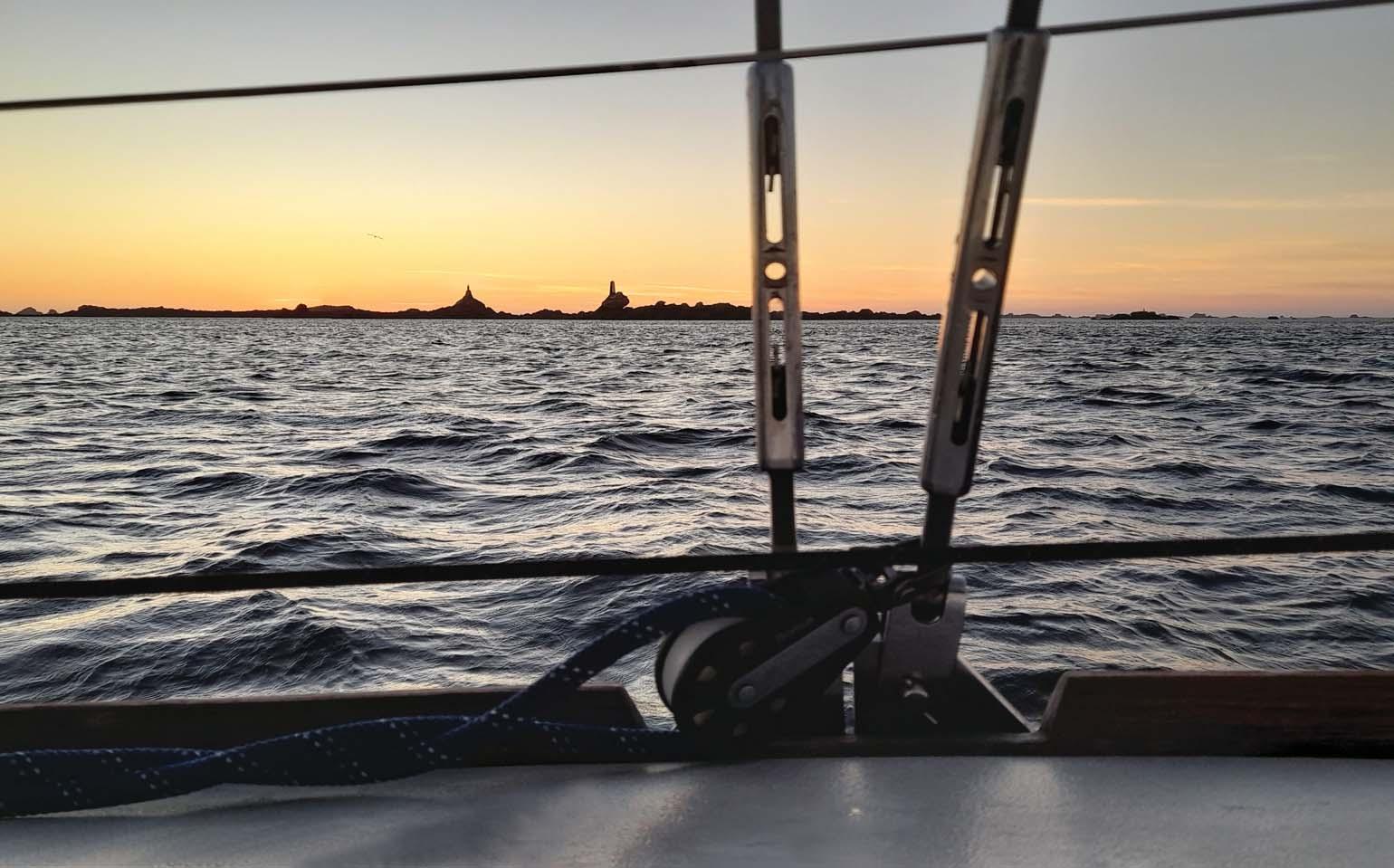 The rocky coast at the northwesternmost tip of Brittany. Note the gybe-preventer block now properly secured to the shroud
Approaching the anchorage at Portsall
The rocky coast at the northwesternmost tip of Brittany. Note the gybe-preventer block now properly secured to the shroud
Approaching the anchorage at Portsall
Jimmy Cornell is well known to the sailing community for both his considerable sailing experience and his prolific publications. He has developed an enviable talent for presenting large volumes of information in a concise and readable form.
The first part of the book relates to all aspects of voyage planning and the necessary preparations for a successful cruise. Choosing the right boat is dealt with first. The results of several surveys indicate, unsurprisingly, that average cruising boat lengths are continuing to increase, as is the percentage of multihulls. The chapter continues to cover all aspects of pre-voyage preparation, from the details of boat equipment and finance to the nature of the crew, their attitudes and necessary self-sufficiency. Throughout, the issues are supported by comments and opinions of various experienced long-distance sailors who each add their own particular style. At one extreme are those who believe the cruising life should contain all the conveniences of home. Others believe in only carrying what is necessary and works well, with particular emphasis on being able to repair most equipment oneself. Towards the end, Jimmy highlights the importance of the right attitude. He comments on the change in recent years in sailors who have become more self-contained and self-centred. Your reviewer agrees, but in his analysis Jimmy has disregarded a key element in this change – the internet. Access to this has become a dominant element in many of the current generation of sailors’ plans and, hooked up to the world, they appear to see no reason or desire to communicate with others outside their immediate group. The section concludes with discussion concerning climate change and world weather systems.

The remainder of World Voyage Planner is devoted to descriptions of a multitude of cruising routes around and across the world’s oceans. This really is the heart of the book and it is all too easy to get immersed in the addictive descriptions of so many enticing passages. It is divided into three main chapters: The Atlantic Ocean, The Pacific Ocean and The Indian Ocean. The Mediterranean is given a short entry which describes one or two season transits, either west or eastbound.
Each chapter begins with an introduction to the history of its ocean, followed by an overview of the dominant winds and currents. We then move on to the possible voyages. Within an oceanic area significant cruising destinations are selected, such as the Caribbean. Various routes from the most popular cruising hubs in the Atlantic are
then described. Supporting the text, a topological map similar to metro or underground maps is used. This enables the reader to visualise possible alternative ways of reaching their destination with opportunities for diversions along the way. Additionally, each individual route is cross-referenced to its much more detailed description in the same author’s World Cruising Routes.. The best sailing months are highlighted along with possible tropical storm periods. There are often relevant pilot charts for the preferred sailing months and a fair number of illuminating photographs.
Following this plethora of linear routes, the reader is treated to numerous circular passages around each ocean, ranging in period from a few months to around two years. The book concludes with a chapter presenting several possible round-the-world routes starting from different continents.
Jimmy acknowledges that this 3rd edition of World Voyage Planner has been published amidst troubled times. The Covid pandemic seriously disrupted sailing activity. More extreme and unpredictable weather makes for greater uncertainty over long passages, while political instability limits viable destinations. He counsels assiduous attention to the seaworthiness of the vessel and due regard to the safe sailing seasons. Nevertheless, he argues that sailors are generally an optimistic bunch and, given the previous caveats, expects cruising will long continue to be the exhilarating and fulfilling experience we all wish for.
This comprehensively updated 3rd edition of World Voyage Planner is a companion volume to World Cruising Routes and World Cruising Destinations... Anyone fortunate enough to be in possession of all three could consider themselves well-enough informed to tackle any of the world’s oceans. I wholeheartedly recommend it.
1. 9th edition reviewed in Flying Fish 2022/1.

2. Reviewed, together with World Cruising Routes, in Flying Fish 2022/1.
ACROSS THREE
A Voyage in the Yacht Saoirse – Conor O’Brien, 6th edition. Independently published in soft covers at £16.00. 343 127mm x 203mm pages with 23 photographs and other illustrations. ISBN 979-8-3662-1165-9
Conor Marshall O’Brien (1880-1952) was an architect, author, boatbuilder and yachtsman, best known for his sailing exploits. In 1923–1925 O’Brien, with crew, sailed round the world in Saoirse, his 42ft, 20 ton gaff ketch. He recorded the journey in this book, his first, published in 1926. Saoirse was the first small, private vessel to make a west-to-east circumnavigation south of the three great capes – Cape Horn, the Cape of Good Hope and Cape Leeuwin, Australia – the Clipper route.
Across Three Oceans had been out of print for nearly 50 years, but for the centenary of his departure the Irish Cruising Club, of which he was an honorary member, and the Royal Cruising Club, of which he was a member, collaborated to create this new edition. It includes an illuminating foreword by William (Winkie) M Nixon, the twelfth chapter from the first edition which was later omitted, and his logbook extracts that appeared only in the first edition.
O’Brien was a keen mountaineer as well as a sailor, known for climbing in bare feet. He had planned to join an expedition to climb Mount Cook / Aoraki in the Southern Alps in New Zealand’s South Island, which instigated the circumnavigation, but because of delays during the voyage he arrived in New Zealand too late.
Curiously, O’Brien doesn’t mention the names of his crew and in many cases makes rather disparaging assessments of their abilities and proclivities. Of course, there weren’t many yachtsmen with experience of managing a small boat on such an epic voyage, and these were seamen used to handling cargo vessels.

O’Brien’s plain, seamanlike account is so modestly written that it would be easy to miss its full significance. However, anyone who has crossed an ocean in a small boat will recognise the seamanship and determination that he must have possessed to keep this relatively small vessel, with her uncoppered bottom, moving at speeds that delivered 150–170 mile daily runs despite sea state and weather conditions. He provides enough detail regarding the boat’s design and performance, as well as the conditions encountered and places visited, to encourage others to follow in his wake. It’s fascinating to think about how much has changed in that 100 years.
Conor O’Brien returned to a hero’s welcome in Dublin. After his wife, the artist Kathleen Frances Clausen, died in 1928 he lived aboard Saoirse until 1940 based in Ibiza and Cornwall. During the Second World War he served in the Small Vessels Pool as a skipper delivering support vessels across the Atlantic from America to Britain. However common ocean voyages in small yachts have become, Conor O’Brien’s pioneering circumnavigation will always remain noteworthy.
2023–24 – editor Lucinda Heikell, consultant editor Rod Heikell. Published in soft covers by Imray Laurie Norie & Wilson Ltd [www.imray.com] at £34.50. 390 210mm x 280mm pages, generously illustrated with coloured harbour plans, chartlets and tables. No photographs. ISBN-978-17867-9442-0
Imray first published Rod Heikell’s Mediterranean Cruising Handbook in 1985. Early editions grew into increasingly long, weighty tomes incorporating diverse and often incongruous bits of nautical information more suited to an almanac. For that reason, in 1995 the Mediterranean Almanac was born. The Handbook largely contains information of a non-changing nature and is not updated as frequently as the Almanac, and neither is it included in this review.
The first quarter of the 2023–24 Almanac covers route planning, safety and distress, including GMDSS, coastal, radio, satellite and internet communications, weather and finally regulations, both maritime and by country. The remaining 75 percent of the Almanac covers harbour and navigational information for all countries bordering the Mediterranean Sea and, for some reason, the Atlantic Islands. It includes succinct data on approaches, waypoints, berths, options, shelter, facilities, charge bands and contact information for many major harbours, ports, marinas and anchorages, with plans for the most important of these.
It is published biennially, with downloadable supplements available at the start of the second year. Since 1995 it has been steadily improved in terms of content, format and cartography and, after nearly 30 years, has been honed for the purpose for which it is written. In that respect, in paragraph 9 of the Introduction the Heikells claim that, ‘On passage you can safely get around the Mediterranean using the harbour plans in the Almanac, but if you are exploring a region then you will need the relevant pilot book for that country or area’.

As a delivery skipper for over a decade, when in the Mediterranean I always carried selected segments of the Almanac (and Imray passage charts) and found that the Heikells’ claim was fully justified. As a bluewater cruiser for over 20 years I consider that their advice regarding the need for pilot books is equally relevant and important. I therefore find it a little misleading and even difficult to accept that no mention of the Almanac’s fundamental purpose and limitations is included on either its cover or in the Imray’s publicity when this information is of paramount importance to potential purchasers.
Even so, I would still want a copy on board, although not necessarily the latest edition, since this compact Almanac provides a unique overview of the whole of the Mediterranean at a modest price when the initial cost is spread over, say, four years. MVN
of
Thor Tangvald – Charles J Doane. Published in both hard and soft covers by Latah Books [www.latahbooks.com] at $27.72 / £26.99 and $17.99 / £15.67 respectively. 313 133mm x 203mm pages including about a dozen mono photographs. ISBN 978-1-9576-0706-1
Norwegian sailor Peter Tangvald lived a minimalist life. Voyaging in an engineless boat, he found freedom from the norms and limitations of shoreside society and inspired many to seek their own adventures. The myth is seductive, but there was a dark side. He married seven times. Two of his wives died violently at sea. He crossed oceans with his small children on simple craft with no electronics, no radio and no weather forecasts. He was an excellent sailor, sometimes courageous and often reckless. Into this world, on a boat, Thomas Tangvald was born.
Like his father, Thomas was most at home at sea. Unlike his father, he did not know any other life until he was 15 and was surprised to learn that most people did not live on boats. He wrote to a friend, “I don’t think I’ve ever felt as alive as when I am sailing. It made me realise just how pampered most people are – and how little freedom most people have. Most people live hardly at all ...”. His sentiments resonate with those who have experienced the ocean, but most of us are also grounded somewhere on terra firma. Thomas was not. Tellingly, towards the end of his life, he wrote, “I am really hoping I can finally integrate myself into a place where I can say ‘I am from here’ ”. He never got there.
Thomas was a superb sailor. He cruised, raced, maintained and lived on multiple boats. He dreamt of becoming a famous boat designer and had a remarkable gift for it. But his life with his father was at times horrific. As a toddler, he saw his
mother shot and killed by pirates. One stepmother was killed at sea and he helped search for her body, which was never found. When he was little, his father would lock him in a cage in the forepeak while underway and then in 1991 at age 15, he watched helplessly as his father’s boat was wrecked in pounding surf on Bonaire’s rocky Caribbean shore. Thomas tried unsuccessfully to reach his father and little sister, listening to her screams from her cage in the forepeak. Both perished as the boat broke up.
He was taken in by old cruising friends who lived in Andorra and got his first taste of formal education. He went to university in England and discovered the internet. Starting from scratch, he assessed human society, zeroing in on climate change as a huge problem before it appeared on most radars. He fell in love with a woman 20-plus years his senior and she with him. His life might have followed a happier path had he stayed in England, but he was obsessed with returning to Puerto Rico where he had lived with his father so, after more than two years with his partner, he left her to sail across the Atlantic to Culebra. There his life eventually began to unravel.
Handsome and charismatic, he engaged in casual romantic encounters as well as more committed relationships. He worked on and cared for multiple boats in the Culebra anchorage where he lived. But he also took up crack cocaine, which through sheer willpower he gave up after several months. It left him with a testy relationship with local police, a growing distrust of authority and an alcohol addiction he was never able to overcome.
He met Christina, a Puerto Rican woman who shared his taste for adventure and with whom he had two children, but the demons were always at his side. He repeatedly chose the sea over people who loved him. He lived hand to mouth in a world into which he didn’t fit. Christina left him when he couldn’t stop drinking. In the end, he was lost at sea in 2014, alone and without any means to signal distress, on his way to Brazil, where he yearned to make a forever home despite never having lived there. Some believe he may still be alive.
Whether you end up liking Thomas or not, Charles Doane’s compassionate and incisive account of his life will challenge your concept of self-determination and the meaning of freedom. An experienced bluewater sailor with multiple Atlantic crossings under his belt, Doane spent several years researching this story and makes it come alive as only someone with firsthand knowledge of Thomas’s landfalls and anchorages could. He is the author of two previous sailing books, is Cruising Editor of Sail Magazine and blogs at https://wavetrain.net/.
Reprinted by kind permission of the Cruising Club of America, in whose journal Voyages it first appeared.

ISLANDS CRUISING COMPANION – Marek Jurczynski.
Published in soft covers by Fernhurst Books Ltd [www.fernhurstbooks. com] at £35.00. 165 235mm x 165mm pages with a photo and/or chartlet on nearly every page. ISBN 978–1–9126–2146–0
This excellent book is an informative travel guide for anyone visiting the Canary Islands. Marek Jurczynski has been sailing the Mediterranean and the Atlantic for the past 25 years and is the author of sailing guides which introduced Polish cruisers to the waters of Croatia, Greece and Italy. The Canary Islands Cruising Companion is written from the experience of many months of sailing Dzolla, his First 375, around the archipelago.
Preceding the descriptions of the islands themselves there are 20 pages of very useful general information, handy for anyone visiting the islands even if not on a yacht. There are recipes for six local dishes which I would love to try, though it would be helpful to know how many people each recipe would feed. There is very good advice under ‘Yacht & Equipment’ about preparing your boat for the strong winds encountered around the Canaries, and in particular the acceleration zones where the wind can blow 30–40 knots – reefing from the cockpit needs to be done quickly. A long, strong boat hook is recommended in port and at sea as a lot of nets and lines drift just under the surface around the Canary Islands, impossible to see from the deck of a yacht, especially in choppy waters. A long, strong hook could save the day and release you to continue your passage.
Each of the nine islands is treated to its own chapter, starting with Alegranza, north of Lanzarote, which is uninhabited and where a permit is required for anchoring. La Graciosa is the northernmost inhabited island where you have the first opportunity to resupply when coming from mainland Europe. I agree with Marek’s suggestion that Lanzarote is best explored by car and, because the many tourist attractions are scattered all over the island, that you need to reserve several days for sightseeing. In Fuerteventura I was surprised that the excellent marina in Puerto del Rosario is not mentioned – maybe it was not in place when Marek last visited.
Gran Canaria is the third largest island with the archipelago’s largest marina, Marina Las Palmas, which can accommodate 1250 yachts. Marek gives a detailed explanation of its advantages and drawbacks which, having done the ARC, I thought very accurate. Tenerife is the largest island and its 3715m volcanic peak, Pico del Teide, is the highest in Spanish territory. There are 14 marinas described, most of which are on the east and south coasts of the island. Marek tells us that Marina Santa Cruz, in the capital, has been greatly improved in recent years and the marina staff are efficient and friendly.
San Sebastián de La Gomera is a favourite of Irish sailors as a place to overwinter a yacht or live aboard. Marek mentions the large cruise ships which regularly arrive and overwhelm the city with crowds of tourists. The situation calms down noticeably in the evening when the ships depart.
When Marek wrote about La Palma, the September-December 2021 eruption of the Cumbre Vieja volcano was just a prediction. Some volcanologists were predicting the end of La Palma as we know it, but thankfully that has not happened yet. Marek has another forecast for El Hierro, the southwesternmost and least-visited of all the Canary Islands. Since 2010 seismic activity has increased sharply off the island’s south and east coasts and, on several occasions, residents of La Restinga on the island’s southern tip have had to be evacuated due to fumes emanating from the seabed. According to experts, this is the first stage in the formation of a new island in the Canary Islands archipelago.
All in all I recommend this authoritative handbook to all the Canary Islands.
Nearly all their 40 ports and 26 anchorages are described, and the many charts and photographs are excellent.
– James E Geil. Published in soft covers by Newman Springs Publishing [www.newmansprings.com] at $41.95 / £30.95. 392 152mm x 229mm pages, with 138 photos, about half each colour and mono). ISBN 978–1–6369–2672–8
The first photo in the book shows seven-year-old Jimmy Geil steering his grandfather’s crab skiff on the Indian River Lagoon. The boy can barely see over the bow of the boat, but even so he displays the determined look of a person who later would become one of the most celebrated American schooner captains of the modern era. This is the chronicle of a man connected to the sea all his life, and is wonderfully illustrated with well over 100 pictures and other supporting material.
The story continues with the purchase in the fall of 1968 of an old leaky yawl named Dorothy. The family’s experiences with Dorothy and the final delivery of the boat from the Florida Panhandle to the East Coast are full of calamity. The narrative continues with early commercial fishing ventures in small secondhand craft, the author’s encounters with higher education and eventually finding his true calling – mentoring student sailors as they matriculated through their high school years at Tabor Academy in Marion, Massachusetts.

As skipper of the 92ft gaff-rigged topsail schooner Tabor Boy, the author takes us to special places including the coast of Maine, Bermuda, the US and British Virgin Islands, the Panama Canal and various US ports in between. In Maine we learn how Tabor Boy Med-moors to a tree under a waterfall in Somes Sound on Mount Desert Island. The many offshore passages across the Gulf Stream to Bermuda introduce us to colourful characters on that island and culminate with Tabor Boy’s victory over Spirit of Bermuda in the 2019 Marion to Bermuda Race. It is noteworthy that most visits to Bermuda were stopovers on the way to the Virgin Islands, sometimes for crew changes and replacement. The 1993 cruise through the Panama Canal and into the Pacific Ocean was one of the captain’s favourites and marks the first time this 100-year-old steel ship had sailed in that ocean.
In Saint Thomas, USVI, Charlotte Amalie and Red Hook served as the bases for most of the activity. This included sail training along with extensive swimming and snorkelling, the programme later growing into real scientific endeavour when students aboard Tabor Boy engaged in field research to study and document the plight of the elkhorn coral within the National Park waters off St John. These studies were named the REEF programme (Research and Environmental Education Focus) and were sanctioned by the US National Park Service and the US Geologic Survey.
On the technical side, the author does an excellent job of researching the history of the Dutch North Sea Schooner class that includes Tabor Boy, which was originally deployed as Pilot Schooner No 2 off the approaches to Amsterdam. Early pictures include line drawings along with photos of the vessel in 1937 when she served as a training ship in Rotterdam. The author makes some comparisons with a sistership lost in a storm in
1961 and describes how reverting to Tabor Boy’s original rig made the vessel inherently more seaworthy than her much-modified sistership. A master celestial navigator, we get glimpses of how the author teaches that skill to his students at Tabor Academy. A short appendix on manual sight reduction is included at the end.
James Geil is a natural storyteller and Sailing a North Sea Pilot Schooner takes the reader on page after page of adventure on the ocean. We are treated to some idyllic passages juxtaposed with very challenging episodes, including riding out a hurricane on the mooring and some hard gales at sea. But through it all, it is the shared learning and the development of mutual respect between the skipper and his student crew which emerges as the unspoken theme of this book.
Leave this book on your cruiser’s bookshelf for crew reading on your next offshore passage. They can open it at any page to start reading, but I assure you they will have read every page by the time you make landfall.
Reprinted by kind permission of the Cruising Club of America, in whose journal Voyages it first appeared.

NB: The phrases ‘Discounted on Amazon’, ‘Also available as an e-book’ and ‘Also available for Kindle’ apply to such a high proportion of the books reviewed on the previous pages that it no longer seems necessary to include them in the introductory paragraphs.

(It’s exactly 20 years since Iain first wrote for Flying Fish, with this being his 12th appearance in our pages, most recently in Flying Fish 2021/1. In addition to cruise accounts, in Flying Fish 2005/1, 2010/1 and 2018/1 he described the Simbo Rig (SR) referred to several times below. All these issues will be found in the Flying Fish online archive at oceancruisingclub. org/Flying-Fish-Archive.
Song of the Ocean (SotO) is a Najad 570 which Iain and Jan bought new in 2011 and have kept in Turkey for the past few years.)

It was wonderful to find ourselves back in Kemer, Turkey on 10th April 2022 to relaunch SotO and return to a normal sailing season. However, before starting this narrative perhaps I should make mention of 2021 when Turkey re-opened its borders to tourists. On launching SotO at the beginning of July 2021 we found that our twelve 2-volt batteries* had died. Worse still, it took the whole month to replace them. They had to come from China via Portugal so, in view of the pandemic, I guess the delay was only to be expected.
As a result we weren’t able to slip our lines until the first week of August. In the height of the summer season, with temperatures of 40° to 44°C and 90% humidity, plus every Turk who could afford a vessel putting to sea as a result of the pandemic, this was far from pleasant! Why anybody goes on holiday to Turkey in August is beyond my comprehension. We had no alternative, however, and duly slipped our lines for Cold Water Bay, Kekova. It was a pleasant enough sail in 15 knots
* Iain assures me that, although unusual, this is correct.
Song of the Ocean shortly after launching in 2011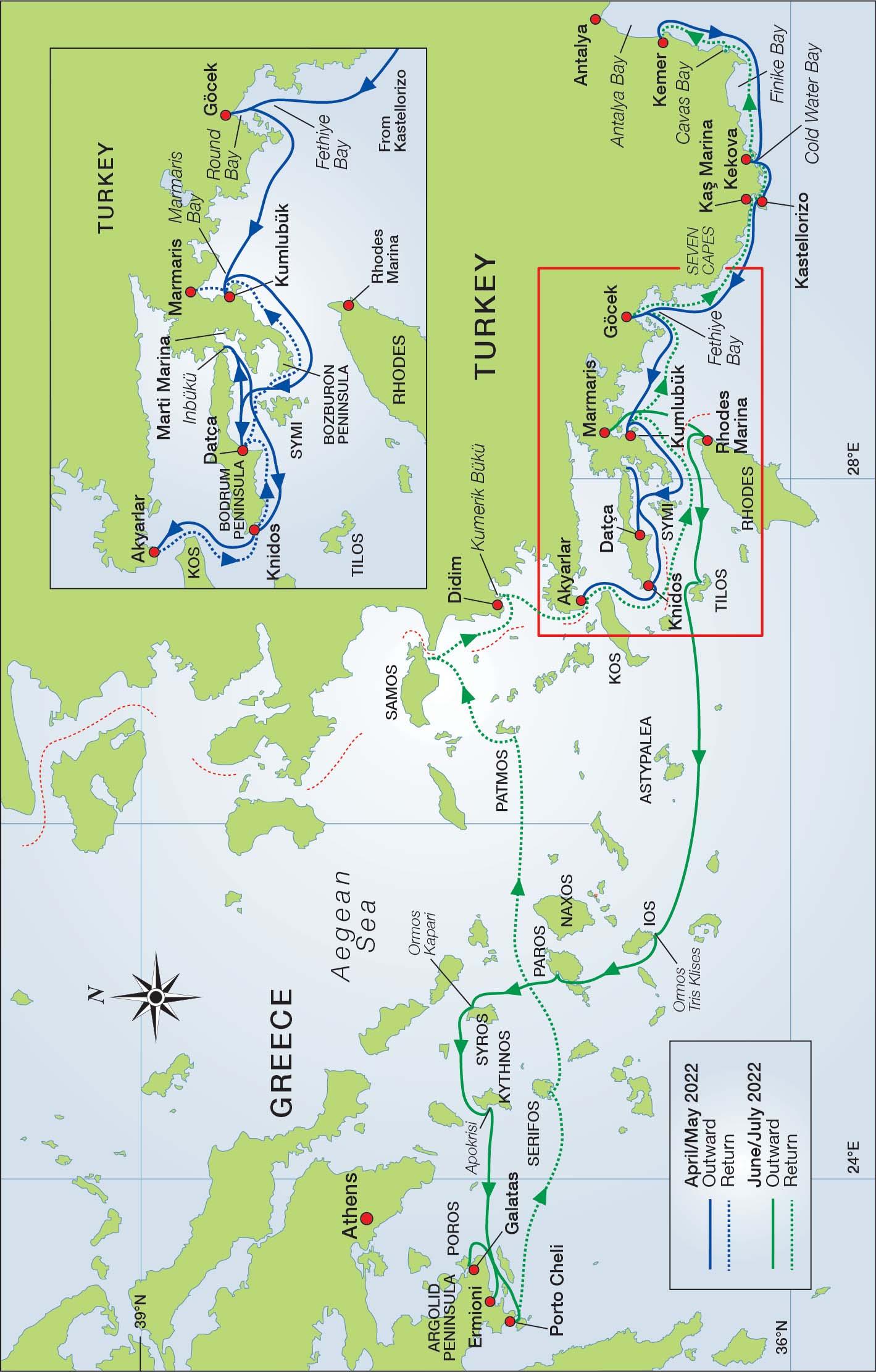
Jan and Iain enjoying sundowners at Tilos, with Song of the Ocean at anchor in the background

of wind from the southwest, but on arrival we were confronted by an armada of anchored yachts which made anchoring exceedingly challenging. Unfortunately we were not permitted into Greece due to Covid and, to a lesser extent, their political issues with Turkey. Although tiresome, this didn’t overly concern us as our main objective was to call upon Silver Marine in Marmaris to measure our rig with a view to replacing it the following year. We weighed anchor at first light next morning to sail to Round Bay, Göcek, which placed us just one more day’s sail from Recommissioning Song of the Ocean in Kemer Marina, Turkey

Marmaris. Once again the anchorage proved a major challenge, but not half as much as when, on our phoning Silver Marine next morning to reconfirm our appointment, we learned that their team was away in Didim for a couple of weeks rerigging a superyacht. This left us so exasperated that, what with the intolerable heat plus the fight to find available anchorages, we decided to call it a day and return to Kemer to lay SotO up, after which we flew to Aspen, Colorado, where we remained until February 2022. The UK had Turkey on the red list, so if we’d stopped off there we’d have been consigned to a government quarantine hotel for two weeks.

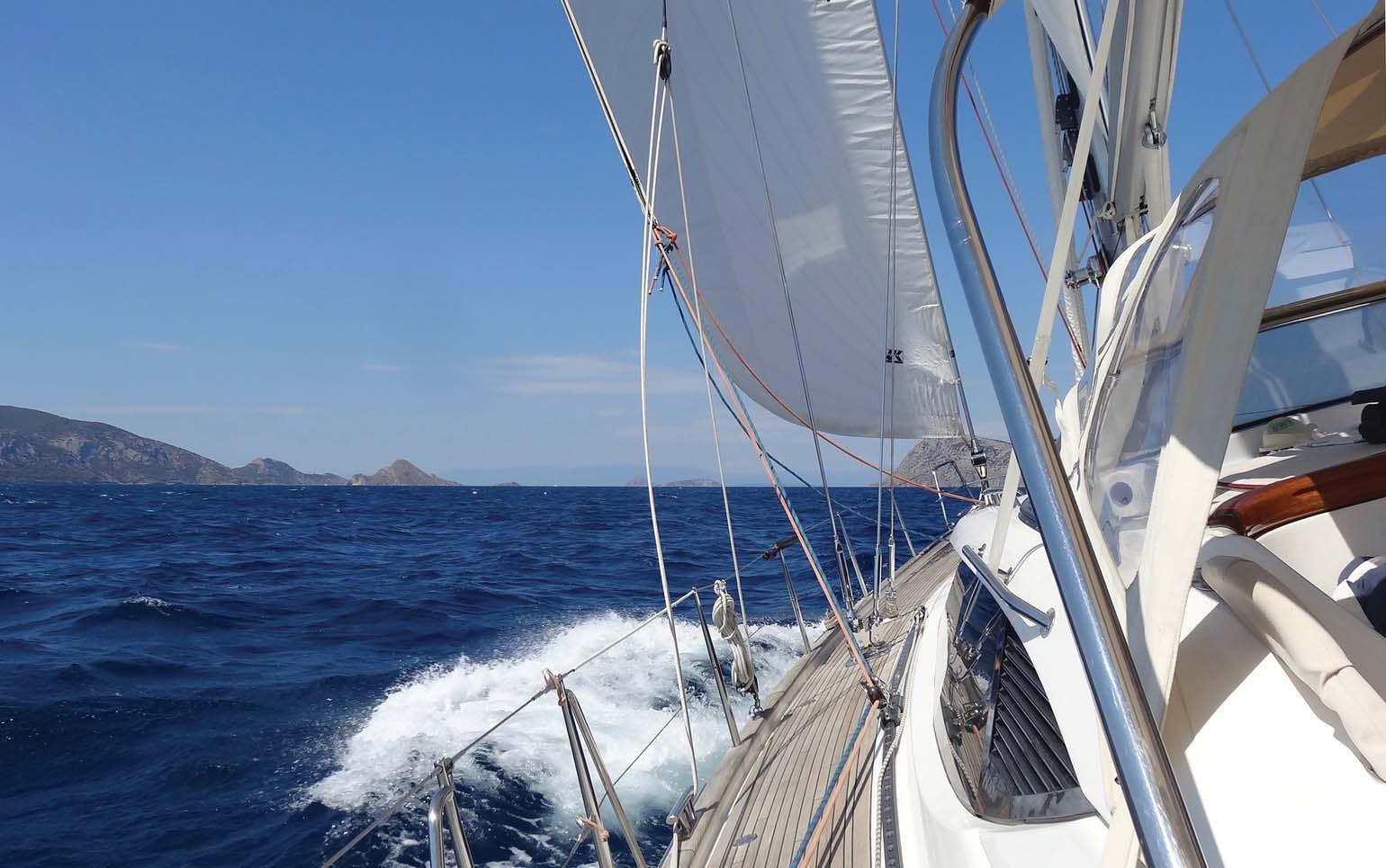 Making past Symi for the Bozburun peninsula
Crossing Finike Bay for Kekova
Making past Symi for the Bozburun peninsula
Crossing Finike Bay for Kekova
As a result we had to defer the new rigging until the following season. Returning in April 2022, on the 27th we slipped our lines in Kemer, ‘shipshape and Bristol fashion’ for the 47-mile sail out of Antalya Bay across Finike Bay to Cold Water Bay. The following day we weighed anchor at 0600 for a run down to Kastellorizo, followed by a reach up to the Seven Capes and onwards into Fethiye Bay for Göcek, a passage of 60 miles. Being early season we relaxed in a virtually empty anchorage with the sun’s rays highlighting the surrounding snow-capped mountains.
We needed, however, to begin the long process of remodelling and renewing some of SotO’s equipment and, with this in mind, made for Kumlubük anchorage outside Marmaris Bay, thought to be the place of President Erdogan’s summer retreat. It proved an extremely unpleasant sail with sand-laden rain in 25–35 knots of wind from between northwest and southwest, making it a 35-mile sail that we were pleased to consign to history! I have never experienced anything quite like it. One moment the wind was bowling down the mountains, the next it was driving in from the sea, concluding with a 35-knot line squall followed by a flat calm. Next morning we motored the 6 miles to Marmaris Yacht Marina to begin the work involved with servicing the windlass plus all our hydraulics, fitting a new mainsail, replacing the bimini and cockpit sprayhoods and, of course, measuring the rigging. Unfortunately, delivery of our new chartplotters was delayed, meaning that we’d have to return for them at the end of the month.
We finally slipped our lines on the 17th of May for a reach down the Bozburun peninsula and north of Symi island to anchor off Datça, one of our favourite Turkish anchorages. However, as we were intent on testing the new mainsail and other recently
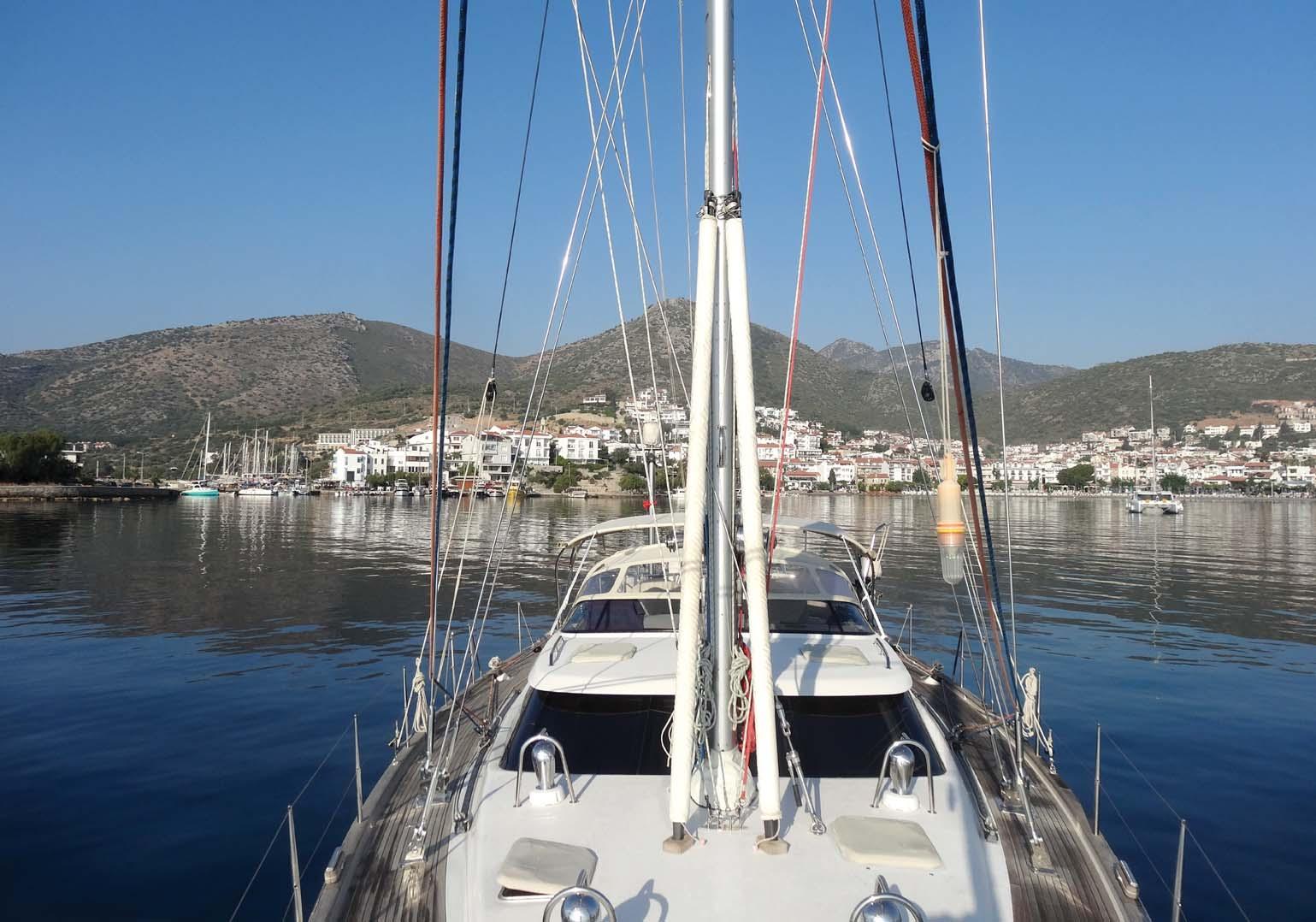
acquired equipment before heading across the Aegean Sea, we left next morning to sail eastwards along the Datça peninsula to the anchorage of Inbükü, which lies across the estuary from Marti Marina. It is a quiet and beautiful bay with stunning scenery.
Two days later we weighed anchor for the beat back to Datça, before continuing along the peninsula next day to round Knidos and make for the northeast tip of Kos. Here the sheets were tightened and a reef taken in the mainsail and jibs, ahead of the 25 to 30knot beat to Akyarlar’s north bay on the Bodrum peninsula to complete a 40-mile run for the day. The following morning we reversed our tracks with a reach to Kos, where we lost the wind so motored down to Knidos. Once around the headland, however, we picked up a 25-knot following wind for a Simbo Rig (SR) run back to Datça.
As by now we were approaching the end of the month, we weighed anchor on 24th May to make for the Bozburun peninsula followed by an SR run up to Kumlubük and then on towards Marmaris Yacht Marina two days later. Turimpeks, the Raymarine agents, duly set about removing our existing chartplotters and installed new wiring for the replacements which were due to arrive any day. In the meantime we took the opportunity to send our outboard away for servicing and North Sails fitted new covers to protect the backstay and main vang hydraulics. On 1st June we set sail for Rhodes, Greece where we had not been permitted since 2019. To celebrate the occasion we were treated to a northwesterly force 4 reach under full sail over the 25 miles to Rhodes Marina, where we were efficiently checked in by Michalis of Roditis Yacht Agency. We enjoyed a couple of days in this beautiful historic town with its ancient castle, before slipping our lines on 3rd June for Tilos, 43 miles to the west.
Our next planned destination was the Peloponnese in southern Greece, where we were due to meet up with our good friends Ian and Judy Jenkins, OCC, with whom we had crossed the Atlantic in company 20 years previously aboard our Najad 460 Song of the Sea. So next morning we weighed anchor for Astypalea in a brisk 20 knots, which
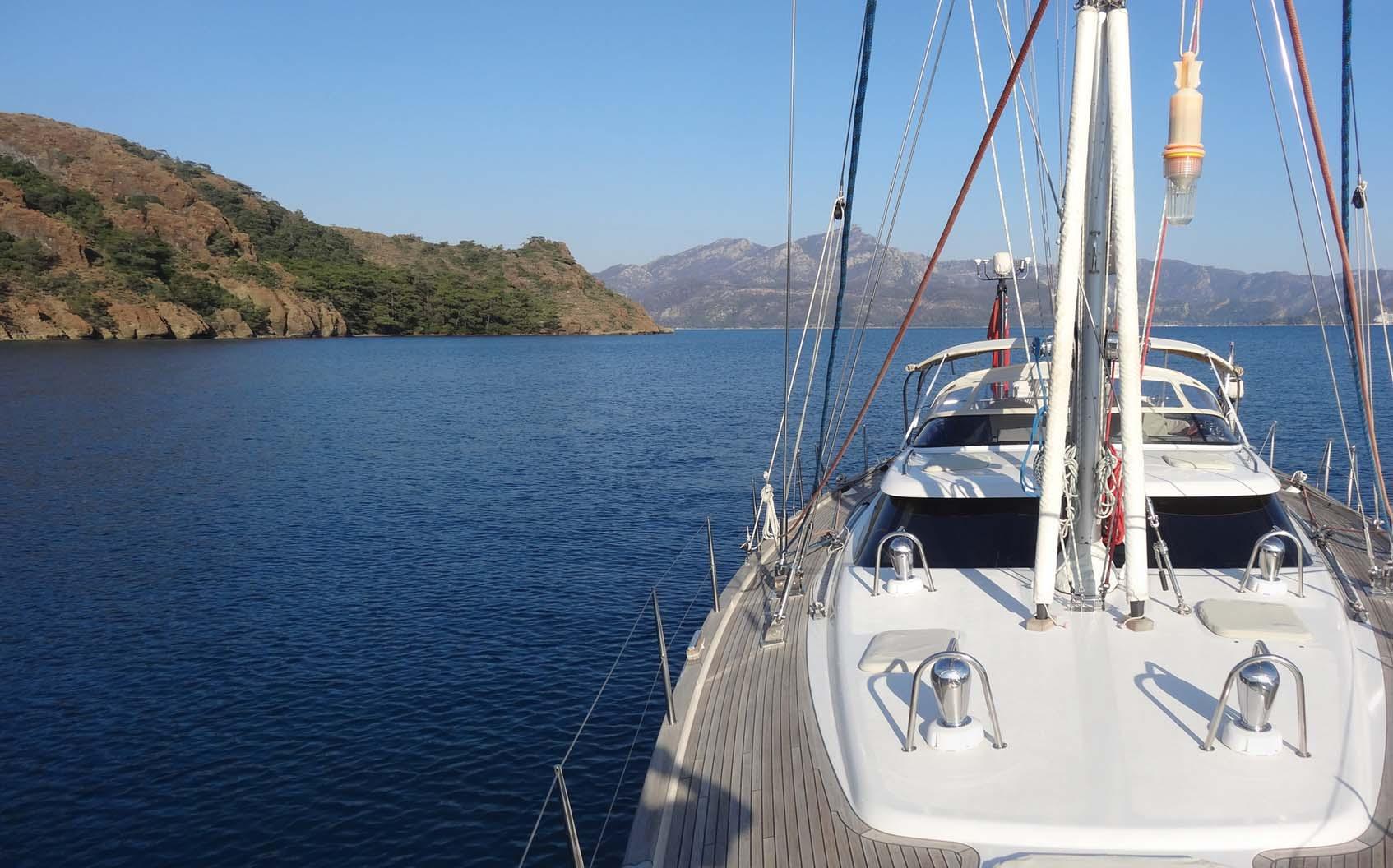 Inbükü anchorage near the root of the Datça peninsula
Inbükü anchorage near the root of the Datça peninsula
later increased to 25 knots. On reefing the main the outhaul parted, leaving us the last 20 miles of the 53-mile passage with just the headsails. This was an unpleasant experience and in future we will make a point of replacing the outhaul every four years. There is no doubt that it is the most vulnerable aspect of an in-mast furling mainsail, which is otherwise an excellent option for shorthanded crew.

This put paid to any thoughts of staying over in Astypalea and left us with no alternative but to make for Paros to get a replacement. Fortunately we had long since rigged a stand-by outhaul to meet such an eventuality so, for the first time, were able to test it over the 55 miles to Ios on a reach and subsequent SR run under full sail in a northnortheasterly 4–5. (You may only have need for a spare outhaul once, but when that
The replacement outhaul made off on a mast winch (hoisted at anchor in Ios for photos)
 The replacement outhaul in place, with the parted one neatly coiled
The replacement outhaul in place, with the parted one neatly coiled
time comes you will consider it a godsend.) On reaching Ormos Tris Klises anchorage on the south coast of Ios we were sorry that we hadn’t made directly for Paros, even more so when, next day, we had to motor much of the 27 miles due to lack of wind. On a brighter note, we had no difficulty buying a Germanmade replacement outhaul.
After four days R&R in one of our favourite Greek islands we left for the 30mile passage to Ormos Kapari anchorage on Syros under full sail, followed next day by a 32-mile sail to Apokrisi on Kythnos. We had always found this to be a peaceful anchorage and were therefore aghast that evening to be inundated by a fleet of charter boats, most of whose crews appeared to have little or no sailing experience and care even less. Rather as in Croatia, the yacht charter industry in Greece has been encouraged to the point where sailing on the western shore of the Aegean is not what it used to be. Fortunately the charter companies, in recognition, I suspect, of many of their customers’ inexperience, do seem to restrict them to the Peloponnese coast and its immediate offlying islands. We left at 0630 for Ormos Kapari, near Ermioni on the Argolid peninsula, a sail of 55 miles under reefed mainsail and jib in a fresh north-northwesterly 4–6. This anchorage is quite remote due to being a mile south of the town and provided a great location to
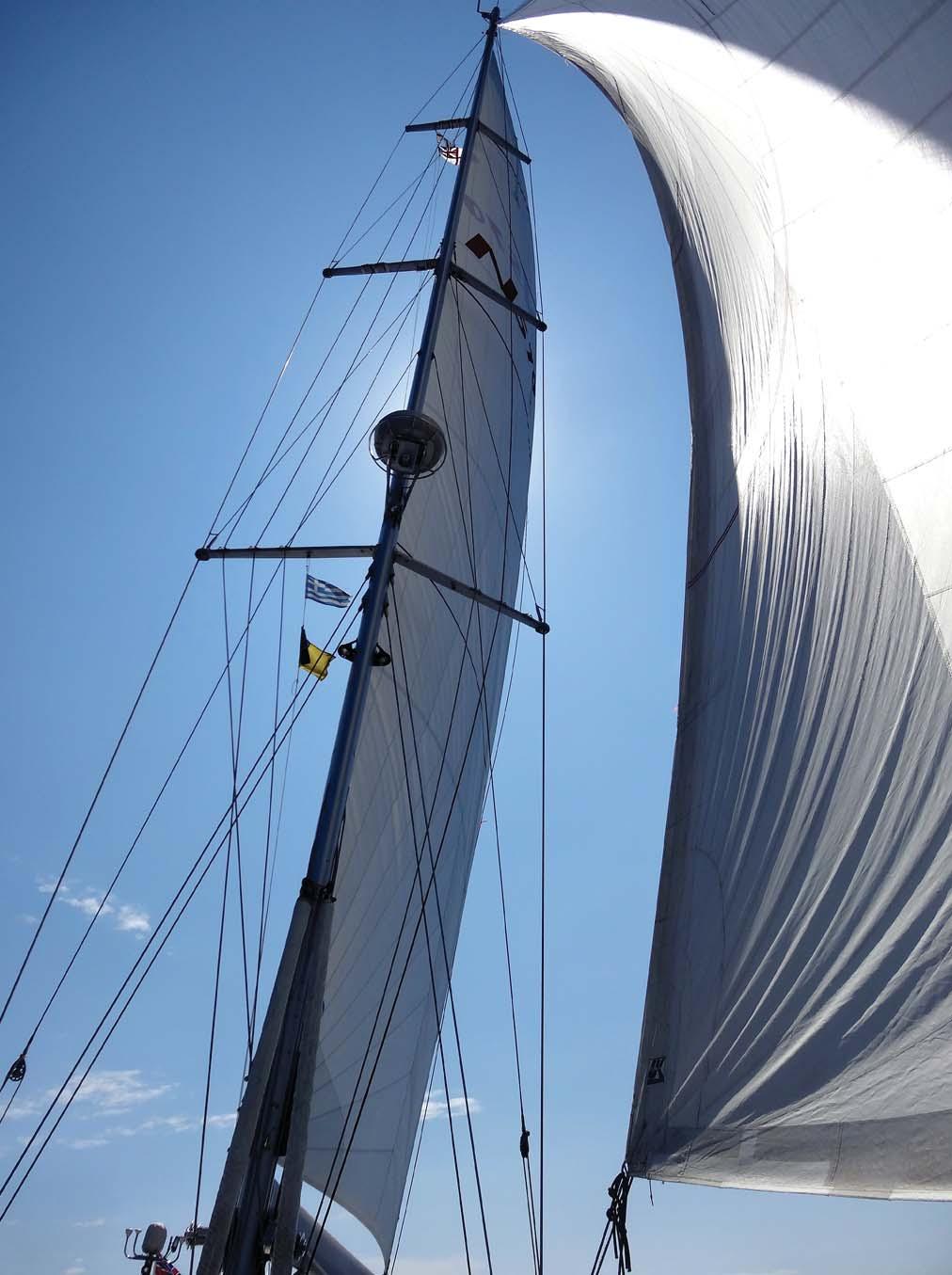
 Twin jibs reaching in tandem
Twin jibs reaching in tandem
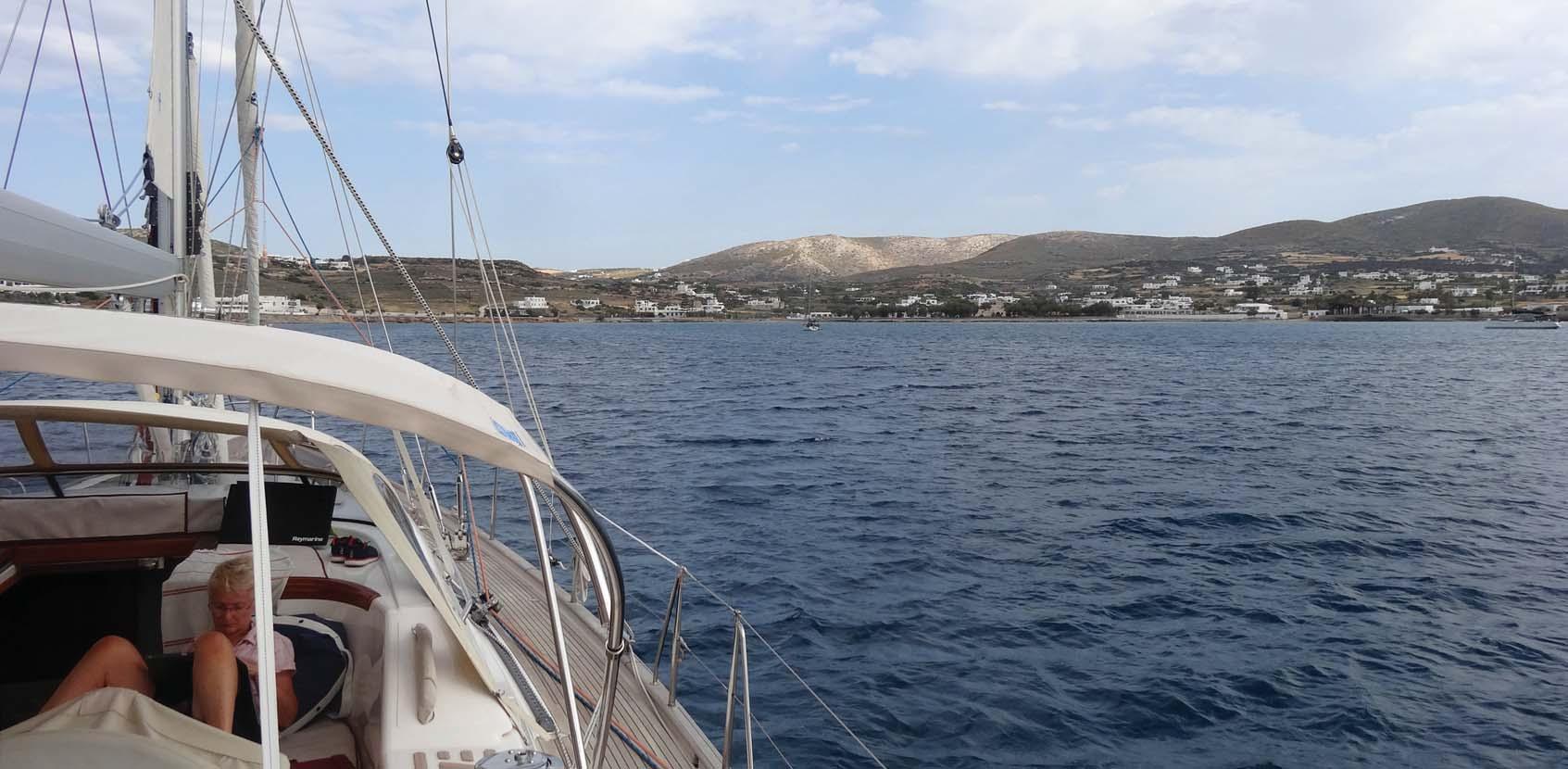
meet up with Ian, Judy and their Amel 50 Pen Azen, in which they circumnavigated South America*. So much did they enjoy this that, on completion, they sailed back down to Cape Horn!
After three days with Ian and Judy, during which we enjoyed trips to Ermioni for shopping, on 16th June we weighed anchor for Poros, close-hauled under reefed mainsail and jib, along the south coast of the Argolid peninsula before rounding up for the southern entrance to Poros. One has to be particularly vigilant here due to the outbound traffic, the charter boats anchored stern-to off the Poros harbour quay and the ferry traffic from the nearby town of Galatas. Once in though, there is a plethora of anchorages where a yacht can safely be left whilst visiting the vibrant town with its coffee shops, bars, restaurants and wide range of stores.
We left two days later to sail the 30 miles round to Porto Cheli – another popular anchorage in an enclosed bay with good shoreside facilities – to meet up with Pen Azen again. After a couple of days, however, we bade our farewells to Ian and Judy and began our return to Turkey. We were confronted with a brisk northwesterly force 4–6 for the 65 miles to Ormos Livadiou, Serifos – a memorable day’s sailing with a reach to within 20 miles of the island, leading onto an SR run and then close-hauled around its south coast to anchor in this well-sheltered bay with its shoreside town. Following a day ashore we continued over the 34 miles back to Paros, this time close-hauled all the way. There we, together with a whole fleet of yachts, sought shelter from forecast gale-force winds of up to 39 knots. On the back of this, and so as not to lose the aftermath of the wind, we left in a northwesterly force 4–6 for Ormos Grikoi, Patmos, 72 miles away. This was another excellent sail until we approached the coast of Patmos to find ourselves weaving through a plethora of merchant ships seemingly making for the Bosphorus. All very reminiscent of my years, long since passed, crossing the English Channel!
The following morning, 26th June, we were abruptly woken by the Greek Navy who required our anchorage, despite there barely being space for us, let alone a large naval vessel. Very begrudgingly, we weighed anchor to sail the 34 miles to Samos in a gentle northwesterly 3–4 and calm seas, where we took a berth at the marina. On previous
* See Flying Fish 2004/1 and 2005/1.
visits we have anchored in the outer harbour, but this has now been forbidden, apparently to stop Turkish sailors anchoring overnight without checking in. First the pain and then the gain, however, as Samos is a delightful town with very welcoming restaurants and shops which appreciate yachties’ business and greet us with open arms.
After three days’ relaxation enjoying their hospitality, we left on 30th June to sail the 32 miles to Didim, where we checked back into Turkey. It was a pleasant day’s run under SR in a north-northwesterly 4 and following seas –perfect! Once checked in we continued 5 miles further east into the tranquillity and bliss of Kumerik Bükü for two days, before sailing south to Akyarlar’s north bay on the Bodrum peninsula – another 28 miles under SR with a northerly 3–4 increasing 5 around the peninsula. Next day we left for a reach in northwesterly 5 to round Kos island, to be met by a typical wind shadow down to Knidos peninsula under motor, before finally running under SR in 20 knots to our Datça anchorage on completion of the 40-mile passage.
The following morning, 5th July, we set off for the Bozburun peninsula on a reach, later bearing away on an SR run up to Marmaris to anchor in the tranquil bay of Kumlubük – a 41-mile passage and another memorable day’s sail. Next morning we set off on an SR run for the 43 miles to Round Bay, Göcek, concluding with a reach for the final 20 miles. Next day, in a northerly 4 and following seas, we covered the 42 miles to Kaş Marina, again under SR. Kaş is one of our favoured ports of call where, in different circumstances, we might well have laid up SotO during the winter seasons. It offers wonderful facilities both at the marina and in the very attractive town with its historical Greek architecture.

After two days R&R we slipped our lines for the 27-mile passage to Cold Water Bay, Kekova under SR, past Kastellorizo and on into Finike Bay for overnight anchorage. This left the 35-mile passage across Finike Bay for the next day, followed by a reach to Antalya Bay and a 10-mile run under SR up to Cavas Bay to prepare ourselves for the final 20-mile run back to Kemer the following morning. This was the start of a fortnight’s hard labour laying SotO up for the winter following completion of our very successful 1260-mile season.



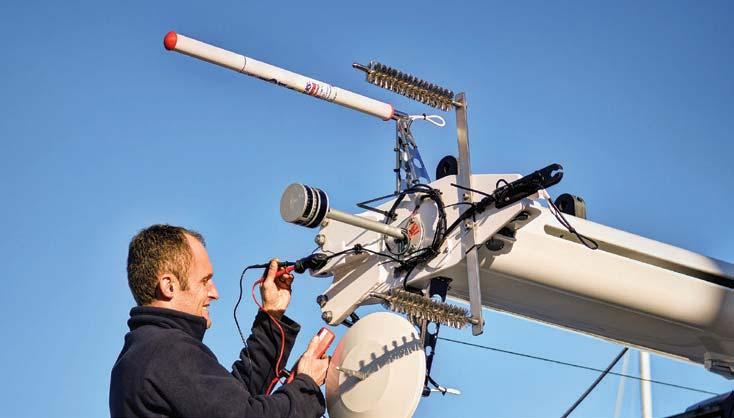
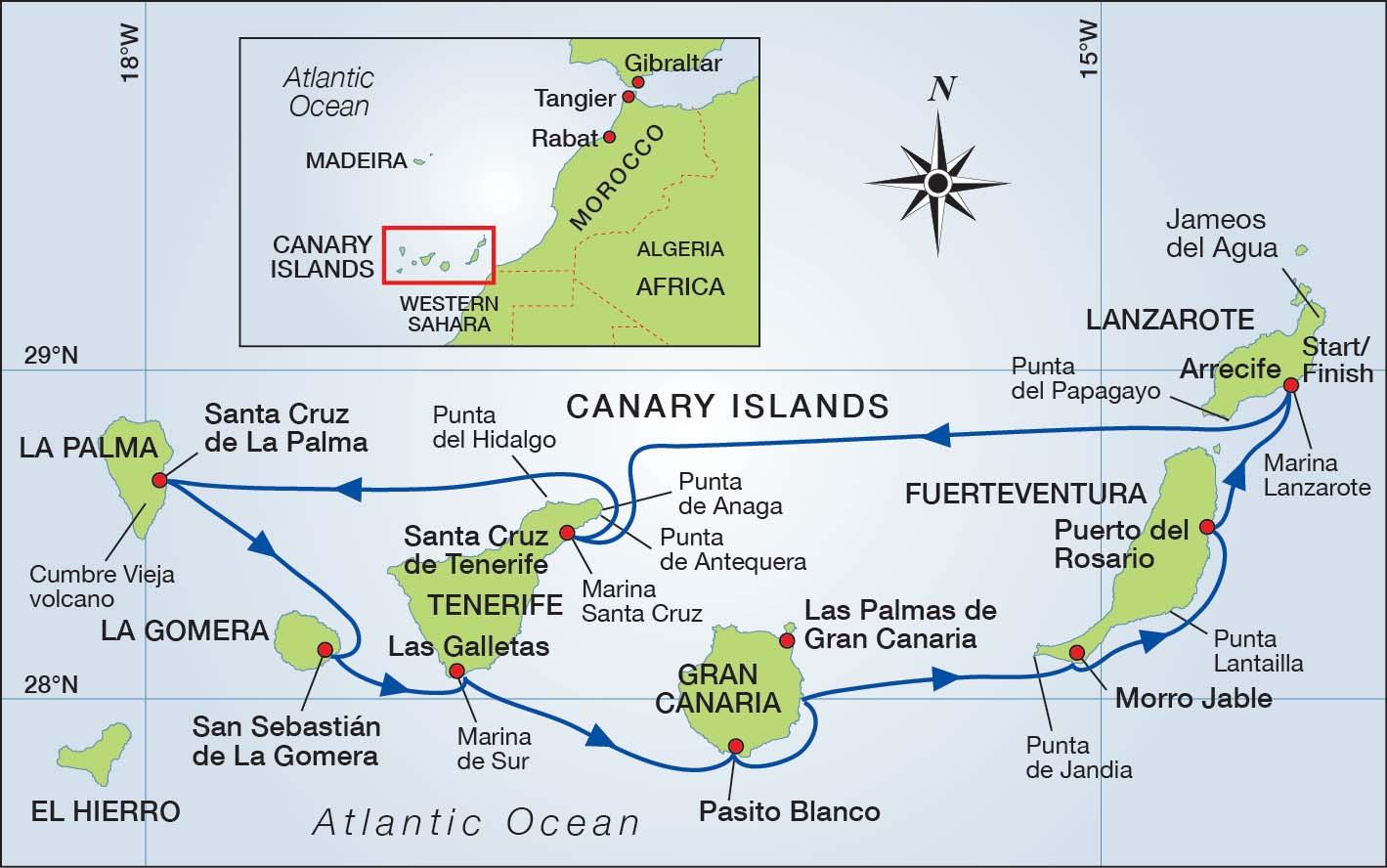
(Neil Hegarty and Anne Kenny met during the 2009 RCC/ICC Rally in the Azores, both having lost their spouses the previous year. Since then they have sailed Neil’s Dufour 34 Shelduck and Anne’s Chance 37 Tam O’Shanter. They cruised Shelduck in France, Spain and Portugal and in 2013–2016 made an Atlantic Circuit – see Flying Fish 2016/1 and 2017/2. Tam O’Shanter has cruised Scandinavia, the Baltic and the Atlantic from St Petersburg in the east to the Azores in the west – see Flying Fish 2018/1 and 2020/1.
Mary and Len Curtin are old friends who had based their Moody 376 Chain in Greece since 2001 until last year, when they brought her home to the Royal Cork YC at Crosshaven.)
Anne and I arrived at Marina Lanzarote on Thursday 23rd June 2022. I think, maybe because of our age, Lava Charter were surprised that we had booked off-season as in summer the winds can be quite fresh. We had chartered a Dufour 382 Grand Large called Tortuga expecting it to be somewhat like my Dufour 34 Shelduck, which it was, even though 14 years younger. It had been four years since our last passage in the Atlantic, the OCC pursuit event from Galicia to the Azores. I was a little apprehensive as we boarded what seemed to me to be a large, complicated yacht with two wheels and great beam, but I soon settled in – as if I was about to get back on my bicycle – to enjoy some of the advantages of off-season sailing in the Canary Islands, including easy access to marina berths. In a chartered yacht I was happy not to have to spend nights at anchor in strong gusty winds.
Saturday 25th: Mary and Len Curtin, who had been invited to join the cruise, arrived at 1100 after an early start from Cork. We immediately went to a French-run café at the marina to enjoy an excellent breakfast. Anne and Mary then headed off to provision Tortuga while Len and I were shown her workings by Lava’s skipper, Jan, who could also be hired to sail aboard if you wished.
Sunday 26th: My plan was to sail the 250 miles to Santa Cruz on La Palma, having two nights at sea but avoiding the acceleration zones, the idea being to sail to the furthest point of the cruise and then work our way back. I may have been somewhat over-ambitious. Tortuga departed the marina at 0600, motored in the lee of Lanzarote and hoisted sail near Punta del Papagayo at the southwestern tip of the island. I took in one reef, though as it turned out we might have been more comfortable with two. It was wonderful reaching in 15–20 knots of wind, until 1700 when the wind increased to 25 knots so we took off the headsail and things quietened down. At 1900, while sitting alone in the cockpit in sunshine too far from the sprayhood, I took the first soaking. Tortuga is a fast yacht, and it was about then that I began to wonder if we would arrive off Santa Cruz de La Palma in darkness.

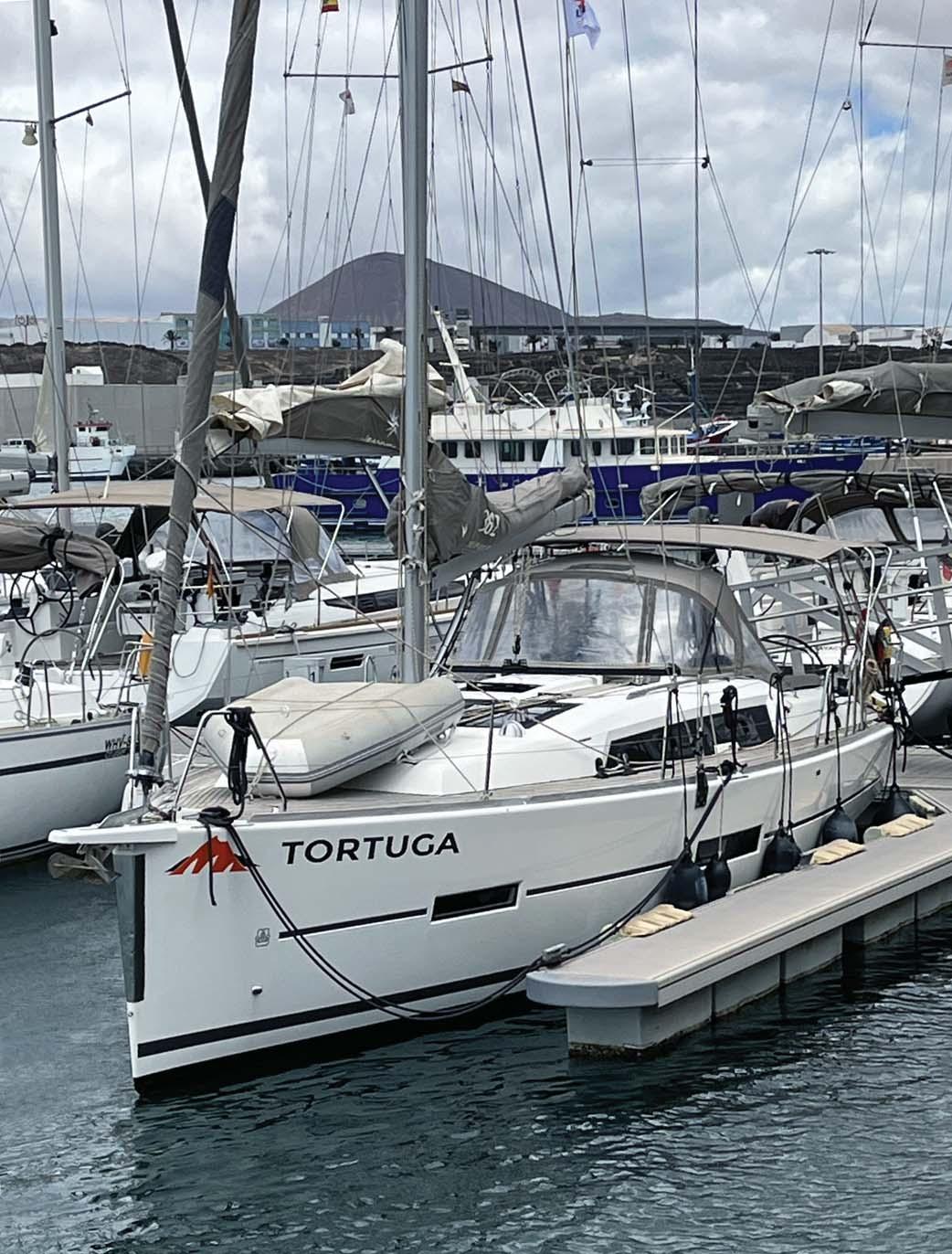
Monday 27th: Mary and Len took the midnight to 0400 watch. Soon after that Anne and I came on watch and we noticed a strong white light to the north of Punta de Anaga on the northern tip of Tenerife. It turned out to be a rig doing scientific research, and as those aboard thought we were sailing too close they called us on VHF to stay clear. I calculated then that at the speed Tortuga was doing towards La Palma, we would probably arrive in darkness. For someone with old knees the chartplotter was awkwardly positioned, low down on the end of the cockpit table. I was therefore depending on Navionics charts on my iPhone for entering harbours in darkness and was afraid of running out of charge. I had not yet realised that there was a phone charger near the radio that allowed phone charging at sea, and by then was also missing the comfort of a chart table.
At 0700 I called Len and Mary up to help us tack and we agreed we would head for Santa Cruz de Tenerife. (It is very confusing having two cities with the same name on nearby islands.) All hands made a great job of reducing sail in the dawn light, with Len being the one who went to the mast in the lumpy sea and force 5. Punta de Anaga and Punta de Antequera looked very dramatic as we sailed south towards Santa Cruz. We motored into Dársena Pesquera and, as there was no life to be seen, motored on and took a berth in Marina Santa Cruz at 1230. Anne and Mary went shopping and then we celebrated Mary’s birthday aboard.
Tuesday 28th: A day of rest and sightseeing, and in the evening my birthday was also celebrated aboard.

Anne enjoying tea in the commodious saloon
 Len, Mary and Anne
Len, Mary and Anne
Wednesday 29th: I calculated that if we did not leave Santa Cruz de Tenerife until midday we should arrive at Santa Cruz de La Palma in early light on the 30th. We motored close to the shore to try to reduce the effect of the acceleration zone but did have one gust of 38 knots. We had 3½ hours of motoring before we could bear off, with three reefs in the main, for Santa Cruz de La Palma. Rounding Punta de Anaga again was a bit like rounding the Old Head of Kinsale in a strong wind against tide. There was a shock for us all at 1610 when, well off Punta Hidalgo, we sailed over a lobster pot line and were anchored to it by the rudder for what seemed ages but in fact was less than a minute. The night was inky black and cloudy with no stars to be seen. The lights of roads and buildings on Tenerife surprised us in their extent and, as you reach the halfway stage of what, for Tortuga, was a 17-hour reach, the lights of Tenerife and La Palma can both be seen.
Thursday 30th: As morning dawned, in 15 knots of wind, we dropped the sails and entered harbour, Len having received permission from the authorities. The marina is entered through a gate at its northern end and I topped Tortuga up with diesel before going to a berth.
Anne is a great enthusiast of erupting volcanoes as a way of cooling our planet, and a primary reason that we had come to La Palma was so that she could visit the Cumbre Vieja volcano which had erupted in September 2021. After a light lunch aboard, Anne, Mary and Len took a taxi to the volcano while I prepared our dinner and for the early morning departure to La Gomera.
Len reported that they had a comfortable taxi and an informative driver who took them up very winding roads and tunnels through a national park, with Canary pines everywhere. They travelled down the west side of the island to the viewing point for the volcano, which is still smoking, and saw the devastation and the hardening lava running into the sea, where it forms a new island. They were told that the lava was 60m wide and 20m deep. On the
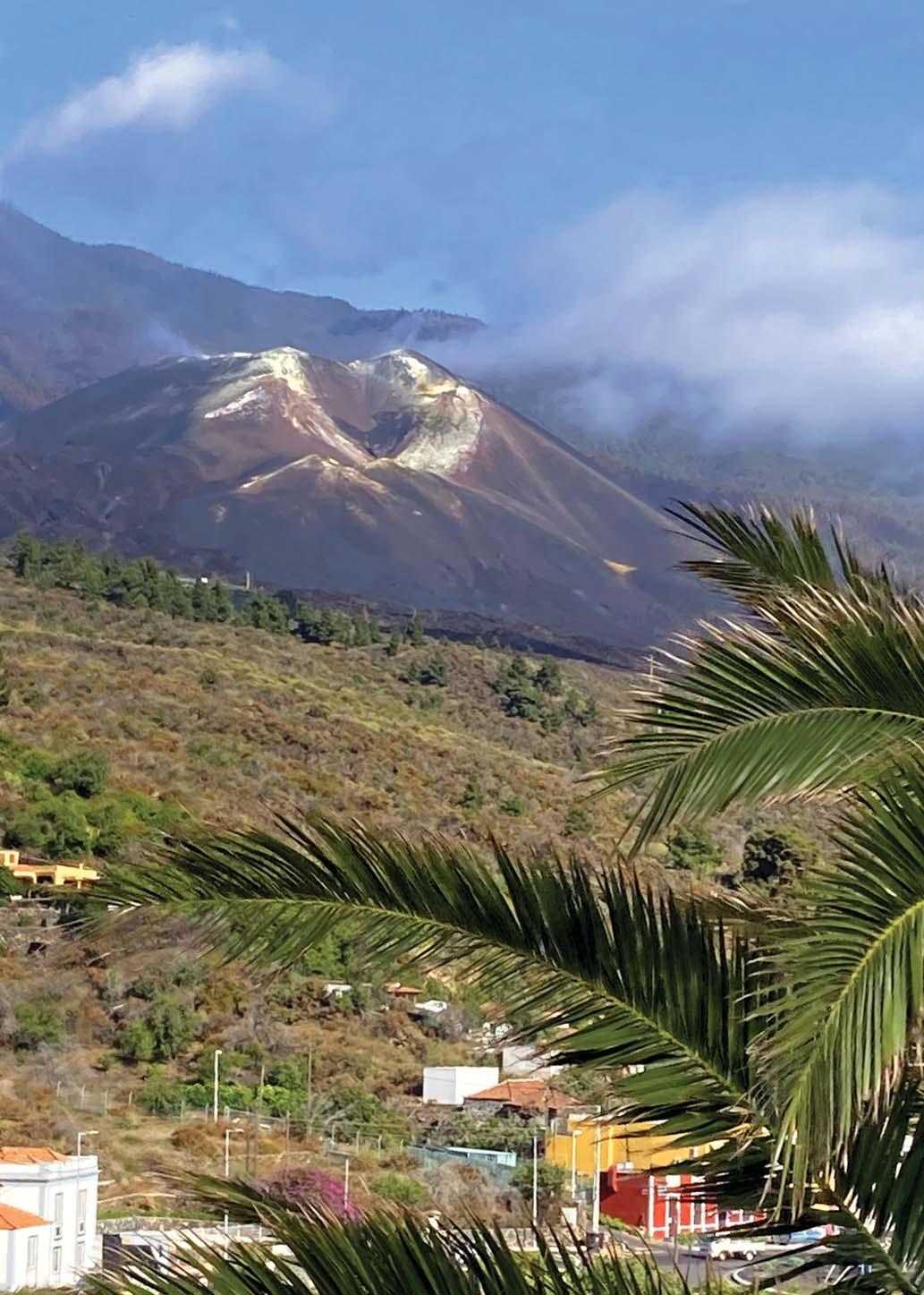 La Palma’s Cumbre Vieja volcano, which had erupted less than a year previously. Photo Anne Kenny
La Palma’s Cumbre Vieja volcano, which had erupted less than a year previously. Photo Anne Kenny
return, for variation, the guide/driver brought them back to the marina via the more traditional route. It was all very interesting and, as well as viewing the volcano, gave them a good idea of the flora and fauna of the island. To top it off, they discovered that their driver had a brother-in-law from Cork who taught English at the local college.
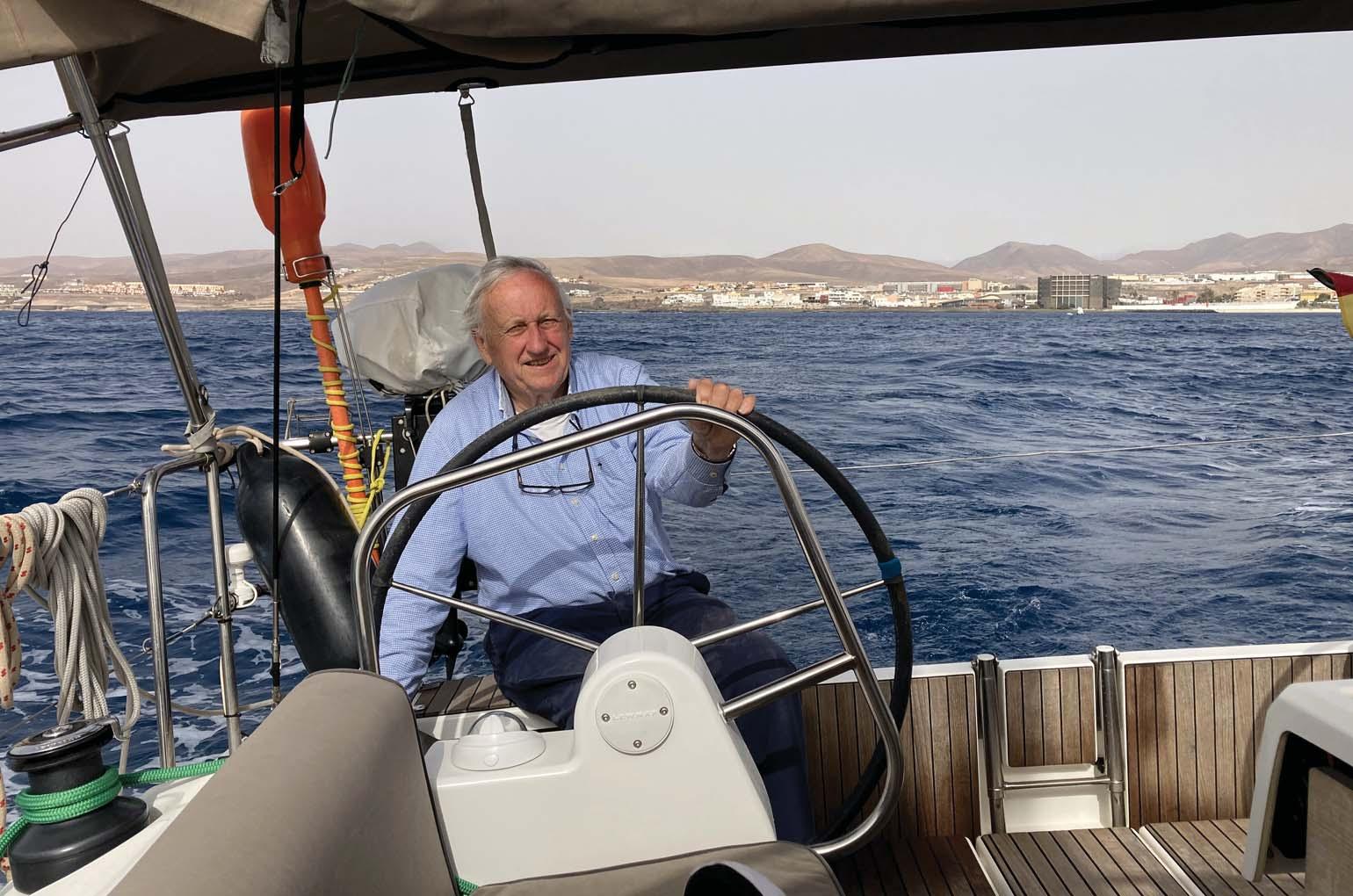
Friday 1st July: We were out of our bunks at 0700 ready for the 60-mile passage to La Gomera. When checking the chartplotter before leaving the marina berth I noticed that there was a ship approaching the harbour entrance. On calling the harbour authorities Len was told that Tortuga was not to leave for half an hour but then the pilot, who was still ashore and about to go out to bring the ship in, called us and said we could leave immediately. I was happy about this because the wind was getting up and making it more difficult to get out of our berth. Moored outside the marina gate was a large car ferry, and the view from our berth suggested there was insufficient space for Tortuga to leave, but of course there was. At the harbour entrance I waited until I could see the incoming ship approaching before setting the main. As we bore off for La Gomera the wind was up to 28 knots, but after an hour it settled at 20 knots with 1∙5m waves. At about 22 miles out a pod of very black dolphins passed astern, and at 1745 Tortuga entered the harbour of San Sebastián de La Gomera, where the marina issued us with gate cards.
Saturday 2nd: After breakfast I went up to the office to check in, as requested on arrival. They have a wonderful system here, with everything done digitally so there are no forms to fill in. Meanwhile Anne and Mary had a poor experience when the washing machine in the laundry failed and locked our clothes inside, but after a while they were recovered by the man who had checked me in so efficiently. Later, after some shopping in the adjacent Spar shop, we had dinner ashore. Len was the only one able to finish the huge helpings.
Neil at the wheelSunday 3rd: At 0900 Len called the harbour authorities for permission to leave and shortly afterwards a marina official arrived to collect our gate cards, return our deposit and cast us off. This is something I have never experienced anywhere else and is a great way of dealing with gate cards. We set the main just inside the harbour and, as we sailed away from the island, were in 33 knots of wind until we reached the shelter of Tenerife when the wind dropped to 10 knots and the sun was hot. For a moment Mary thought she was back in Greece again! As we entered the Marina del Sur at Las Galletas there was help to reverse into the berth and, as it was Sunday and the office was closed, no forms to fill out, just payment in cash.
Monday 4th: I was out of the bunk at 0700 to return the gate card and recover our deposit, but there was nobody about so we left at 0745. The forecast was for 20 knots of wind from the prevailing northeast, but as soon as we cleared the lee of Tenerife it blew 30–35 knots for six hours with lots of spray about. Tortuga lacks a moulded ridge where the lower edge of her non-rigid sprayhood attaches, so much of the water coming on deck made its way into the cockpit. She behaved impeccably, however, never broaching or giving us even a hint of anxiety. I sailed for the middle of Gran Canaria until we were in the shelter of the island and out of the gale, then turned south along the coast to enter Pasito Blanco at 1800. Having such a wonderful crew in gale force winds for over six hours I thought it best to treat them to dinner at the yacht club, which everyone enjoyed. After the gale and a good dinner, all were looking forward to a rest day and slept well.
Tuesday 5th: I checked in and Len went to get bottled water, while Anne and Mary went round to the yacht club for a swim only to be told that the facilities, other than dining, were for members only. We spent the afternoon relaxing aboard and had an early dinner as I planned an 0400 start next day for the long passage to Fuerteventura.
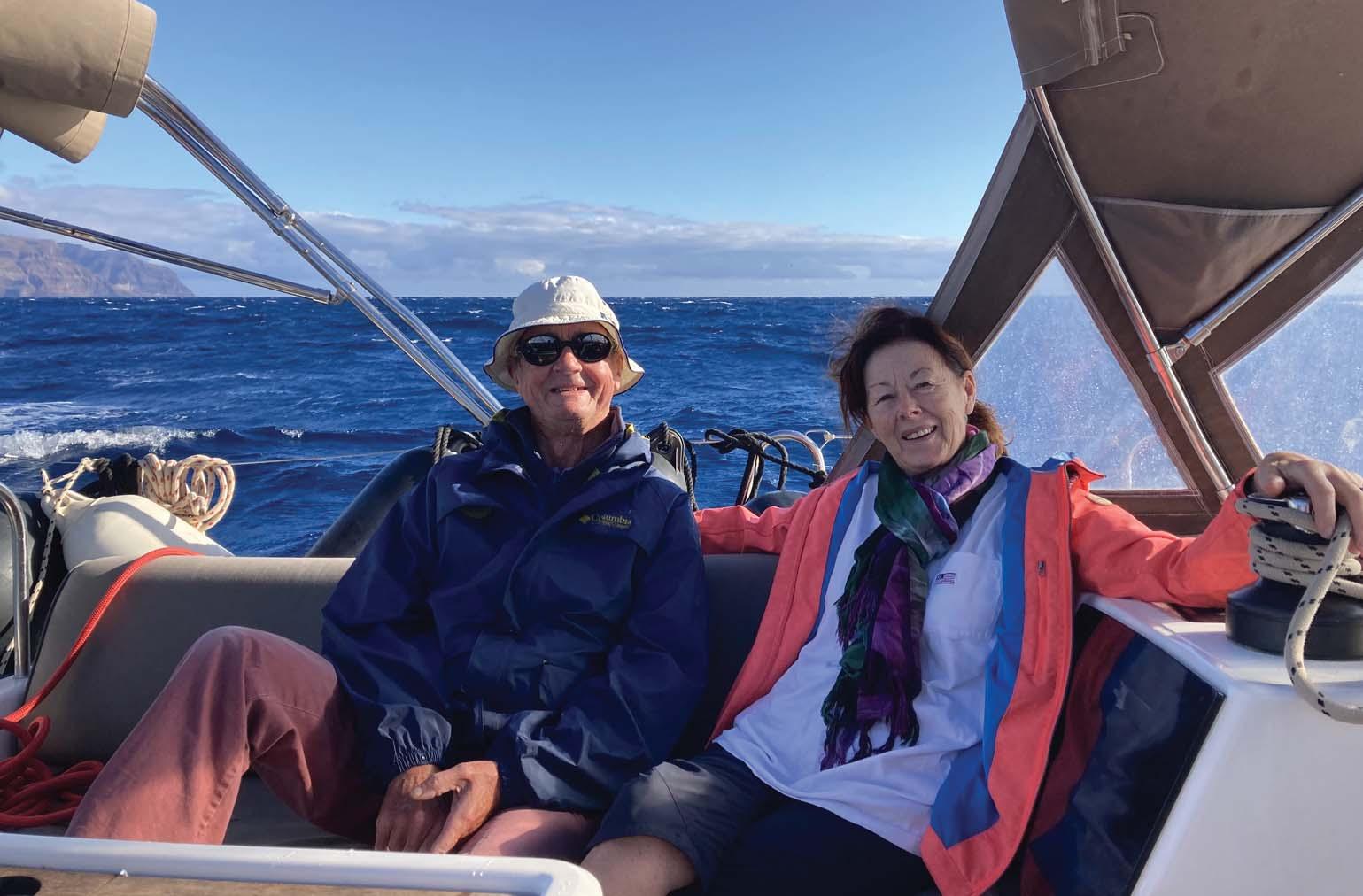
Wednesday 6th: The alarm went off at 0330, giving time for a cup of tea before departure. My passage plan for this most difficult of our passages was to motor close to the coast of Gran Canaria for four hours and then bear away for the 50-mile crossing to Morro Jable, the nearest marina on Fuerteventura. As we turned north I found that we were motoring into galeforce winds, which we did for two hours before bearing away. As we close-reached between the islands the wind settled at 37–39 knots with 2m waves, but Tortuga behaved perfectly. At midday the wind eased to 28 knots, until we entered what we thought might be the shelter of Fuerteventura at Punta de Jandia when it increased to 42 knots. The Atlantic Islands cruising guide says that sometimes it blows up to 50 knots when approaching Morro Jable, but by the time we were inside the harbour and berthed in the marina it was almost windless.
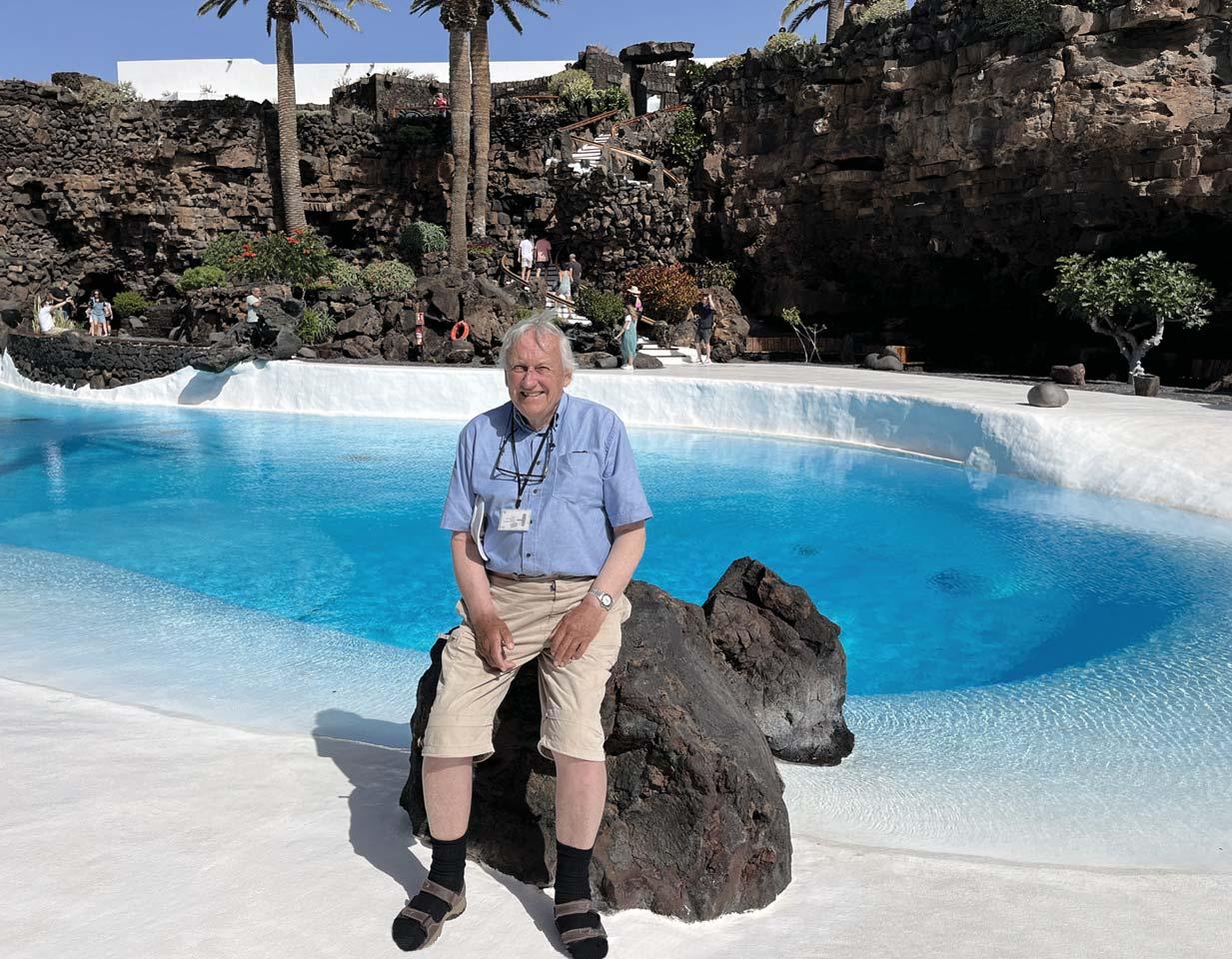
Thursday 7th: Leaving Morro Jable next morning we were faced with an eastnortheast wind on the nose and a lumpy sea, so motored the 18 miles to Punta
 Neil at César Manrique’s famous Jameos del Agua in Lanzarote
Anne leans against a sculpture in Puerto del Rosario, Fuerteventura
Neil at César Manrique’s famous Jameos del Agua in Lanzarote
Anne leans against a sculpture in Puerto del Rosario, Fuerteventura
Lantailla. Then, as the wind went back to its usual northeast, we motor-sailed the final 34 miles to Puerto del Rosario. The marina pontoons looked very new and there were plenty of empty berths. Soon we saw a customs officer walking down to us, but he gave us 30 minutes to tidy up before I made the 20-minute walk to his office with passports and the boat’s papers. It turned out that he was doubling as marina manager and I had a great chat with him even though he didn’t speak much English and I don’t speak Spanish. He was unable to take cash so I agreed to return in the morning to settle the account.
Friday 8th: Anne joined me for a leisurely walk to the office. Rosario, the capital of Fuerteventura, is a very beautiful city and we had plenty of time to explore, as the passage back to Marina Lanzarote was just 33 miles. We had moored on a hammerhead so departure was quick, and the passage back to base uneventful. We berthed at the fuel dock at 1600 and I was happy when Lava Charter’s skipper, Jan, came aboard and put Tortuga back in her berth. A very good service.
The chartering experience was positive with one minor exception. Shortly after leaving Marina Lanzarote I noticed that the log and depth-sounder were not functioning, but this was easily cured when Len and I lifted the transducer and cleaned out the little crustaceans that had made their home there. Other than that the service by Lava Charter was very good, especially from a Polish lady, Agatha, who contacted me on WhatsApp just before our arrival and was always available. She later told me that the planned solution to our problem was that Lava would remove and plug transducers after the high winter season so crustaceans could not move in when the yacht was not being sailed.
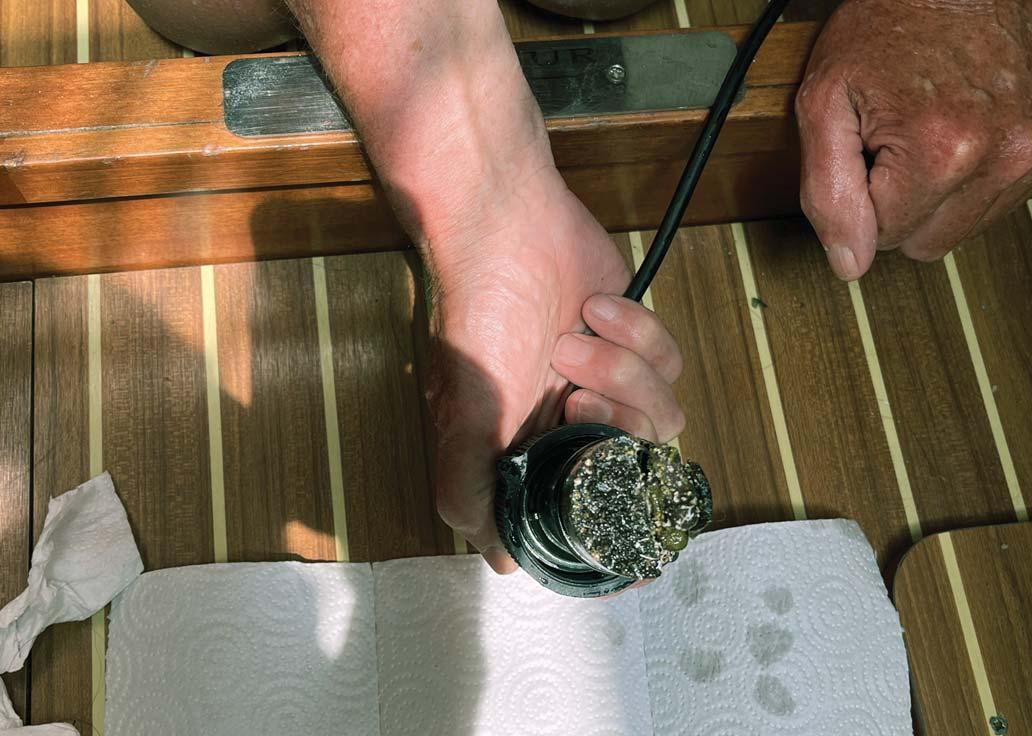
Saturday 9th: Mary and Len left for the airport and Cork before breakfast, and so ended an exhilarating two-week cruise. Measured with the help of a paper chart while without a log, we sailed some 610 miles and took in six of the seven major islands. We missed out on El Hierro as we just did not have time for it on this trip.
If you enjoy sailing in plenty of wind, which I do, I strongly recommend summer off-season cruising in the Canary Islands.



CONTENT: anything which is likely to be of interest to other members – cruise and liveaboard accounts (including humour), technical articles, letters and recipes. Most articles need a short intro – who you are, who you were sailing with, the type and length of boat, etc – and all need a title. Please tell me if you’re sending the same piece elsewhere, inside or outside the OCC. Finally, please double check that all place, personal and boat names are spelt correctly, including in the captions.
LENGTH: no more than 3500 words and preferably less than 3000, except in very special cases – and normally only one article per member per issue.
FORMAT: MS Word (any version) or PDF, with or without embedded photos (though see below), sent by e-mail to flying.fish@oceancruisingclub.org.
ILLUSTRATIONS: up to 20 captioned photos, professional-standard drawings or cartoons. PLEASE don’t send more than this – while you have a single piece to illustrate, I receive up to 20 articles for each issue, so may have 400+ images to juggle! Nearly all digital formats are fine, but please contact me before sending prints. Photos should measure at least 16cm wide at 300 dpi or 67cm wide at 72 dpi (the default setting for most cameras). If this means nothing to you, please send your photos
EXACTLY as they were downloaded from the camera or phone – merely opening and saving under another name degrades the quality. If sending photos by e-mail, manually attach no more than three per e-mail (do NOT use the ‘attach to e-mail’ facility available in many image programs, which compresses the file data), rounding off with a separate message telling me what you’ve sent. Alternatively use WeTransfer [www.wetransfer.com], a great little free (!) internet program.
Please include a list of captions, including credits, in the order the photos relate to the text, and place the numbers (in red) in the text where applicable. Captions along the lines of: ‘01 (DCM 3285) Preparing the boat for sea; 02 (DCM 3321) Leaving Horta, John at the helm; 03 (DSP 00045) The whale! Photo Sue Black;’ are ideal.
CHARTLETS & POSITIONS : please send a rough chartlet if relevant, for professional re-drawing. If your article includes cruising information useful to others, please include a separate list of latitudes and longitudes.
COVER PHOTOS: I’m always on the lookout for eye-catching, upright photos of high resolution and quality, with fairly plain areas top and bottom to take the logo and wording.
COPYRIGHT: please ensure you either own the copyright of photos or have the photographer’s permission for them to be reproduced on the OCC website as well as in Flying Fish. A credit can be included, but Flying Fish does not pay reproduction fees.
DEADLINES: 1st FEBRUARY for June publication and 1st OCTOBER for December publication, though an issue may be closed earlier if it becomes full. If you can’t meet the deadline, do get in touch as I can often give an extension.
For more information, either e-mail me or refer to the GUIDELINES
CONTRIBUTORS to be found on the website. Thank you.
FOR Anne Hammick, Editor flying.fish@oceancruisingclub.org
buy online at h ps://members.oceancruisingclub.org/members/Shop (log in to access these pages)
Burgees and House Flags in various sizes
Caps, hats, es and brooches
Clothing, including polo shirts for men and women, fleeces, body warmers and more
Prices include postage and packing
Astrid and I have been Associate Members of the OCC since 2020, the year we quit work to start cruising without having to go home to work again. But 2020 was also the year the pandemic started. Because of this and for family reasons we had to change our cruising plans again and again, but in the end we managed to achieve some of them and in January 2023 it was time to cross the Atlantic to sail via the Caribbean, the USA and Canada into the Great Lakes.
Our yacht Pincoya is a Jutlandic 37 DS, an unknown Danish brand, built in 1995. We bought her in 2010 and since then have not only prepared her for long-distance cruising but have also sailed almost 25,000 miles with her. Since 2020 we have been thinking about what passage would be accepted as an OCC qualifying voyage. For the last two years we couldn’t find a suitable, and in particular a long enough, passage that also fitted our plans. But now it was time for the Atlantic crossing.
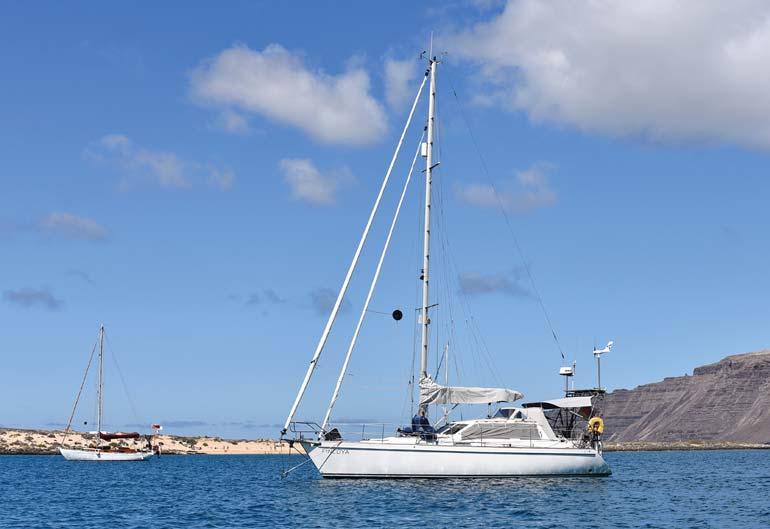
We celebrated Christmas and New Year on El Hierro in the Canaries, leaving for the Cape Verde islands on 2nd January. It was a quick and easy passage without any problems. At times it was a bit rough, but nothing we could not deal with. After a couple of quite windy days in the anchorage at Mindelo we decided to start on 14th January for Martinique. The first days were pretty normal, nothing special –two days with a bit more wind up to 25 knots, one day with light winds and the rest somewhere in between. But on the morning of the seventh day we faced the nightmare of every sailor.
Pincoya, our Jutlandic 37 DS
When we are sailing we check everything all the time. If we need to go to the bow we automatically check the shrouds, the foresails and all the other things in that area, and every morning and evening we check the rigging with the binoculars. On the morning of the seventh day we saw that the second shroud on the port side, the intermediate one, had started to strand. When something happens that definitely should not happen you feel like your heart has stopped beating ... but it was real.
The day had started with a good sailing wind of 15–18 knots, the Parasailor was up and we were making about 6∙5 knots in a 2∙5–3∙5m swell ... and now this. We had 765 miles behind us with 1320 miles to go – not really a good place to face such a problem. First we had to drop the Parasailor. We have a routine to do this, with Astrid in the cockpit to handle the sheets while I pull down the snuffer and try to tame the sail until we can get it down through the forward hatch. So far so good. But we were nervous.


While we were dropping the Parasailor the starboard sheets fell overboard and vanished under the hull. The nightmare was going on while the motor was running. I shouted from the bow and Astrid stopped the motor immediately and put it into reverse. (As long as Pincoya is moving forward the propeller does not like to fold, hence the reverse.) Luckily we managed to get the sheets back on board without getting them into the propeller. After the Parasailor was below and all the sheets on deck again we restarted the motor and took a deep breath.
 Astrid and Martin
Santo Antão, the westernmost island of Cape Verde
Astrid and Martin
Santo Antão, the westernmost island of Cape Verde
We could not make any mistakes. Our situation was bad enough without more mistakes from us, otherwise the situation would escalate and we would end up as a case of maritime distress.
Continuing to the Caribbean was the only thing we could do. We only had fuel for about 400 miles, the Cape Verdes were already 765 miles behind us, and sailing upwind with a broken shroud is impossible. We still had more than 1300 miles to go to the Caribbean, but it would be downwind.
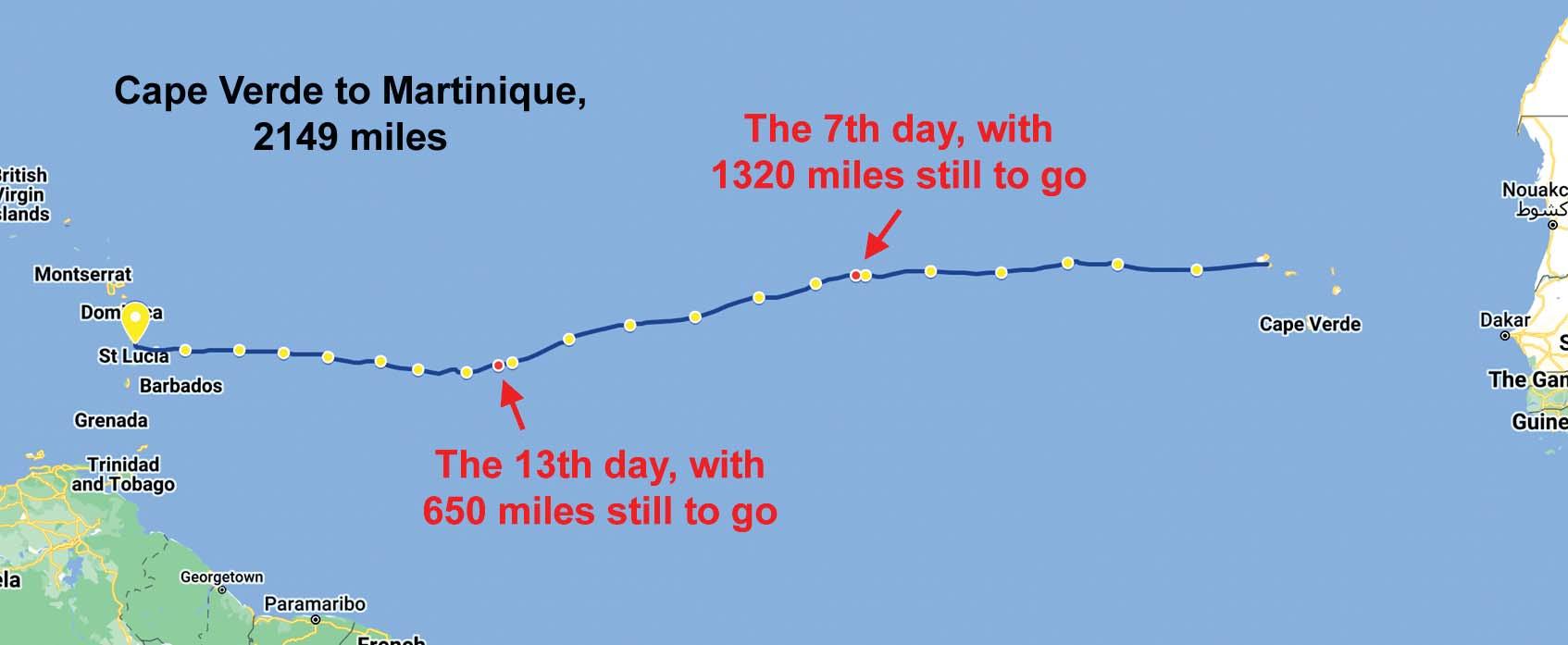
First we had to stabilise the rig. Luckily we have running backstays to support our cutter rig, but they are attached to the mast approximately 1m above where the intermediate shrouds are attached. The shrouds have ball terminals and come directly out of the root of the top spreader. That was fortunate as it meant we could attach our temporary support around the spreaders. At first I wanted to tie a loop around the mast above the spreaders, but this would have blocked the mast track. Then Astrid had the idea of tying the running backstay around the spreader root with a soft shackle* and leading it across in front of the mast to the other side. That kept the mast track free so we could set the main without any limitation. Because the shackle would have to last a long time we pulled a piece of hose over it.
* Similar to the final soft shackle variation demonstrated on YouTube at https://www.youtube.com/watch?v=hXG17Q__6aY

Now everything was ready. The only remaining task was to climb the mast to install our temporary support, but when I looked up the mast I felt anything but well. Pincoya was rolling heavily in the waves and the top of the mast was swinging 4–5m from side to side. With me as a top weight it would not decrease. I was not sure if I would make it, but there was no other choice but to try. If we did not manage to support the mast we would not have the smallest chance of reaching Martinique.
The good thing was that we already had a routine for climbing the mast, with Astrid in the cockpit to secure me while I climbed the mast steps. But we had never done it offshore and agreed afterwards that we don’t want to do it offshore again. We talked about everything we had to do in detail – what I had to do at the top of the mast and what she had to do in the cockpit. It was extremely important that nothing was left unclear, as the one down on deck is the life insurance for the one who has to climb.
Luckily we have mast steps, as without them it would have been impossible. Our mast steps are of the closed triangle type, which is more than important because you can grab them to have an immediate and secure hold with your hands and your foot cannot slip away once it is in the triangle. With steps that you have to unfold from the mast before you can hold onto them it would have been impossible, as the absolute worst thing would be to lose your grip, which would probably end with serious injury or death.
Because we have mast steps and we mistrust normal bosun’s chairs we have a full safety harness to secure the climber. It is safe and even comfortable to sit in, and is unconsciousproof. Normally we attach the halyard as secure rope at the back of the harness and did this now. If I climb the mast in harbour I often secure myself with a lifeline when I have reached the right position on the mast, but this is a bad idea offshore. Offshore the boat is rolling and if I lost hold and hit the mast so that I was badly injured or even unconscious Astrid would have no chance of lowering me down to the deck.
There is another reason. If I lost hold I would swing around completely free on a long pendulum, fixed by the halyard to the masthead. It would be quite possible to get swung in front of the mast, and I would certainly crash into the rigging. To avoid this at least
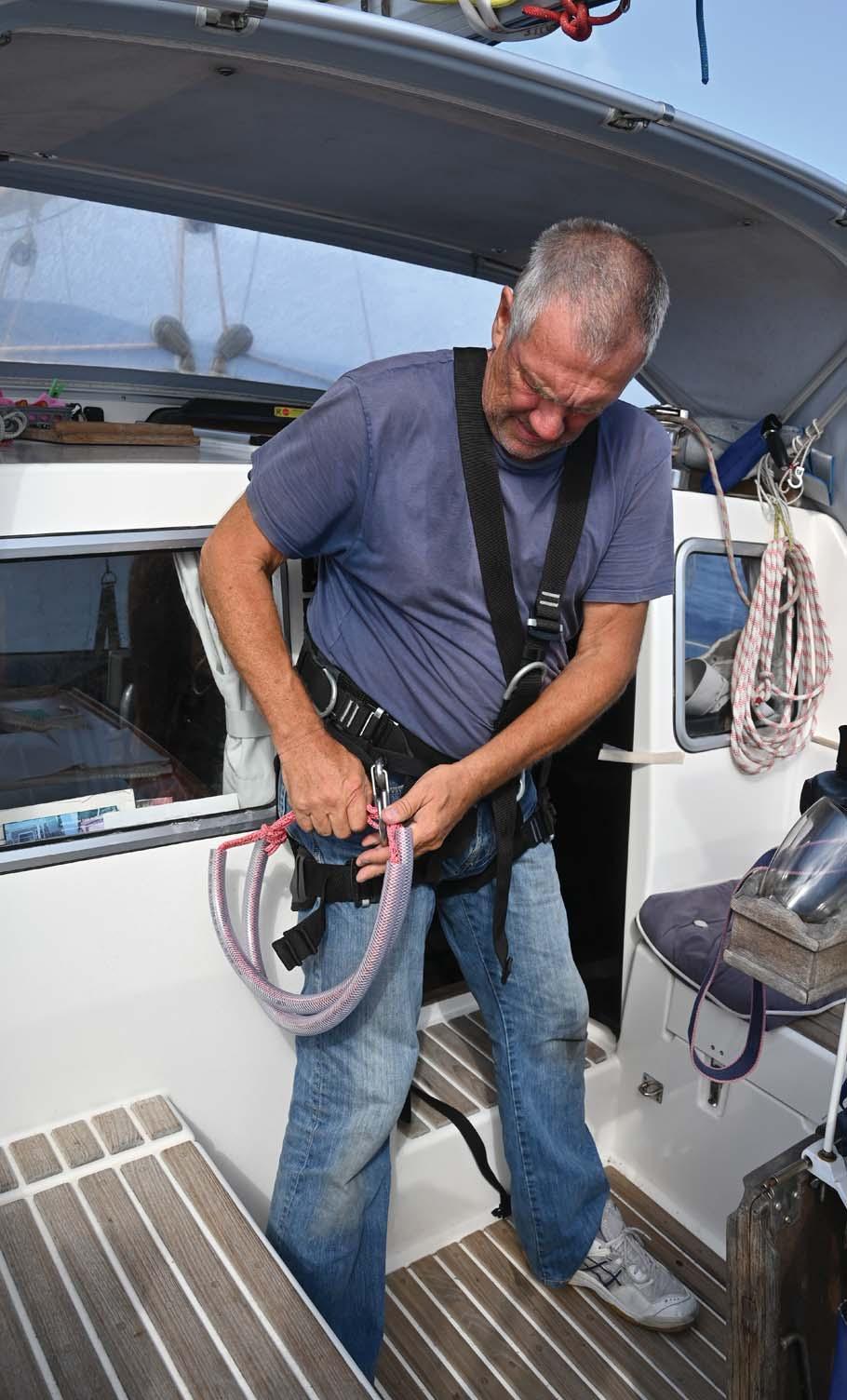
a bit, we fixed a second rope to the back of my harness. We led this via the middle cleat on Pincoya ’s windward side, which is a good deal aft of the mast, to the second winch in the cockpit. Normally Astrid only has to hold this rope loosely, but if I get in trouble and lose my grip she can immediately



Made it...
...but swaying from one side to the other...
In the end we got our running backstays fixed correctly


limit the radius in which I start to swing. It is not perfect, but what is perfect in such a situation? And if I am injured or unconscious she can pull me away from the rig and lower me down to the deck. To do this we had to tie away the lazy jacks, but we only had this idea for the second climb, not for the first.

With all this in mind we started our first offshore mast-climb. To be honest, I was afraid and Astrid was too. Once on the boom I waited until the rolling calmed down a bit, then two or three steps and Pincoya started to roll again. I am not weak and I have done some sport in my life, but it was hard not to lose my grip even there. Step by step I
So far so good...
climbed the mast and if the rolling started again I clung to the mast like a little monkey. In those moments Astrid winched me up a bit until the halyard was really tight, then I could sit in the harness and the only thing I had to do was not to lose hold. We repeated this again and again, using every quiet moment to get me higher up.
When I reached the top spreader I looked down, a big mistake. I saw myself far above and far outside Pincoya – I closed my eyes and was sure I would not survive. It was hard to calm down and start attaching our temporary mast support. It took quite a long time because I had only a couple of seconds before I had to cling to the mast like a monkey again. It is not easy to concentrate in a situation like that – the stress prevents your head from working properly. Finally it was done. Astrid looked up the mast from the deck and everything seemed to be okay, so little by little I climbed down. The only thought in my mind was: ‘It’s done, don’t make any mistakes now’. When I was back in Astrid’s arms I could not stop myself from crying. I have not often been afraid in my life, but this was simply too much.
As we tried to tighten our construction we noticed that I had twisted the running backstays at the lower spreaders, so I had to climb up that far again. As I wrote earlier, if you are clinging to the mast and being tossed around badly your head does not work properly. Then we realised that when I had attached the running backstays around the root of the top spreaders I had fixed them outside and not inside the shroud terminals, so the pressure was now on the terminals. So I had to climb up a third time. Normally we drink no alcohol while we are sailing, but afterwards Astrid gave me a glass of red wine. The main task was done and the only thing left was to reach Martinique – 1320 miles to go!
Which sail would be the best not to overload the weakened mast? We decided to use the main, as on a downwind course it is stable and calm and most of the load is on the backstay. It was absolutely clear to us that only we could help ourselves. For the worst case scenario, if the mast came down, we kept the angle grinder ready to cut all the shrouds and stays, and in order not to lose the spinnaker pole together with the mast we stowed it on deck.
So far so good, we were sailing again, but we were more than strained and very nervous. Our temporary support did a good job, however, and the situation did not get worse overnight. We started to check all the other shrouds by taking photos of them. This is much easier than with binoculars and has two other advantages – you can zoom in to see everything in detail and you can compare new pictures with older ones.
From time to time the weather was challenging for our weakened rig

Overall we made good progress towards Martinique, sometimes a bit too good because the wind increased from time to time. We reduced sail, but could not completely avoid stressing our weakened rig. But the wind was definitely not the worst thing – the waves and the swell were much more dangerous. When the wind



dropped the swell stayed with us. The sails flapped and with every stroke the mast shook precariously. Even when there was enough wind to prevent the sails from flapping, the waves stressed the rig all the time. We tried to find the calmest possible course through the waves, but it was difficult and we did not always succeed. We tried everything and even used the Parasailor again, because it is the calmest sail on a downwind course.
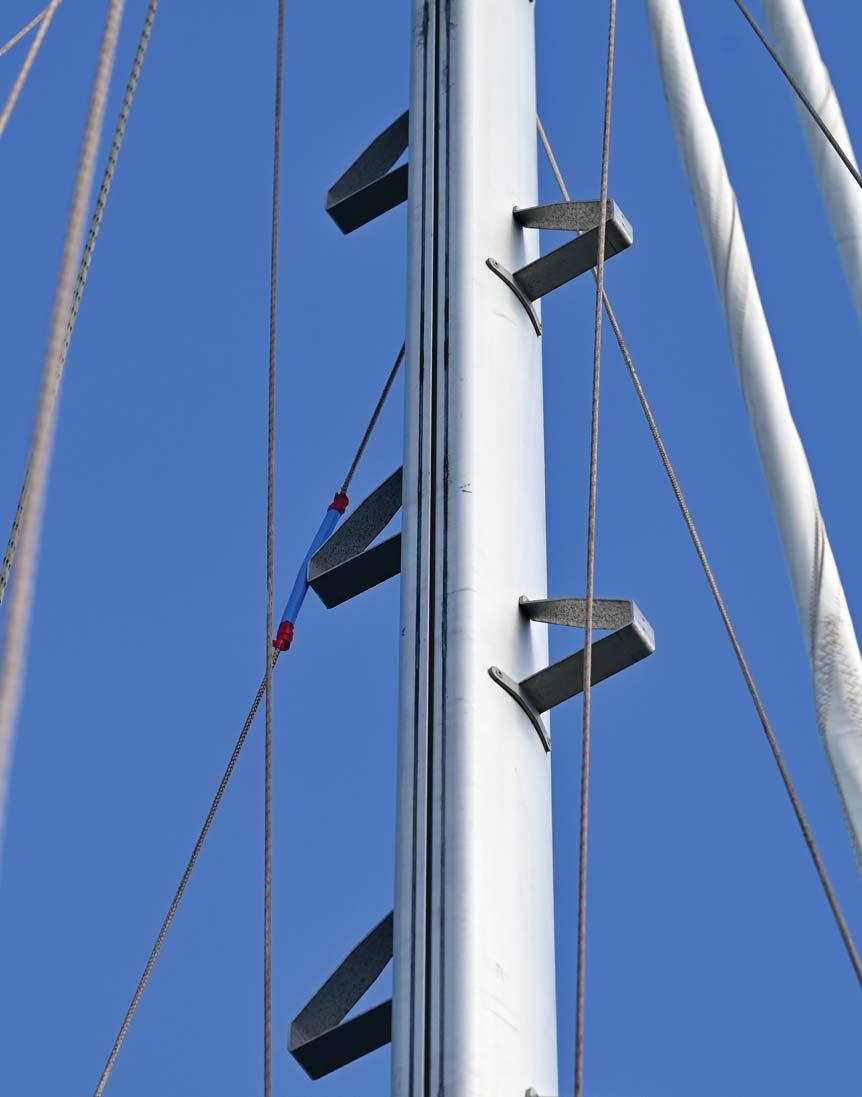
On the 13th day the shroud broke completely and came down. We had already made another 650 miles towards Martinique but there were still 650 miles to go. With the shroud broken completely, the mast showed a clear bend to starboard and started to work in the waves even more than before. Because of this the port side running backstay began to chafe against one of the mast steps, so I climbed up again to put a piece of hose over it.
Apart from some challenging squalls the weather calmed down. We were lucky with a couple of days with light winds, but then it turned into the north and our course was taking us more to Venezuela than to Martinique. We had to stay patient, however, as it was impossible to sail full-and-by or even on the wind. For days our course had had nothing to do with a great circle so our distance got longer and longer. In the end we sailed about 75 miles more than the great circle route.
When the wind became too light for sailing we started to motor, but we had to be careful as our diesel reserve was not sufficient to simply motor all the way. We had to find a compromise between light-wind sailing, drifting and motoring as we neared Martinique. The first thing we saw as we approached was Mount Gimie on St Lucia. We had made it!
We just had to hope that the squalls would miss us
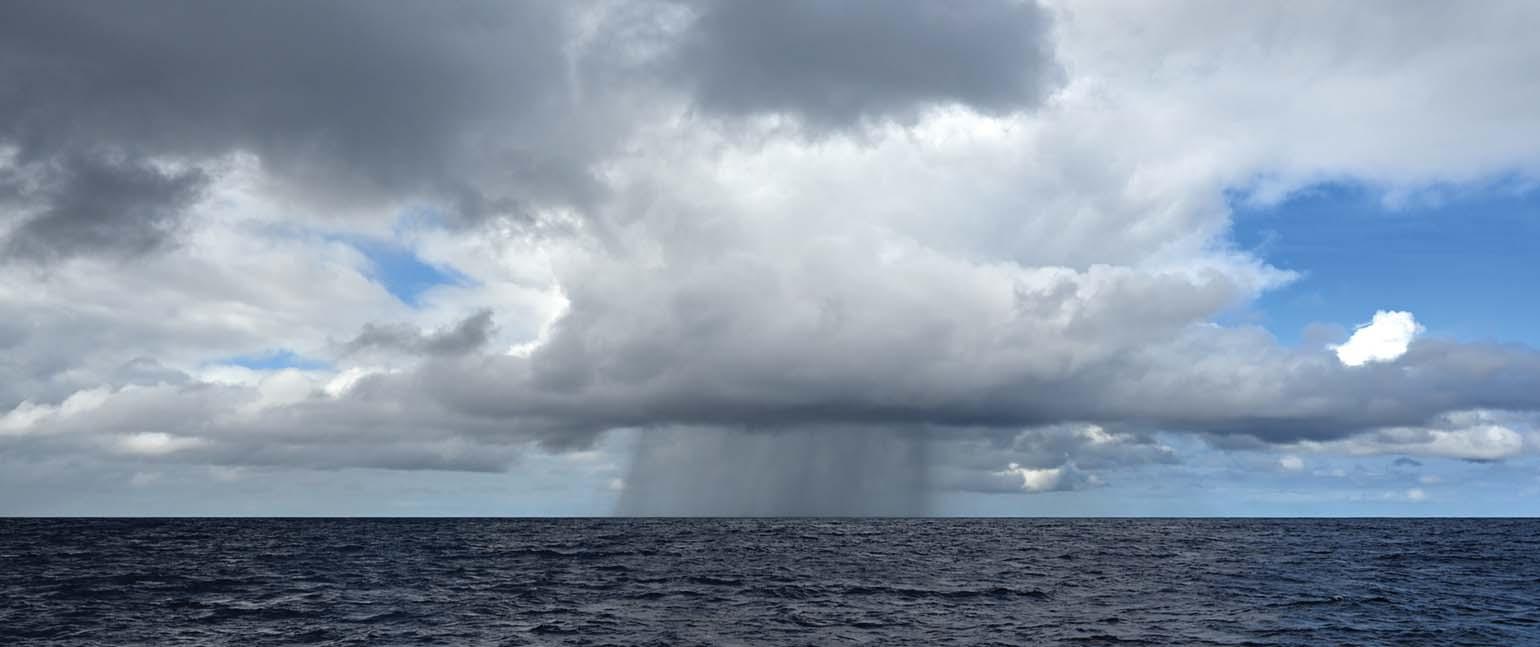
Despite all our problems, there were also wonderful momenvts
A last challenge awaited us. A huge front of squalls with heavy rain hit us and gusts up to 30 knots made us doubt whether everything would turn out well. We reduced the sails to a small shred and made the passage between St Lucia and Martinique. After 20 days 20 hours and 40 minutes we dropped anchor off Sainte-Anne in southern Martinique, having sailed 1384 miles with the broken shroud. We obviously made no major mistakes, but this is only one side of the coin. On the other side is written: ‘You were extremely lucky. Don’t forget!’


So we did most of our OCC qualifying passage with a broken shroud, a very special ‘offshore qualification’. It was an experience we will not forget but really do not want to repeat!
Ready for landfall in Martinique

(In Flying Fish 2022/1 Nicole related the story of her and Jeremy’s 2020 Pacific voyage from Panama towards Australia and its abrupt end in Tahiti as Covid took over the world – see A Year and a Half to Cross the Pacific. In 2021 they returned to Tahiti, this time to join Simon and Helen Phillips aboard their Discovery 67, Sapphire II of London for the passage to New Zealand. Still intent on reaching Australia, Nicole concluded her account with the words, ‘Maybe 2022 will see us doing that extra hop’.)

In 2022 Jeremy and I were invited to rejoin Roving Rear Commodore Simon Phillips aboard his Discovery 67 Sapphire II of London to continue our Pacific adventure to Australia, with a not-so-insignificant detour via Fiji, Vanuatu and New Caledonia. Naturally, we jumped at the chance and on 8th June boarded our flight for the long haul back to New Zealand.
Sapphire had been left at Port Nikau, Whangarei, near the northern tip of North Island, for some major rigging repairs. Given that she had been there for six months, we had expected to be able to jump aboard, carry out a few test sails, then leave for Fiji. Unfortunately that was not the case and we ended up delayed there for a further two months while work was completed and the appalling weather settled. Although Port Nikau is now being developed into a marina, at the time it was little more than a boatyard, with the total extent of the facilities consisting of a toilet!
Strangely enough, the two months went by rather quickly. This was probably because Jeremy and I befriended the riggers, who allowed us to assist with some of the
Simon on a mastless Sapphire II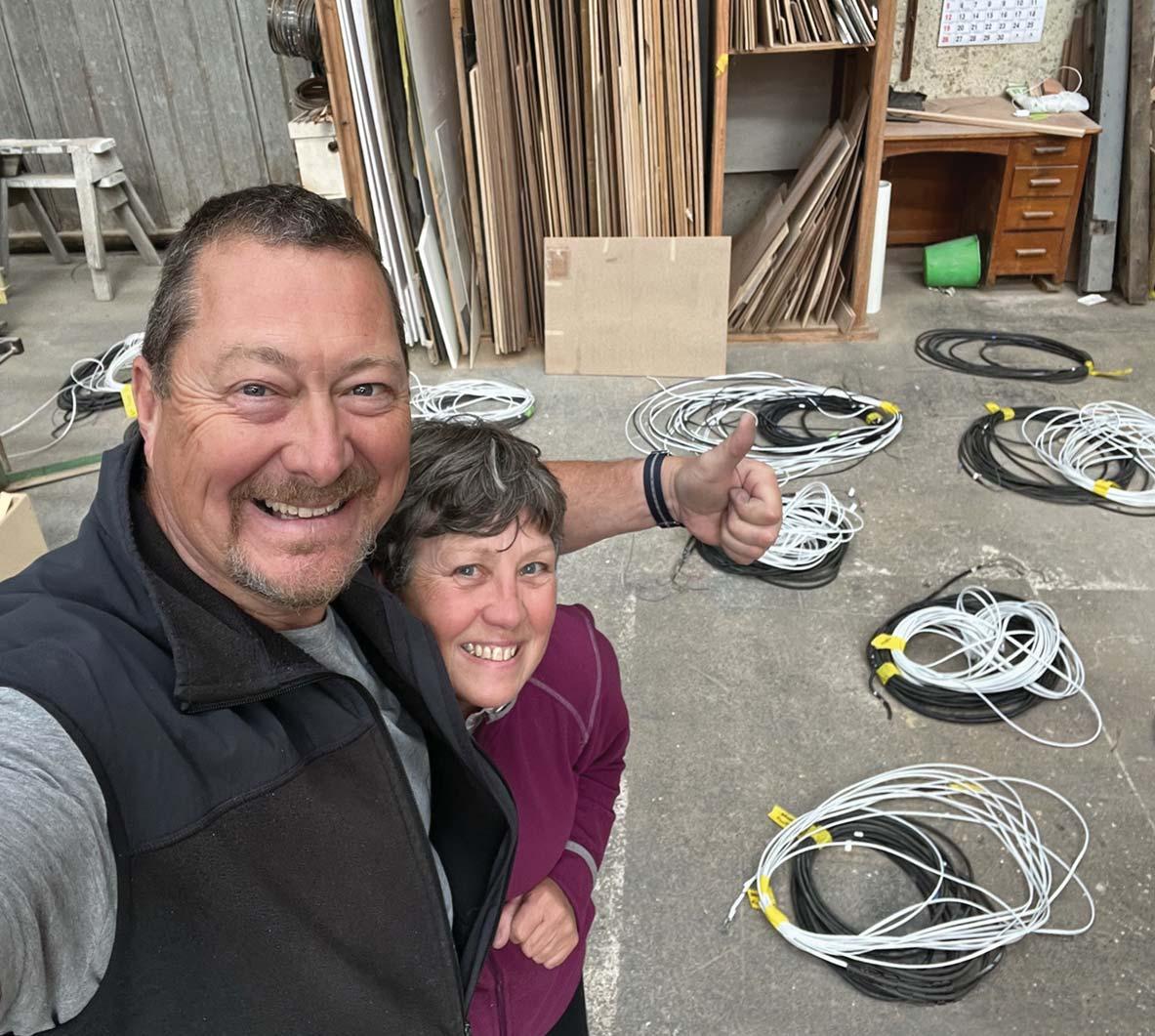
simple jobs such as cutting wires to the right length and cleaning/ polishing the stainless steel. In many ways, it was very interesting to watch the rerigging process and we learnt quite a lot.
One of the riggers joked that if we had found it difficult to get into
New Zealand (we had been hit by a storm on our approach to Opua), we would find it just as difficult to leave. He wasn’t wrong. We heard of one yacht that had been waiting six weeks for a weather window to depart, so even if the work had been completed sooner we might still have had the delays. Windy and PredictWind were both showing horrific conditions in July, with front after front coming across relentlessly from Australia.
By the beginning of August we were finally ready to go and, after a pleasant sail up to Opua to check out, we waved goodbye to New Zealand on 6th August, heading for Fiji with four of us on board – Simon, his friend Mark, Jeremy and me. Morale was high, the conditions were good and we quickly settled into our watch routine.
We had talked about doing a small detour to visit North Minerva Reef – when else would we ever have the chance to visit this volcanic caldera in the middle of nowhere? In fact it became a much-needed safe haven for us. On the third evening of our passage we were hit by a rather vicious squall, which caused considerable damage to the mainsail, putting it out of commission. Conditions deteriorated and we were left sailing under genoa only, with high winds and confused, rolly seas.
Thank goodness for Minerva Reef, which we reached three days later feeling rather drained and in need of a good night’s sleep. There is only one entrance to the reef, on the northwest side. It is quite narrow and there are many bommies* within the crater, but we arrived with good light and, with the help of Navionics and a careful lookout, were able to navigate safely to the southwest quarter and drop anchor in 12m of water. All around us, just a stone’s throw away, the waves of the Pacific Ocean were crashing against the reef with a terrific roar, but we were in complete calm. It was an amazing feeling to be the only yacht, anchored so far from anywhere (800 miles from New Zealand and 450 miles from Fiji), surrounded by ocean some 4000m deep.
* Isolated coral heads and pillars.
Safe for the night at Minerva Reef
After two nights of rest, and having done as much as possible to secure the mainsail, we left the reef, carefully following our inward track to exit the pass. Conditions were not much better – constant 25–38 knot winds and 4m swells with confused seas – but, on the positive side, at least the wind was behind us and we sailed on, under genoa only, to Port Denarau Marina on the west side of Viti Levu. We had reached Fiji at last! Under our original plans we should have been there in June 2020, but better late than never.

We stayed at Port Denarau long enough to pick up our fifth crew
 Paradise!
Paradise!
member, Brian, get some repairs done, provision for a three-week trip (there are decent supermarkets in Nadi, but if you want bacon and ham, we would recommend South Pacific Butchering Company) and, most importantly, visit the market to buy kava for the village chiefs whom we were about to encounter.
Once ready we set off for the Yasawa Group of islands, calling in at Musket Cove on the way. The Yasawas are paradise embodied, with beautiful white-sand beaches, coconut trees, reefs full of colourful fish, water of all shades of blue and small resorts and villages. They are remote and it is not easy to buy provisions (although there are regular ferries and we understand that Farmboy, based in Nadi near Denarau, will send items to you if you really need to go that route). By the end of the three weeks we had to laugh at the lack of fillings for our lunchtime wraps. Don’t expect to be able to buy much from the villagers, at least not in the way of food, as they need what they grow for themselves. Souvenirs though, that’s a different story! You will definitely feel some pressure to buy a few things from the ‘ladies’.
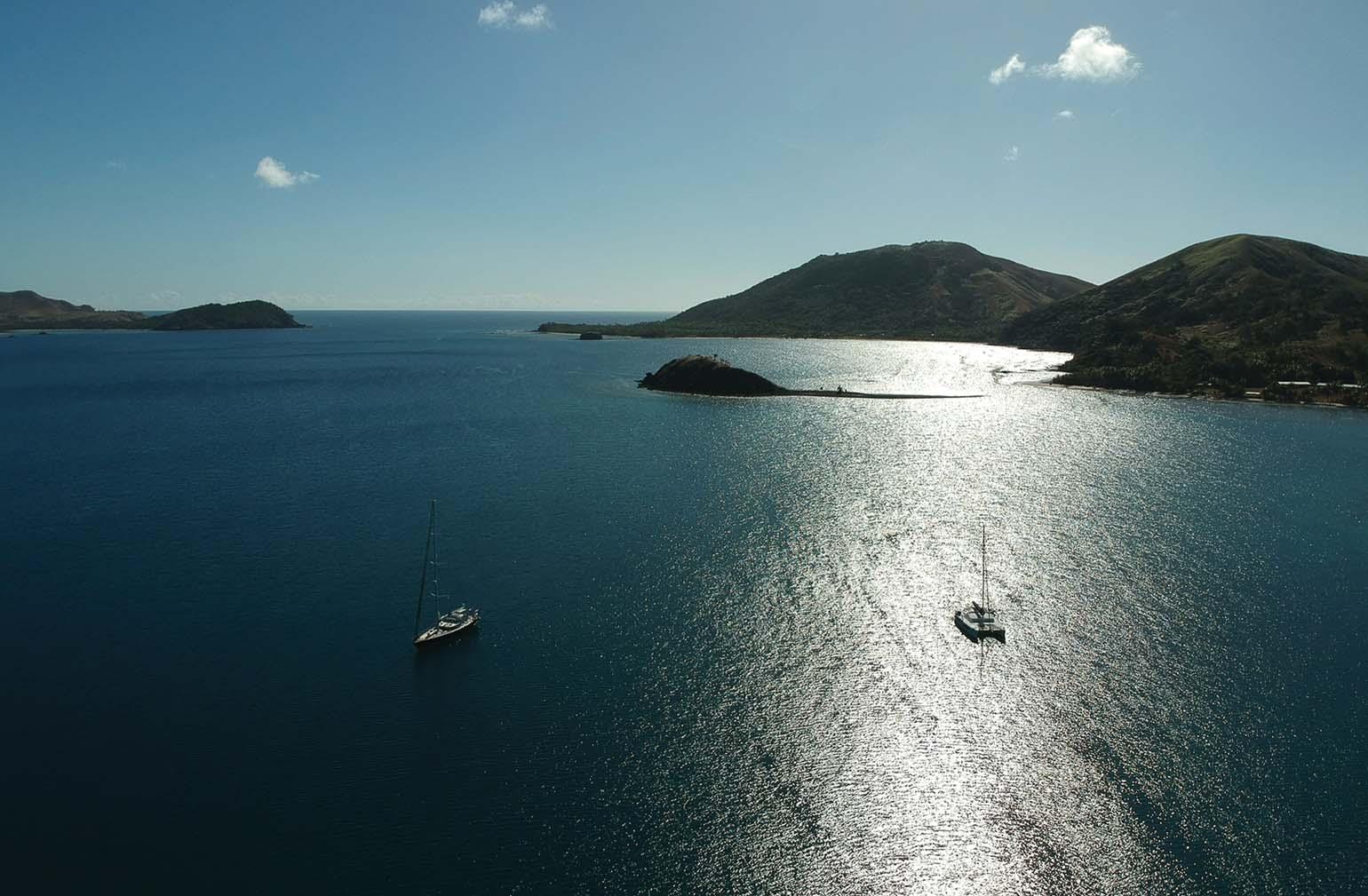
Anyone for kava?
 Anchored near the Sawa-I-Lau caves with our friends aboard Domini
Anchored near the Sawa-I-Lau caves with our friends aboard Domini
Some of the resorts – Blue Lagoon and Octopus in particular – are very welcoming to cruisers and we enjoyed some fun evenings in their restaurants, including partaking in a kava ceremony. It’s certainly worthwhile trying kava once, but once was enough for us as it tastes like dirty dishwater! But visiting resorts is not what cruising is about. Our best experiences were anchoring near the villages, doing sevusevu with the chiefs (during which you present them with some kava and, in return, receive permission to anchor, fish and swim), exploring the islands and snorkelling on the reefs. The SawaI-Lau caves at the southern end of Yasawa’s northernmost island were well worth a visit – huge, water-filled caves with a swim-through to an inner cave for those brave enough to take the plunge. The local village owns the caves and charges an entrance fee, but also provides guides. Expect there to be goods for sale as you exit, as was the case with every village we visited...
Having watched the Tom Hanks movie Cast Away whilst in Minerva Reef, we had to visit Monuriki island where it was filmed. This island is owned by the village on neighbouring Yanuya island, where sevusevu is expected and a small fee is paid to visit Monuriki. The locals were very welcoming and seemed to appreciate that all of us, men included, wore sulus (sarongs). They showed us around their village, the highlight being the children who ran out excitedly shouting “bula bula!”* and joining us on our tour.
* In Fiji, bula literally means ‘life’ or ‘to live’, but is most commonly used as a greeting. If said twice it means health, or good health.
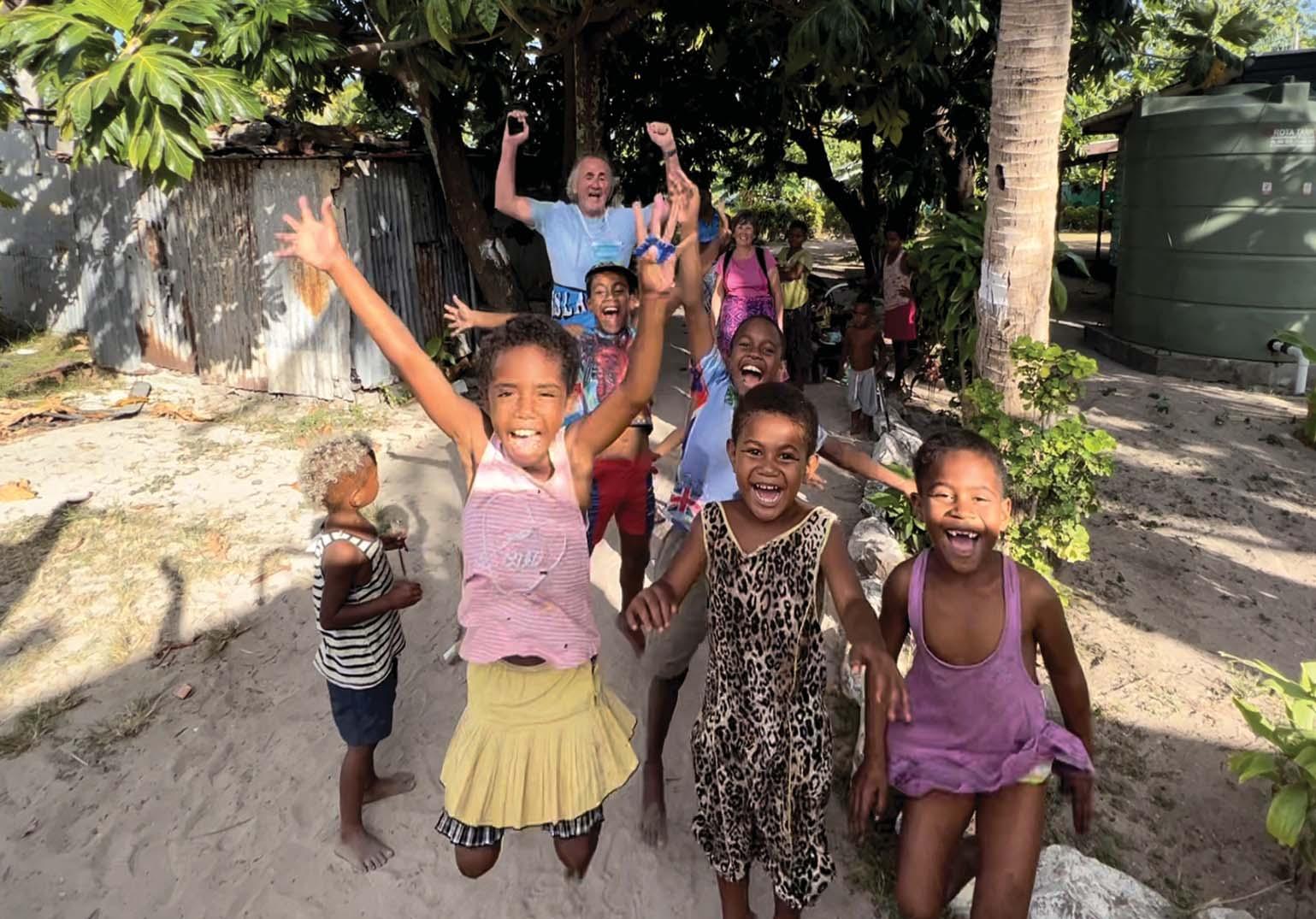
Monuriki was not the easiest of islands to visit. There was a heavy surf breaking on the beach, which dropped away rather steeply, so landing the dinghy was not an option for us. Instead, we tied up to one of the tourist boat mooring buoys and swam ashore. I had not come prepared for this so opted to swim in my underwear. When I jumped in this didn’t seem an issue as there was not another soul around, but by the time I reached the beach a few minutes later a tourist boat was divesting itself of its twenty or so passengers. So much for my modesty! Obviously, we had to search for Wilson* ... and we found him The locals set him down there every day to add to the experience! We had a good laugh about that as we swam back to the dinghy for a rough, bouncy ride back to Sapphire.
Our second adventure in Fiji involved a lot of reef navigation. We wanted to visit Savusavu on Vanua Levu and, after careful consideration, decided to take the route around the north of Viti Levu. We were a little cautious as we looked at charts littered with the words ‘uncharted reef’ and ‘incomplete survey’, but we had a suggested route on the chartplotter, photos from Google Earth, the Navionics app, the Sail Fiji Cruising Guide app and four experienced sailors on board (Brian and Mark had left and Helen, Simon’s wife, had joined us), so we took the plunge. And we are so glad we did! Whilst we had to motor-sail most of the way due to the reef and the wind direction, the landscape along that coast is just stunning. It’s very rugged, like a cross between the Scottish Highlands and Croatia, with very few settlements but good fishing. We saw two other yachts on this passage and anchored in some remote, isolated places. My personal favourite was Lekubi Point on Vanua Levu after we had crossed Bligh Water, where we
* Those who haven’t seen Cast Away will be intrigued to know that Wilson is a volleyball...
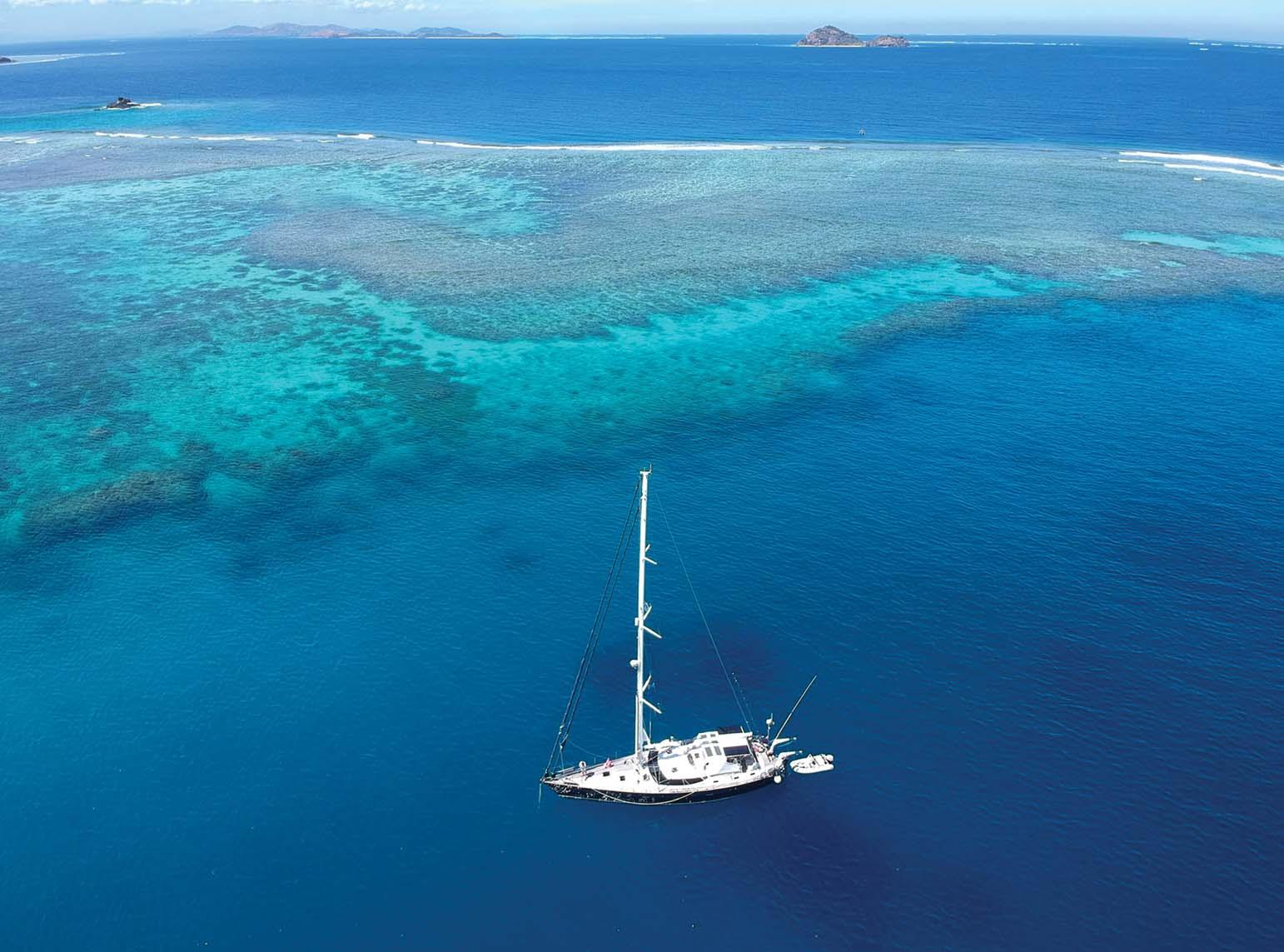
anchored near a beautiful white sandy beach, protected behind a long, mangrove-covered spit.
The passage was not without its excitement, however, and all caused by the breakage of a small part. We were crossing Wainunu Bay and approaching the Nasonisoni Passage, the narrowest reef passage that we had encountered to date, when the engine temperature gauge suddenly shot up. A quick investigation revealed a shredded fan belt and the engine had to be turned off. This might not have been too much of a problem if the wind had been behind us, but of course it was dead on the nose and we were surrounded by reef and rocks. Even anchoring would have been a problem as we were unable to manoeuvre around the many obstacles in our way. It was time to heave to. And so began the rather comical events of the next two days, which really demonstrated what wonderful people the Fijians are.

Our intended destination had been the Copra Shed Marina at Savusavu which was still 25 miles away, and a quick call resulted in them very kindly arranging for an engineer to come out to
Our racecourse track near Nasonisoni Passage

The fishing was good...
us the following morning. That was followed by a courtesy call to Fiji MRCC just to let them know we were okay, in case they happened to see us on AIS and wonder what we were up to. Night was falling and 8 miles west of us was a small reef towards which we were being driven by current and wind, so we settled down to a sequence of heaving to and bobbing slowly westwards, then sailing back eastwards, bobbing westwards, sailing eastwards etc throughout the night.
Around midnight a tiny white light appeared in the entrance to the Nasonisoni Passage. It turned out to be four policemen in their newly-acquired police boat – a 14ft (4.25m) dory – who’d been sent out from Savusavu to check on us. This was their firstever police boat, gifted to them only two weeks earlier, and we were their first ‘shout’. They were very helpful, arranging for their own engineer and a tow for the following morning. They were thrilled to be aboard Sapphire as they had never been on a large yacht before, so when we suggested they stay on board for the night instead of trying to find somewhere to bed down in one of the local villages they jumped at the chance.
The following morning help arrived in the form of what looked like a World War Two landing craft but was, in fact, the dive boat of Namena Divers. None of us had been involved in a tow before, but between us we devised a bridle which enabled us to be towed safely whilst also allowing us to deploy the anchor quickly. Not being used to towing a yacht with a deep keel, the dive boat was about to tow us directly over a small 2m reef, but disaster was avoided by a lot of shouting and we were soon anchored in the lee of the reef and near the wreck of another yacht!
Next day it was established that there was a broken key in the saltwater pump, which was taken away to be repaired. We had another night at anchor before the engineer and the dive boat returned, the pump was refitted and they stood by whilst we motored through the Getting a tow from Namena Divers

Nasonisoni Passage to continue our trip to Savusavu, leaving shortly afterwards with big smiles and waves all round. We were so grateful to these Fijians who had gladly given up their time to assist us, wanting nothing in return other than reimbursement for the cost of their fuel. And it didn’t end there – no sooner had we arrived at Copra Shed than the same policemen turned up to welcome us and make sure we were okay. We couldn’t have asked for more.
Savusavu proved to be one of our favourite places in Fiji, with great eateries, especially for Indian food (three which we particularly recommend are Surf & Turf, Mum’s Country Kitchen and Savusavu Wok). It’s also worth visiting the botanical gardens and the KokoMana chocolate factory. We were sad that our small breakdown had left us with reduced time to explore the area, and far too soon we were on our way back to Denarau Marina, taking the easier but less interesting southern route this time. We needed to return there to pick up our new crew member, Bill (found via a list of names supplied to us by Regional Rear Commodore Viki Moore) and to prepare for the passage to our next destination, Vanuatu.
Before leaving Fiji we had made arrangements to check into Vanuatu at Port Resolution on the island of Tanna. This was a must-visit location, being the site of Mount Yasur, one of the world’s most active volcanoes and one you can visit up close – we could see smoke billowing out of its summit as we approached the entrance to the bay. Port Resolution is a large, well-protected bay and easy to access. We heard it could accommodate more than thirty yachts, but there were only eight or so when we were there. There is a small yacht club, little more than a wooden shack decorated with cruisers’ flags, but it is run by Stanley (who told us he was a village chief) who is extremely helpful and will arrange customs procedures as well as taxis for trips to the volcano or across the island to Lenakel.
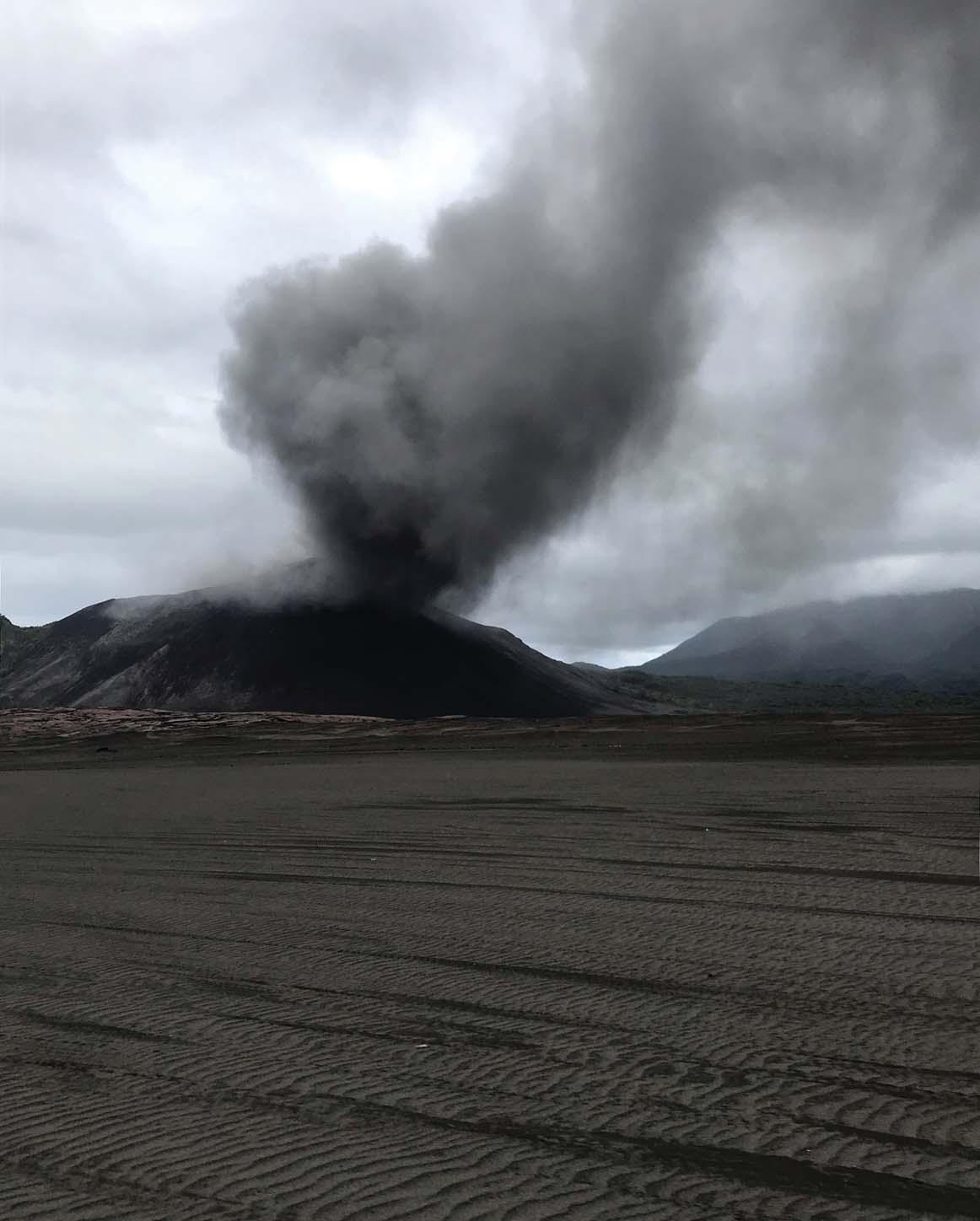
Customs and immigration officers travel across the island to Port Resolution to carry out check-in procedures. They charge extra for this, but make only one charge for the day, so if a group of yachts are checking-in the cost can be split between them. You need to arrive with cash, as the nearest ATM is two hours’ drive away in Lenakel, which is also the only place on the island where you can buy a local SIM card.
Stanley arranged our volcano tour for the following day, and this was one of the highlights of our Pacific adventure. We all bundled into the back of a battered SUV for the 45-minute journey along uneven mud roads and through dense jungle. We passed many small children along the way, all shouting greetings with huge machetes in their hands! It was wonderful to feel so remote and yet so safe.
Standing on the rim of a volcano is something I will remember for the rest of my life – the feeling of wonder and awe, mixed with pure terror at the might of nature. What a privilege to see such a force so close up that we could lean over the edge and see the bubbling, red-hot lava below us, feel the heat from the depths of the earth and hear the constant angry grumbling regularly increase to a loud roar as sulphurous gases and ash were ejected into the sky. As evening drew in and the skies darkened we were treated to an amazing display of pyrotechnics as the activity seemed to increase and lumps of hot lava were thrown up inside the crater. It is easy to forget that here is something which could cause total devastation to the local population, who live with falling ash on a daily basis plus the knowledge that one day this volcano could really blow its top. For the time being, though, it is bringing much-needed cash to the islanders.

With all that excitement behind us it was time to sail up to the capital, Port Vila, for Helen to fly home and our final crew member, Brigitte (also found via Viki’s list), to join us. The sail north was lively, with squalls and some of the heaviest downpours we had yet encountered, but it was only a short, overnight passage and we were soon tied up stern-to at Yachting World Yacht Club. This is a rather interesting spot to get to, with shallow water, a multitude of buoys and mooring lines ready to foul your prop and low overhead power cables (which we saw at least one yacht misjudge).
We left Vanuatu on 15th October with a definite feeling that we were nearing the end of our Pacific adventure. After a short stop in Noumea, New Caledonia to wait for a weather window, we embarked on the last leg, bound for Southport in Queensland, Australia.
Bad weather and sea conditions were a regular feature of our time at sea in 2022 and leaving Noumea was no different. For the first couple of days the seas were lumpy and
rough, leaving a number of us feeling unwell. But then, wonder of wonders, the wind dropped, the seas became calm, the skies cleared and all was well, except that we had no wind. The sun was out and there was beautiful sea sparkle as far as the eye could see, as if the ocean had been scattered with thousands of glittering diamonds. The sunsets were magical and, with only the tiniest crescent moon, the stars were awe-inspiring. We were also extremely lucky to avoid a humongous thunderstorm which stretched right across the sky behind us one night, full of both fork and sheet lightning.
A few days later the wind was against us again and we were back to uncomfortable seas with lots of water over the decks. It was time to put the engine on and just get there. As we approached Southport, accompanied by dolphins, it couldn’t have been more different from the dark, quiet nights of Tanna. We had swapped jungle, peace and quiet, and dark nights for a real assault on our senses – bright lights and a cacophony of noise, from helicopters to jet skis.
The end in sight – Southport, Queensland
1002 days after leaving the Panama Canal through those gigantic lock gates, Jeremy and I had completed our 3673-mile ‘final hop’ and our Pacific adventure was finally – and sadly – over.
Yea, foolish mortals, Noah’s flood is not yet subsided; two thirds of the fair world it yet covers.
 Herman Melville
Herman Melville
It is with great sadness that I have to report that Jill Baty died shortly after her 90th birthday. She was a staunch supporter of the OCC having known our founder Humphrey (Hum) Barton well – in fact her 1963 qualifying passage was made aboard his 35ft Laurent Giles-designed Rose Rambler, the yacht’s first transatlantic passage, although she didn’t join our club for another five years.

Her Canadian relatives wrote: ‘Jill died peacefully at the North Vancouver Hospice. She was born near Newcastle upon Tyne in England to a Canadian mother and an English father, and will be remembered forever for her love of England, her passion for sailing and her many personal eccentricities. She was determined, often opinionated and very entertaining. Jill developed superior sailing skills while crewing on boats in many of the world’s most famous ocean races. Her adventures on the water continued until well into her late 70s when her strength began to fade and she moved to a life on the land, where she developed new interests, friends and passions’.
After leaving school Jill took a Cordon Bleu cookery course and it was at the yachting events at which she subsequently catered that her interest in sailing and opportunities for racing and offshore cruising were enhanced. A good cook is always welcome on a boat and Jill developed the skill of making tasty meals from very limited ingredients. She was not limited to the galley for long, however, and my husband Andy remembers Jill arriving in Antigua with Hum in 1963 as young, extrovert and already a unique character. A few years later, when she sailed in on Lord Riverdale’s radical 48ft twin-keeled, twinruddered Bluebird of Thorne , Andy recalls being impressed with her sailing knowledge as she showed him around the boat. Mike Locatell, a Seattle colleague and friend, also recalls her recounting with pride that when racing on a Swan in the Fastnet Race she was the only woman allowed to work the foredeck!
On 17th April 1974, after purchasing a two-year-old 32ft Wauquiez Centurion that she named Simply Super, Jill and her friend Stephanie Merry left England to sail across the North Atlantic to New York, retracing the route taken by Hum Barton and Kevin O’Riordan in Hum’s 25ft Vertue XXXV which led to the founding of our Club. The voyage took 39 days, after which Jill sailed south to the Caribbean, passed through the Panama Canal and, in July 1976 after sailing nearly 15,000 miles, much of it singlehanded, arrived at the Royal Vancouver Yacht Club. As Andy and I had to moved to Vancouver in 1973, her arrival was the beginning of a long friendship with many adventures, many stories
At the 2004 British Columbia Rally, with Jeanne Socrates and Peter Young


over dinners and much passionate discussion about boats, particularly when Andy and she were both yacht brokers!
Having helped to care for a relative’s children after his wife had died, Jill became very attached to her Canadian family and made Vancouver her home. But her sailing days were far from over. Once the family was settled she headed down the Oregon coast in Simply Super and decided to make Alameda, San Francisco her base. For many years she worked as a broker for Kensington Yachts. They were very flexible regarding her time away, but also benefited from her increased knowledge and contacts every time she took off to race at prestigious events around the world.
Jill receives a hug from Tony Davies during the 2008 Desolation Sound RallyBy this time she had become boat manager for Warren Brown, a successful Bermudian yachtsman who owned the 1972-built, 61ft Sparkman and Stephens/Palmer Johnson-designed and built War Baby (formerly Tenacious , made famous when Ted Turner sailed her to victory in the tragic 1979 Fastnet Race). Jill would ensure the boat was in good racing or cruising trim, then lay her up afterwards and co-ordinate the necessary arrangements in many areas of the world. She particularly enjoyed going south to Antarctica and New Zealand when War Baby was making a leisurely circumnavigation and described being caught up in the Queen’s Birthday Storm when leaving New Zealand in May 1994.
In 2002 she invited me to join War Baby on an OCC rally from Falmouth to Dublin and I was thrilled at the opportunity to once again sail aboard such a beautiful yacht of that era. Sadly, just before the event, Jill fell while in Mallorca and broke her hip, so I was asked to take her place. It was only then that I realised just how much she enabled these trips, from managing the boat, workmen and crew to completing the provisioning and doing all the cooking. She was the main watch captain and the person who was consulted if anything went wrong. She was very organised and every item on the boat had a specific place. Even within a locker items were labelled, although some of the names were upside-down! It didn’t bother Jill to turn her head to interpret them as she also didn’t get seasick.
I greatly admired her and enjoyed her company. She had crossed oceans as a single woman in an age when boats were basic, few electronics existed and destination and weather information were often scarce. When you were with Jill it was an adventure, the unexpected generally happened and there was always a good laugh and a great memory. I feel fortunate to have so many very varied memories of her, ranging from staying aboard Simply Super every year for the Oakland Boat Show to giving seminars together and visiting a friend of hers who was the owner of a ‘luxury’ French château that had iron bedsteads, hard, hair mattresses and a bathroom that one could only enter sideways! But the latter was followed by a delightful sail on a 70ft yacht from the Camargue to the Voiles de Saint-Tropez regatta.
When she could no longer race or cruise, Jill loved hearing the stories of other people’s adventures and could always come up with some appropriate and entertaining ones of her own. Passionate about sailing, intrepid, generous, inspiring, candid and encouraging to others all describe Jill. Mike Locatell, who co-brokered many boat sales with Jill, and her doctor, Mik Madsen, a mutual friend and circumnavigator, both describe her as a unique character and one of a kind. She marched to her own drum and you always looked forward to seeing her. She will be missed, remembered with admiration and leaves a memorable life in her wake.
 Liza Copeland RRC West Coast North America
Liza Copeland RRC West Coast North America
Huck Endersby, an OCC member since 1971, passed away on 1st December 2022 in Cape Town, South Africa at the age of 77. He is survived by his wife Annie, brother Tommy, sister Jenny and son James, who resides in the UK.
Huck grew up in Cape Town in a sailing family. He displayed a passion for the sea from a very early age, building his own tin canoes and catching crayfish along the local beachfront. After graduating from the University of Cape Town in 1966, Huck went to work for Deloitte in London and joined the Twickenham Yacht Club where he competed in dinghy races on the Thames.
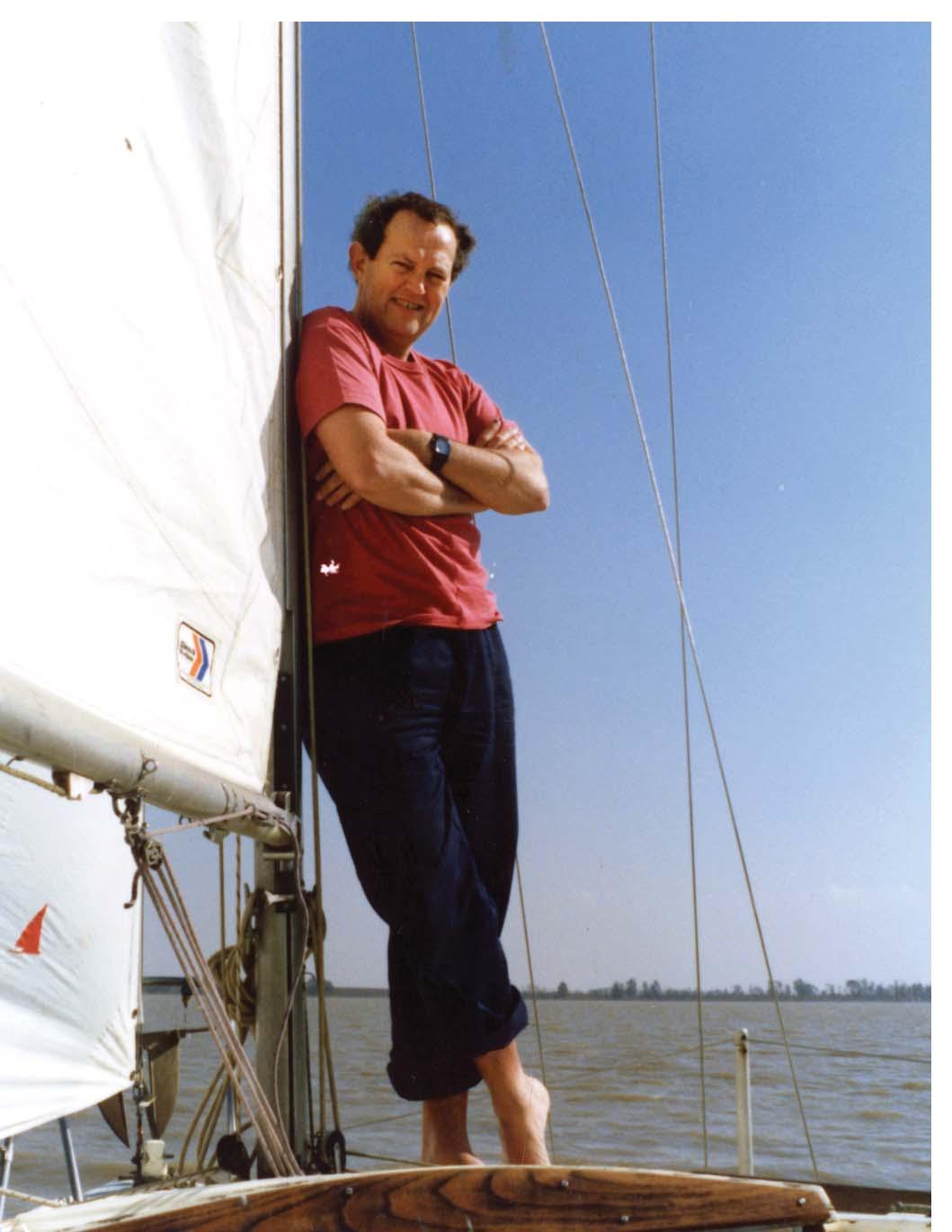
While not the open ocean, it is a very large dam capable of producing stormy sailing conditions whipped up by ferocious Gauteng/ Transvaal thunderstorms
 Huck in 1994 aboard Oceana Aura on South Africa’s Vaal Dam.
Huck aboard Splash, a 32ft Van De Stadt and his second yacht on the Vaal Dam, in 1998
Huck in 1994 aboard Oceana Aura on South Africa’s Vaal Dam.
Huck aboard Splash, a 32ft Van De Stadt and his second yacht on the Vaal Dam, in 1998
Happy cruising off the Cape Coast en route to Port Elizabeth in about 2006
He became friends with the owners of the White Swan Pub in Twickenham and they often took him sailing on their yacht. In his spare time he would go to Salcombe in Devon to crew on a professional crab fishing boat for fun.

Huck Endersby with his wife Annie and son James

During that time he met an American couple, Jack and Iris Timmes, and in 1970 joined them aboard their 32ft yacht Spellbound for the 1800-mile passage from Bermuda to the Azores, his first Atlantic crossing. He also sailed along the US East Coast and across the Caribbean Sea to Cartagena, Colombia, where they were held up at knifepoint by locals while on their yacht.
In 1980 he was transferred to Deloitte’s office in Johannesburg, where he met his wife Annie. Here the family was introduced to dinghy and keelboat sailing on the local Vaal Dam which has a surface area of 320km2 and 800km of shoreline. He also took part in dinghy regattas around Southern Africa, including in Gaborone, Botswana, where he had an altercation with a highly venomous black mamba snake that swam out to his dinghy during a club race.
In 2003 the family moved to Cape Town where he bought a keelboat and a dinghy and joined the local yacht club. He sailed whenever the opportunity arose, which included crewing on yachts along the South African coast. He was also active in civic affairs and for many years headed up the local Llandudno Civic Association. There he worked tirelessly to attain the local beach’s prestigious ‘Blue Flag’ status and promoted the protection of the local flora and fauna. A plaque in honour of his committed environmental work has been erected near the beach.
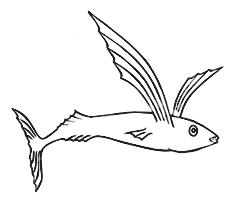
Huck attended the annual OCC gatherings in Cape Town for visiting cruising yachts and his presence will be sorely missed.
James EndersbyJerry Gurney, who died suddenly but peacefully in November 2022, was an enthusiastic and highly competent sailor all his life. Born in 1934, he was taught to sail in traditional fishing boats off Beer in East Devon. He attended Clifton College, Bristol before going up to Peterhouse, Cambridge, a period which had a great influence on his life. Professionally, he gained the basic engineering skills that he would develop over the following decades to design some of the most iconic bridges in the world, while at the same time building friendships that lasted his entire life.
In 1962 Jerry married Bridget Balkwill. They brought up their family while Jerry worked in various locations on major infrastructure projects –the Tinsley Viaduct in Sheffield, the first Severn
The first Bosphorus Bridge, opened in 1973, on which Jerry was Chief Engineer
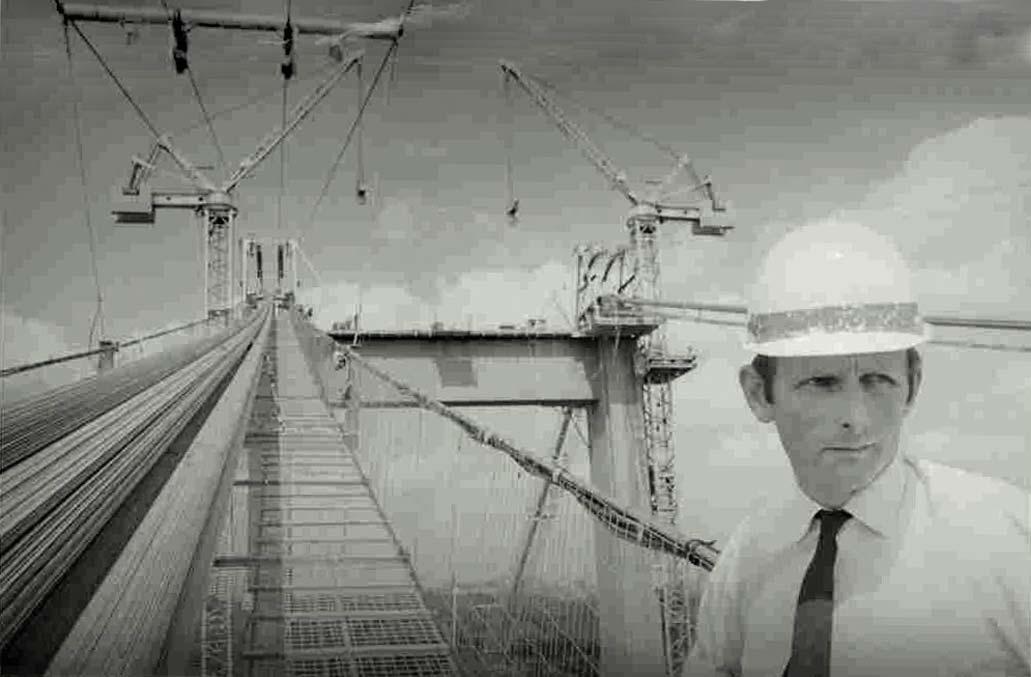
Bridge, the Humber Bridge and the first Bosphorus Bridge. The latter took Jerry and his family to Istanbul for over three years. Their time in Turkey and the journeys there and back in their VW campervan are fondly remembered by the whole family. It was quite an adventure, driving a young family across North Africa in the 1970s!*
In this busy life, sailing was fitted in as much as possible. A skilled navigator, Jerry often filled this role on Channel races and a couple of Fastnets. His quiet competence was always a huge asset onboard, whether at the chart table or as skipper. In 1991 and 1992 Jerry skippered family crews in the Three Peaks Yacht Race. The crew of five included two of his children, Jo and David, and his future son-in-law, Rob Withers (OCC). In 1991 work commitments prevented him joining the yacht until just before the start, but the crew acquitted themselves well and Jerry was truly chuffed when the following year he won the Tilman Cup for the fastest crew of combined runners and sailors. He liked the idea that a family team could beat all the Services crews.
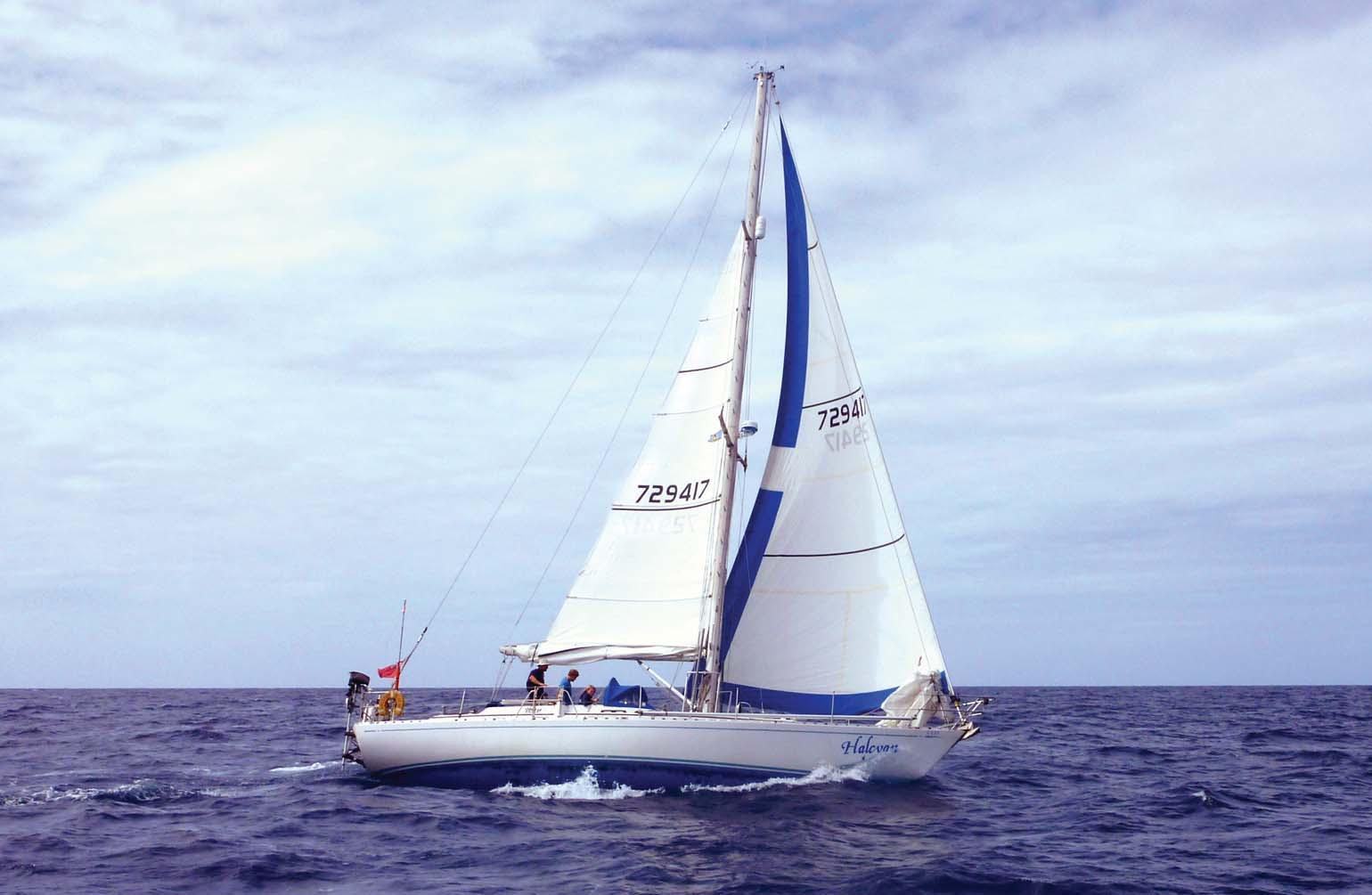
In 1992 Bridget and Jerry moved to Hong Kong to work on the Tsing Ma Bridge linking Hong Kong to its new airport on Lantau Island. This finally gave Jerry the opportunity to own his own yacht, Halcyon of Hebe, a Hylas 44. She was a very strong, safe home, looking after skipper and crew for thousands of miles. With her lovely lines she slipped through the water gracefully and wasn’t put off by rough seas or a bit of wind. During their last couple of years in Hong Kong, Jerry sailed and raced Halcyon locally and down to the Philippines, spending much time preparing meticulously for the long sail home. Having overseen the successful completion of the bridge, Bridget and Jerry set sail shortly before the handover of Hong Kong to the Chinese. For the majority of the trip they were joined by son David and his wife Kathryn and this journey, particularly from Thailand to Turkey via the Red Sea, was one of the high points of Jerry’s life. Once through the Red Sea, they kept Halcyon in Turkey and Greece for a few years before finally bringing her back to Salcombe in 2005.
* An unusual route, but one his children are certain they took at least once.
The return from Hong Kong and retirement allowed Bridget and Jerry to move in 2001 to East Portlemouth on the south side of the Salcombe estuary. A Salcombe Yawl joined Halcyon , and Jerry enjoyed racing in the Blue Fleet, ‘more civilised and less shouty than the Red Fleet’, he said. Halcyon was replaced by Tintin, a Boreal 47, and last summer Jerry was to be found helming in local cruiser races, coaxing every ounce of speed from her. With sea and family around him, the years and back pain slipped away and he was in his happy place.
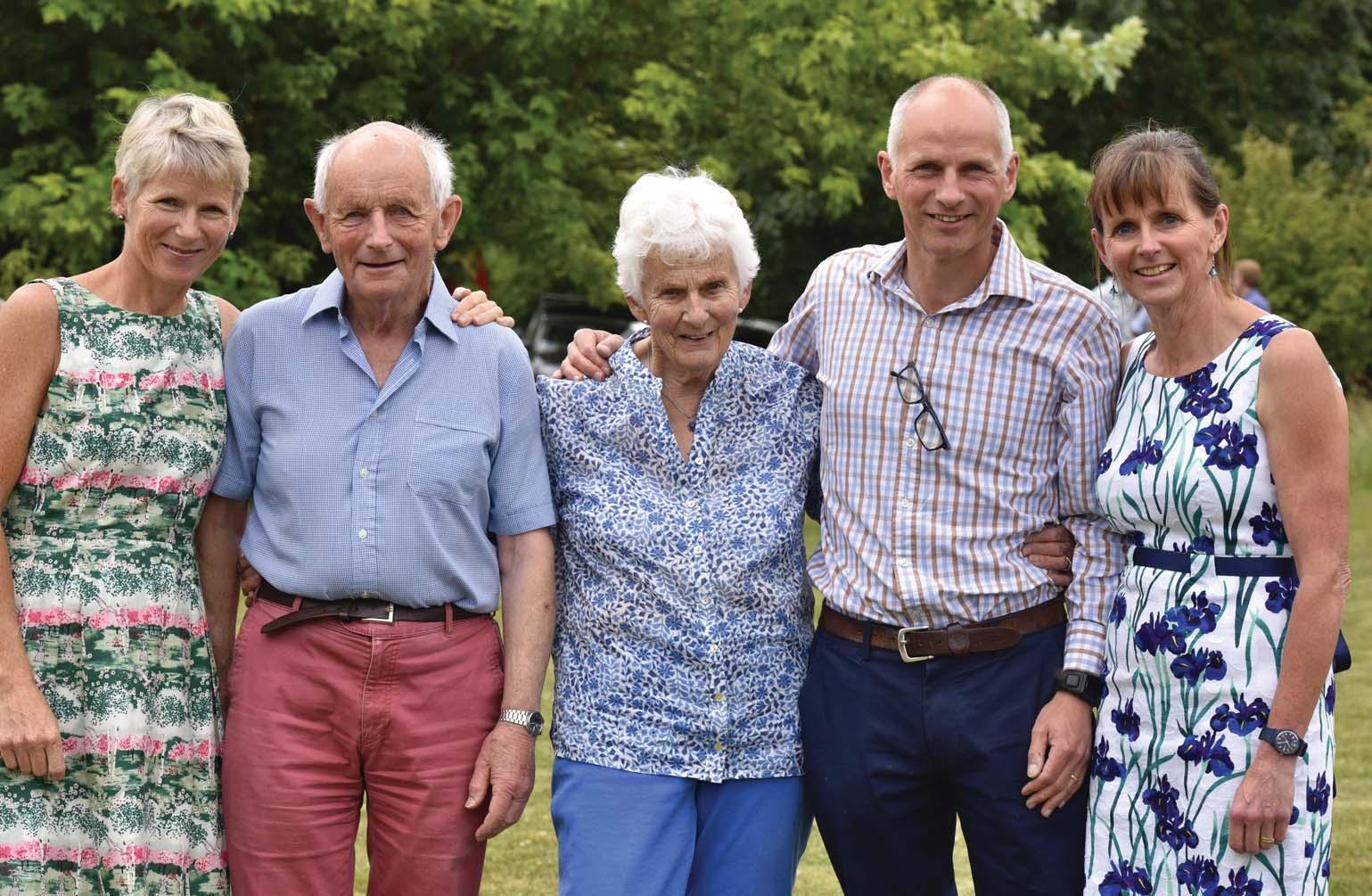
 Rob Withers
Jerry at the helm of Halcyon
With Bridget and children Joanna, David and Kate
Rob Withers
Jerry at the helm of Halcyon
With Bridget and children Joanna, David and Kate
Richard Victor ‘Rick’ Palm died on February 28, 2023 at his home in Hardyville, VA. He will be remembered for his spirit of adventure and his dedication to ‘giving back’ to those who shared his passions. These were many, but sailing across oceans and wood-working topped the list. He believed strongly in experiential learning and encouraging kids to learn with their hands. His epitaph was unknowingly created by his grandson Owen years ago at age three, when he earnestly confided to his father that, ‘Grandpa Rick’s a good guy’. Out of the mouth of babes!

Rick was born near Halifax, Nova Scotia in 1945 in what was then known as a ‘foundling home’. At six months he was adopted by Victor and Pansy Palm from Brooklyn, NY and lived there until 1967 when he enlisted in the Air Force. A highlight of his childhood was the family’s annual summer vacation in New London, CT where he learned to sail.
His sailing adventures spanned more than 50 years and took us around the world, across the Atlantic twice, to and from the Caribbean a dozen times, and up and down the coast of North America from Nova Scotia to the Keys. He relished nothing more than helping coastal sailors prepare for their first offshore passage and was honoured to receive a Lifetime Achievement Award from the Salty Dawg Sailing Association in 2022.
On land, Rick developed his skills as a woodturner and woodworker. He taught woodturning at The Woodturning School in Damariscotta, ME and served on the board of The Apprenticeshop, a boatbuilding school, in Rockland, ME. On his lathe he created works of art ranging from pepper mills and bowls to platters and Christmas tree ornaments. Each winter we built furniture, starting with craftsman designs for our home in Maine and evolving to more modern pieces for our home in Virginia. Isolation during the pandemic was no problem ... just an opportunity to build a Peapod rowing boat in the workshop. He attacked each new venture with gusto, dedicated to expanding the ‘bandwidth of his brain’, as he would often say.
Rick frequently said that he was ‘working to live’ rather than ‘living to work’, but that said, he enjoyed a long and successful career in sales and marketing management for several health care companies. In 1990-92 we took ‘mid-career sabbaticals’ to circumnavigate in our Tayana 52 Sojourner as part of Jimmy Cornell’s first Europa 92 rally, now the World ARC. We started in the Caribbean and passed through both the Panama and Suez Canals. Rick did all the commissioning on the boat himself, a monumental effort that ‘paid back’ when he needed to fix things. He discovered that managing a sailboat around the world was excellent training for running his own business, so when we returned he started a business in the Boston area assembling
computer cables. He earned his Private Pilot’s Licence and flew up and down the East Coast, servicing customers from Alabama to New England until he sold the company in 2002.
We sold Sojourner when we returned in 1992, but when we started cruising again bought Altair, a Saga 48, which we owned for a dozen years before moving on to Archer, an Outremer 51 catamaran. We were appointed Roving Rear Commodores in 2013, remaining in post until 2017 and with responsibility for the northern Caribbean. We were very active with the Caribbean 1500 and the Salty Dawgs at the time and promoted OCC memberships to those completing their qualifying passages during those events. After we quit doing long passages we added another hull and sailed Arrow, a Corsair 37 trimaran, on the Chesapeake Bay. In 2020 Rick had a hip replacement which made her trampolines a bit awkward so we bought a Back Cove 33 motorboat and cruised her from the Chesapeake to Maine for the last two summers.

Family played a dominant part of Rick’s life. His parents died early and he was an only child, but he quickly became part of my family, sailing with my father and raising my son Ted as his own. Nothing pleased him more than watching his two grandsons, Owen and Eli, mature into young adults. Rick tried valiantly to encourage Ted and Rebecca and their sons Owen and Eli to share his passion for sailing, though only Eli seems to have taken the bait.
Recently, when asked how he would like to be remembered, Rick was clear – he wanted to be remembered as a part of the intimate relationship he and I forged during our 40-year marriage. Whether as a duo sailing across oceans, as four hands working in concert on a furniture-building project or, in the end, as focused problem-solvers facing the challenges of his advancing cancer, we learned to complement each other’s very contrasting styles. “If there are two ways to do something, Julie will
Rick aboard Altair, our Saga 48, during the 2010 Caribbean 1500 passage to the BVI......and during the same passage the previous year do it one way and I’ll do it the other”, he would often say, adding, “and over time we learned that the giveand-take result was better than either of the ways we each started with”.
In the seven years since Rick was diagnosed with cancer he became a ‘poster boy’ for how to live with it as a chronic disease. Nothing stopped him from participating in family events, designing creative workshop projects or going places on the water. He learned from the many medical professionals who teamed up to add quality years to his life and was probably the most compliant patient they ever had. Hoping to advance treatments for future cancer patients, he participated in a clinical trial for a new immunotherapy drug after the FDA-approved options available to him had been exhausted. In the end, he made the decision to stop treatment and enter hospice care on his own timetable.
Julie PalmChip Wick passed away unexpectedly at his home in Northport, Maine on 4th October 2022. He is survived by his parents, Pip and Judy Wick, his two children, Megan and Hayden and his two sisters Shari and Jenny. He was one of the ‘good guys’, whom everybody liked and who leaves the world a better place.
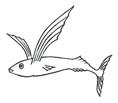
Chip was born on 2nd September 1970 into a sailing family in Greenwich, Connecticut – his mother recalls him having his first sail at six months. By the time he was four the family was cruising Long Island Sound, then north to Canada in Chip’s early years. At age six he crewed on his parents’ boat Flame in the Bermuda Family Cruise Race, repeating this two years later. The Wick family later made passages to the Caribbean, Bermuda and the Azores aboard their 48ft cutter Lucayo, with OCC membership spanning three generations. Pip, Chip’s dad, had joined in 1965 and his mother Judy in 1995. Chip and his son Hayden both qualified in 2013 with a 1860 mile passage from Belfast, Maine to the Azores aboard Lucayo. Chip was always an
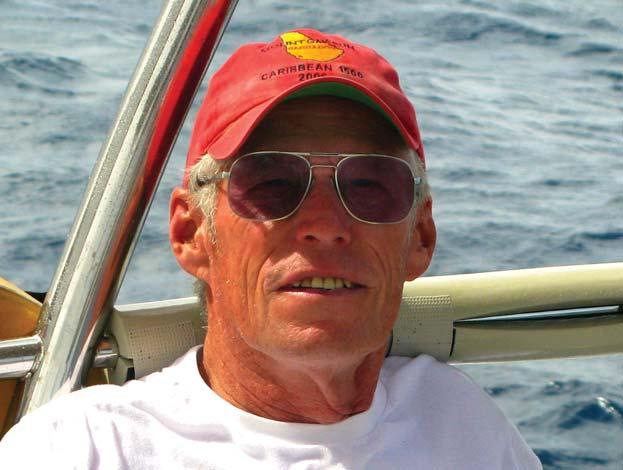
active member of the crew, keen to help with any task on the boat. If he wasn’t on the water he was in it exploring the underwater world. He had a passion for the sea and loved learning about nature.
Chip attended Bowdoin College in Maine and ultimately earned a Master of Science Degree from the University of Maine. He was knowledgeable in many areas of wildlife biology, worked as a freshwater biologist for the State of Maine and was a partner in

 Chip aged six sailing on the Bermuda Family Cruise Race with his parents aboard their yacht Flame
Chip in 2009, rowing a full payload of children Megan and Hayden plus the family dog...
Chip aged six sailing on the Bermuda Family Cruise Race with his parents aboard their yacht Flame
Chip in 2009, rowing a full payload of children Megan and Hayden plus the family dog...
... and with Megan and Hayden in June 2020
several local businesses in Northport. He read voraciously and his mind was like a steel trap when it came to retaining interesting facts. Chip was one of the smartest, wittiest, most interesting and well-read people you could hope to meet and was inevitably the cleverest person in the room. He was always the first person to crack a joke or make a pun and everyone enjoyed his company.
Chip loved his family, his animals and the great outdoors. He co-owned Sea Smoke, a Cat Boat 22, with his son Hayden and his saltwater reef tank was large, well-stocked and carefully maintained. His dream was to run a hobby farm on his own land and he was working towards this goal when he died.




Shucking oysters with, on his right, his parents Pip and Judy, and on his left, sisters Shari and Jenny

Keep the time, observe the hours of the universe. What are three score years and ten hurriedly and coarsely lived compared to moments of divine leisure in which your life is coincident with the life of the universe?
Henry David ThoreauWe appreciate our advertisers and encourage you to give consideration to their products or services. Please mention the OCC and Flying Fish when replying to advertisements. Note, however, that the printing of an advertisement in Flying Fish does not imply endorsement by the Club. Also that while our membership is global, some companies may only be licensed to operate in certain jurisdictions and/or offer limited products or
Advertising is sold on a two consecutive issues basis
Inside pages
Full page colour ...................£280 (for two issues)
Half page colour...................£170 (for two issues)
Cover pages
Inside covers colour ........................£525 (for two issues)
Outside back cover colour..............£840 (for two issues)
A 10% discount is available to OCC members

Copy should be supplied as a high res PDF, JPEG or EPS file, at a resolution of 300 dpi (118 dpcm) at finished size

Full page (portrait): bleed 210 x 143 mm; non-bleed 188 x 120mm
Half page (landscape): bleed 100 x 143 mm; non-bleed 90 x 120mm
Bleed adverts should allow 2mm all round in addition to the dimensions above
Advertisements are accepted for inclusion on a ‘first come, first served’ basis. Space may not permit all advertisements to be accepted, but please try!
Latest dates by which orders must be confirmed are:
14 October 2023 for Flying Fish 2023/2
14 March 2024 for Flying Fish 2024/1
though new artwork may be accepted after these dates
e-mail: advertising@oceancruisingclub.org
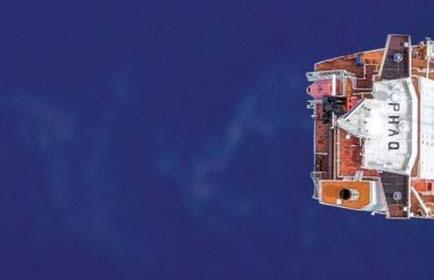
Sevenstar Yacht Transport offers seasonal sailings to the world’s premier cruising grounds. Whatever your destination, we tailor the best suitable transport solution for you.

OUR PROMISE TO YOU
SAFE

RELIABLE






PERSONAL
TRUSTWORTHY
Need any help with your planning? Visit our website or contact our local specialists for more information.






CRUISING DESK ASIA
Marieke Derks (Thailand) +66 862744238







CRUISING DESK CARIBBEAN
Douglas Rapier (Martinique) +596 696 458975
CRUISING DESK NEW ZEALAND
Alisha Hickling +64 93023753



CRUISING DESK AUSTRALIA
Lachlan Taylor +61 408992965
sevenstar-yacht-transport.com









